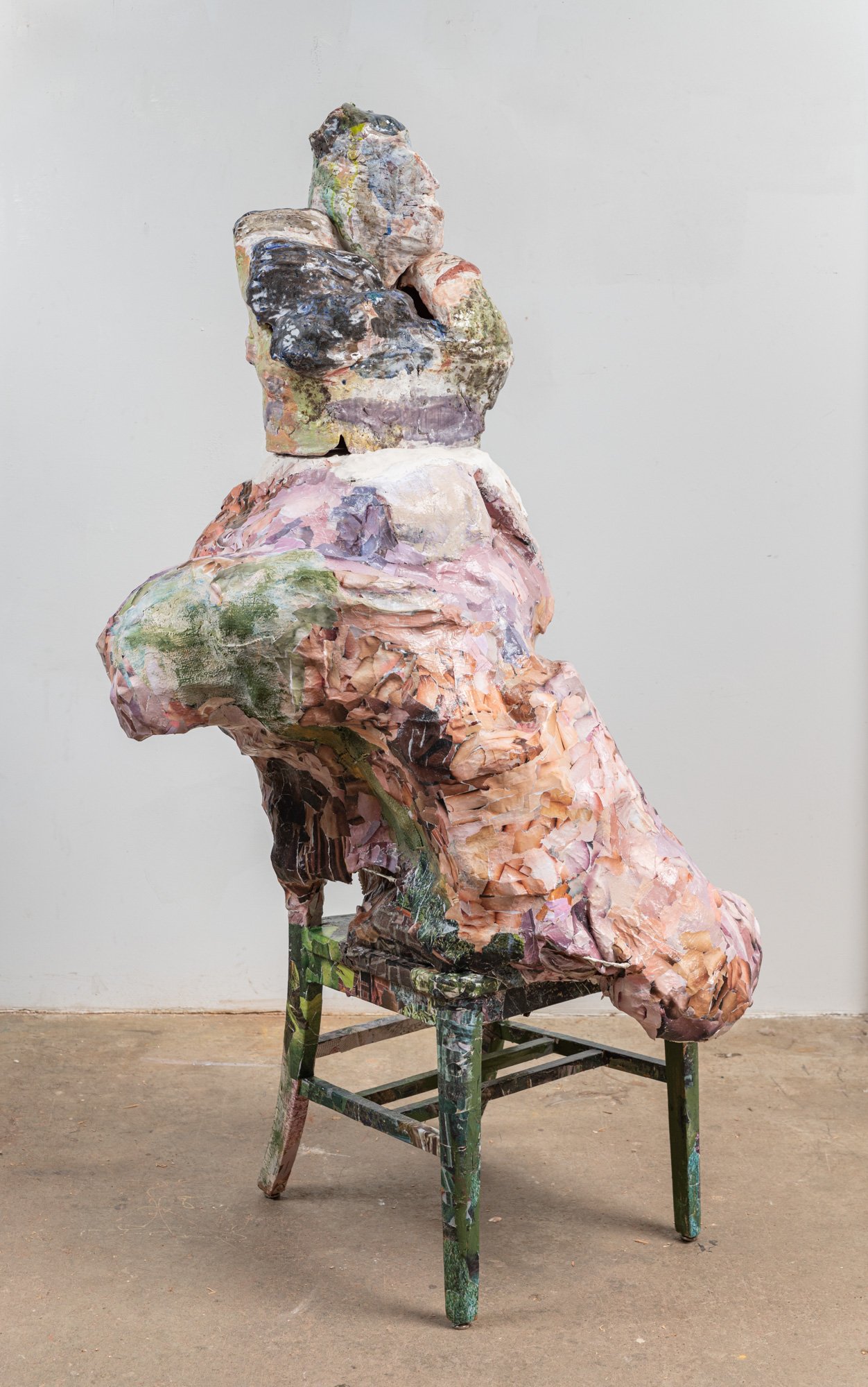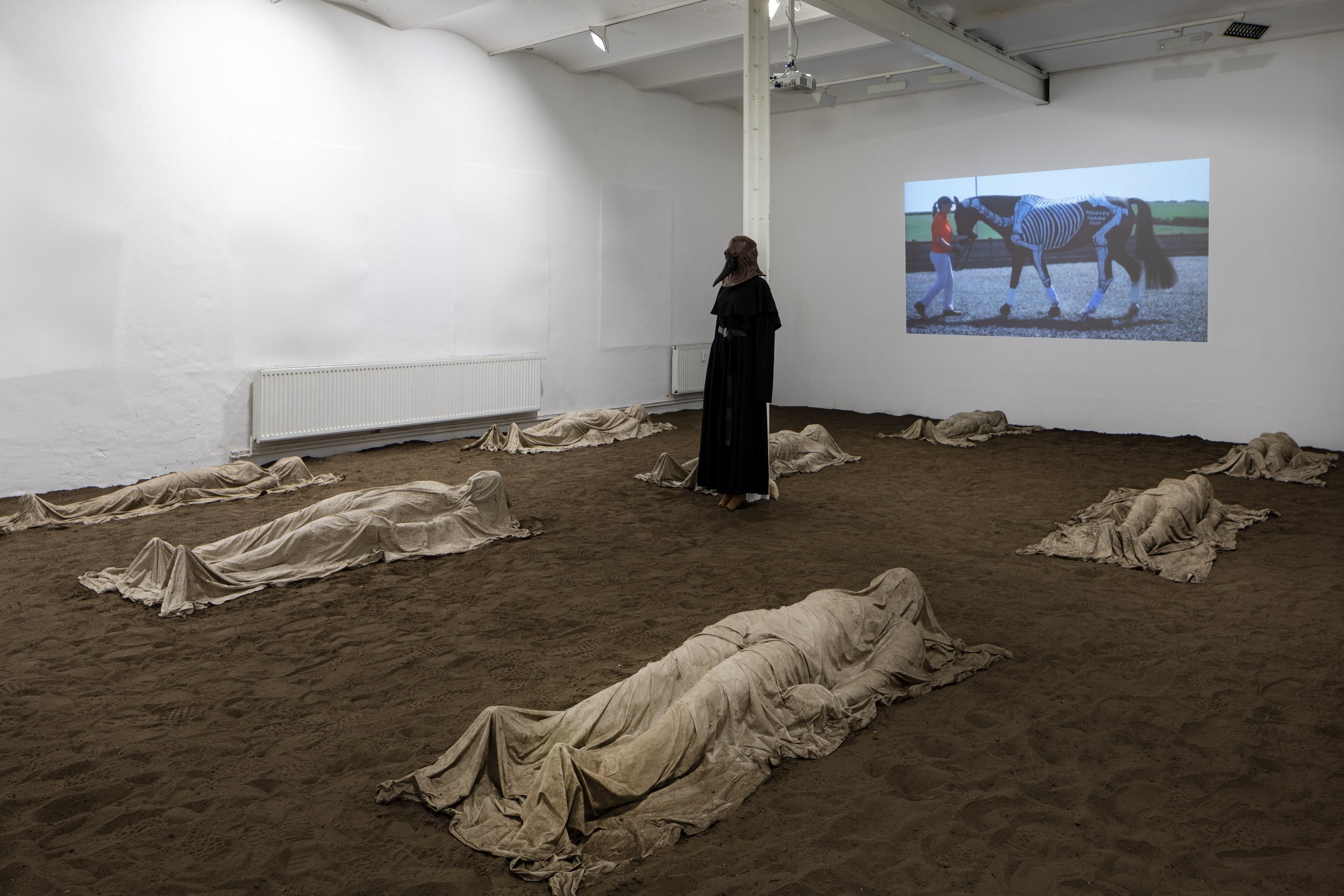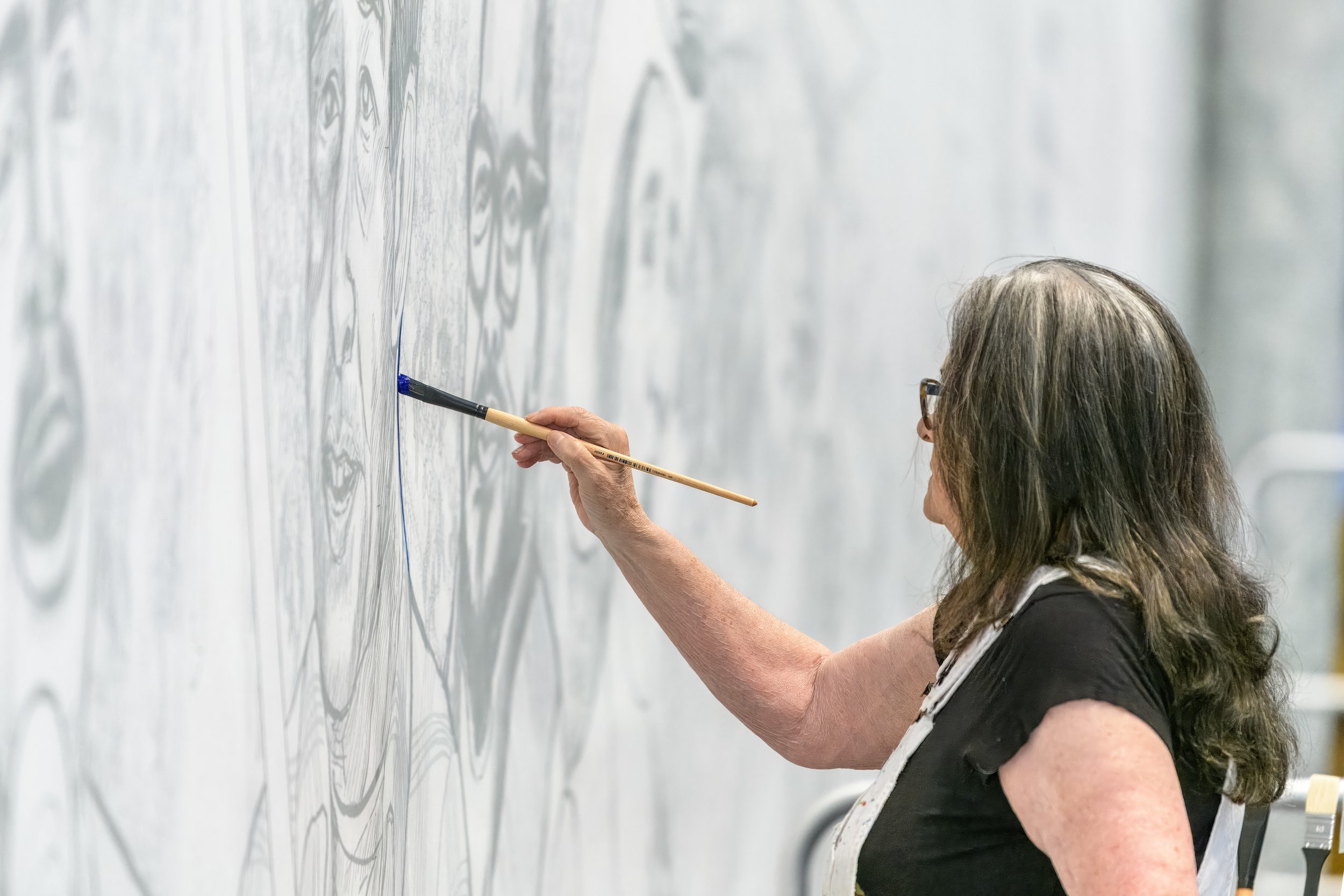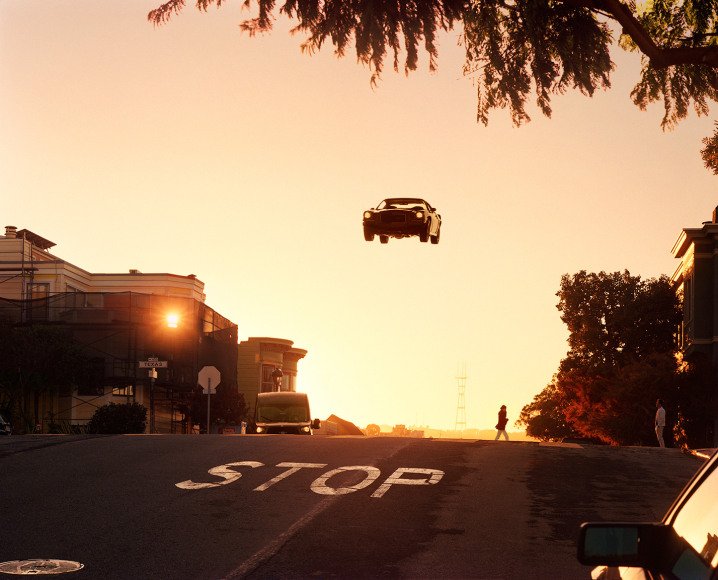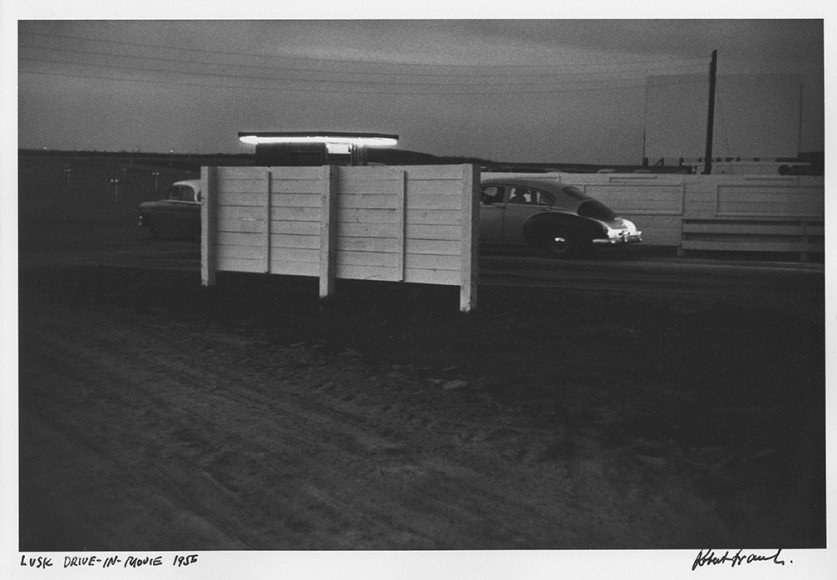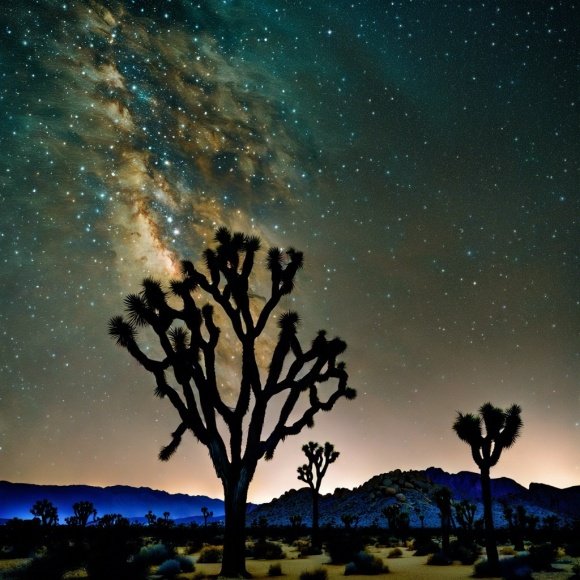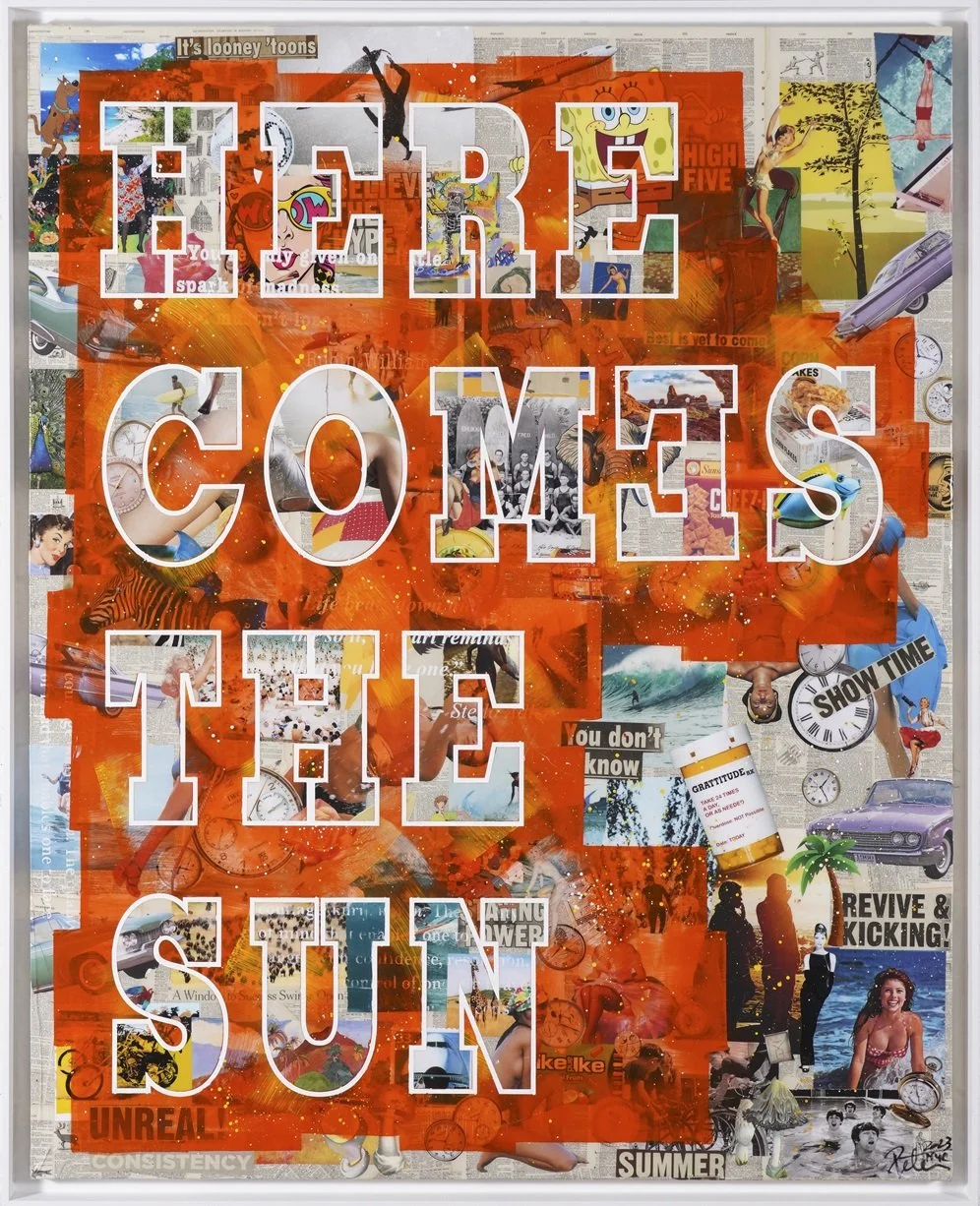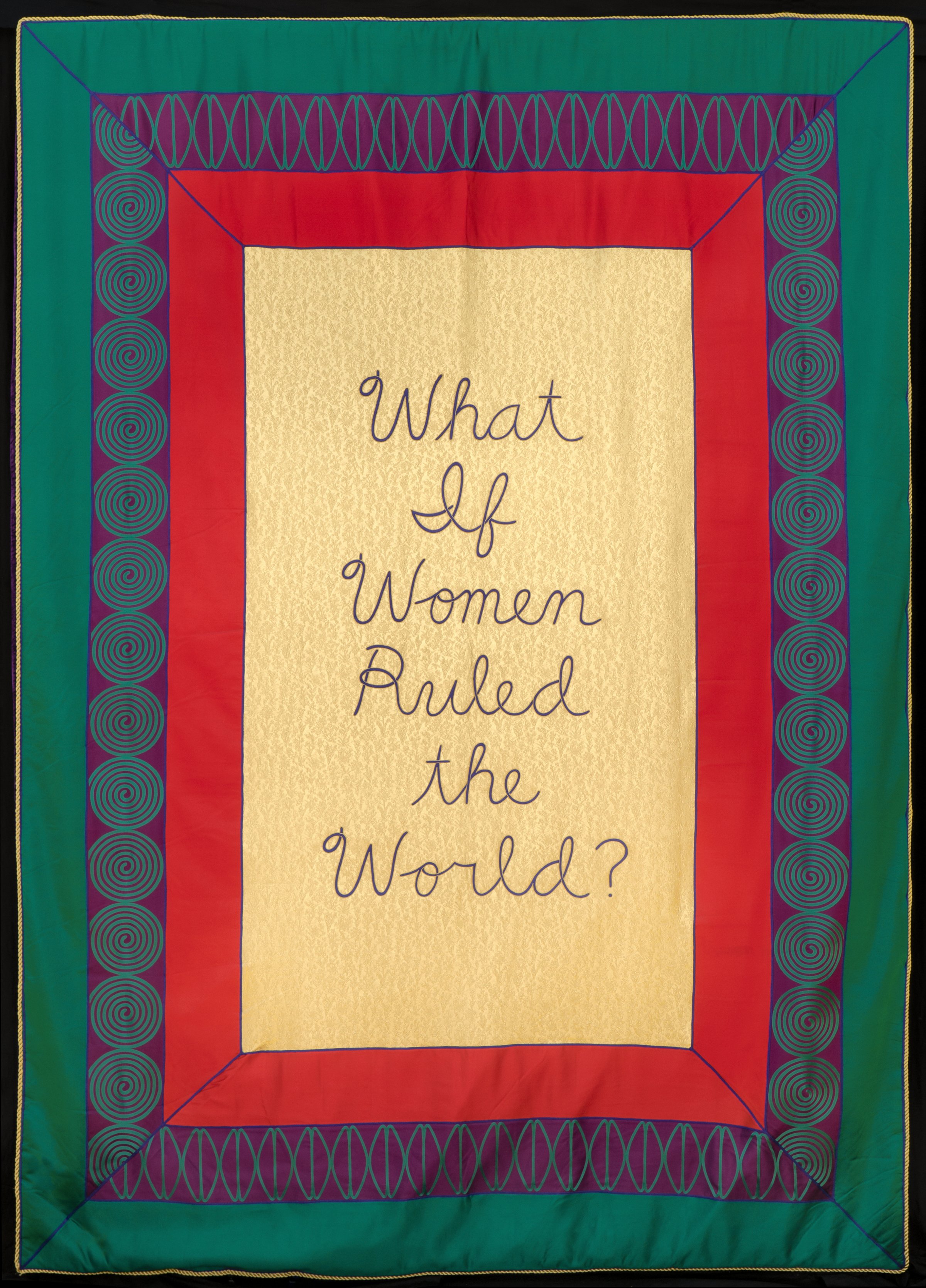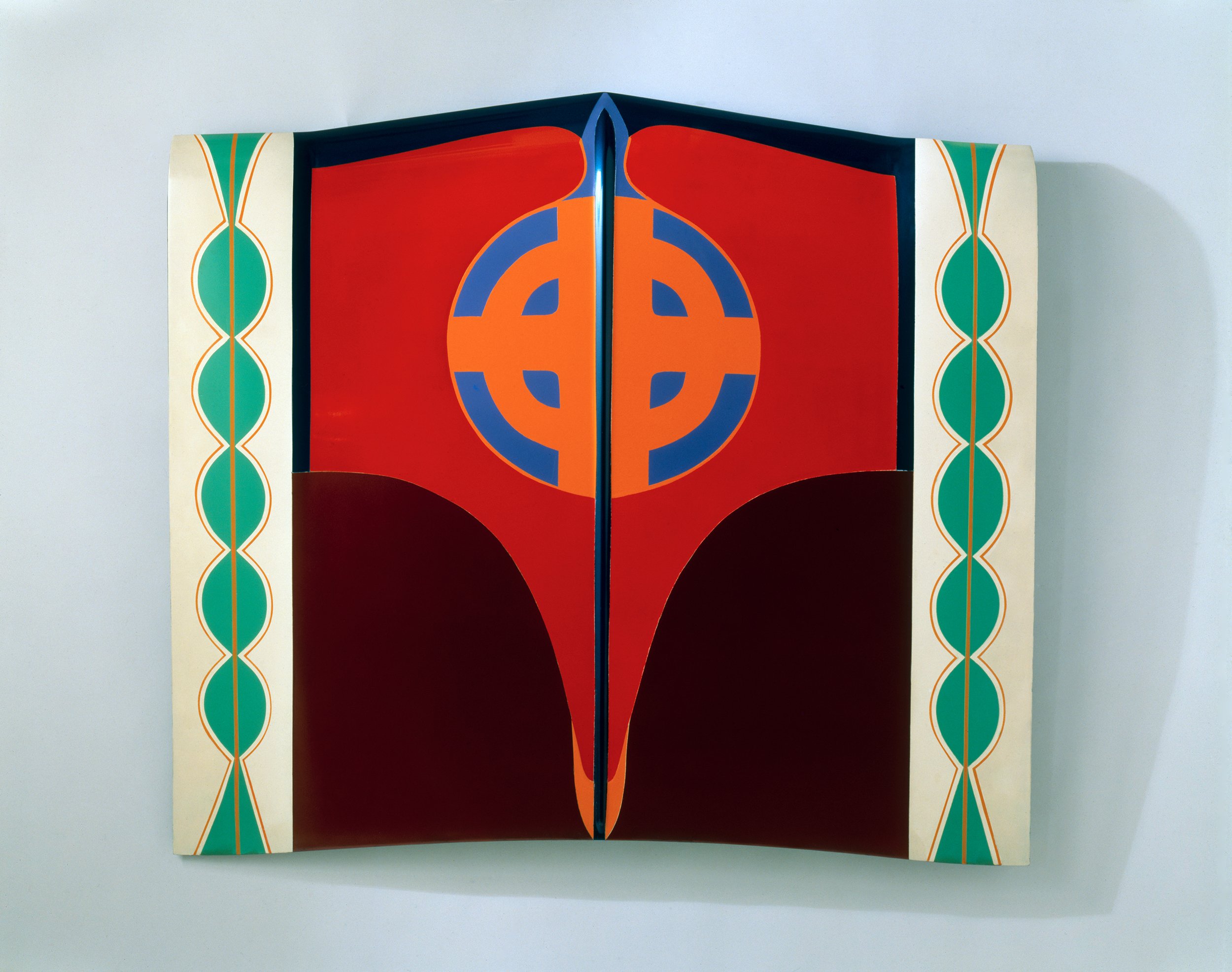Marcela Cantuária : The South American Dream
Marcela Cantuária: The South American Dream Installation View: Pérez Art Museum Miami, 2023. Photo: Oriol Tarridas.
(Miami, FL) — Pérez Art Museum Miami (PAMM) is pleased to present Marcela Cantuária: TheSouthAmericanDream, the artist’s first solo exhibition in the United States featuring all newly commissioned works. The South American Dream will be on view March 23, 2023 through Spring 2024.
The work of Marcela Cantuária (b. 1991, Rio de Janeiro; lives in Rio de Janeiro) often portrays female figures who navigate regional, international, and social boundaries. Highlighting symbols from tarot and astrology as well as themes that reflect political and environmental activism in Latin America, Cantuária weaves together narratives of social spheres, political associations, and ethereal wishes. Cantuária’s vivid and colorful works are evidence of her versatility and investigations through various mediums and techniques, including painting, textile, and ceramics.
Chico Mendes, 2023 Oil and ceramic on canvas 70 3/4 x 98 1/2 inches Courtesy the artist and A Gentil Carioca, Rio de Janeiro
Installation View: Pérez Art Museum Miami, 2023. Photo: Oriol Tarridas.
In her exhibition at PAMM, Cantuária invites the viewer to ponder the nature of the South American dream. Explored within the three main paintings, she accents the narratives of critical South American activists and environmentalists, such as Chico Mendes, Dorothy Stang, Maria do Espírito Santo da Silva, Túpac Amaru, and Juana Azurduy de Padilla—all of whom pursued their dreams through resistance and by fighting for their countries and land.
The South American Dream features three large-scale oil paintings, a vibrant textile map of South America, a wood piece resembling an altar, as well as various panels along the walls of the gallery framing the exhibition. Throughout the space, an arched vinyl wallpaper encloses the paintings while recessed lights illuminate the paintings, creating a halo for each. Overall, the exhibition extends a feeling of sanctitude, inviting the viewer to reflect upon corporeal narratives, ambitions, and the potential of achieving each through faith.
A temperança (The Temperance), 2022–23 Oil and ceramic on canvas 98 1/2 x 70 3/4 inches Courtesy the artist and A Gentil Carioca, Rio de Janeiro
Installation View: Pérez Art Museum Miami, 2023. Photo: Oriol Tarridas.
“Marcela Cantuária has transformed the double-height gallery into a magical space of remembrance, hope, and dream by combining activism with her interests in tarot through vibrant colors and strong symbolisms. I am excited to bring her voice to the US and share with a global audience not only her practice, but the many Latin American narratives that she captures within her work,” said PAMM Associate Curator Jennifer Inacio.
While Cantuária’s research underscores where struggles and injustices lie, her paintings point to the beauty of the fight that often persists in these stories; thus, the paintings become monuments for iconic South American figures who, despite dangers and devastating odds, fought for their visions. In The South American Dream, Cantuária elevates and revives these histories, ideals, and battles, sharing with viewers the richness of South American natural resources that so many struggle to protect.

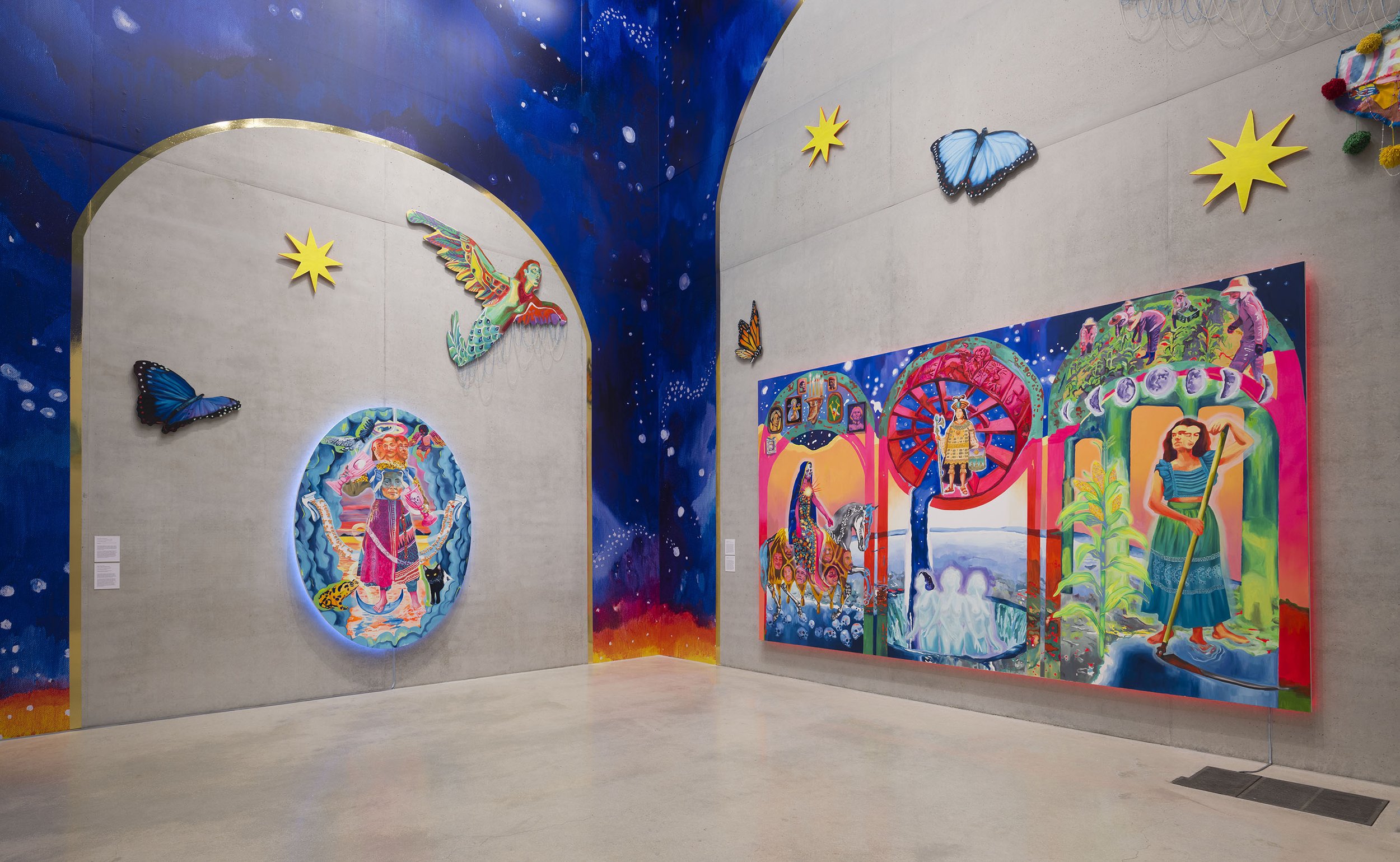
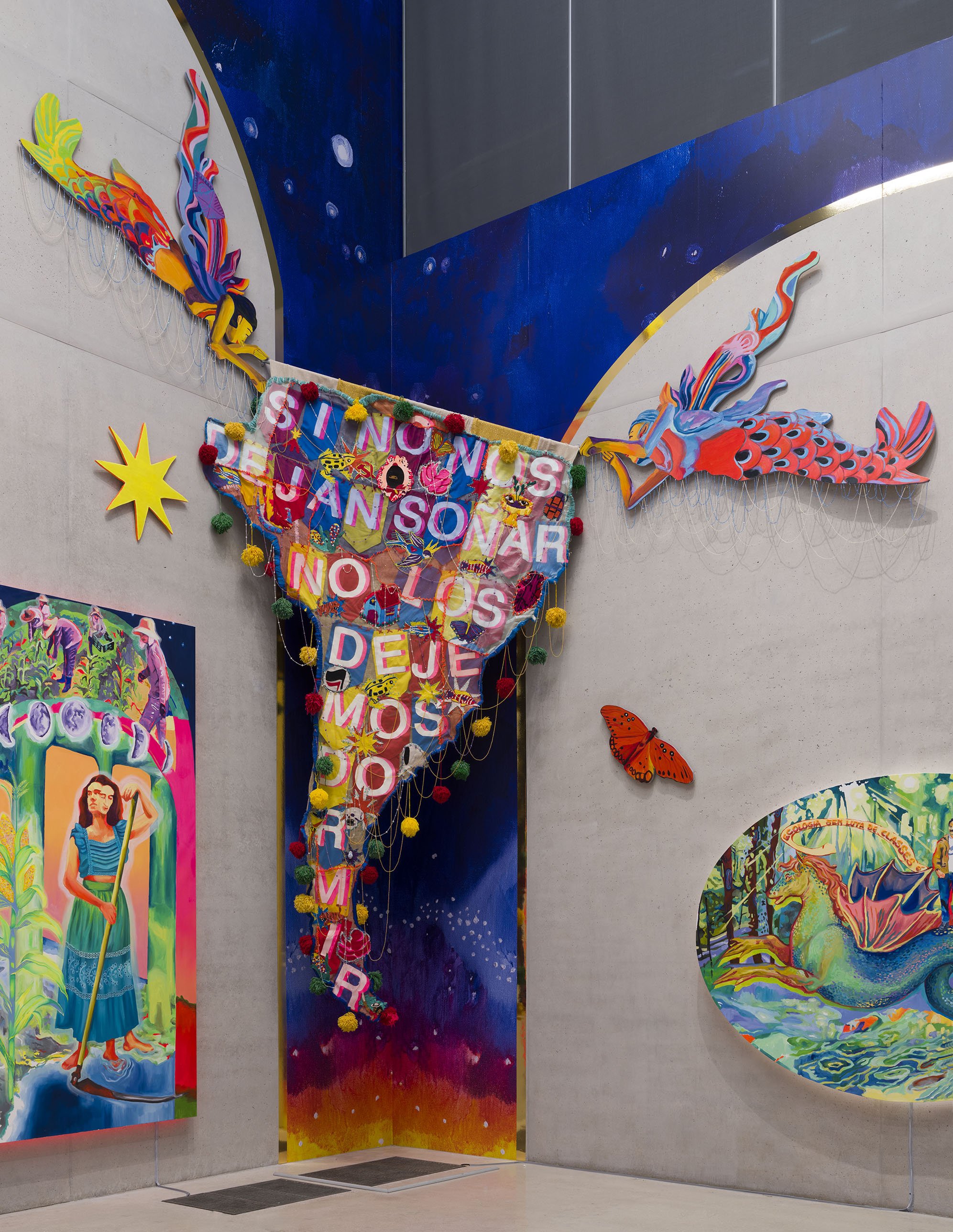
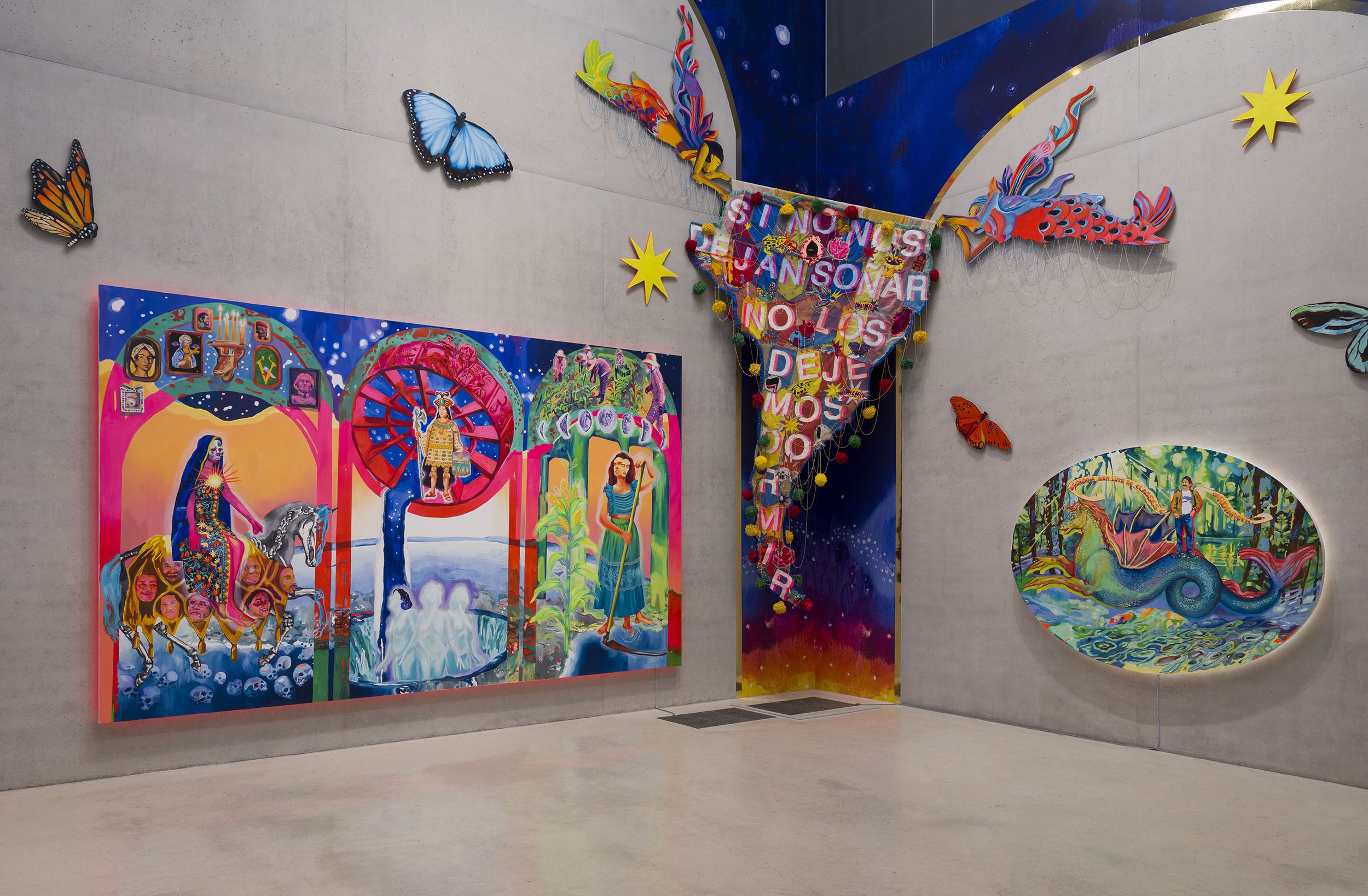
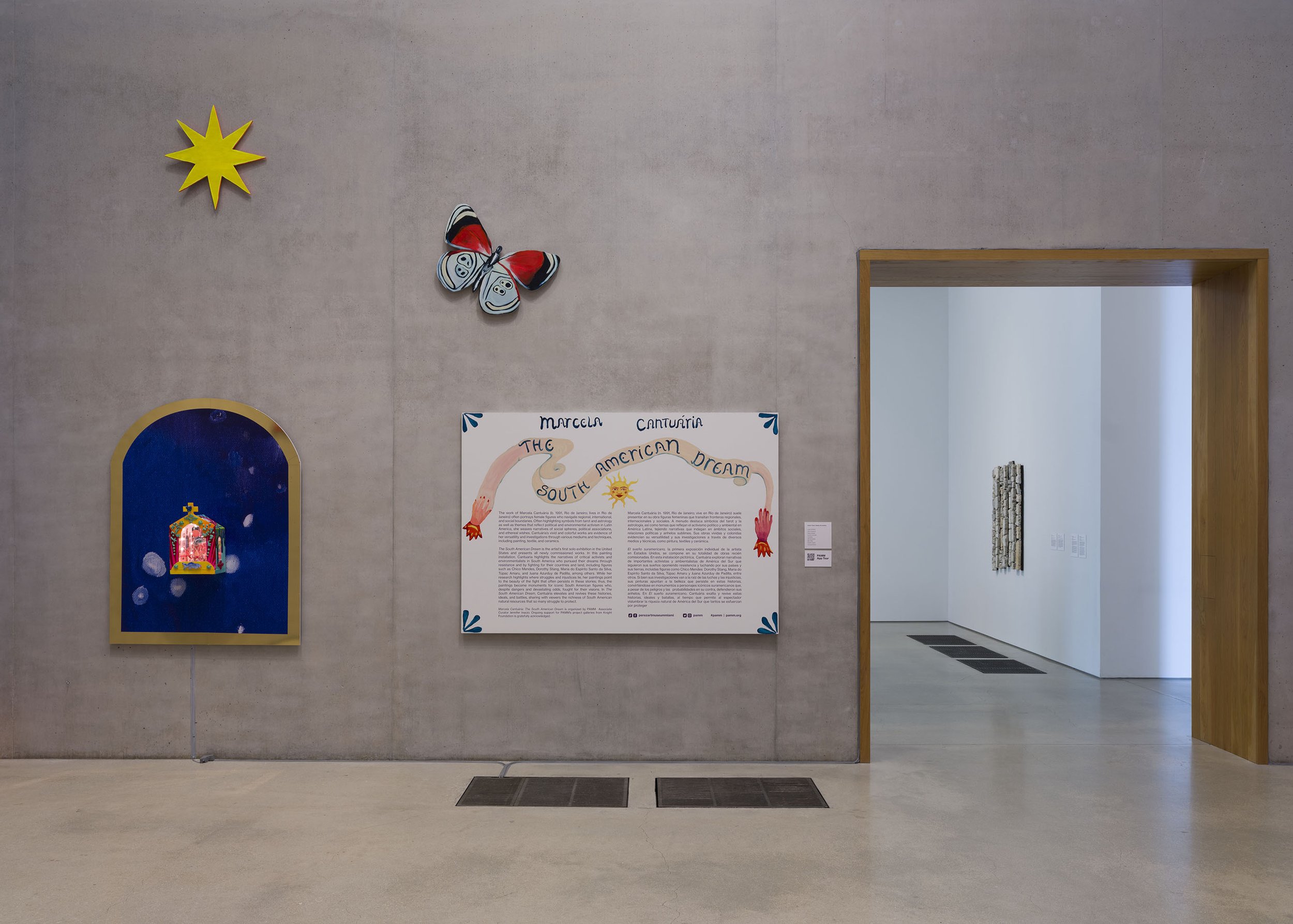
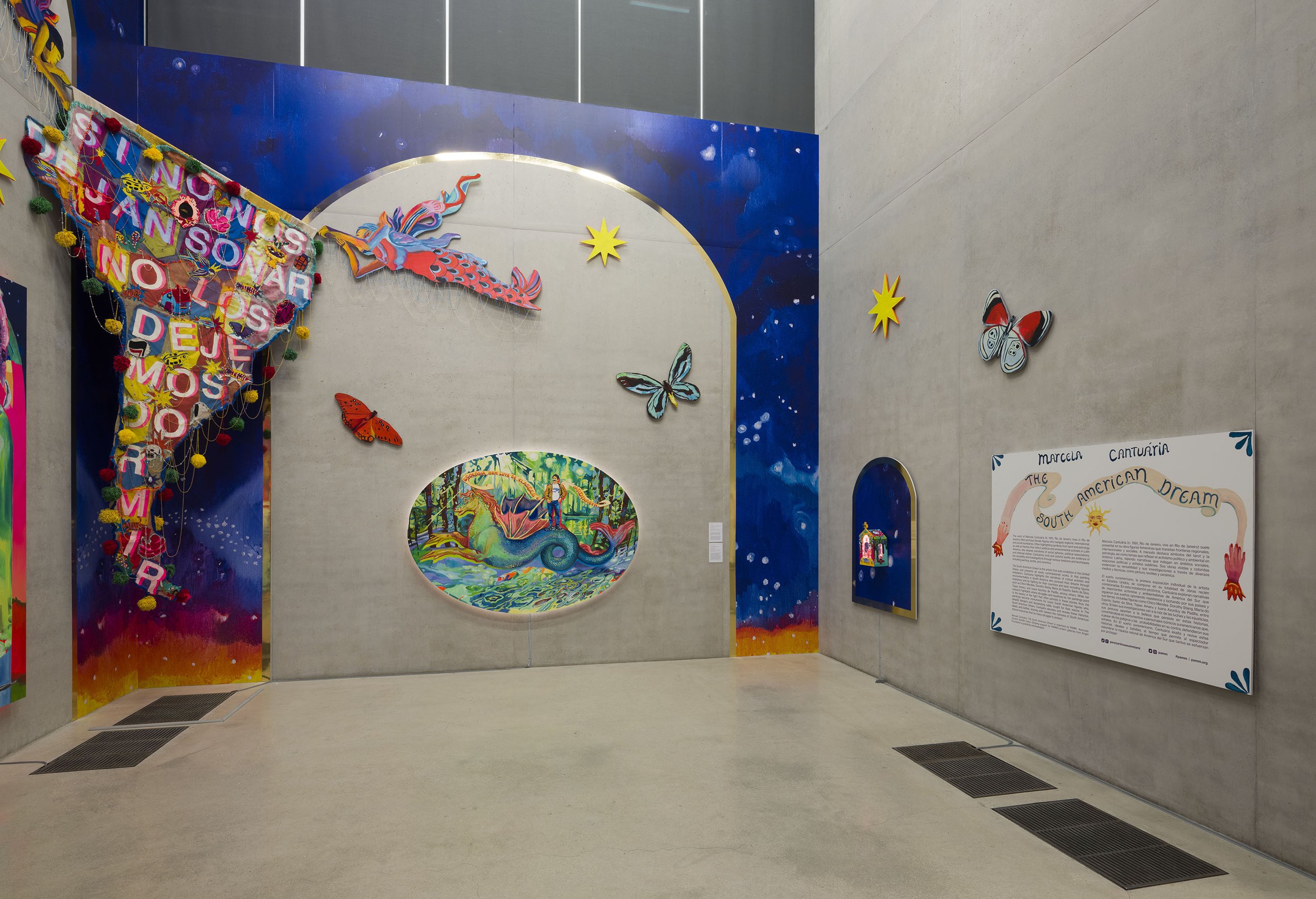
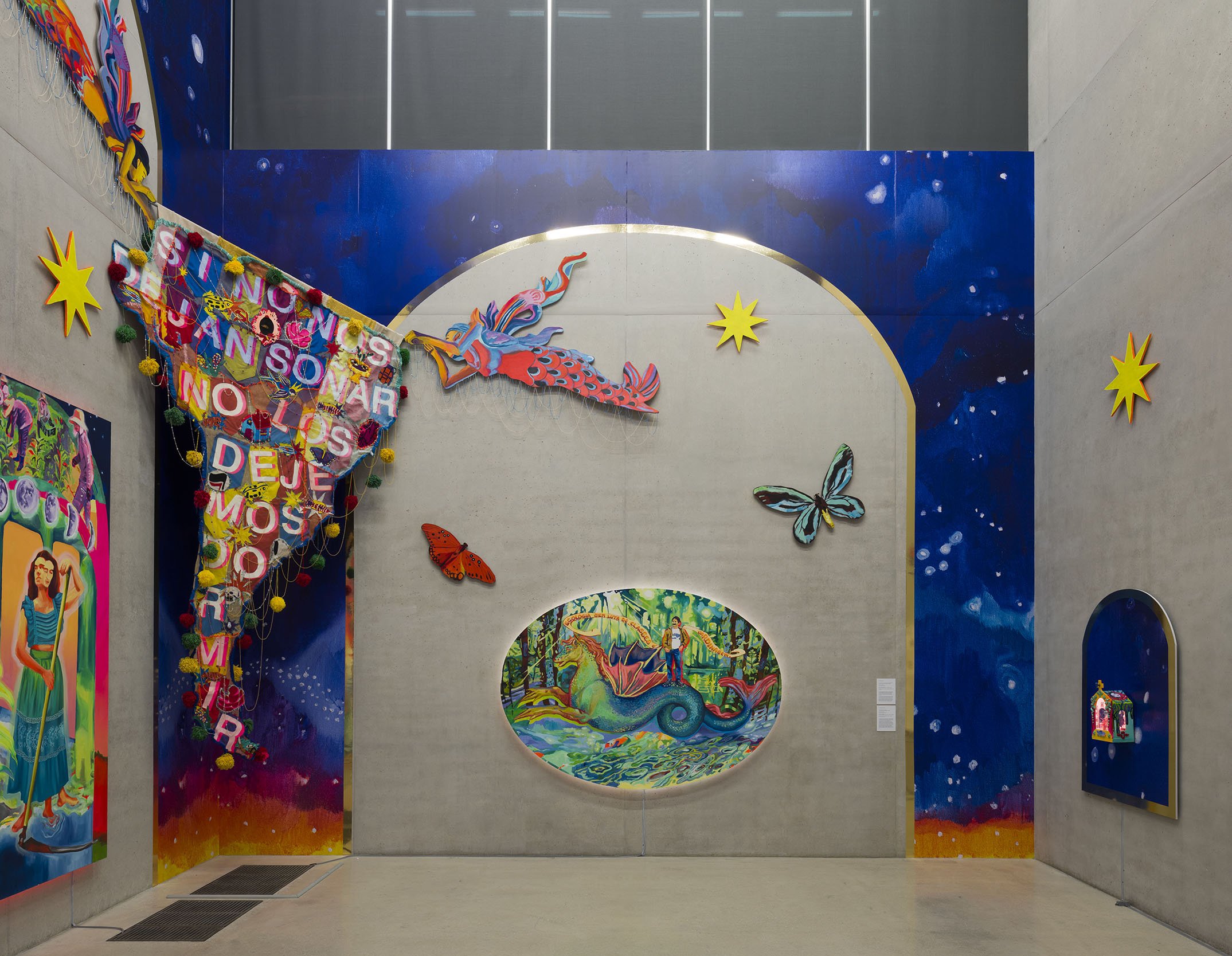

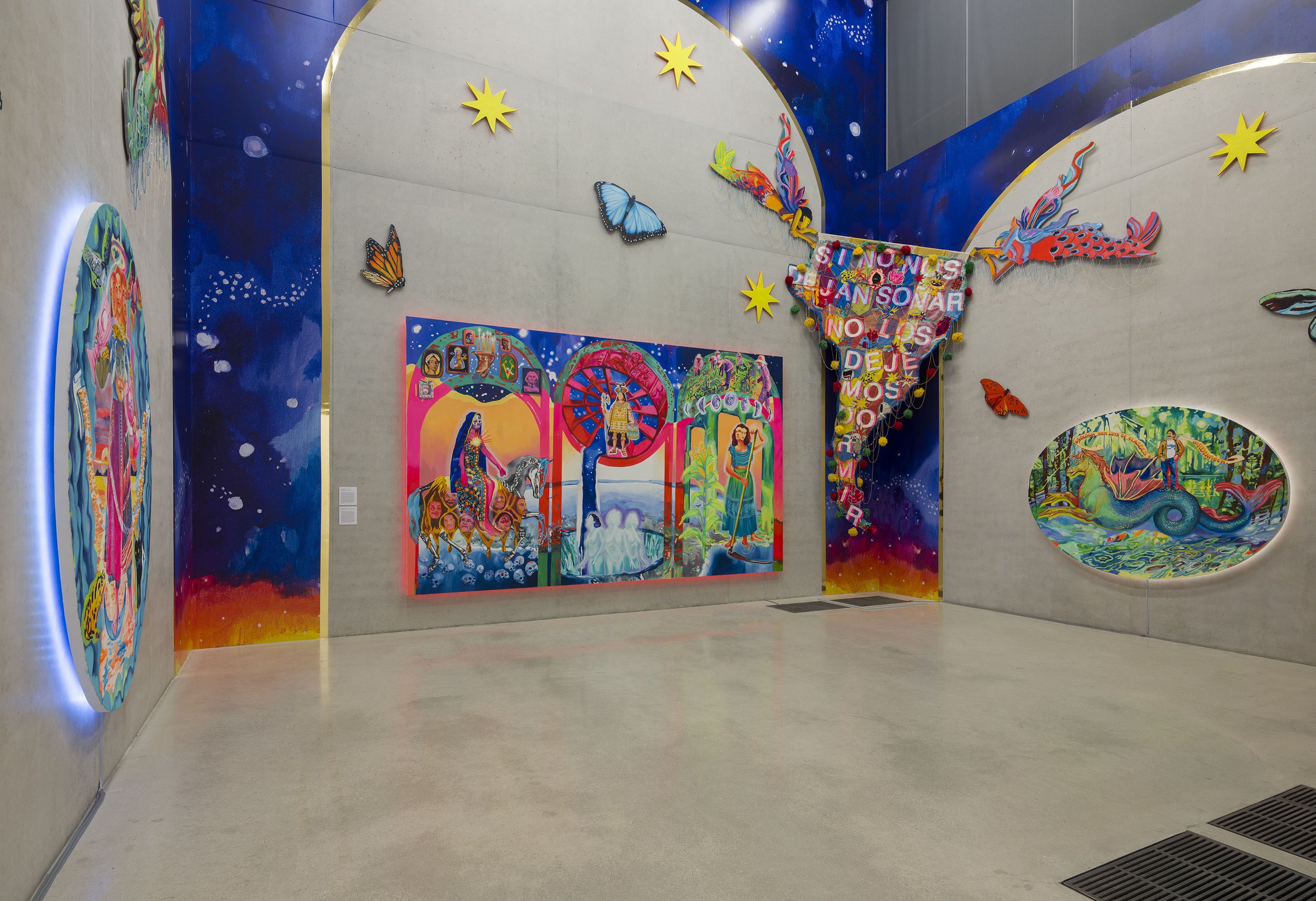
Marcela Cantuária: The South American Dream Installation View: Pérez Art Museum Miami, 2023. Photo: Oriol Tarridas.
This exhibition is a reflection of PAMM’s mission to showcase works that consider Miami’s diverse cultural landscape and unique position as the nexus between North and South America. In honoring its commitment to spotlight artists from the Caribbean, Latin America, and the African diaspora, PAMM offers a platform for genuine human interaction and exchange.
ABOUT PAMM
Pérez Art Museum Miami (PAMM), led by Director Franklin Sirmans, promotes artistic expression and the exchange of ideas, advancing public knowledge and appreciation of art, architecture, and design, and reflecting the diverse community of its pivotal geographic location at the crossroads of the Americas. The nearly 40-year-old South Florida institution, formerly known as Miami Art Museum (MAM), opened a new building, designed by world-renowned architects Herzog & de Meuron, on December 4, 2013 in Downtown Miami’s Maurice A. Ferré Park. The facility is a state-of-the-art model for sustainable museum design and progressive programming and features 200,000 square feet of indoor and outdoor program space with flexible galleries; shaded outdoor verandas; a waterfront restaurant and bar; a museum shop; and an education center with a library, media lab, and classroom spaces.
Accredited by the American Alliance of Museums, Pérez Art Museum Miami (PAMM) is Sponsored in part by the State of Florida, Department of State, Division of Arts and Culture and the Florida Council on Arts and Culture. Support is provided by the Miami-Dade County Department of Cultural Affairs and the Cultural Affairs Council, the Miami-Dade County Mayor and Board of County Commissioners. Additional support is provided by the City of Miami and the Miami OMNI Community Redevelopment Agency (OMNI CRA). Pérez Art Museum Miami is an accessible facility. All contents ©Pérez Art Museum Miami. All rights reserved.
For more information about this exhibit and other exhibits currently on view and upcoming, please visit the Pérez Art Museum website here. PAMM can also be found on Instagram, YouTube, TikTok, and Facebook.
Human / Nature: Encountering Ourselves in the Natural World
Installation View: Photography Credit: Leandro Justen. Courtesy of Fotografiska New York
New York– Fotografiska New York is pleased to announce the opening of Human / Nature: Encountering Ourselves in the Natural World, which opened on February 9, 2024, and will run through to May 25, 2024), a sprawling group exhibition bringing together more than a dozen photographers from around the world through over 40 works for an investigation into humanity’s fraught relationship with planet Earth.
Human / Nature will include photographs, immersive video installations, and sculptures that push audiences to reflect on how people and the world around them have had a profound impact on shaping one another. At once celebratory and contemplative, the exhibition includes works highlighting moments of symbiotic connection while never shying away from the often-fraught relationship humanity has developed with the climate.
Installation View: Photography Credit: Leandro Justen. Courtesy of Fotografiska New York
Included in the show are works by artists including David Ụzọchukwu and Lewis Miller that revel in the beauty of nature. Rush by Ụzọchukwu, for example, presents an image of a carefully posed body set within lush wild grass, alluding to the possibility of peaceful coexistence. Meanwhile, Miller’s “Flower Flash” installations joyfully depict floral arrangements in garbage
cans—a cheeky way of highlighting the powerful impact of nature in urban landscapes. Other works in the exhibition, however, focus on the pernicious and shocking realities of climate change. Works by Edward Burtynsky investigate industry’s impact on different environments. Burtynsky’s world-renowned aerial photographs abstract the ugly realities of mining, oil, and other damaging industries with beautiful and vibrant photographs of color fields. Ori Gerscht’s work shows the violent destruction of natural beauty via the literal explosion of bouquets.
Other artists ring out a hopeful note, with works by Yan Wang Preston and Indigenous artist Pat Kane among others, offering glimpses into how humankind can move forward despite the challenges wrought by climate change. Preston’s works depict lush greenery carefully inhabiting structured, urban settings, while Pat Kane’s photographs document the Łutsël K'é Dene First Nation’s stewardship of their land in Northern Canada.
Installation View: Photography Credit: Leandro Justen. Courtesy of Fotografiska New York
Human / Nature will include “In Harmony With Mother Earth” by climate justice activist Xiye Bastida, a moving and revelatory text punctuated with personal anecdotes and urging humankind’s reconnection and rebalancing of our relationship with nature. The text also illuminates the knowledge of Indigenous Peoples as a resource for repair and implores a recognition of collective responsibility to preserve our environment.
“This exhibition illustrates the beautiful yet sometimes difficult relationship between human life and the rest of the living world,” said Sophie Wright, Executive Director of Fotografiska New York. “It touches not only on what we can do to make the world more inhabitable, but also invites guests to reflect on their own experiences and to consider their roles in our rapidly changing environment while presenting a bold new way forward.”
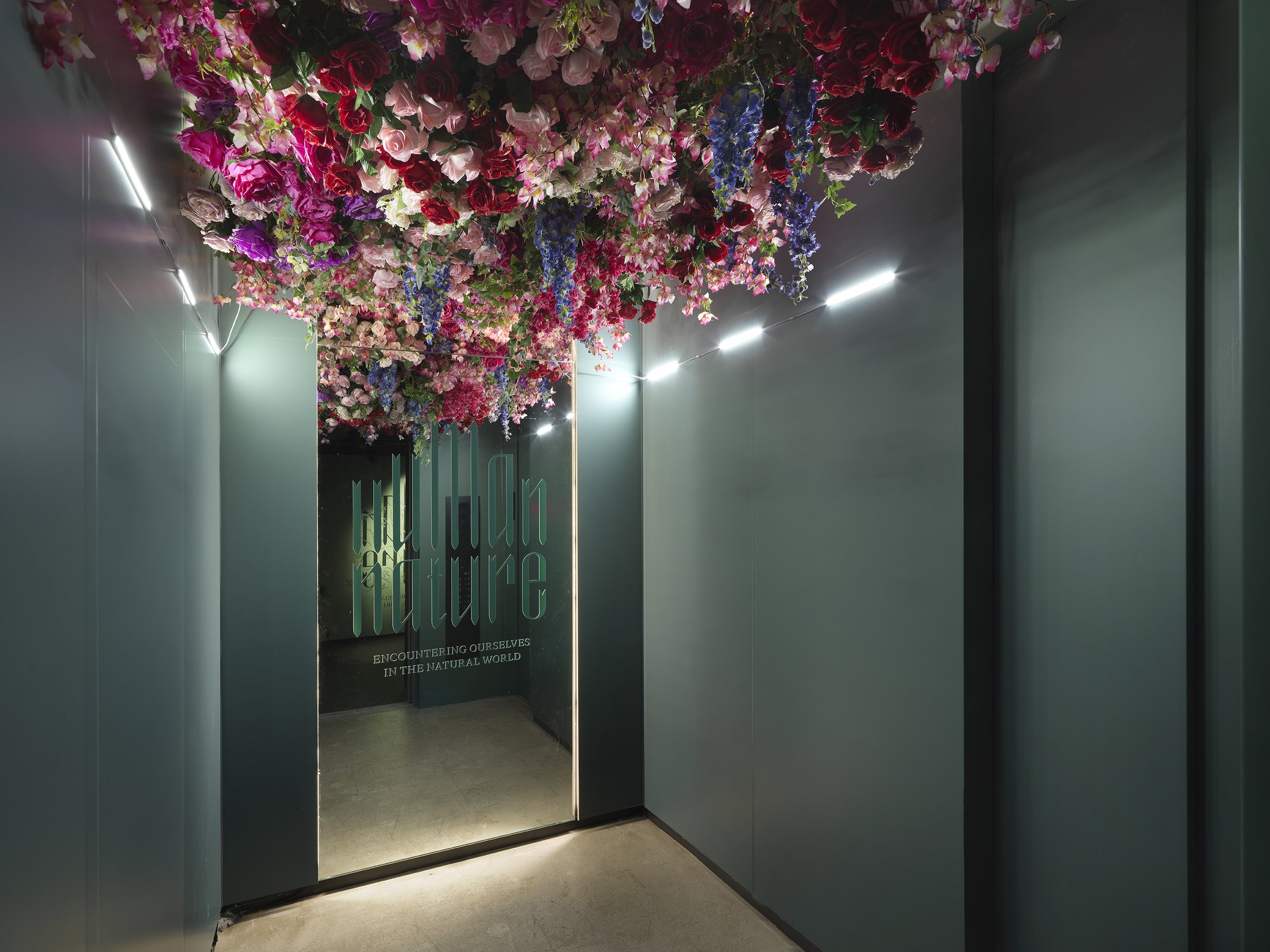
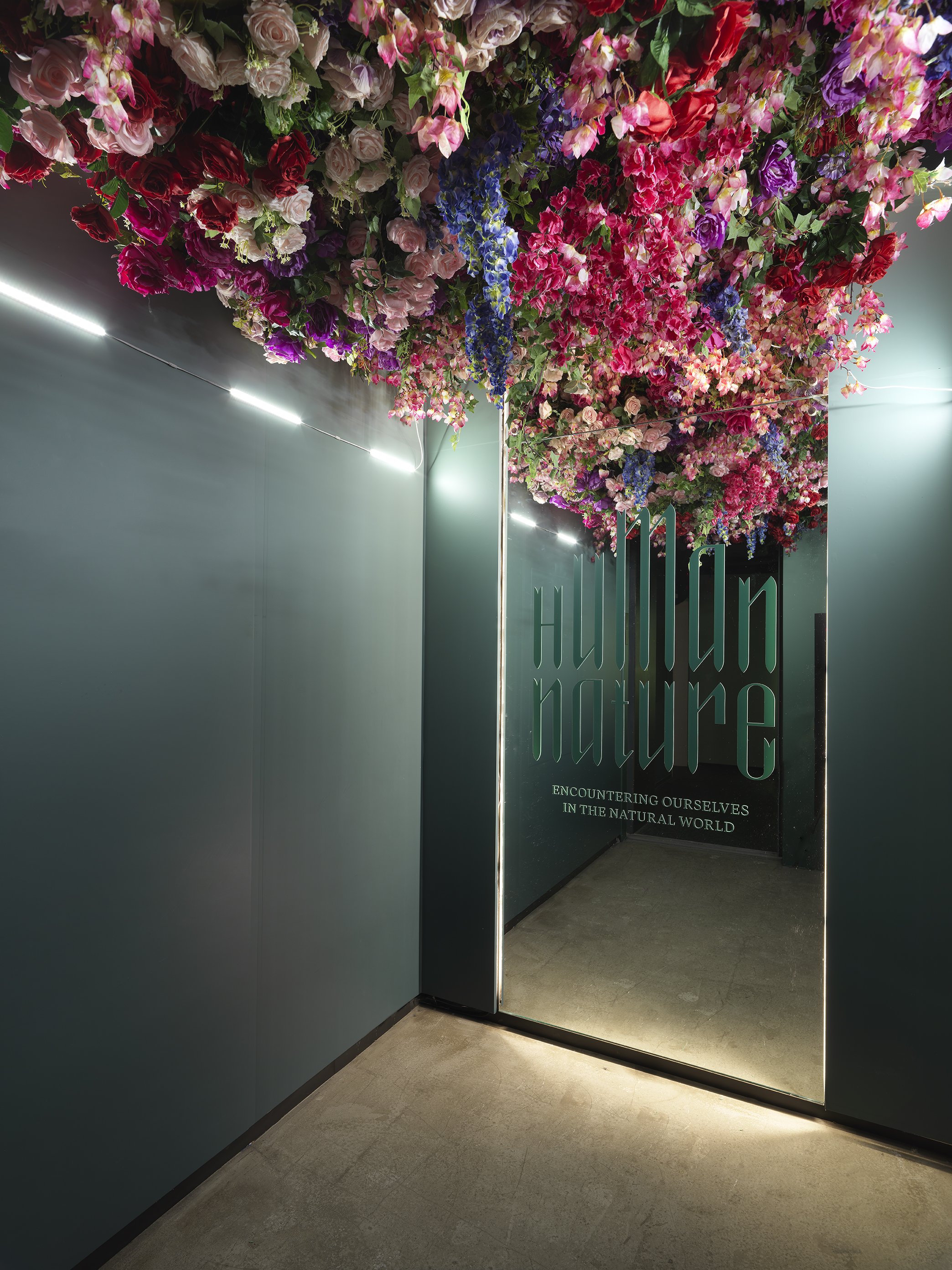

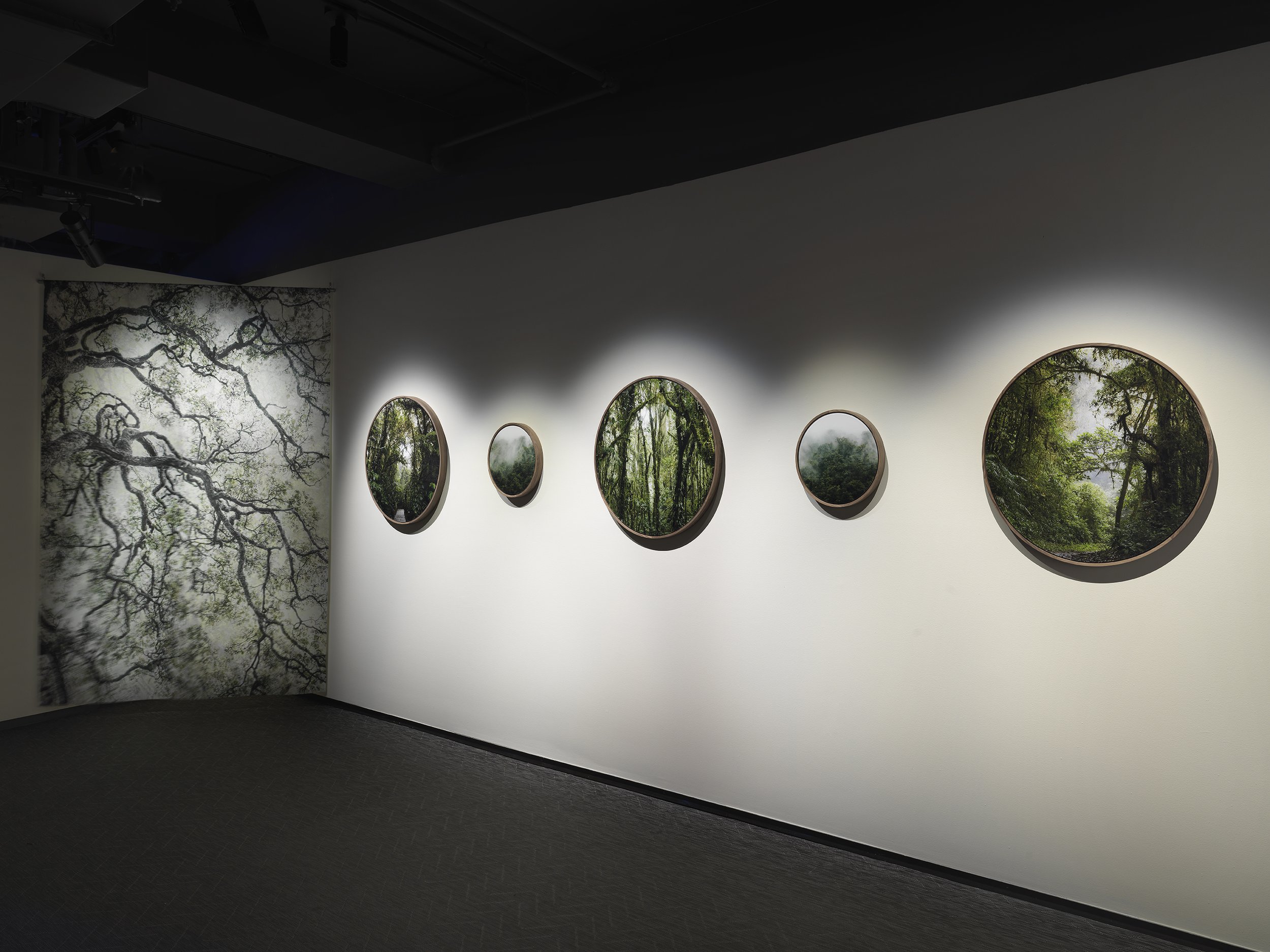
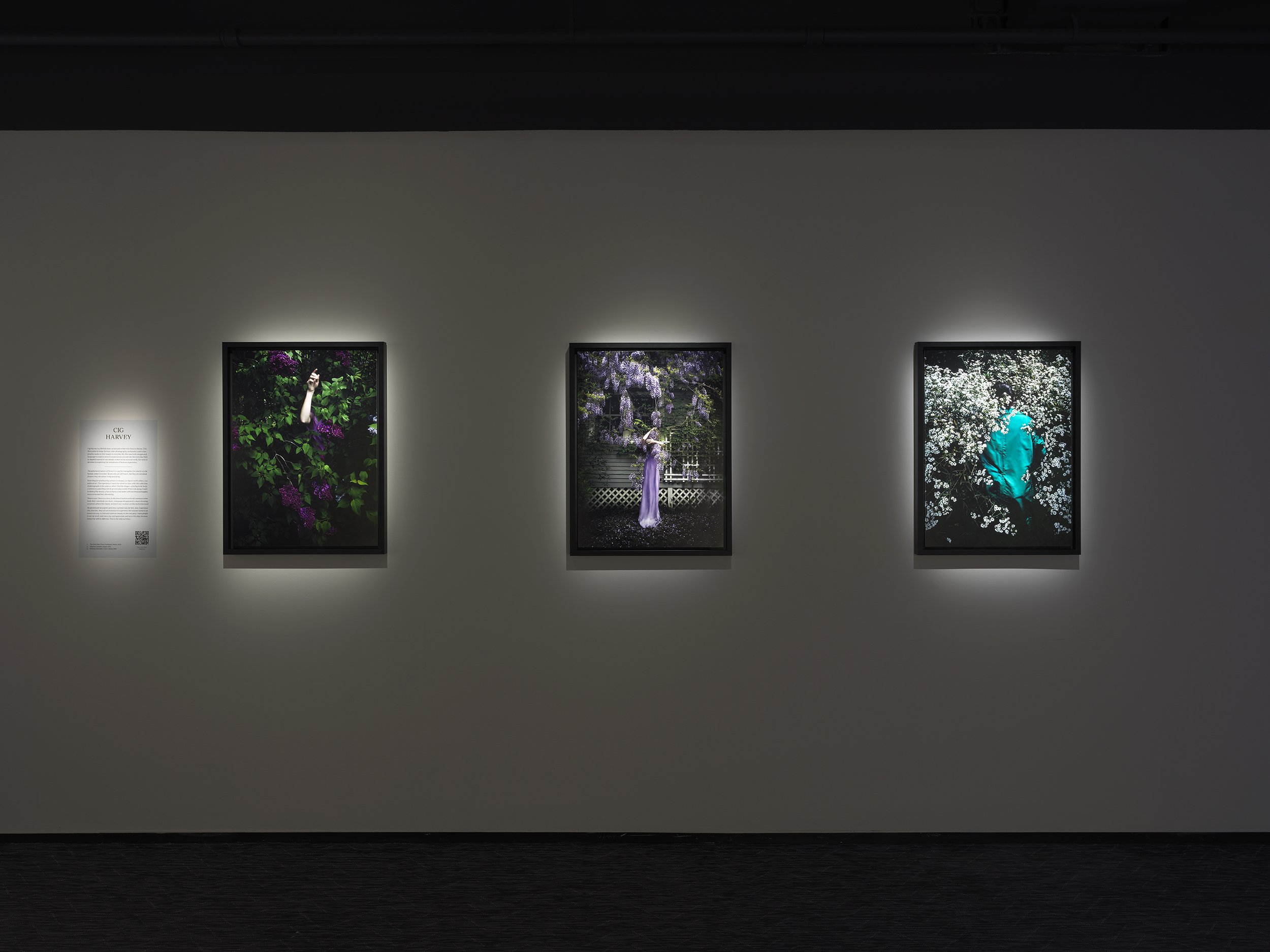

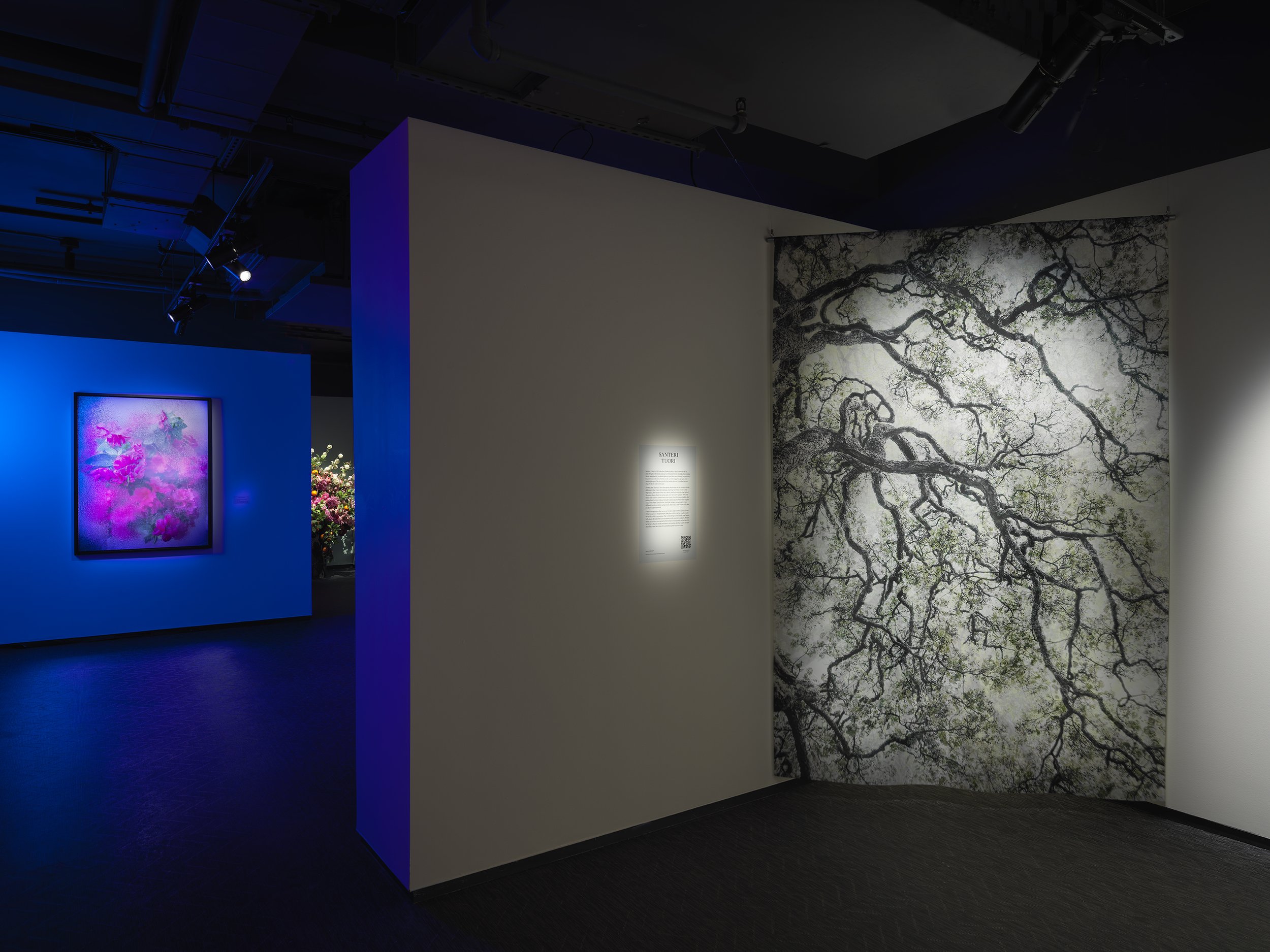
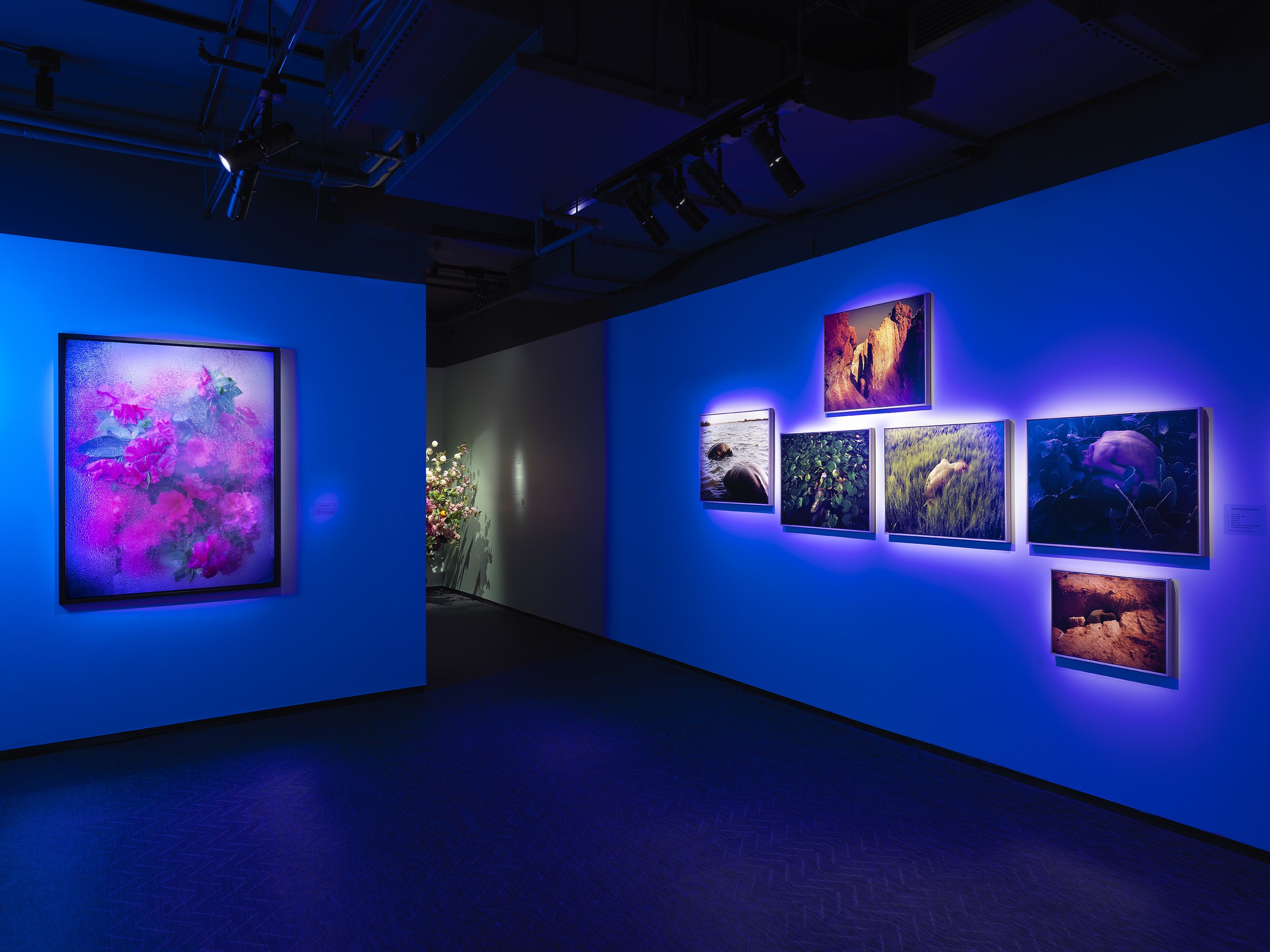

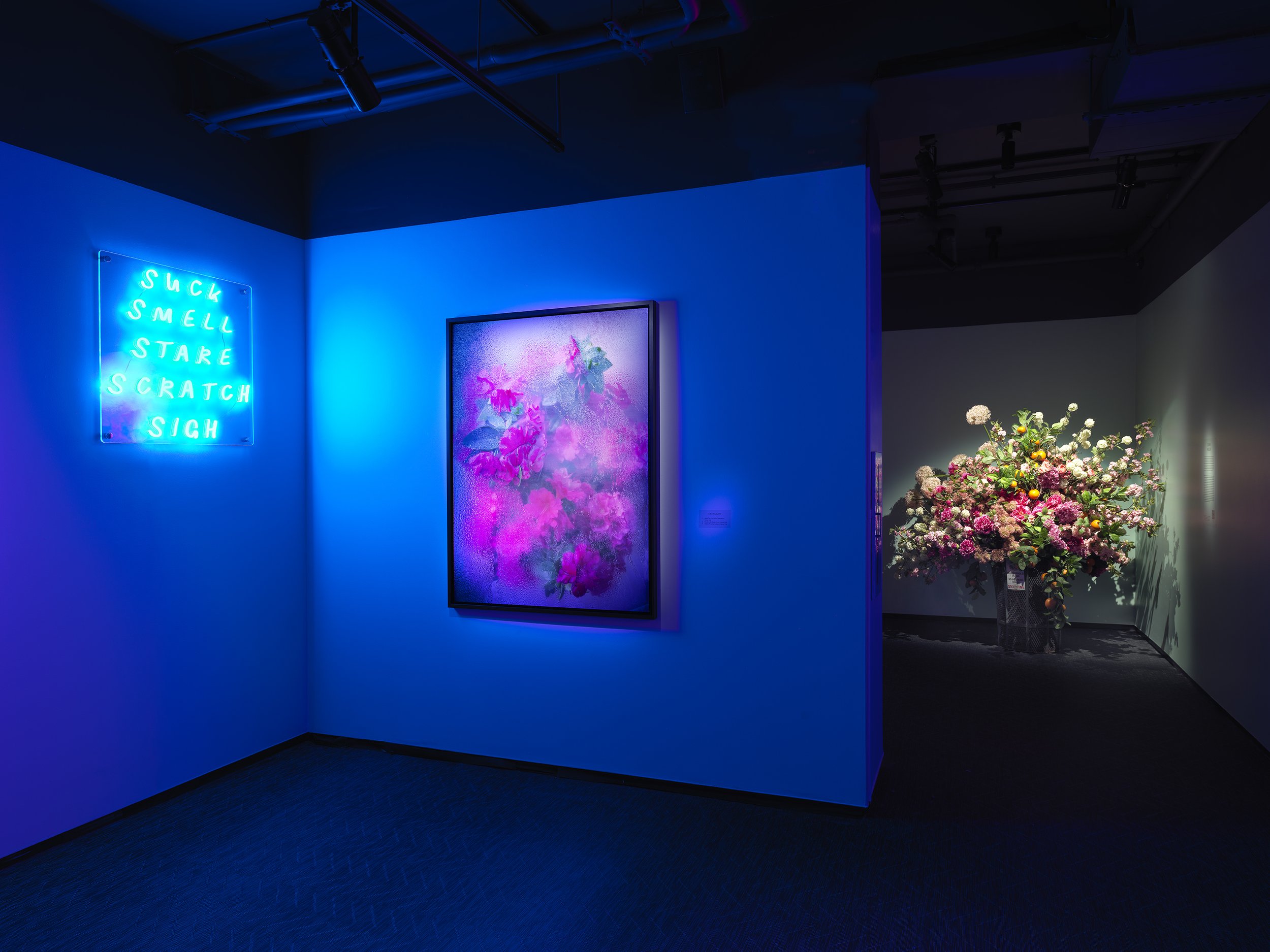
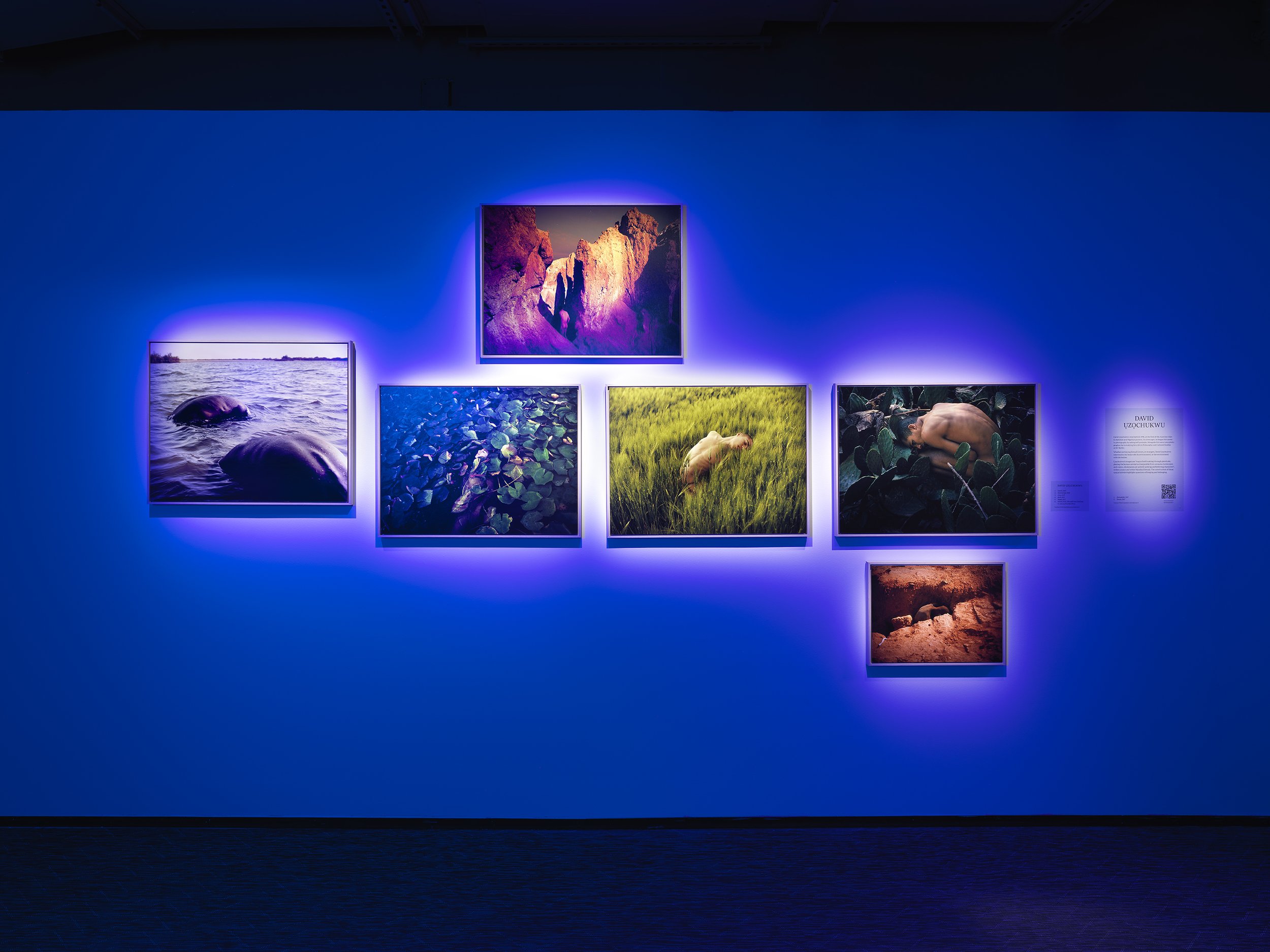

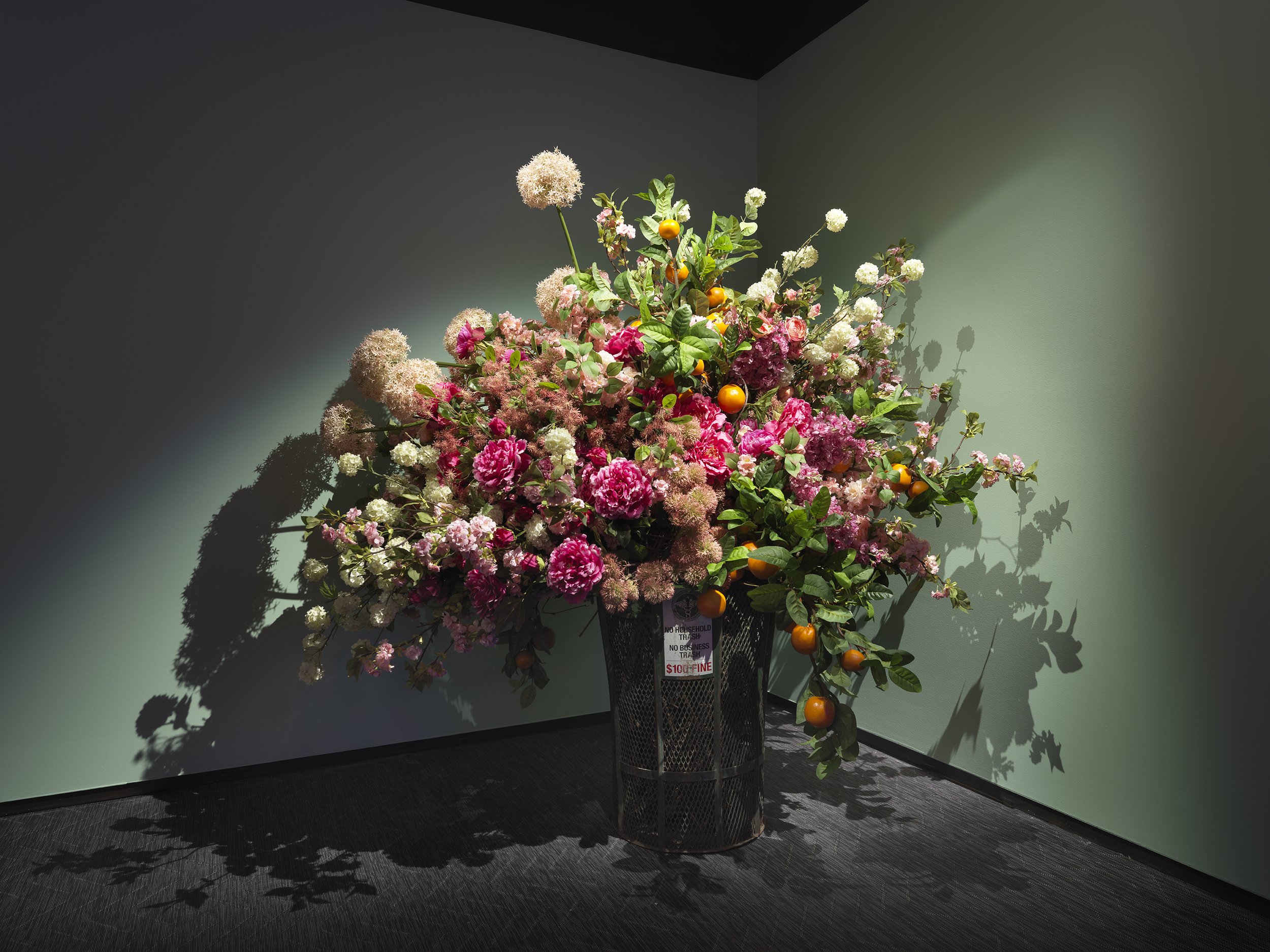
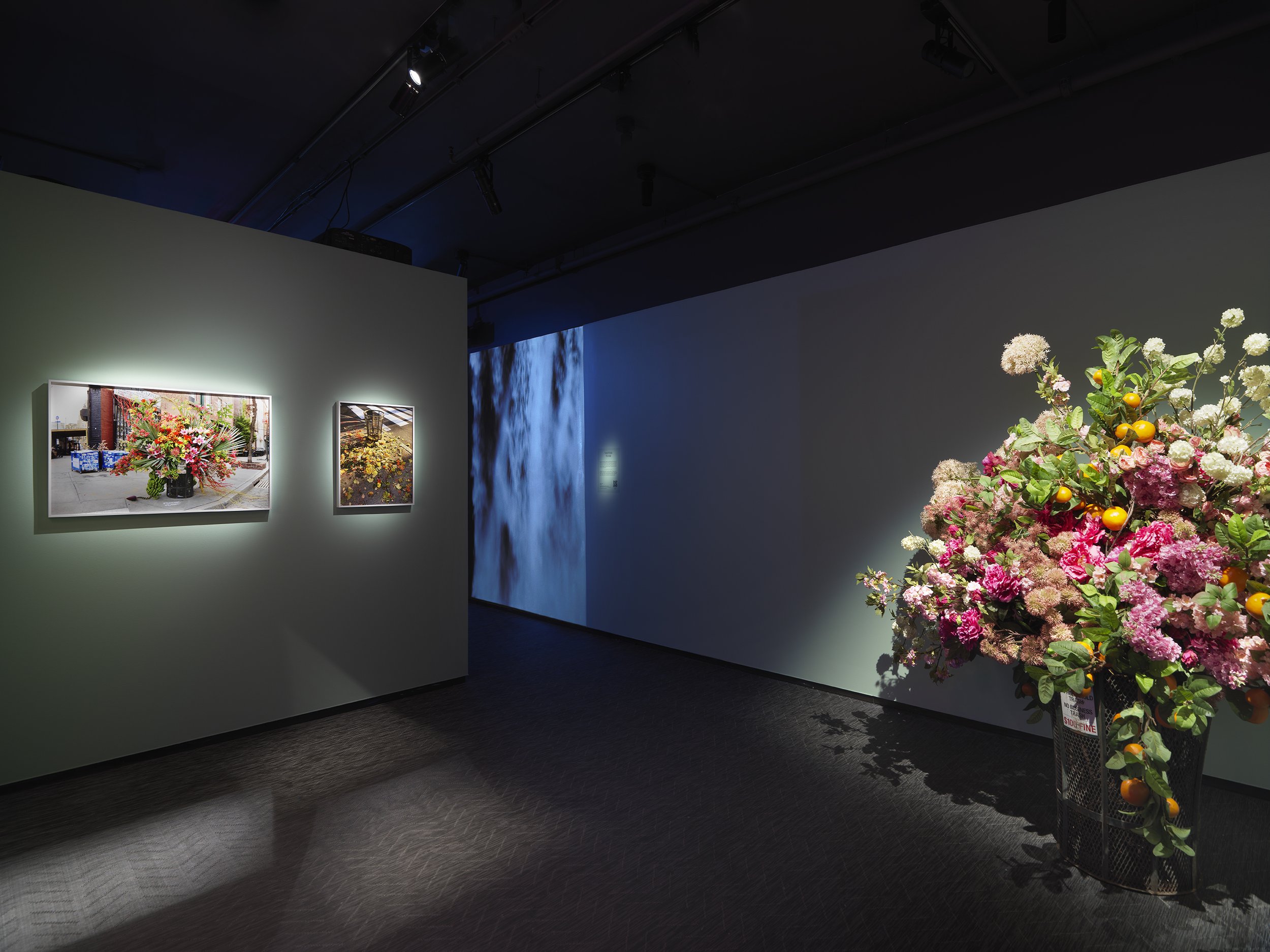
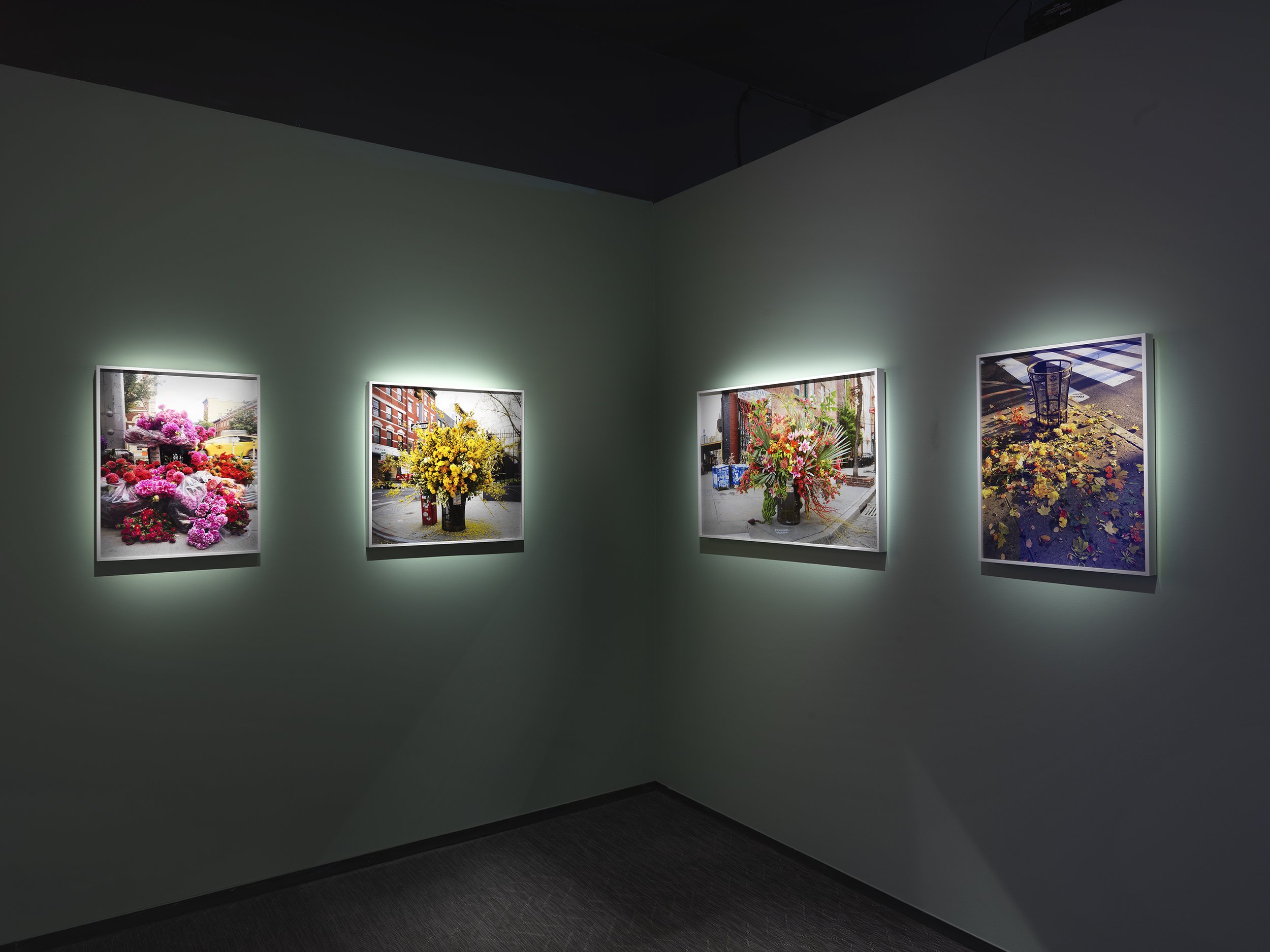


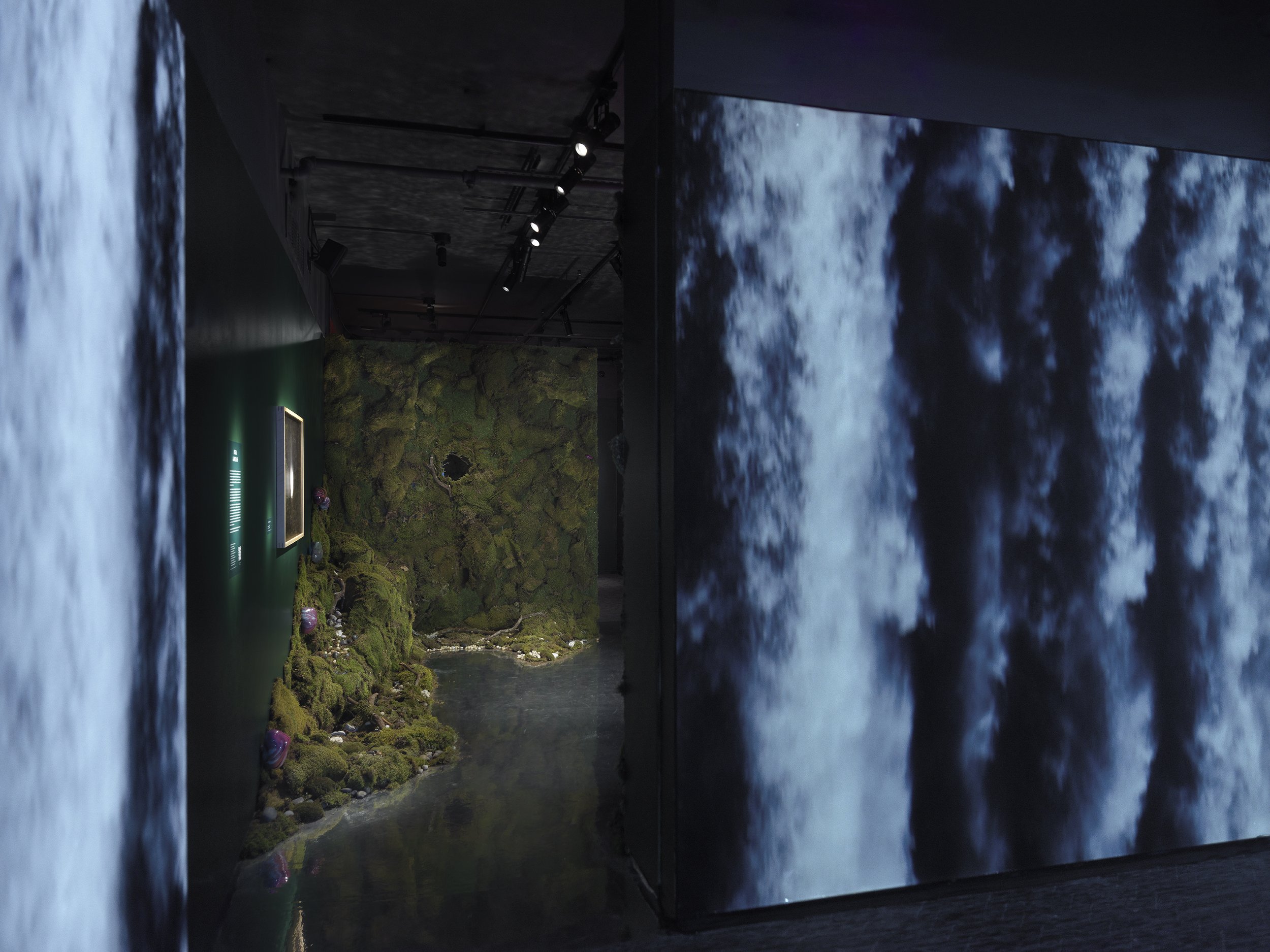

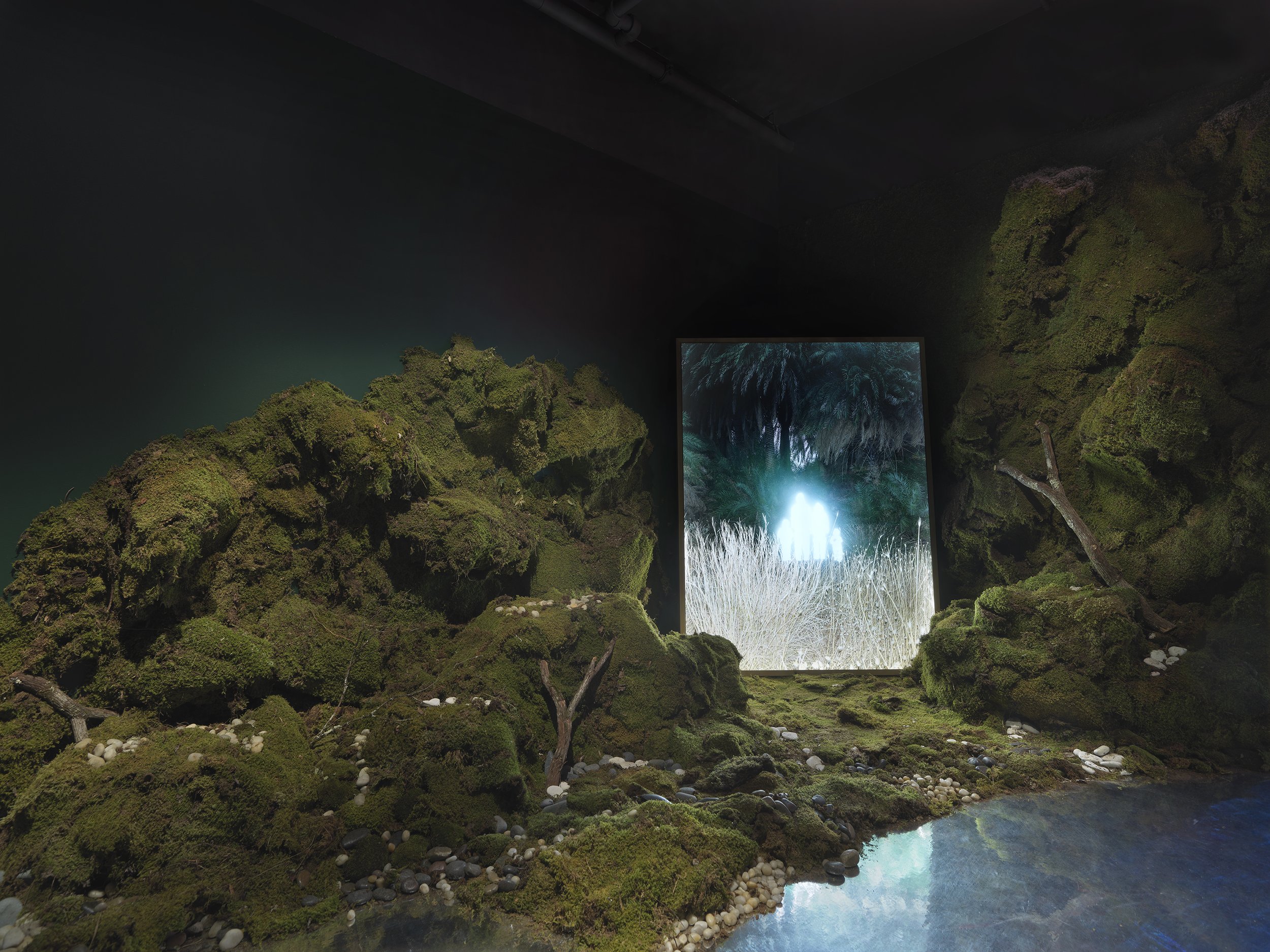
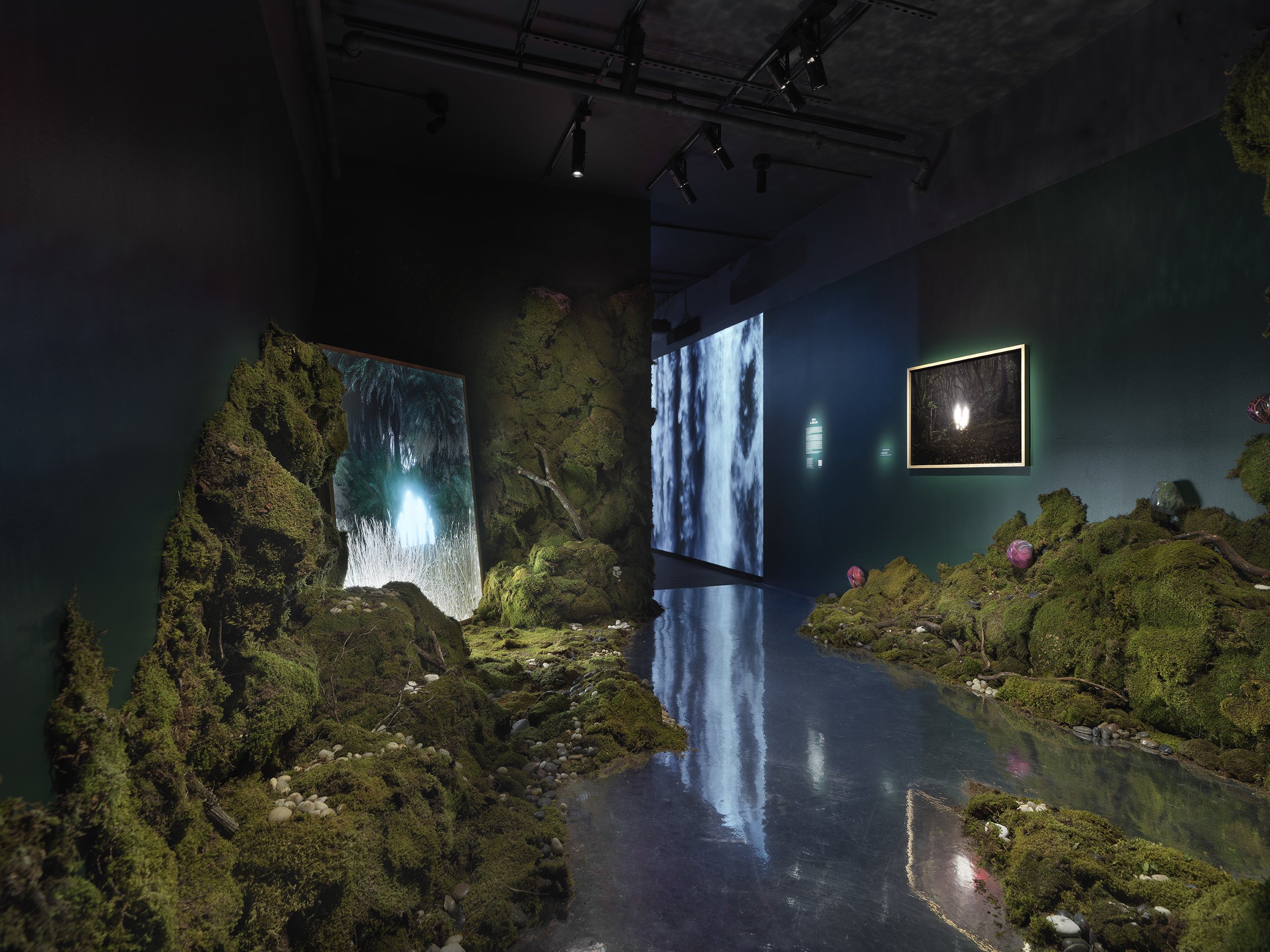
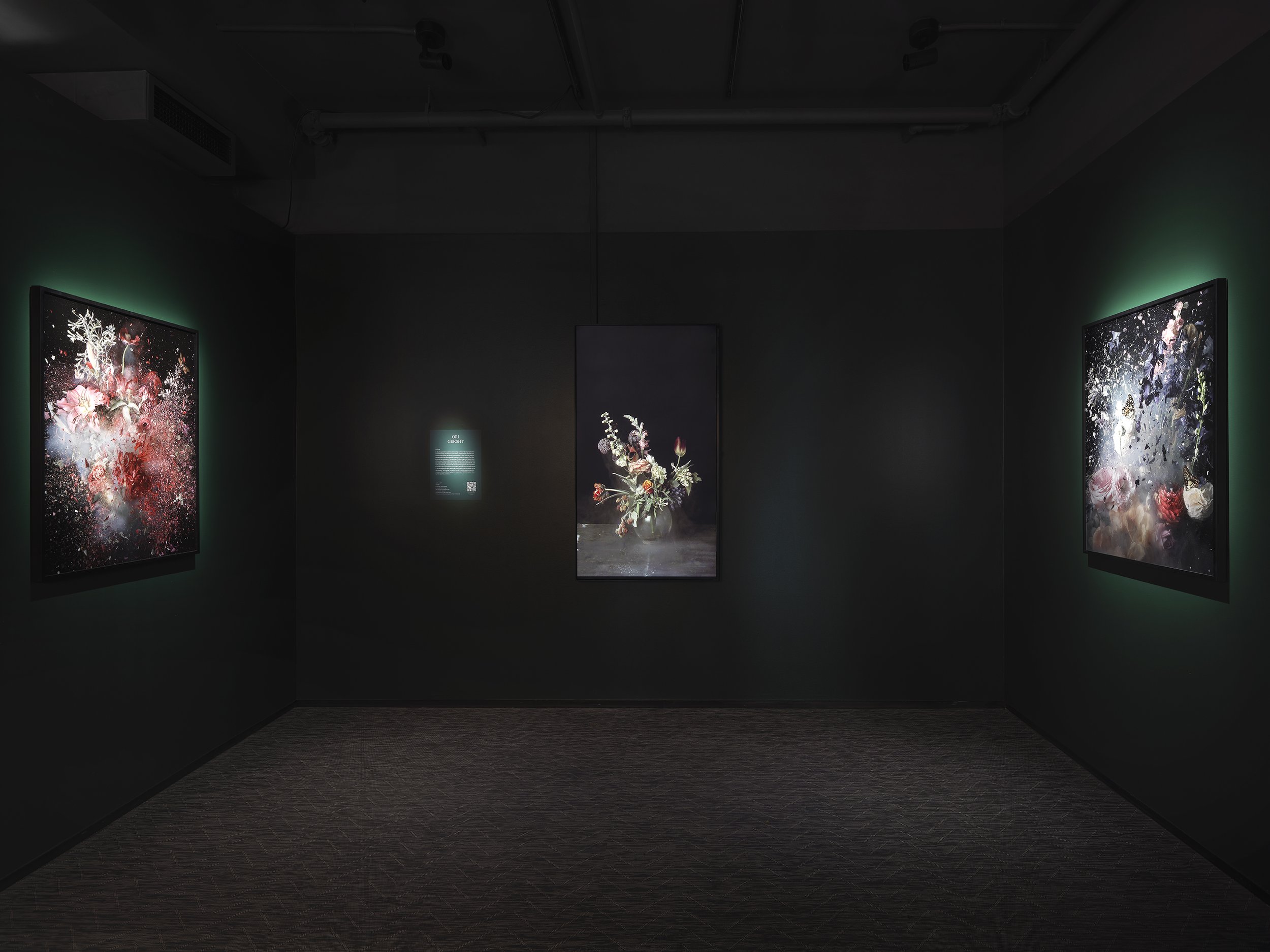
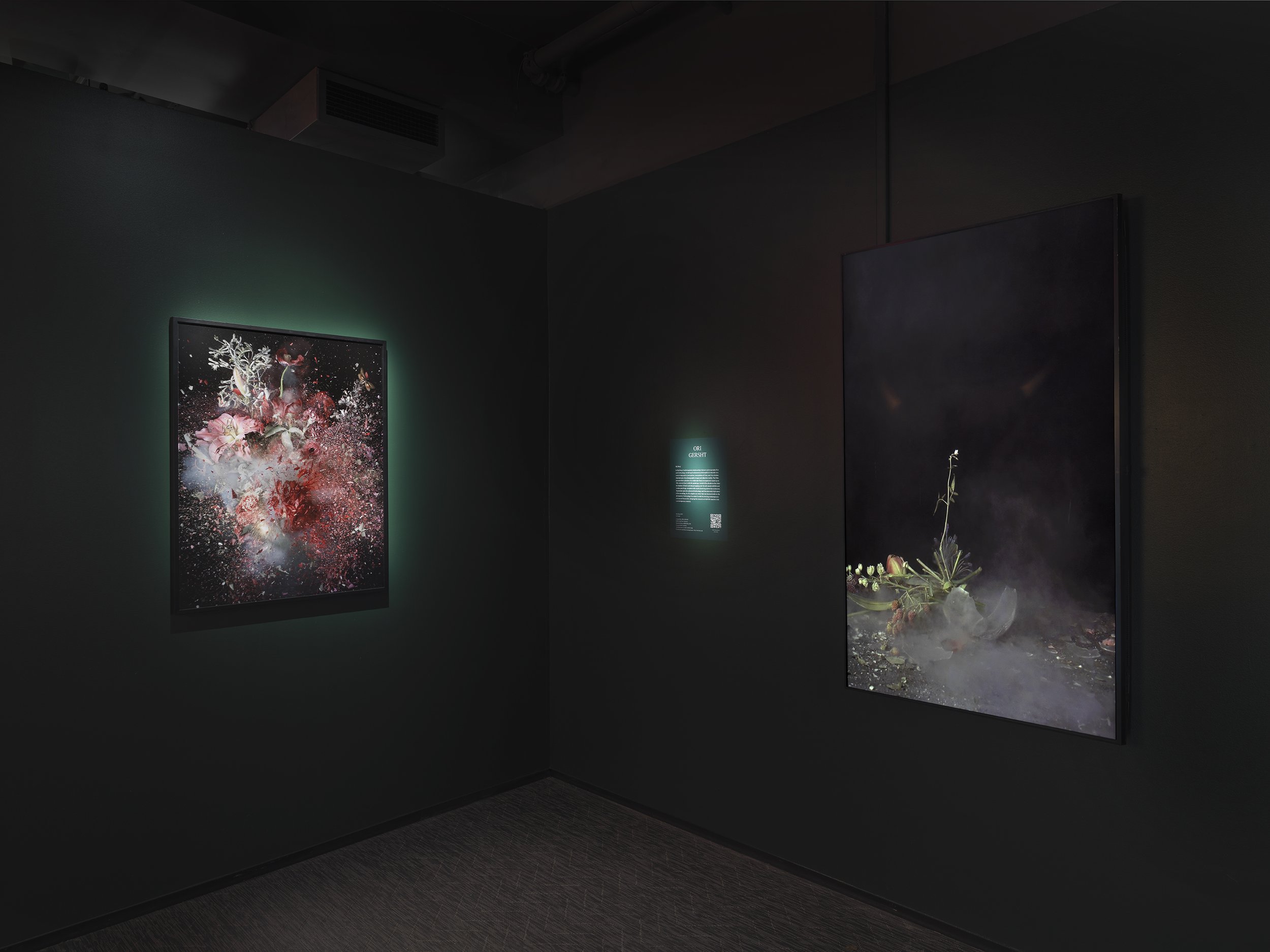



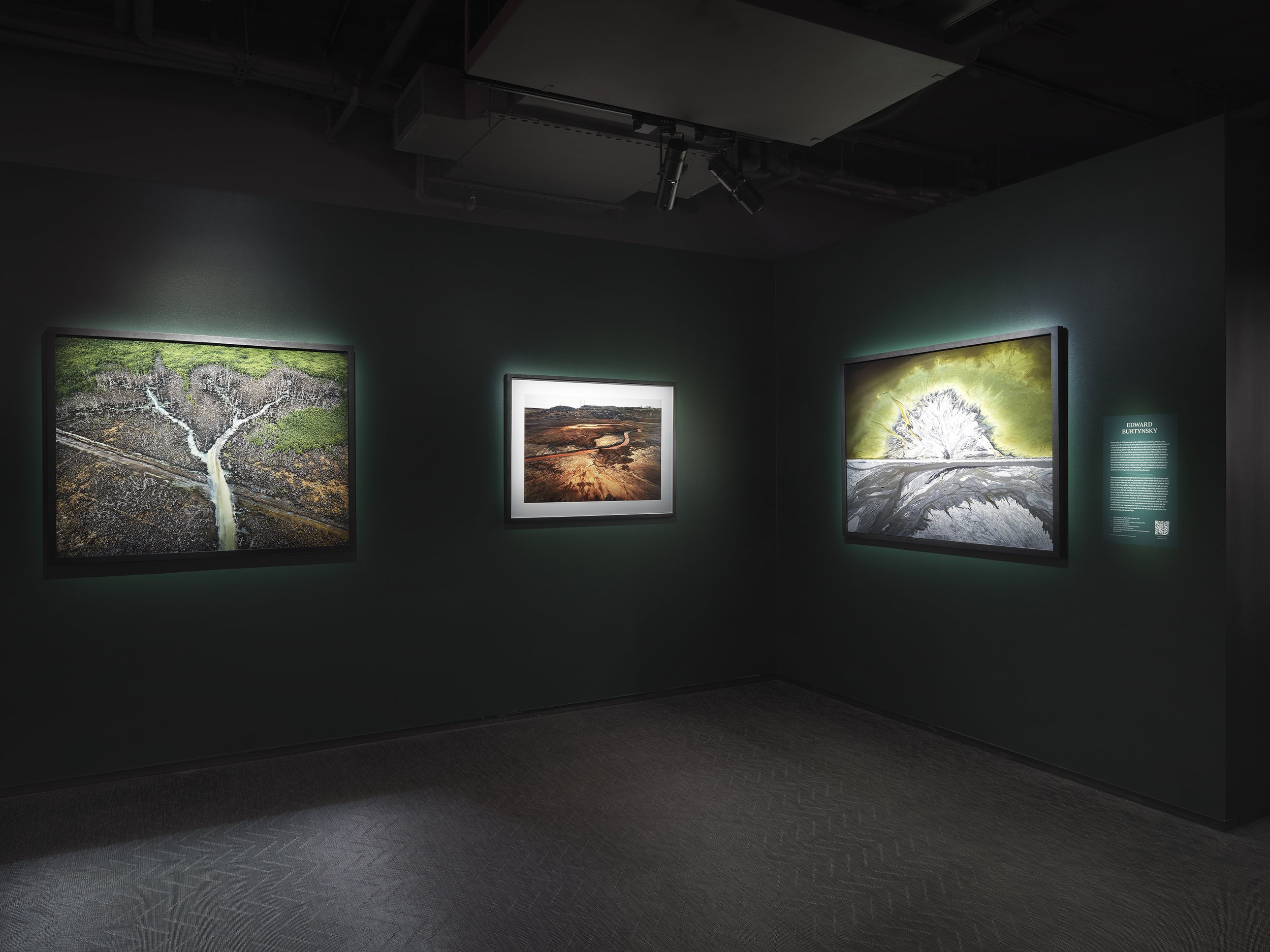
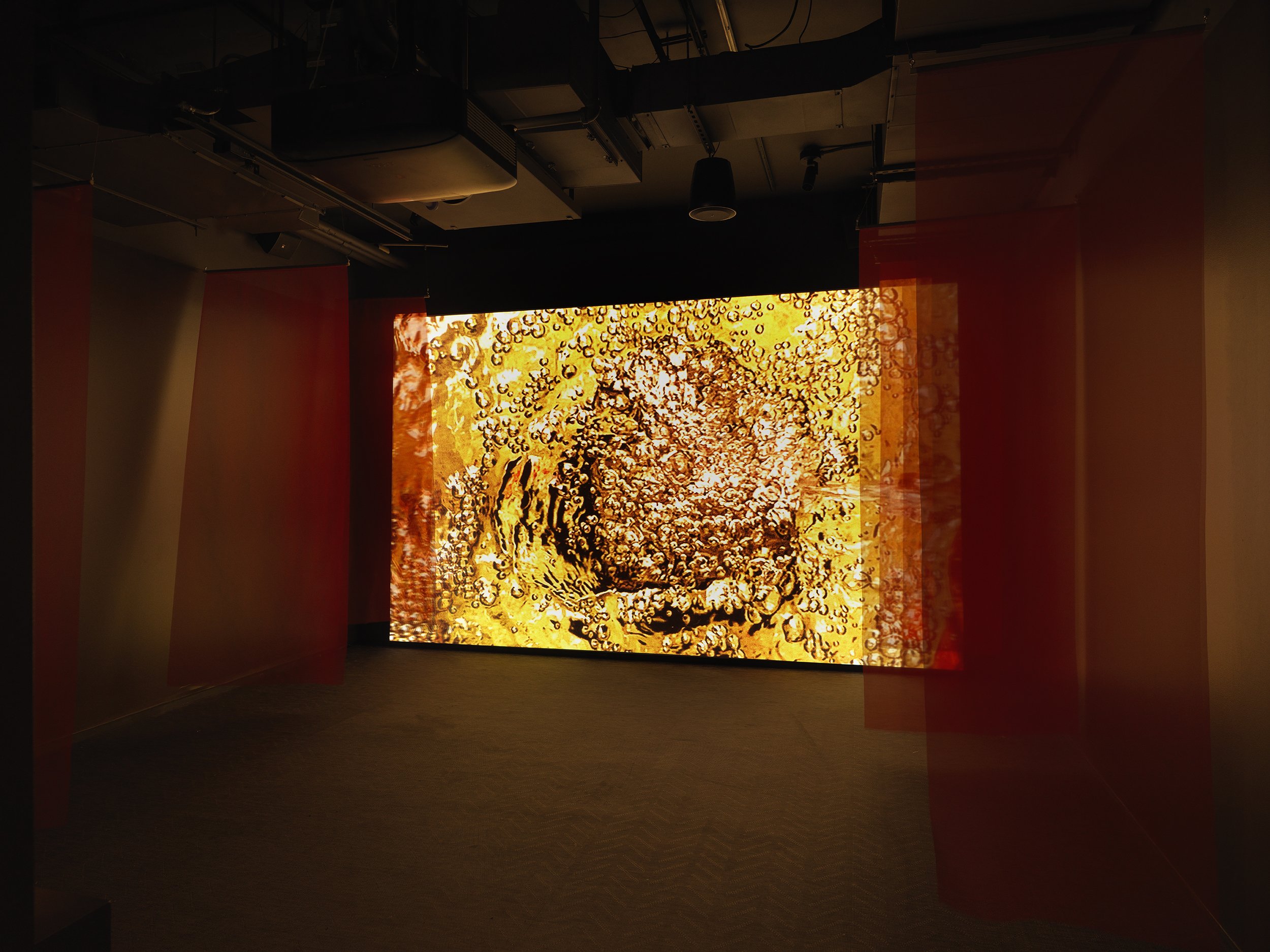
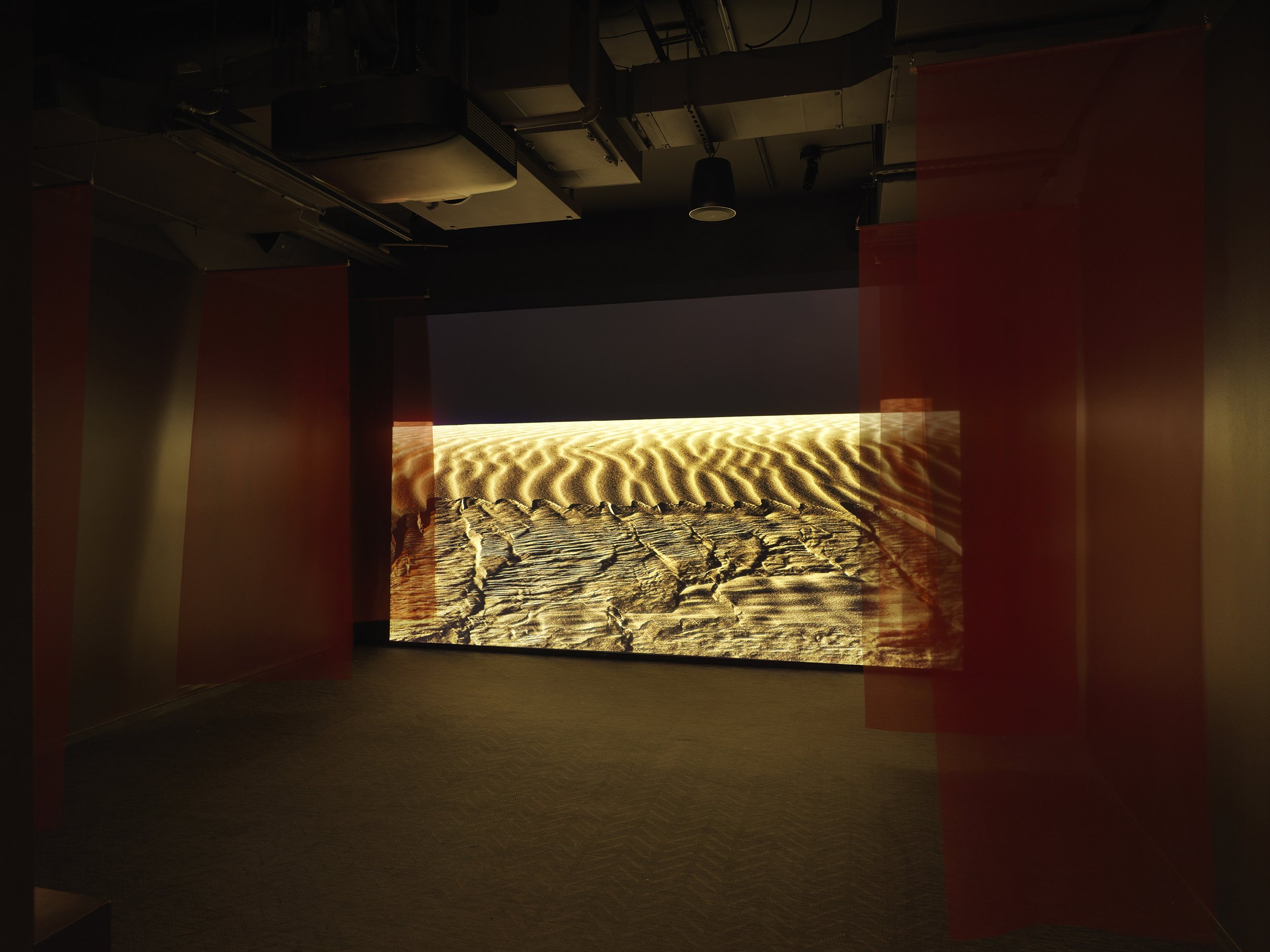
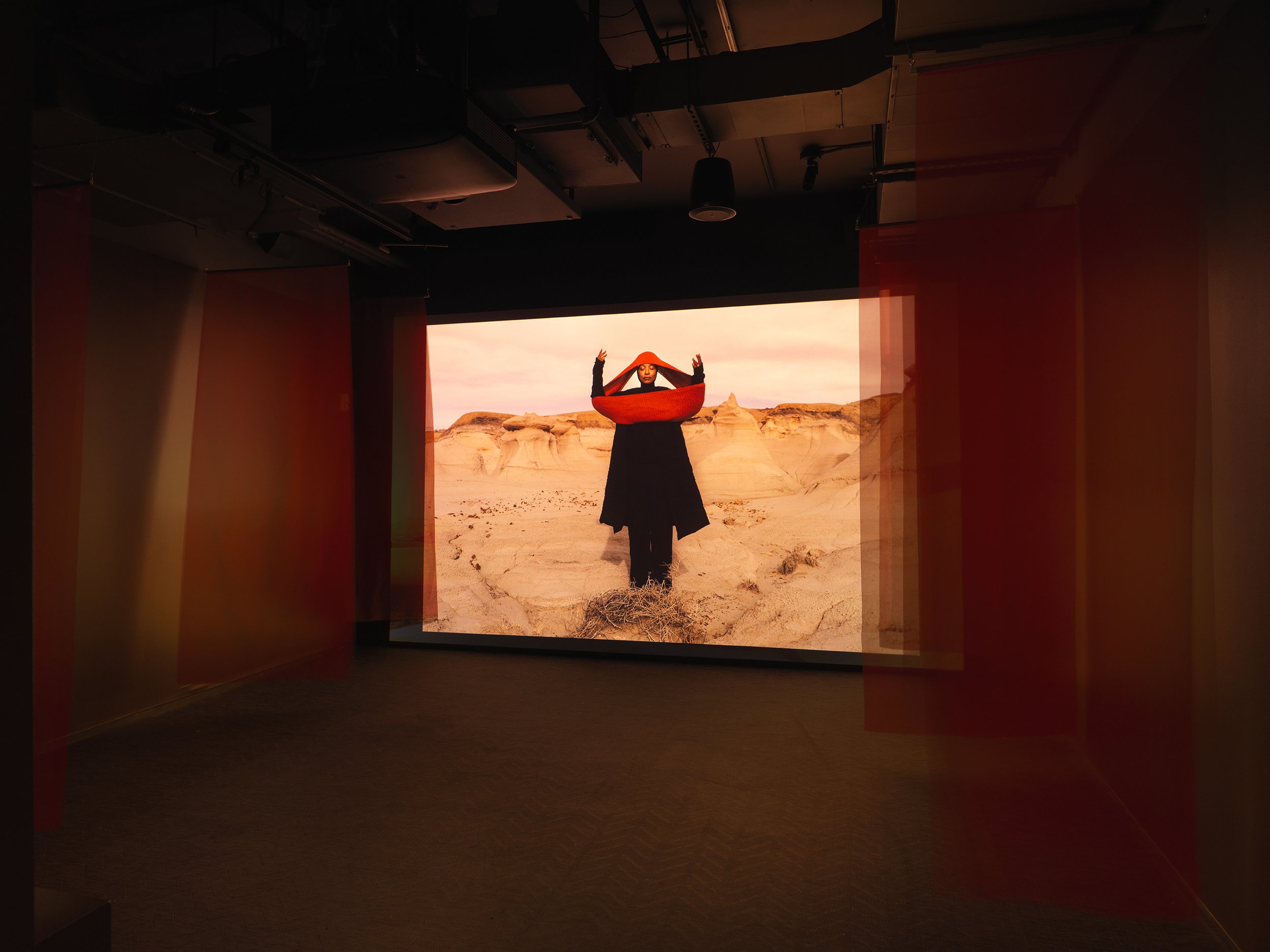
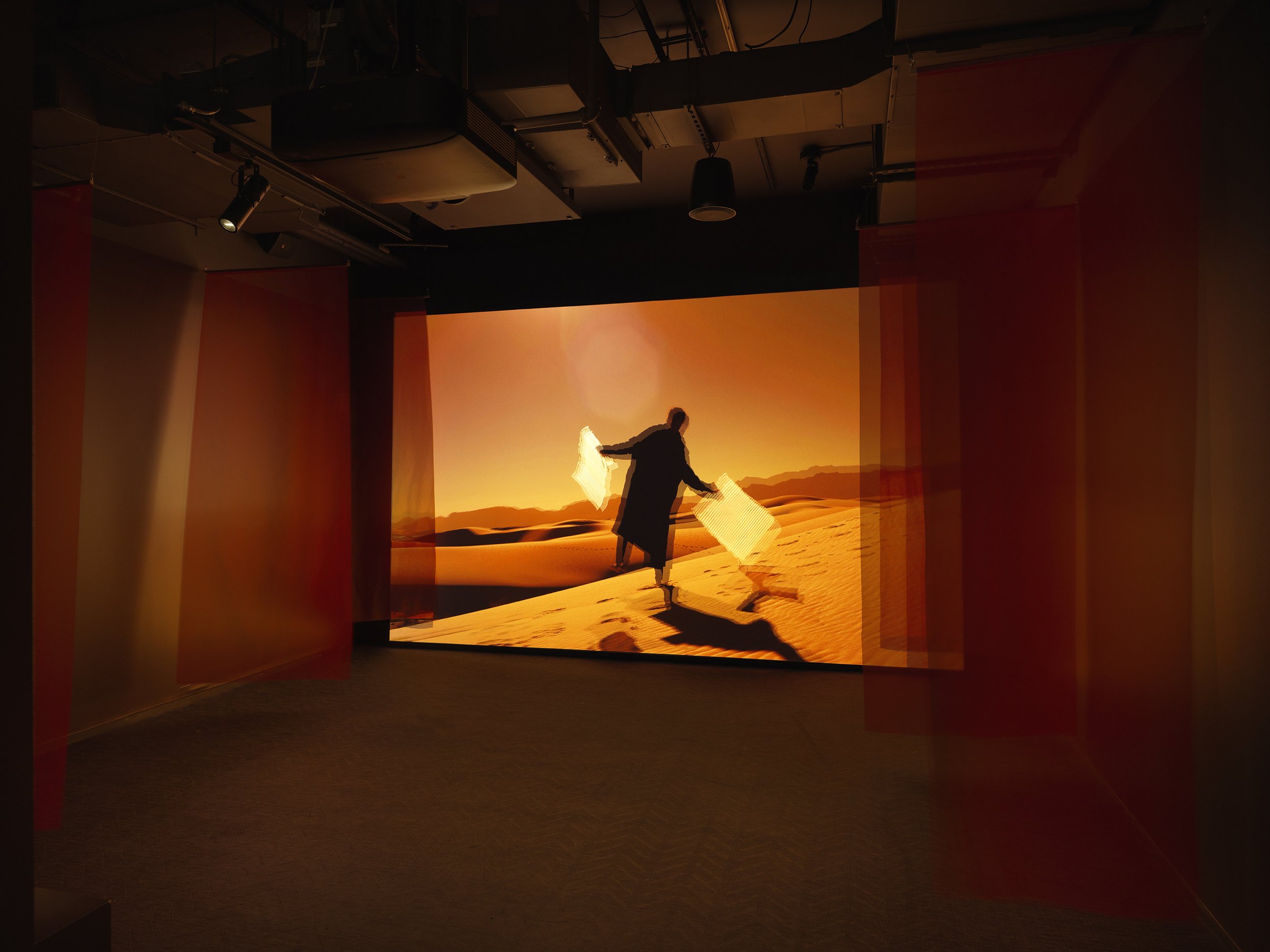
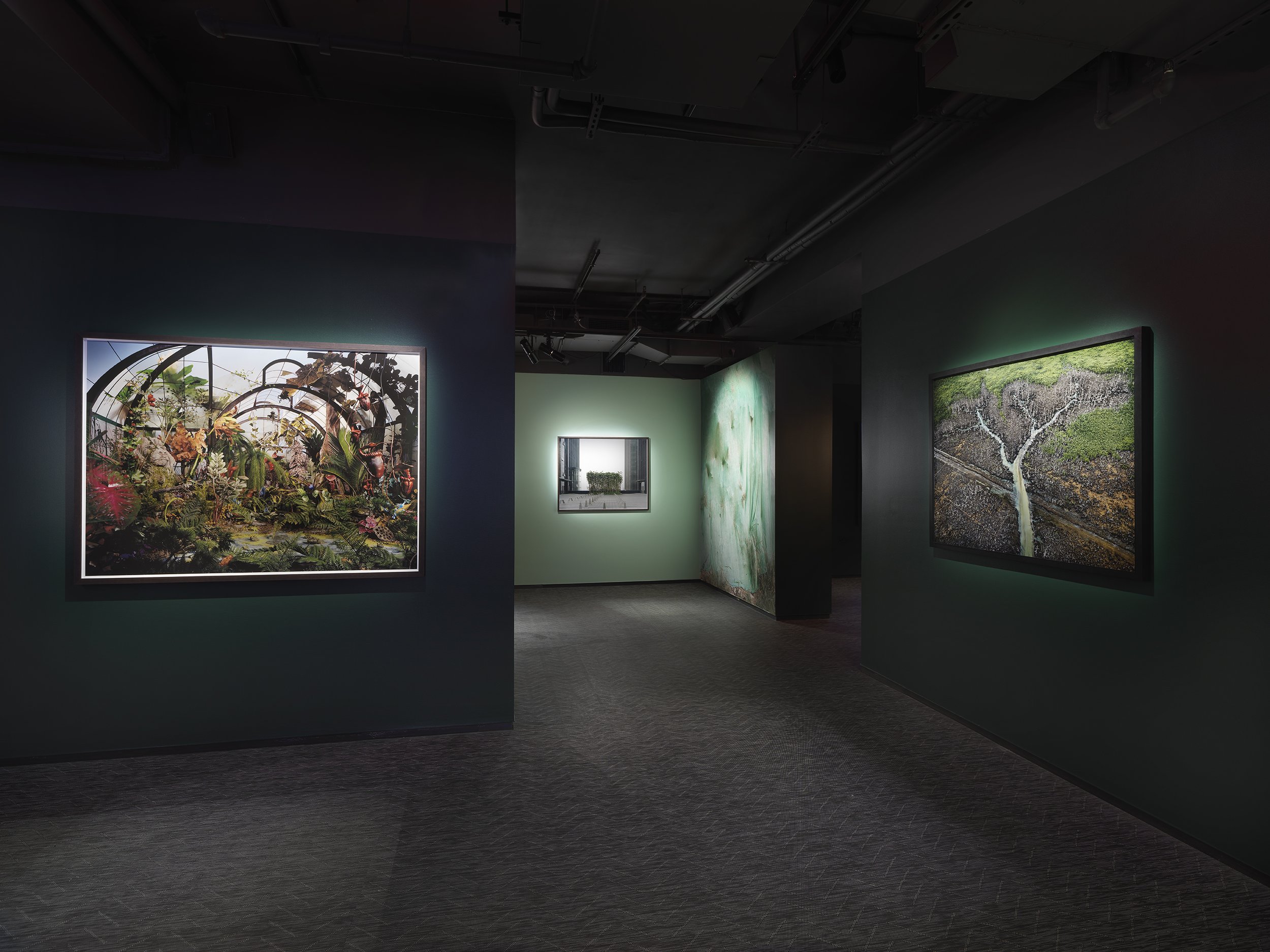

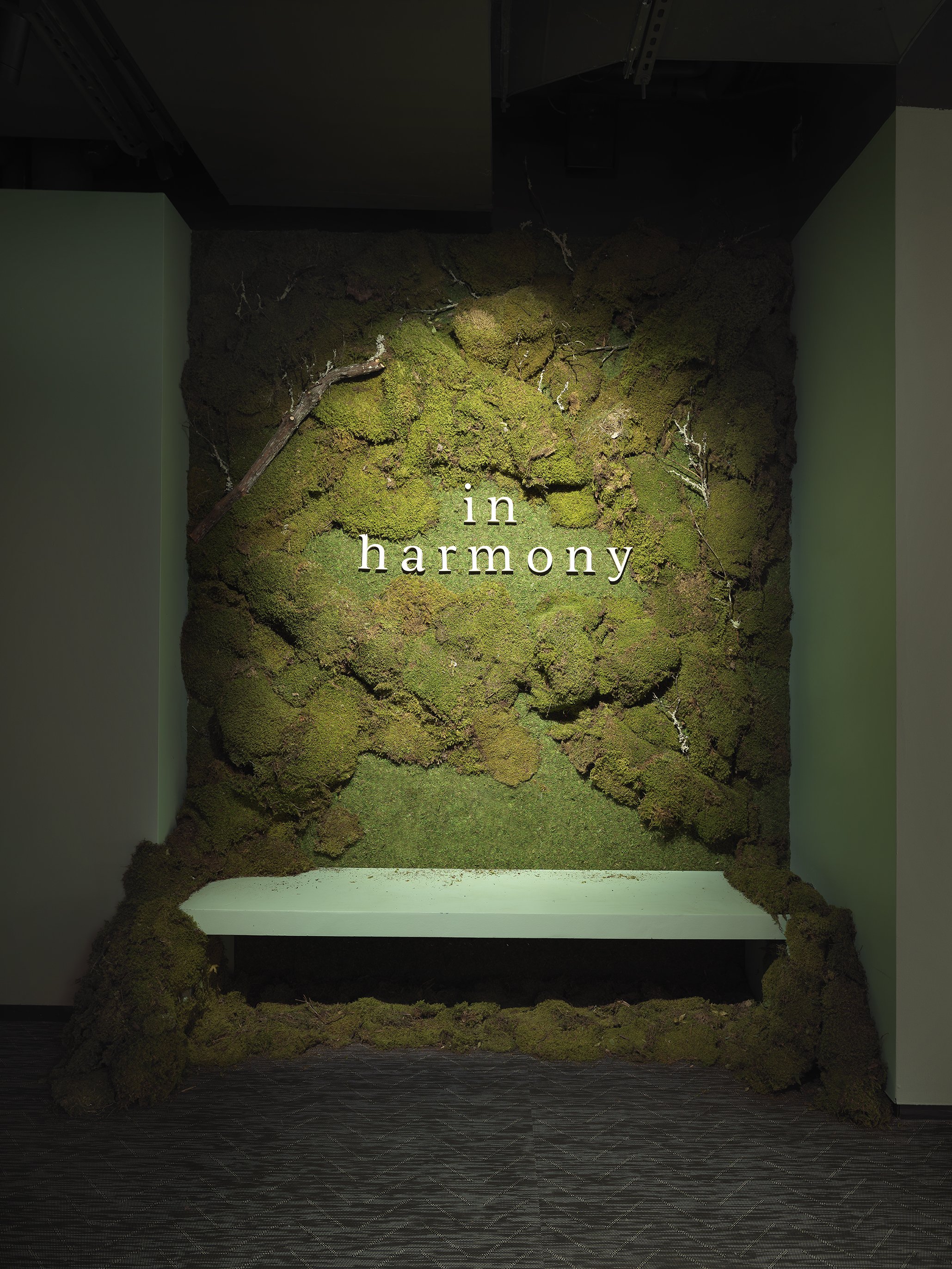

Installation View: Photography Credit: Leandro Justen. Courtesy of Fotografiska New York
The artists featured in Human / Nature include Alfredo De Stefano; Brendan Pattengale; Cig Harvey, David Ụzọchukwu; Djeneba Aduayo; Edward Burtynsky; Helene Schmitz; Lori Nix & Kathleen Gerber; Ori Gersht; Yan Wang Preston; Lewis Miller; Inka & Niclas; Pat Kane; and Santeri Tuori.
To accompany the show, a gallery on the Museum’s sixth floor will highlight pioneer photographers and the history of this genre, featuring works by Ansel Adams, Edward Steichen, Aaron Siskind, and Edward Weston.
Installation View: Photography Credit: Leandro Justen. Courtesy of Fotografiska New York
Fotografiska members were invited to preview Human / Nature during an opening night party. Guests had the chance to hear remarks from artists Edward Burtynsky and Djeneba Aduayo, as well as from environmental activist Xiye Bastida.
Tuesday, March 14
Brooklyn Ballet: “Flowers, Creatures, and Snow”
Brooklyn Ballet will perform choreography inspired by the natural world, drawing inspiration from the Waltz of the Flowers and Snowflake Waltz. In the Galleries, dancers will perform vignettes in various constellations throughout. Corresponding choreography inspired by the exhibition will be adapted for a performance in The Loft space at Fotografiska.
Monday, April 11
Unfiltered Music: Iris Trio, Project Earth
Fotografiska presents a newly commissioned musical performance by Andrew Downing and Sarah Slean, as well as newly commissioned poetry by Karen Solie. Project Earth strives to illuminate the impact of human behavior on the environment, addressing issues of climate change, pollution, habitat degradation, and biodiversity loss.
Monday, April 15
Book Launch & Talk with Pete McBride — The Colorado River: Chasing Water
Join author and photographer Pete McBride for a live talk to celebrate the release of his new book, The Colorado River: Chasing Water. Further information about programming can be found here.
About Fotografiska
Fotografiska is the contemporary museum for photography, art, and culture. Founded in Stockholm in 2010 and led globally by its Chairman Yoram Roth, Fotografiska is a destination to discover world-class photography, eclectic programming, elevated dining, and surprising new perspectives.
Guided by a mission to inspire a more conscious world through the power of photography, art, and culture, Fotografiska produces dynamic and unparalleled rotating exhibitions spanning various genres in inclusive environments. With a dedicated international community and locations in Stockholm, New York City, Tallinn, Berlin and Shanghai, Fotografiska is the premier global gathering place for photography and culture.
The exhibition runs from February 9, 2024 through May 25, 2024. For more information about Fotografiska please visit their website here. Also visit the museum on Instagram and Facebook.
Jessica Jackson Hutchins: Wrecked and Righteous
Photo: Mario Gallucci
Jessica Jackson Hutchins (born in 1971 in Chicago) has explored the relationship between art and everyday life for nearly thirty years, playfully melding materials with an unruly, intuitive approach to traditional mediums and found objects alike. Based in Portland, Oregon, Hutchins gained international recognition for her expressive sculptural assemblages that combine cast-off household items with handmade ceramic and papier-mâché elements. Recently, she expanded her artistic practice to include fused glass, producing vibrant, collage-like panels and windows that bring a form associated with exalted spiritual spaces into the secular realm. Wrecked and Righteous is the most extensive overview of Hutchins’s practice to date and includes works created since the late 1990s.
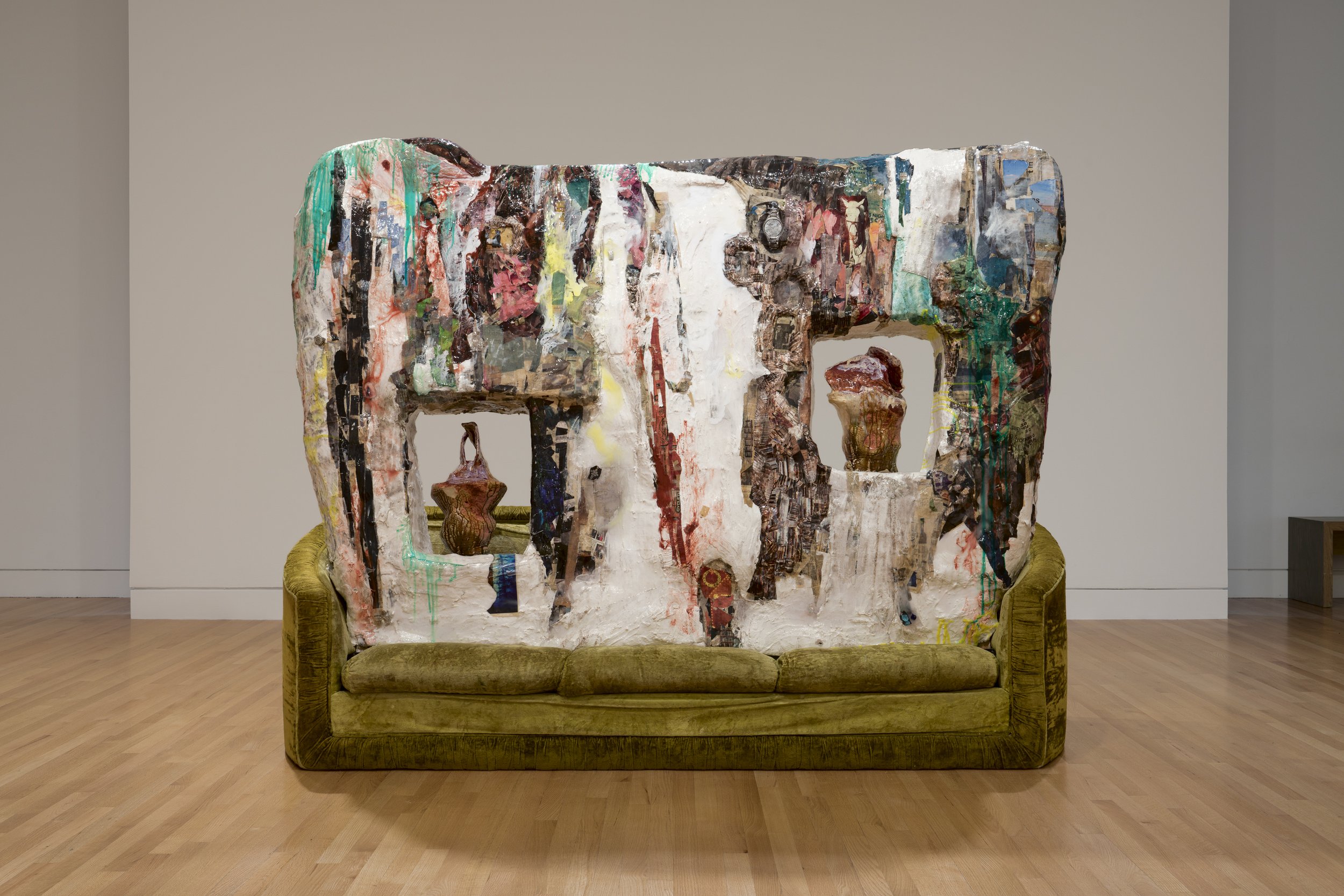

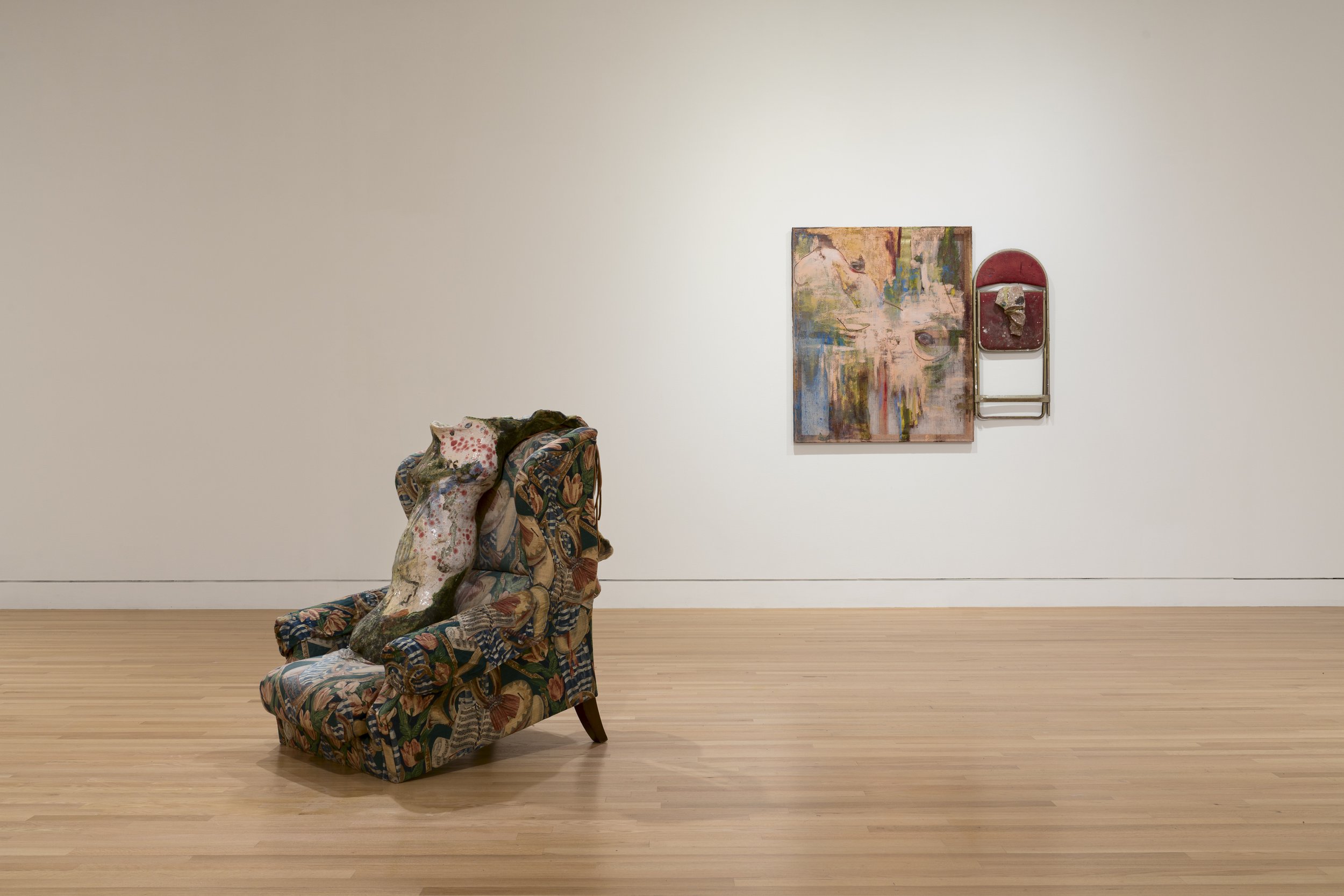
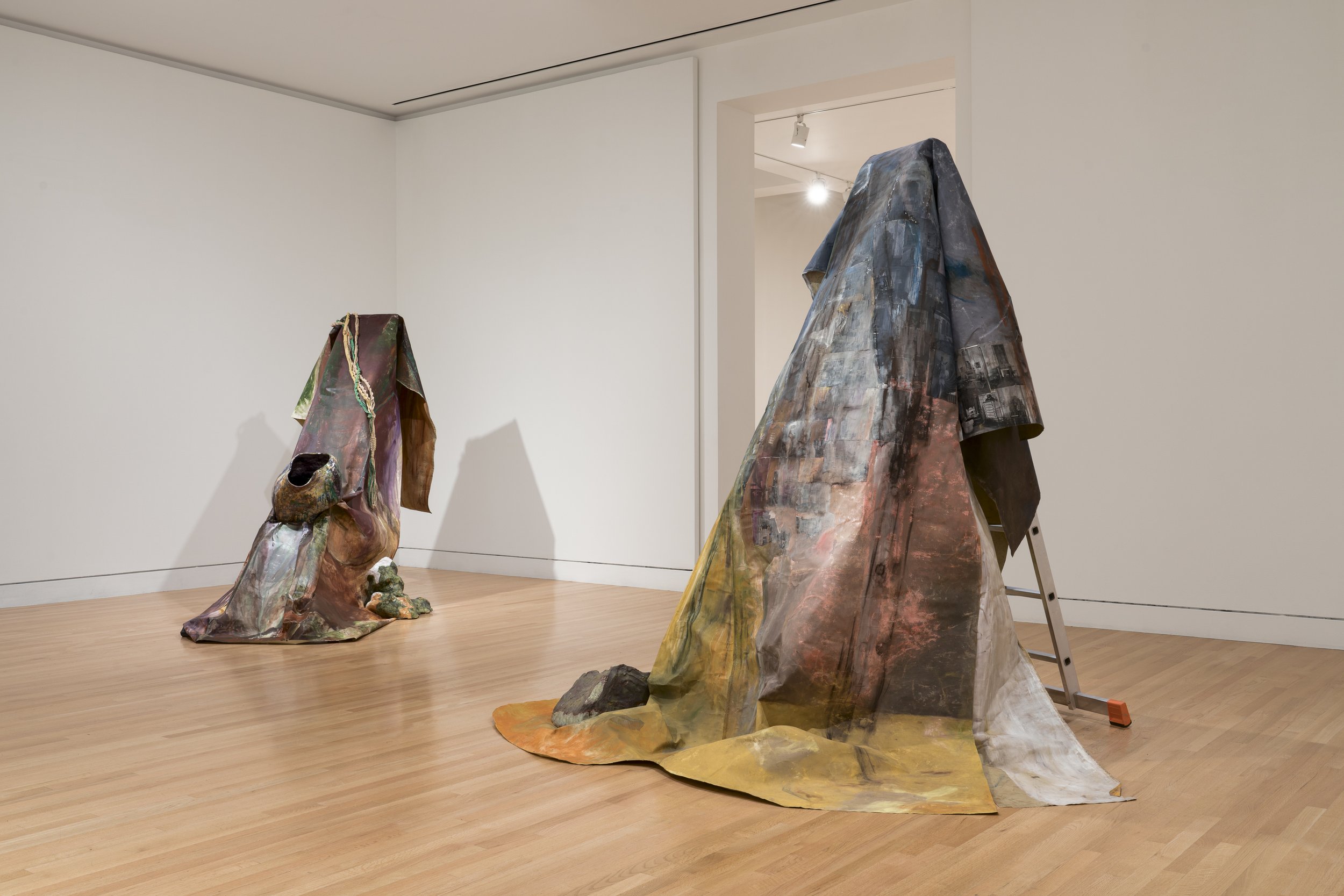
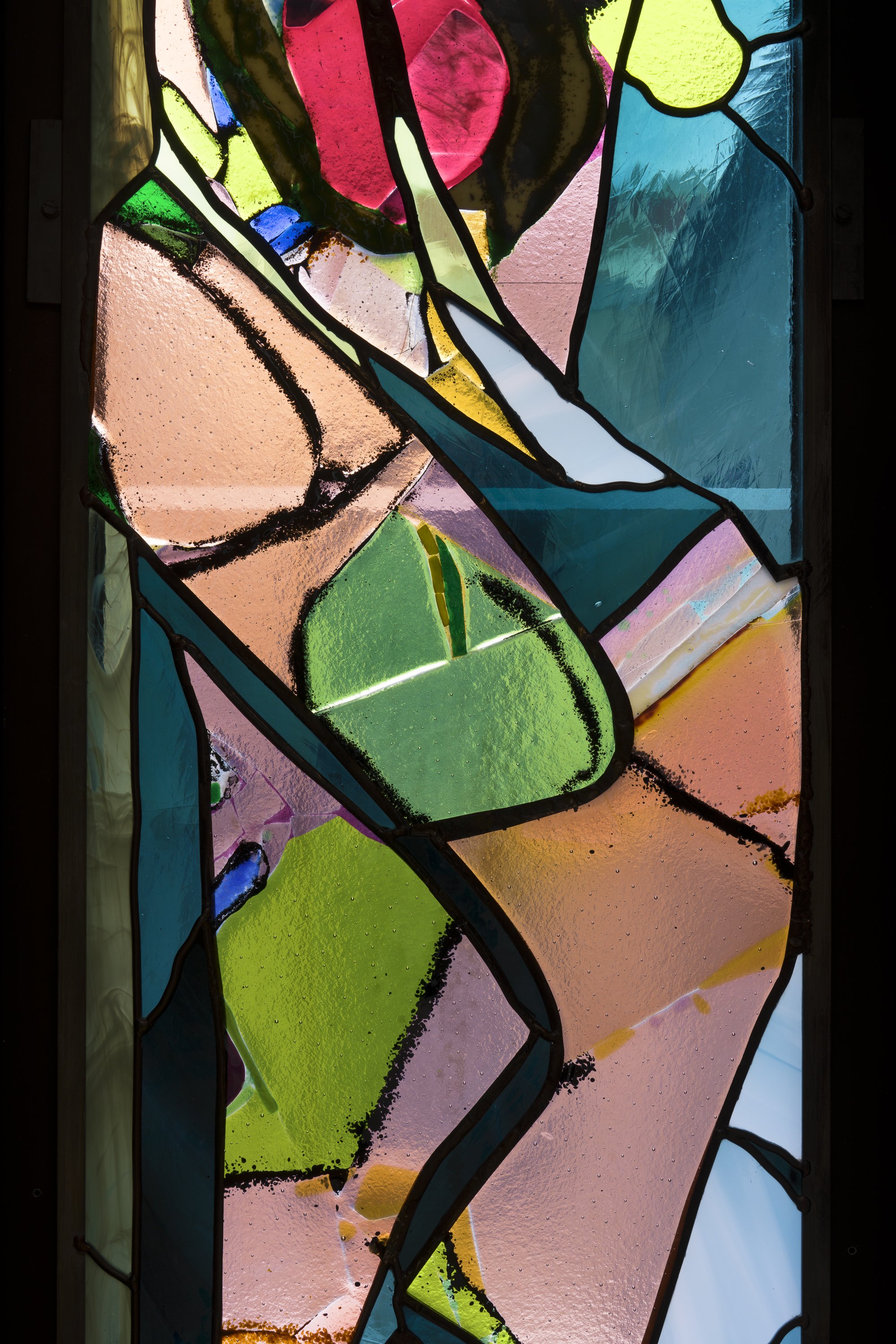
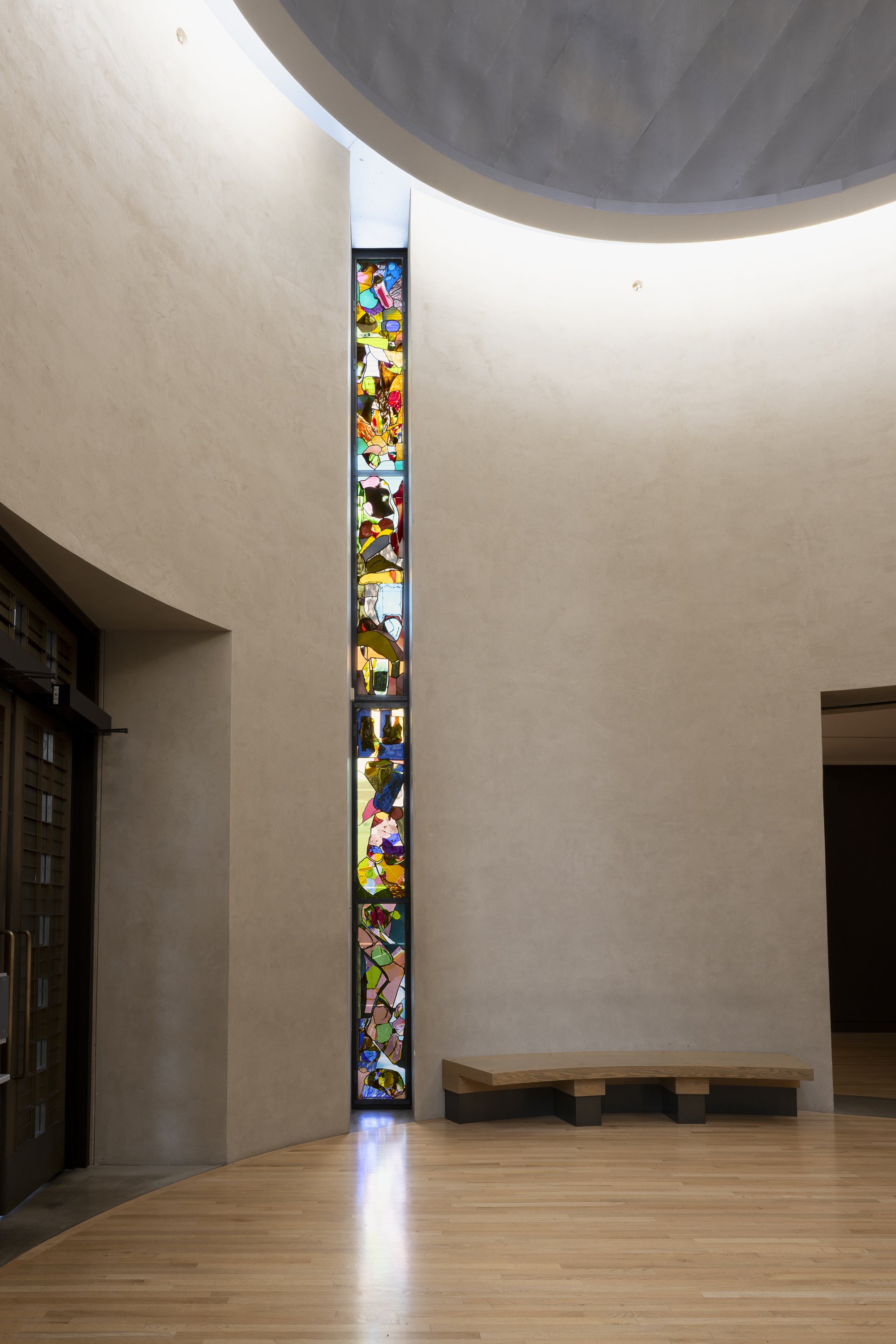
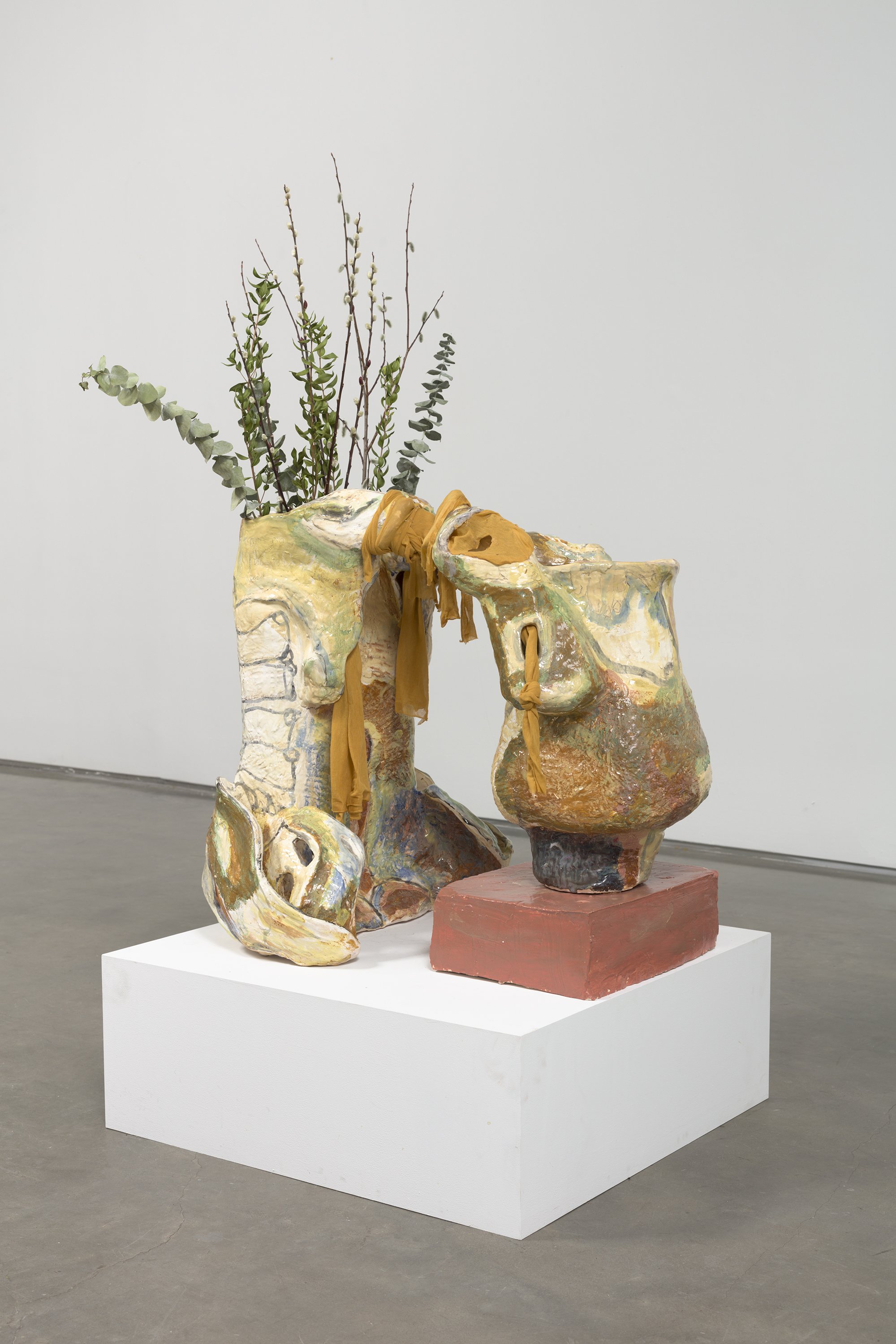
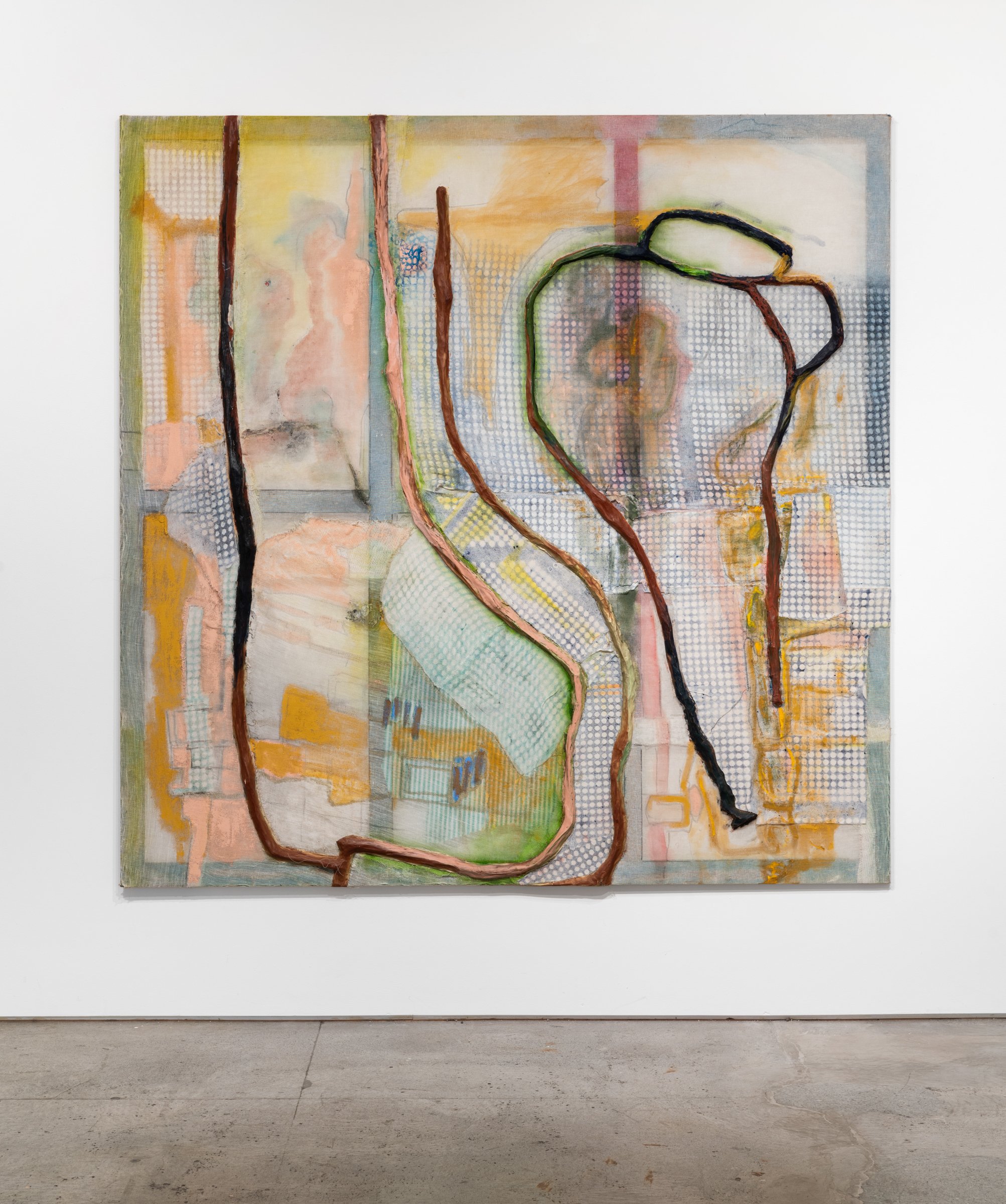
Installation view of Jessica Jackson Hutchins: Wrecked and Righteous, Frye Art Museum, Seattle, January 27–May 5, 2024. Photo: Jueqian Fang
The nonchronological presentation surveys the artist’s pursuit of immediacy and communion through art, beginning in the museum’s rotunda entryway with a site-specific fused-glass window. Within the galleries, Hutchins’s relief paintings, intimate tabletop objects, and
needlepoint compositions mingle with selected furniture sculptures— well-worn sofas and chairs cradling lumpy ceramic forms that read as surrogates for the human body.
My Friend the Poet, 2019. Ceramic, plaster, papier-mâché, collage, chair. 63 x 30 x 33 in. Courtesy of the artist. Photo: Mario Gallucci
Designed as wearable serving platters and bowls, the large, fitted food vessels in the adjacent room rest in armchairs until activated by performers during a special onetime event. The exhibition links these unwieldy prostheses to the artist’s early milagros (miracles) sculptures: papier-mâché body parts created to symbolically heal suffering people she knew or followed in the media. Drawing a thorough line of vulnerability, caring, and repair between these poles of Hutchins’s career, the exhibition honors her unique capacity for finding the sublime in ordinary places and neglected things.
Jessica Jackson Hutchins: Wrecked and Righteous is organized by Amanda Donnan, Chief Curator and Director of Exhibitions.
Lead support is provided by The Ford Family Foundation, administered by the Portland Institute for Contemporary Art.
Additional generous support was provided by the Frye Foundation and Frye Members. Media sponsorship provided by KEXP.
Third Eye, 2015. Acrylic paint, collage, fabric, ceramic, chair. 56 x 47 1/2 x 6 in. Courtesy of the artist. Photo: Mario Gallucci
Jason Seife: Coming to Fruition
Installation photograph, Jason Seife: Coming to Fruition, Pérez Art Museum, May 18, 2023, through August 11, 2024, photo © Pérez Art Museum Miami (PAMM)
(MIAMI, FL) — Pérez Art Museum Miami (PAMM) is pleased to present Jason Seife: Coming to Fruition opened on May 18, 2023. Featuring all new site-specific works including a custom wallpaper, triptychs, and a large-scale canvas, Coming to Fruition is Seife’s first solo exhibition in the United States.
“Jason was born and raised in Miami and continues to live and work here. As Miami’s flagship institution, we want the local art ecosystem to flourish and support our local artists,” said PAMM Assistant Curator Maritza Lacayo. “Jason’s very first museum visit was to Miami Art Museum, PAMM’s predecessor, and it gave him the idea that he could become an artist and exhibit his work at a museum. This exhibition is very much a full circle moment for Jason and means the world to me, as a born-and-bred Miamian as well.”
Installation photograph, Jason Seife: Coming to Fruition Nothing New, Pérez Art Museum, May 18, 2023 through August 11, 2024, photo © Pérez Art Museum Miami (PAMM)
Seife, like many Miami residents, is the son of immigrants—in his case of Cuban and Syrian descent. His oeuvre centers on his Middle Eastern heritage, referencing Persian carpets and the intricate details found in mosques and traditional Islamic art. He digitally designs his carpet-inspired compositions, mirroring weavers’ practice of associating patterns or colors with specific locations and communities. Seife subsequently hand-paints these intricate patterns onto a concrete slab or canvas. For Coming to Fruition, Seife presents his elaborate process in media res––amid the action. The effect created by this site-specific exhibition is one in which the boundary between artistic process and finished product is blurred. The process-as-product dynamic is evident in two triptychs that reveal the progression of his paintings—from initial stages and minimal paint on the concrete to intricately painted finished product.
Accompanied by an additional finished painting on canvas, the triptychs are surrounded by labyrinthine wood frames which appear to seep out of the paintings and onto the walls, as if taking over the gallery’s interior. The frames recall elaborately carved mosque ornamentation and have been made specifically for this exhibition and gallery space. The overall effect of wooden frames and paintings on the concrete walls recalls a phenomenon common to both Cuba and Syria: beautifully painted buildings that have been reduced by war or neglect to their wood and concrete shells. The site-specificity of Coming to Fruition allows Seife to present a secular sanctuary wherein the visitor can meditate on human desecration, community-building, and complicated identities.
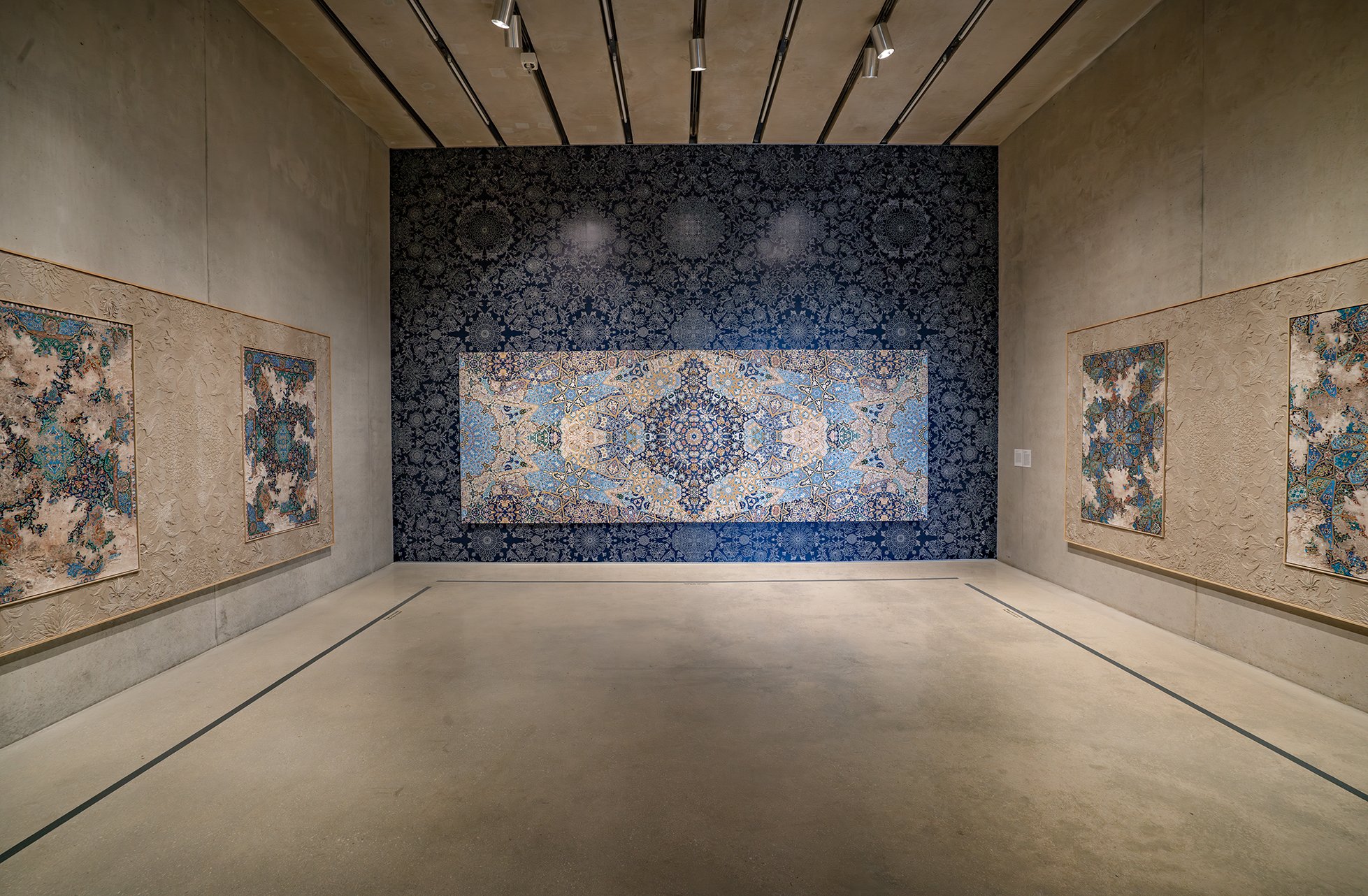

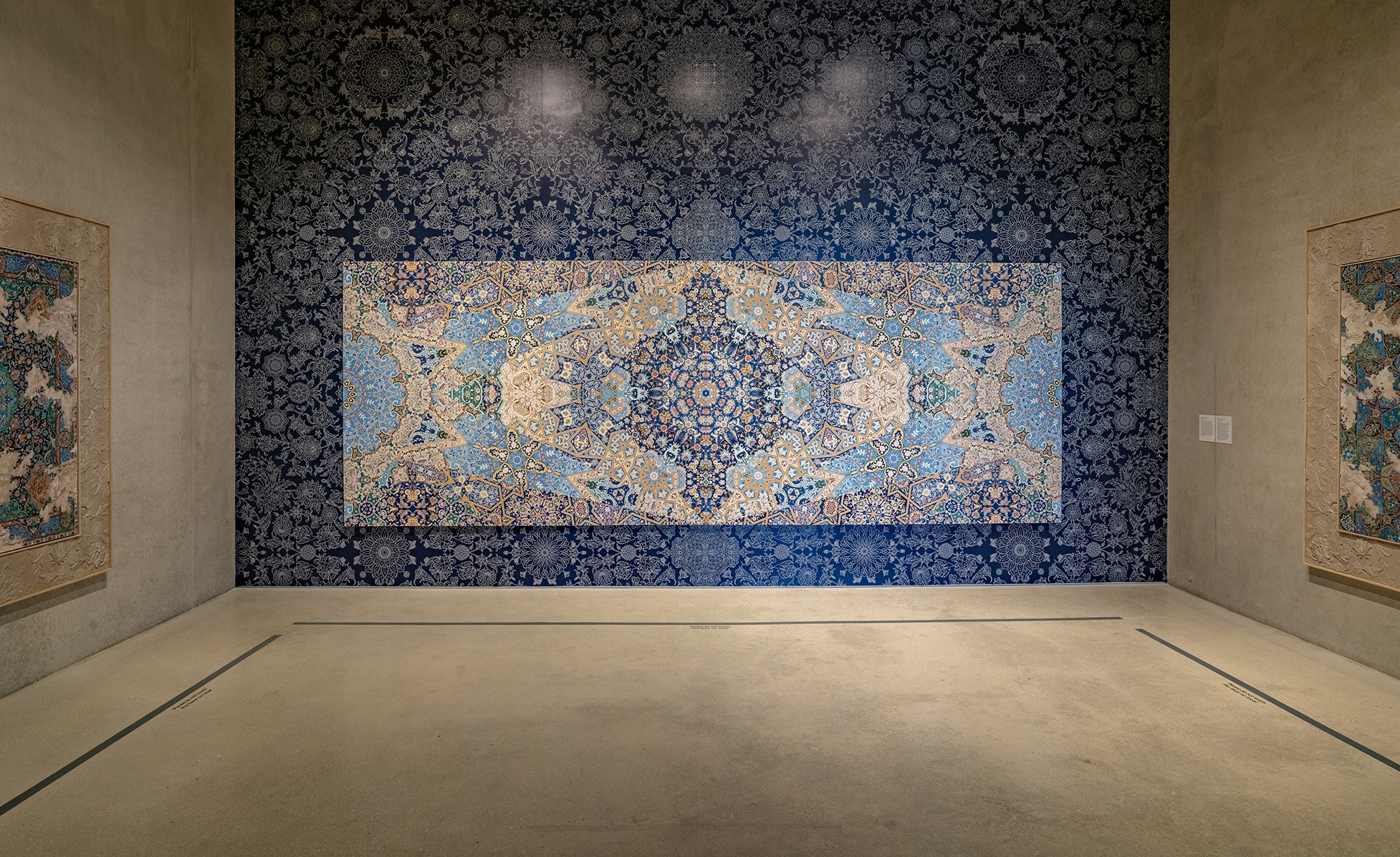
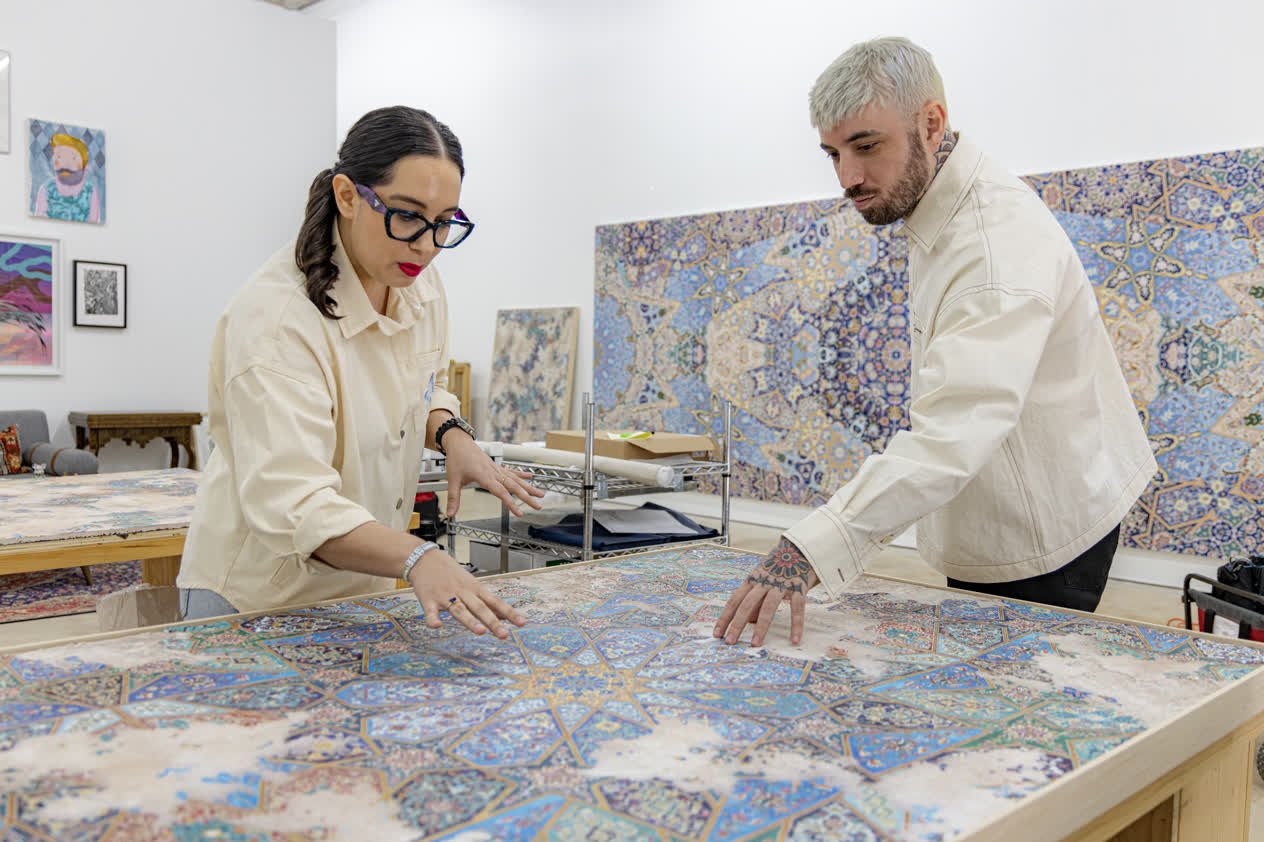
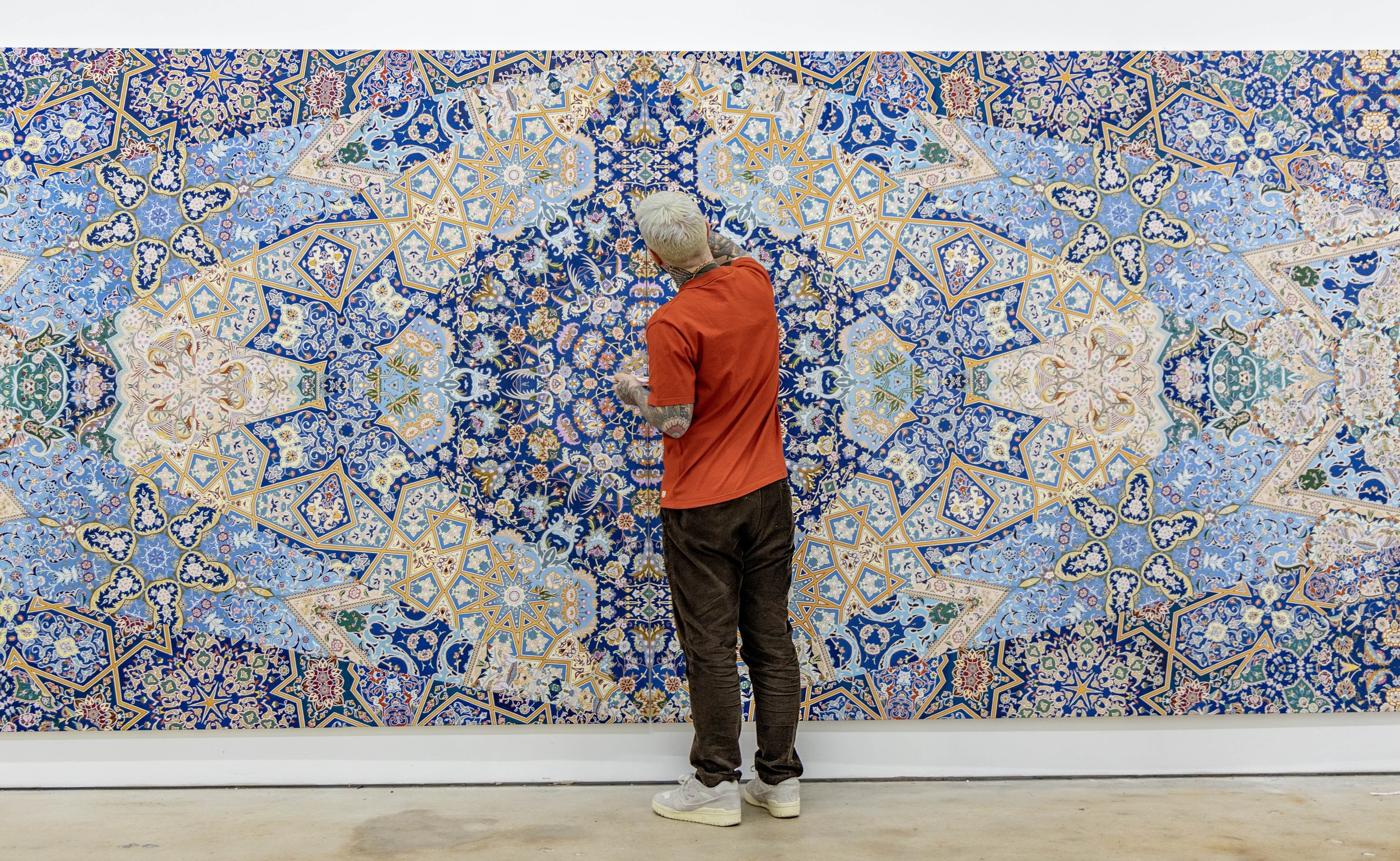
Installation photograph, Jason Seife: Coming to Fruition Nothing New, Pérez Art Museum, May 18, 2023 through August 11, 2024, photo © Pérez Art Museum Miami (PAMM)
“Jason Seife’s work and facility with old and new technology to make art objects is remarkable. While finding inspiration in art from antiquity, he is also incredibly versed in the art of our time, specifically in new digital advancements in technology, including NFT’s and the burgeoning space of Web3. Also evident of his versatility and a reflection of his timeliness, he has been a collaborator with artists from other disciplines,” said PAMM Director Franklin Sirmans. “A true collaboration between artist and curator, Jason and Maritza—two Miamians who visited PAMM growing up—we hope our community can draw inspiration from their example as well.”
Jason Seife: Coming to Fruition is organized by PAMM Assistant Curator Maritza Lacayo. Ongoing support for PAMM’s project galleries from Knight Foundation is gratefully acknowledged.
photo © Pérez Art Museum Miami (PAMM)
ABOUT JASON SEIFE
Jason Seife lives and works out of Miami, Florida. Despite being accepted to some of the most prestigious art schools in America, Jason opted for a more hands on approach and dove straight into the art world. Paving his way through graphic design, Jason has worked with some of the largest names in the music business including Kanye West, Pharrell Wiliams, Big Sean and Nicki Minaj, designing everything from album artwork to jewelry and merchandise. Refusing to be limited to one form of Art, Jason's true passion lies in painting. His work is loosely based on reinventing the past by using modern day materials and compositions to change the way the viewer experiences a once overlooked piece of art. Seife has presented solo exhibitions at Tabari Artspace, Dubai; Museo Carlo Bilotti, Rome; Unit London; Sharjah Art Museum, United Arab Emirates; Montoro12 Gallery, Brussels; and the Outsiders, Newcastle, United Kingdom. His work has been included in a number of group exhibitions, including those at Unit London; Joshua Liner Gallery, New York; Leila Heller Gallery, Dubai; Bedford Art Center, Lesher Center for the Arts, Walnut Creek, California; Montoro12 Gallery; Hashimoto Contemporary, San Francisco; and
Peveto Gallery, Houston. His work is included in numerous public and private collections, including Fort Wayne Museum of Art; Mosaic Art Foundation, Istanbul; Goss-Michael Foundation, Dallas; Dean Collection, Los Angeles; Contemporary Art Platform Kuwait; and Tribal Art Foundation, Raipur, India.
ABOUT PAMM
Pérez Art Museum Miami (PAMM), led by Director Franklin Sirmans, promotes artistic expression and the exchange of ideas, advancing public knowledge and appreciation of art, architecture, and design, and reflecting the diverse community of its pivotal geographic location at the crossroads of the Americas. The nearly 40-year-old South Florida institution, formerly known as Miami Art Museum (MAM), opened a new building, designed by world-renowned architects Herzog & de Meuron, on December 4, 2013 in Downtown Miami’s Maurice A. Ferré Park. The facility is a state-of-the-art model for sustainable museum design and progressive programming and features 200,000 square feet of indoor and outdoor program space with flexible galleries; shaded outdoor verandas; a waterfront restaurant and bar; a museum shop; and an education center with a library, media lab, and classroom spaces.
Accredited by the American Alliance of Museums, Pérez Art Museum Miami (PAMM) is Sponsored in part by the State of Florida, Department of State, Division of Arts and Culture and the Florida Council on Arts and Culture. Support is provided by the Miami-Dade County Department of Cultural Affairs and the Cultural Affairs Council, the Miami-Dade County Mayor and Board of County Commissioners. Additional support is provided by the City of Miami and the Miami OMNI Community Redevelopment Agency (OMNI CRA). Pérez Art Museum Miami is an accessible facility. All contents ©Pérez Art Museum Miami. All rights reserved.
For more information about this exhibit and other exhibits currently on view and upcoming, please visit the Pérez Art Museum website here. PAMM can also be found on Instagram, YouTube, TikTok, and Facebook.
Puppies Puppies (Jade Guanaro Kuriki-Olivo): Nothing New
Installation photograph, Puppies Puppies (Jade Guanaro Kuriki-Olivo): Nothing New, The New Museum, October 12, 2023, through March 3, 2024, photo © The New Museum
The New Museum presents the first New York solo exhibition of conceptual and performance artist Jade Guanaro Kuriki-Olivo (b. 1989, Dallas, Texas), widely known by the moniker Puppies Puppies. On view through March 3, 2024, “Nothing New” transforms the New Museum’s glass-walled Lobby Gallery into a mise-en-scène for Kuriki-Olivo’s daily life, with a portion of the space functioning as a duplicate of the artist’s actual bedroom. Using a fogging glass mechanism, Puppies Puppies will alternately obscure and reveal her activities in the gallery to visitors, foregrounding themes of visibility, representation, and cultural consumption.
Puppies Puppies (Jade Guanaro Kuriki-Olivo), Plague, 2019. Installation view from Halle für Kunst Lüneburg. Courtesy the artist, Halle fur Kunst, Luneburg and Hannah Hoffman, Los Angeles. Photo: Fred Dott
Kuriki-Olivo expands on contemporary ideas around the readymade by imbuing ubiquitous and everyday objects, signifiers, and actions with a personal and political charge. She has, for example, reconfigured antibacterial gel dispensers, toilet bowl liquid, and the color green—as well as the acts of sleeping, peeing, and taking a pill—in installations and performances that question ableist frameworks of artistic and capitalist production. Many of Puppies Puppies’ exhibitions have also included actionable components: a GoFundMe to support a friend’s transition fund; free HIV testing and counseling; a working shower available for use by the public. Kuriki-Olivo thus asserts that life can be viewed as its own form of endurance practice, especially for those whose very survival is at stake, including trans, nonbinary, and gender- nonconforming people of color.
Puppies Puppies (Jade Guanaro Kuriki-Olivo), Barriers (Stanchions), 2017. Installation view: T293, Rome. Courtesy the artist, T293, Rome and Hannah Hoffman, Los Angeles
Much of Puppies Puppies’ past work has also centered around a refusal to be seen. She has used proxies to speak or act on her behalf during studio visits, interviews, and performances; donned costumes that function as avatars, dressing as SpongeBob, a Minion, Gollum, Freddy Krueger, and Lady Liberty; and staged performances in absentia. “Nothing New” marks an important shift in the artist’s practice, exploring new registers of transparency and obfuscation by inviting visitors to experience Kuriki-Olivo’s life as if through a screen.
Puppies Puppies (Jade Guanaro Kuriki-Olivo), MRI scans from having a brain tumor removed in 2010 (documents from having brain cancer), 2010–2021. MRI Scans. Installation View: Kunsthaus Glarus. Courtesy the artist, Kunsthaus, Glarus, and Hannah Hoffman, Los Angeles. Photo: CE
Cameras will film the artist as she navigates between the New Museum, her Lower East Side apartment, and her day-to-day life in the city, with live footage broadcast onto monitors at the Museum. By engaging with contemporary modes of surveillance in both their self-enacted and nonconsensual manifestations, Puppies Puppies blurs the boundaries between her public and private life while also destabilizing the distinctions between URL and IRL existence. Using the heightened setting of the museum space, “Nothing New” considers how camming, chatrooms, social media, and other forms of online surveillance and display can be tools of connection and survival that also risk producing new forms of exploitation and control. “Nothing New” thus establishes a reflection on the art world's power dynamics and financial structures and the ways in which they mirror those of sex work, as well as other modes of connection that emerge via the internet and in real life.
Puppies Puppies (Jade Guanaro Kuriki-Olivo), Public shower (shower is available to be used), 2016. Performance, shower (public shower participant). Image courtesy the artist, Kunsthaus, Glarus, and Hannah Hoffman, Los Angeles. Photo: Stefan Burger
Visible through the glass wall of the Lobby Gallery, a reproduction of Kuriki-Olivo’s bedroom will be flanked by two additional vignettes revealing aspects of her familial heritage and interior world. On one side, a Torii gate and a scaled-down recreation of the garden at Ryōan-ji Temple in Kyoto delineate the entrance into a sacred space. On the other, MRI scans of the artist’s brain accompany a small hemp growing station relating to her use of CBD to prevent seizures during treatment and recovery from a brain tumor, as well as the broader mental health benefits of regular cannabis use for, in her words, “a trans woman navigating this world.” By allowing a spectacularized view into her daily existence and elements of her personal history, Kuriki-Olivo asserts the nuanced layers of her own identity, eliding tokenization and reductive narratives of racial and trans identities.

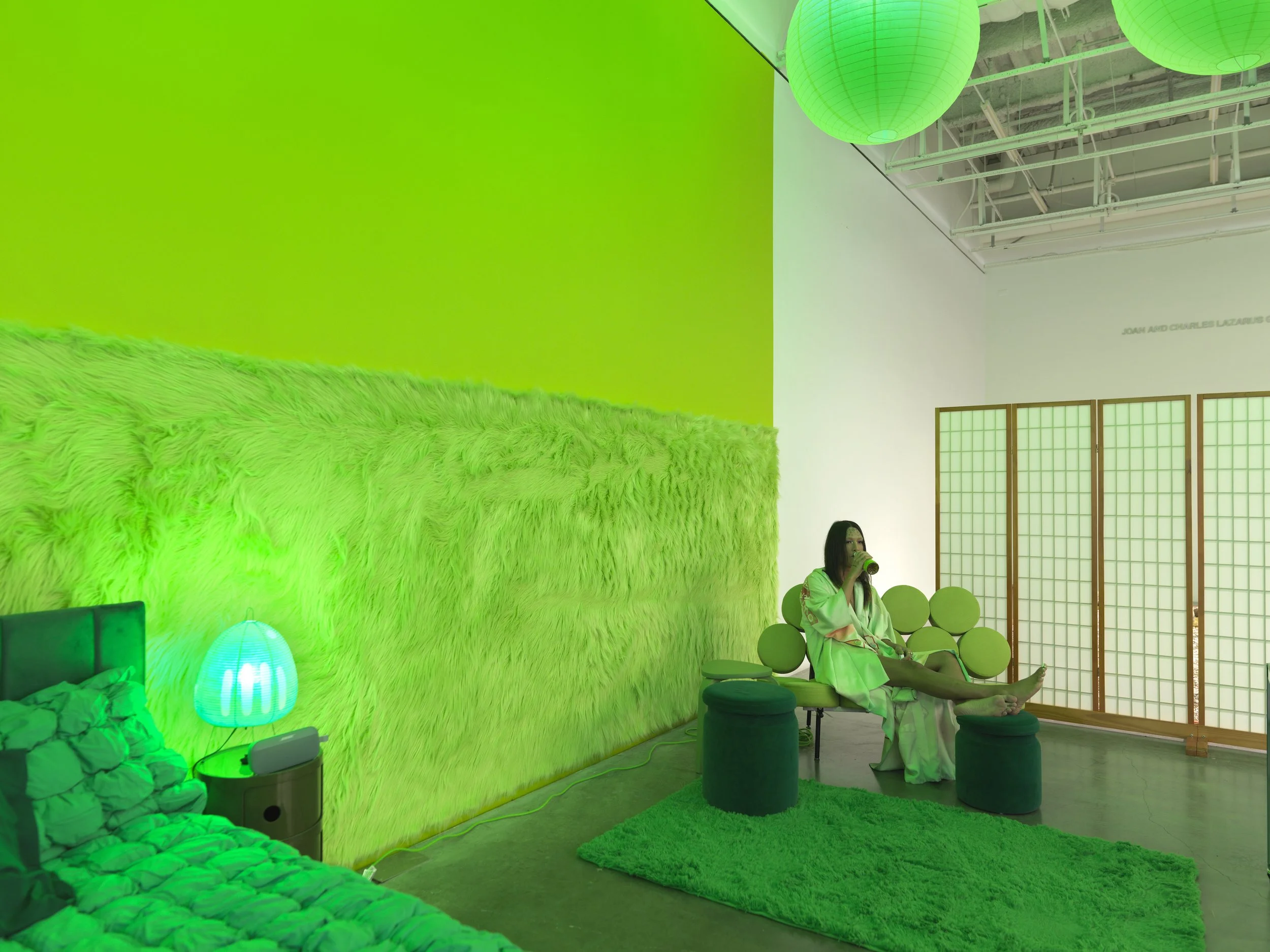
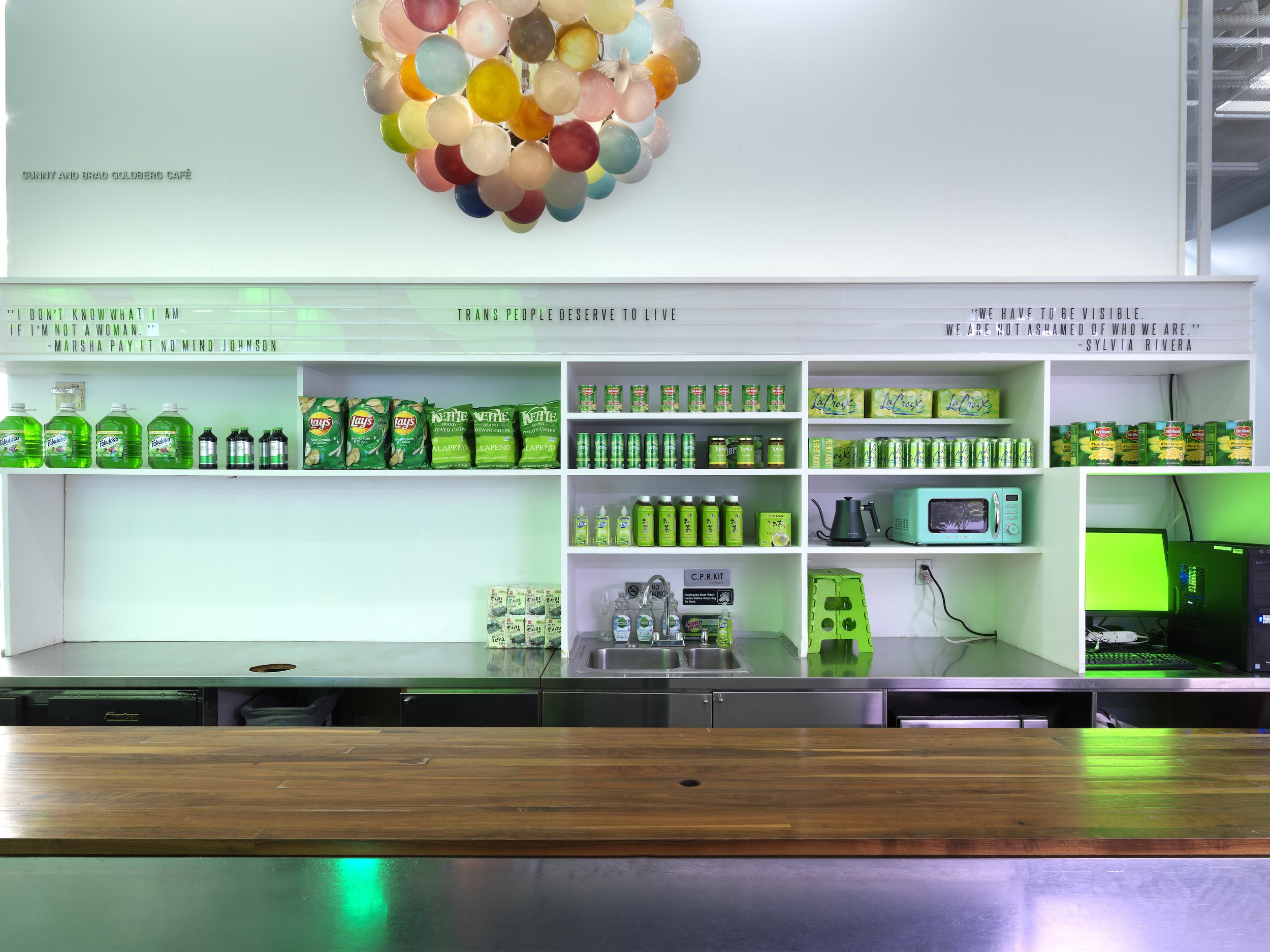
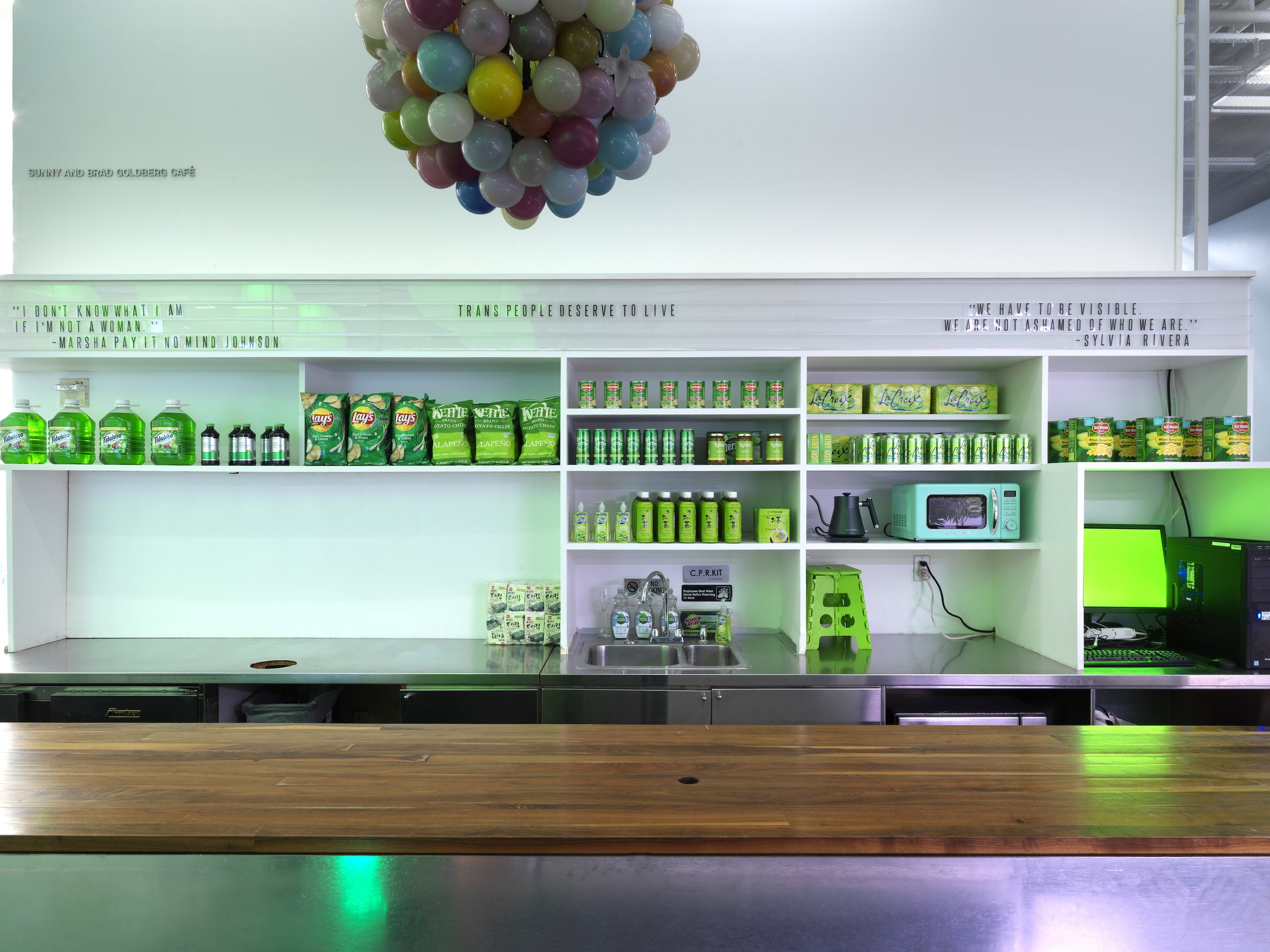
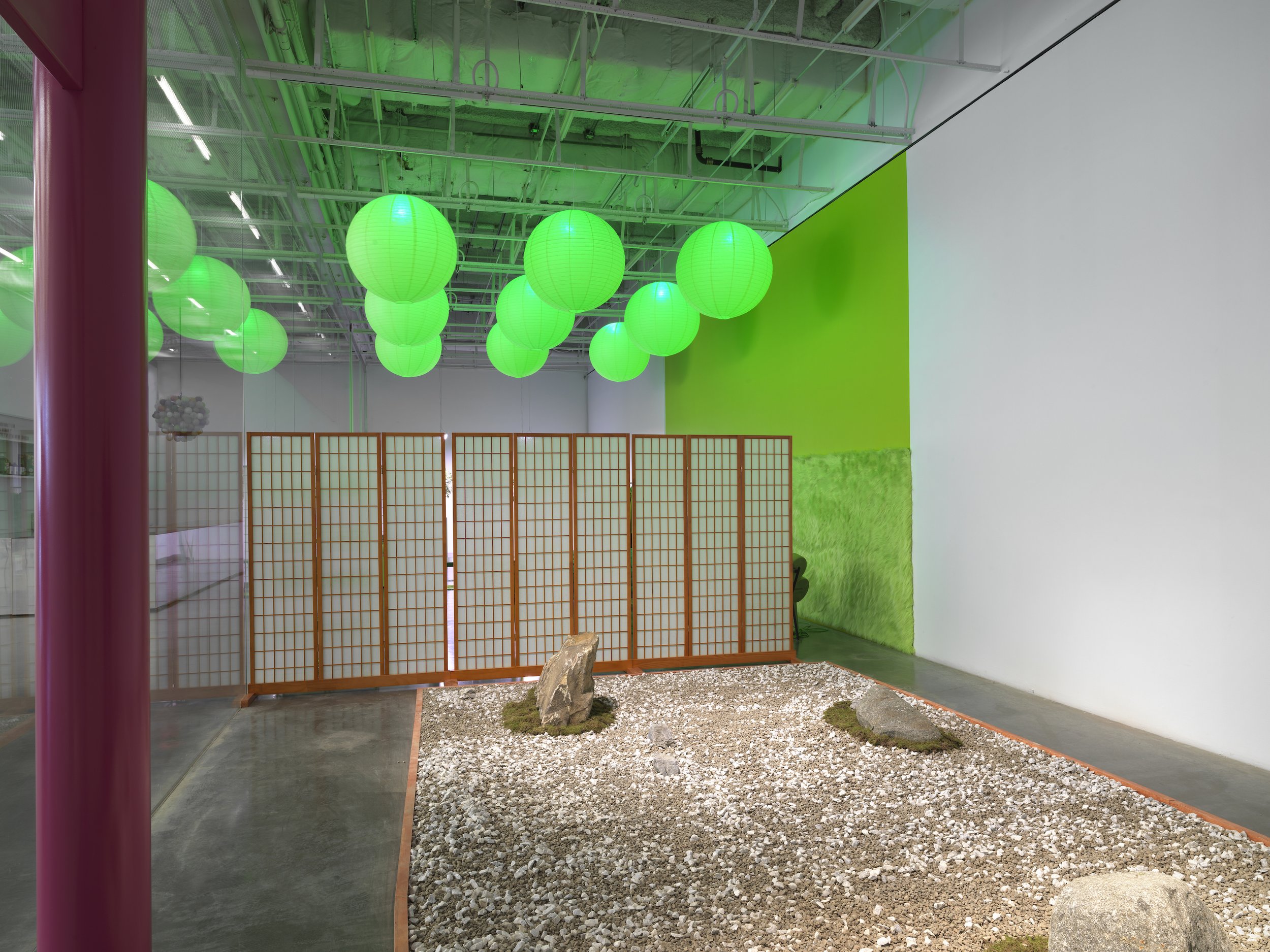
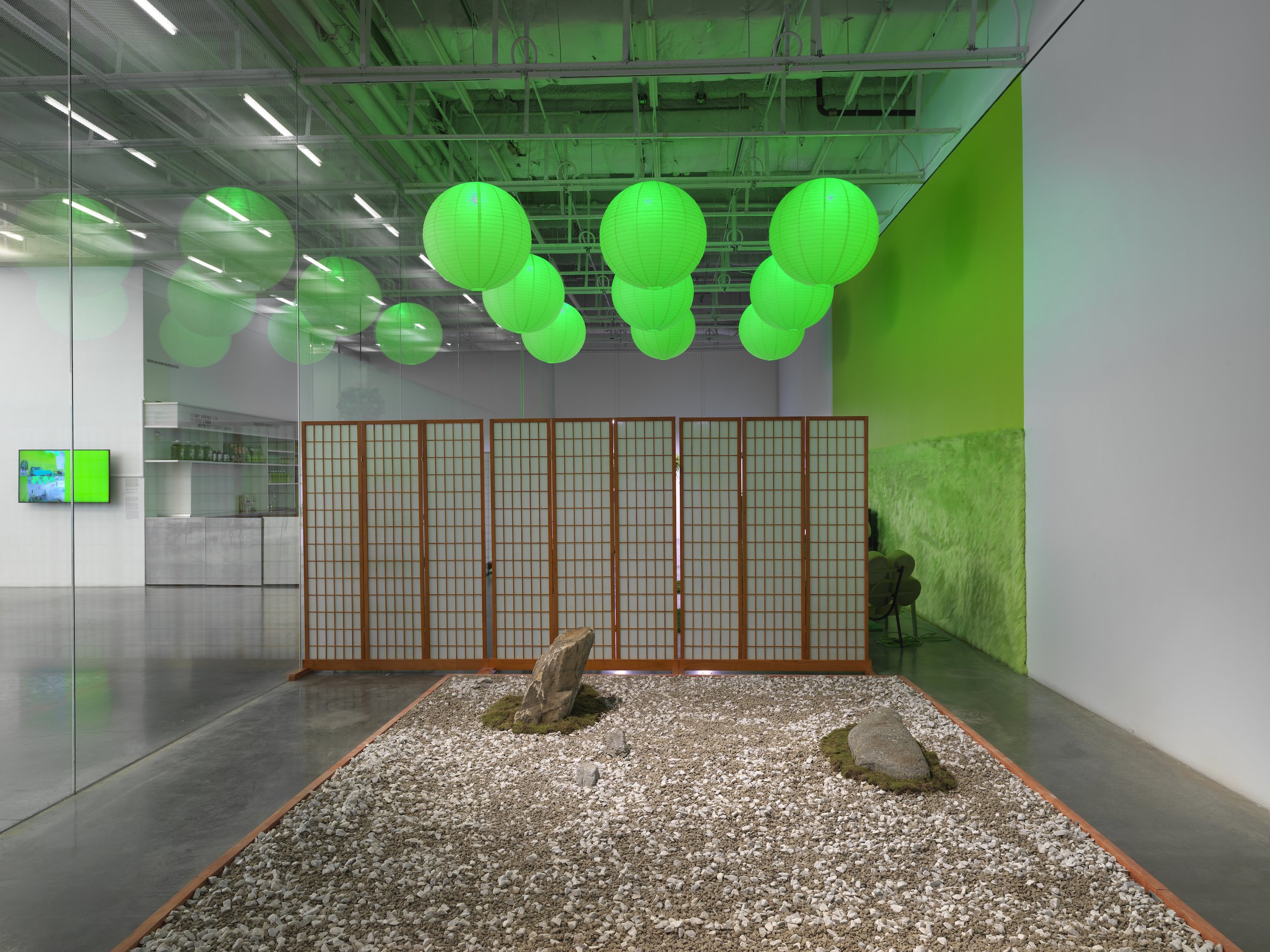

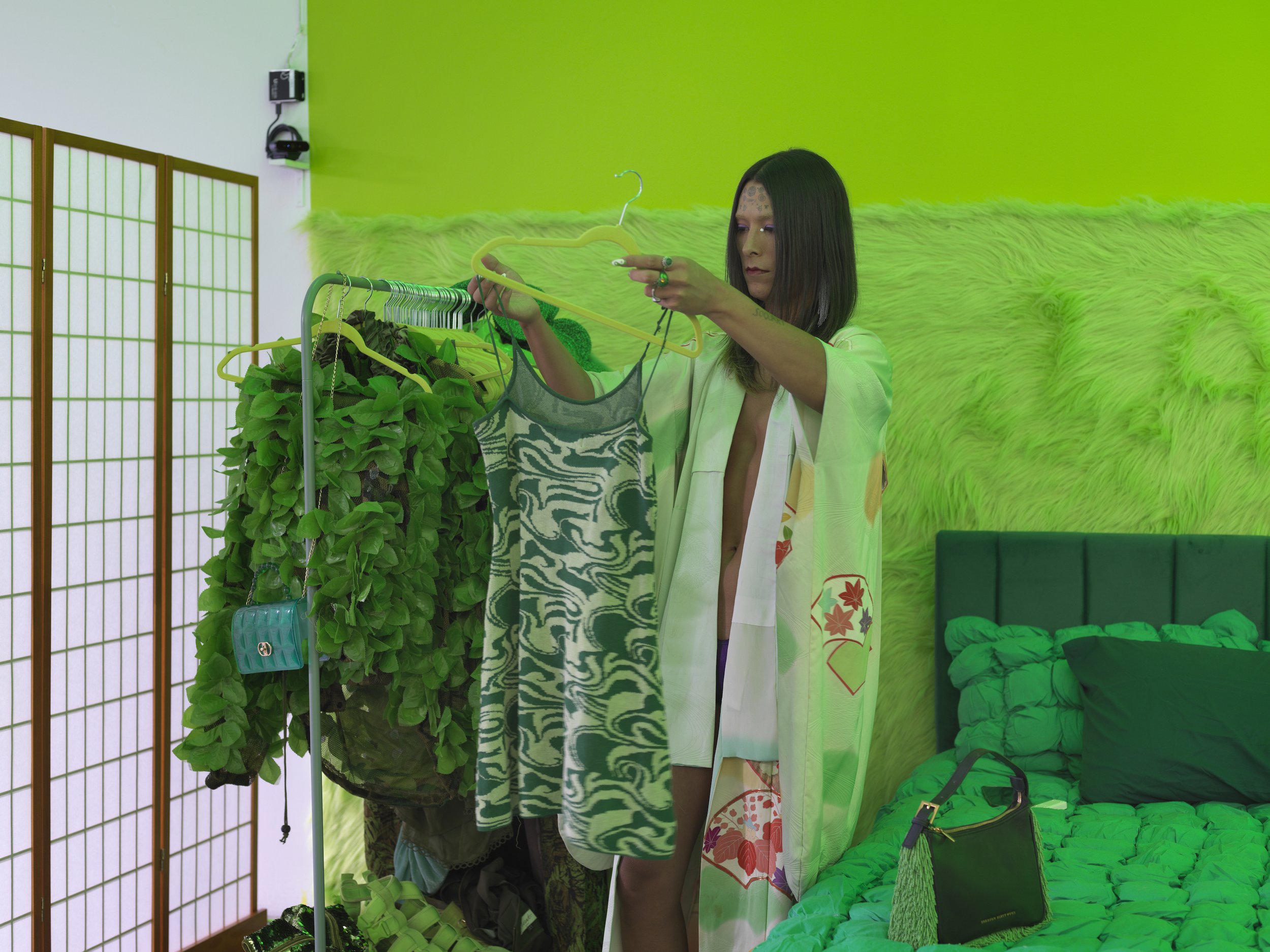
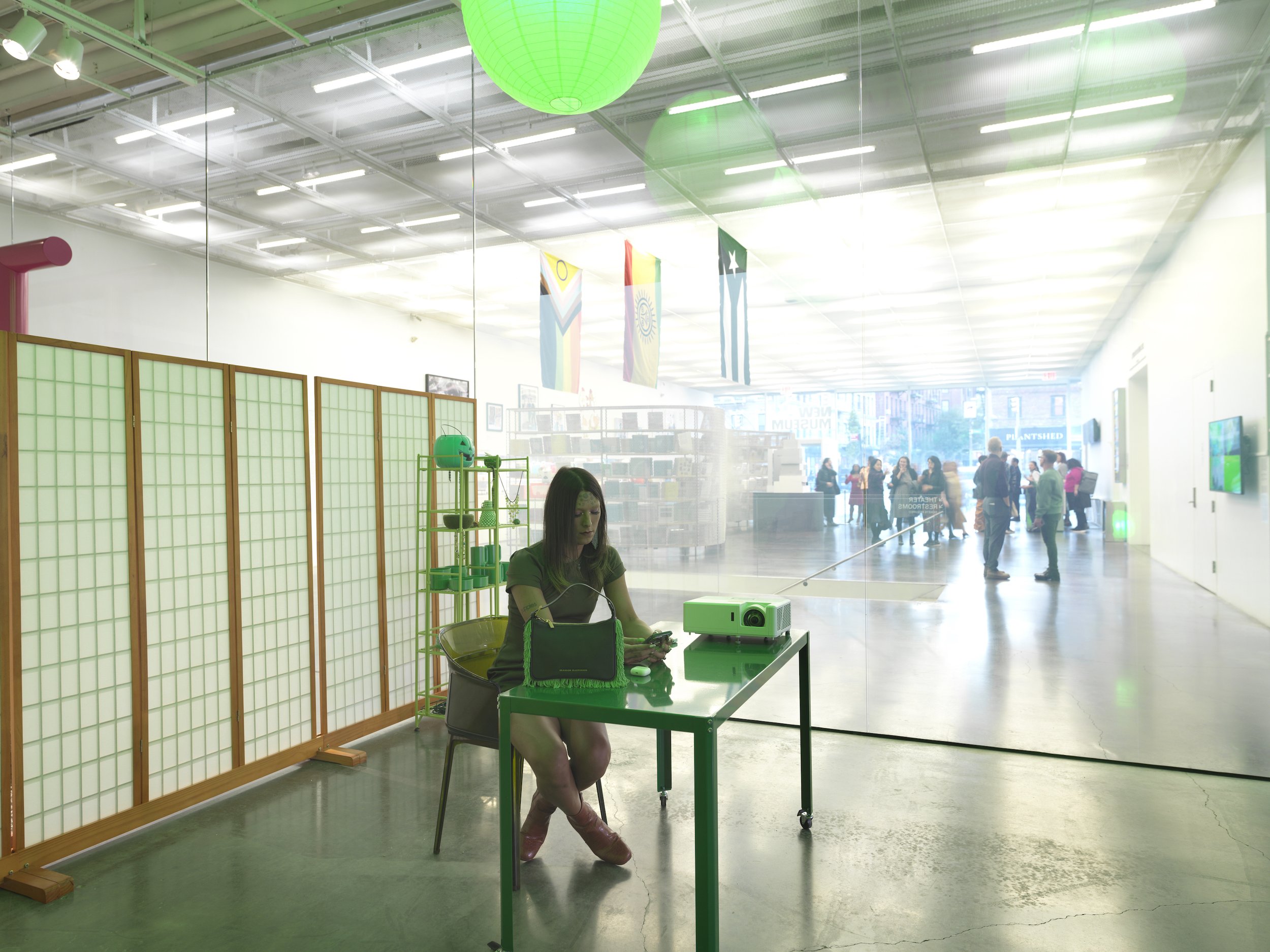
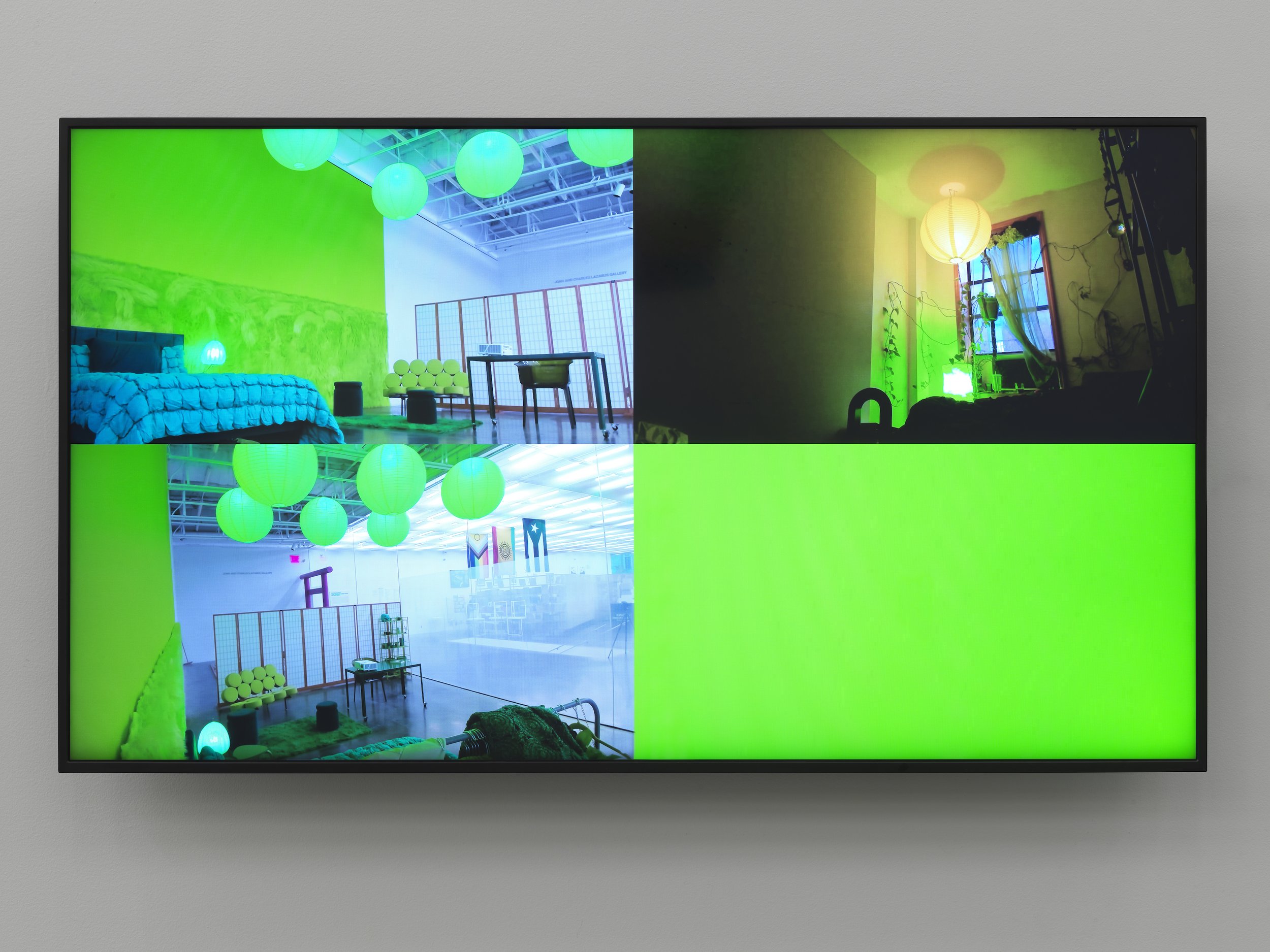
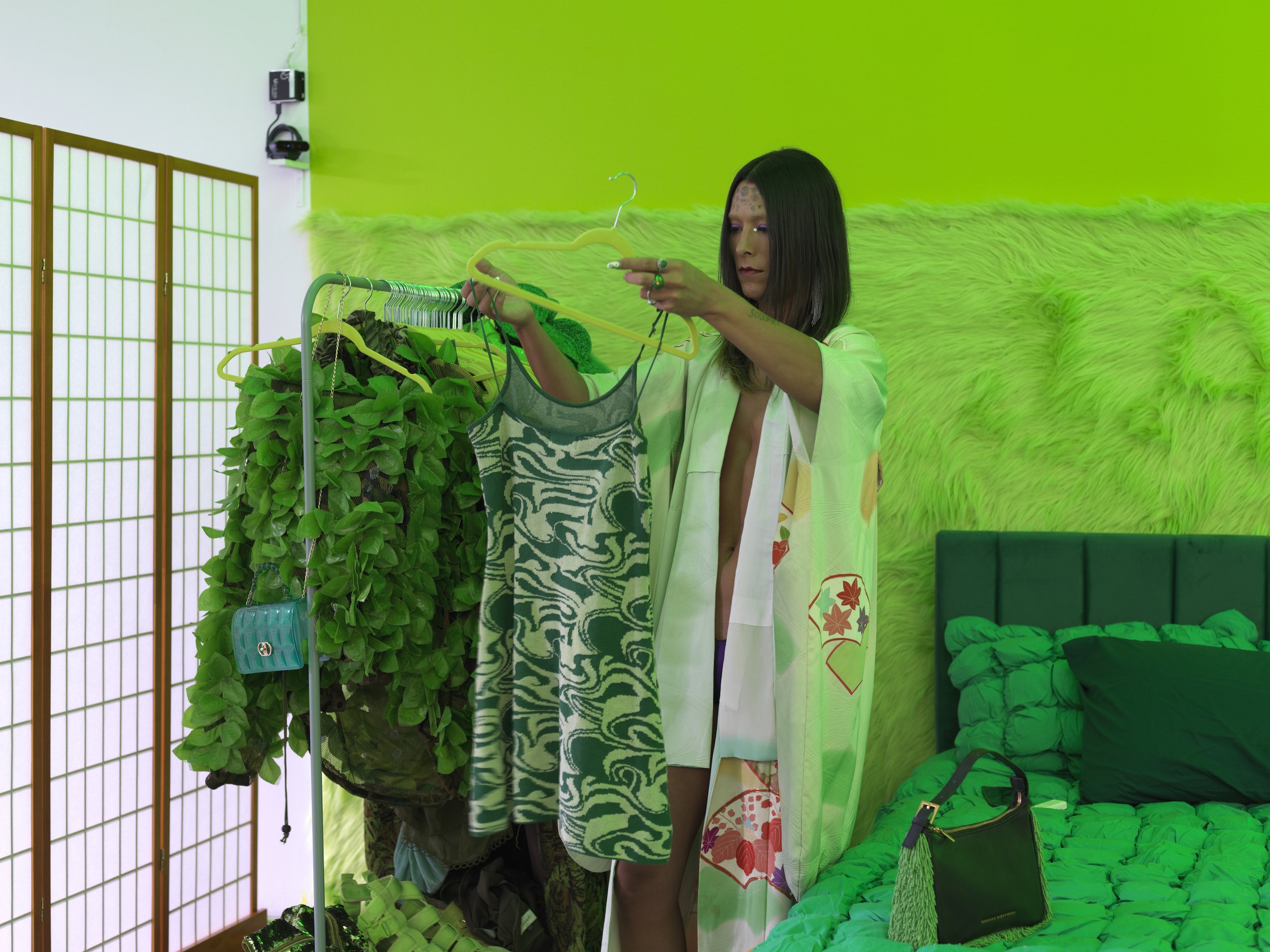
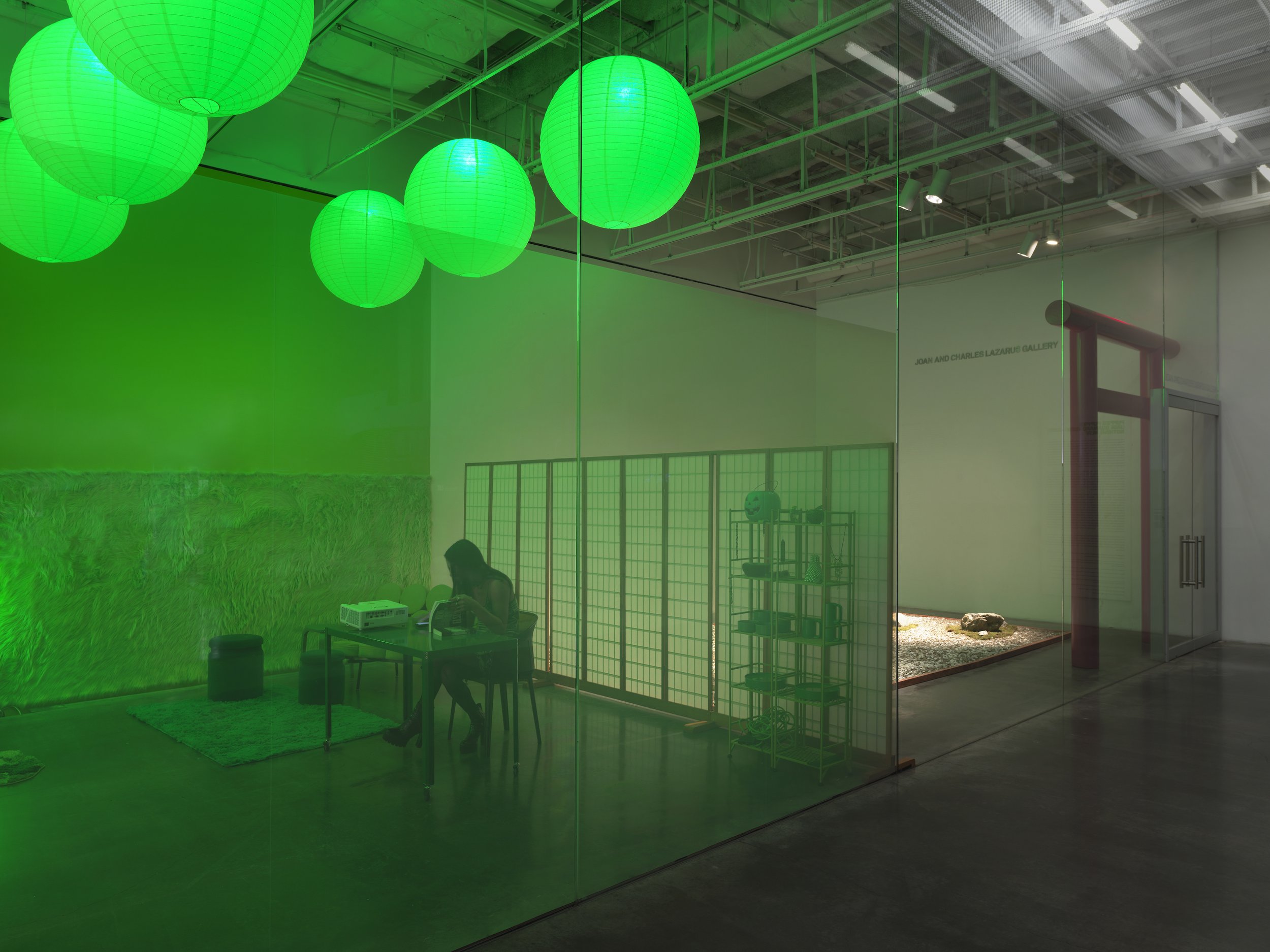
Installation photograph, Puppies Puppies (Jade Guanaro Kuriki-Olivo): Nothing New, The New Museum, October 12, 2023, through March 3, 2024, photo © The New Museum
“Puppies Puppies (Jade Guanaro Kuriki-Olivo): Nothing New” is curated by Vivian Crockett, Curator, with Ian Wallace, Curatorial Assistant.
SUPPORT
Lead support for “Puppies Puppies (Jade Guanaro Kuriki-Olivo): Nothing New” is provided by Christina Hribar.
Support for this exhibition is provided by the Toby Devan Lewis Emerging Artists Exhibitions Fund.
Artist commissions are generously supported by the Neeson / Edlis Artist Commissions Fund.
Generous support is provided by the Fundación Almine y Bernard Ruiz-Picasso para el Arte.
Additional support is provided by the Morton Neumann Family Foundation, Dillon Callie Cohen, R F Jefferies, and Tiffany Zabludowicz.
We gratefully acknowledge the Producers Council of the New Museum.
Special thanks to the Artemis Council of the New Museum.
Thanks to Balice Hertling Galerie, Paris.
*Please note, the full exhibition title for the Kunsthaus Glarus exhibition is as follows: I’m Jade. I’m a trans woman trans womxn trans femme two spirit human being. Life feels long even though it hasn’t been all that long. A brain tumor surgically removed, getting divorced, losing my dad, brain tumor resurgence scare, starting hormone replacement therapy, experiencing sexual assault and rape multiple times and coming out as a woman. This exhibition is a roller coaster of the emotions feelings but also thoughts connections that happened over this span of time... only a little more than a decade. This exhibition covers the span of Puppies Puppies to Jade. It’s hard to get up each morning. My heart aches but I’m happy to be a woman. I’ll try my best to enjoy life even though society makes it difficult. From dust to dust I am but a speck on this planet and I wonder how to use this short life of mine. Trying not to let my trauma take over but still be kind to yourself Jade. This is the end of a decade • a new way of working coming soon. Sincerely, Jade Kuriki Olivo
For more information about this exhibition and others, please visit the New Museum website for updates. The New Museum can also be found on Instagram.
Bronx Calling: The Sixth AIM Biennial
Installation photograph, Bronx Calling: The Sixth AIM Biennial, The Bronx Museum of the Arts, Jan 26 - Mar 31, 2024, photo © The Bronx Museum of the Arts
The Bronx Museum is pleased to announce Bronx Calling: The Sixth AIM Biennial, featuring 53 artists who explore issues related to race, gender, class, sexual orientation, age, ethnicity, religion, and nationality as a means of contending with colonial histories and imagining speculative futures. Of African, Asian, Latin, Middle Eastern, Caribbean, European, and Australian descent from over 20 countries, the artists each draw on their lived experiences and cultural identities to critique systems of power.
Due to the pandemic, the Biennial for the 2020 and 2021 AIM fellows was postponed, such that this two-part exhibition will showcase more cohorts than ever in a single Biennial. Bronx Calling will take place in two parts throughout the first half of 2024 in the North Wing as the Museum’s South Wing remains closed for renovation.
The first exhibition will present 26 artists including Chris Cook, Kim Dacres, Luis Gutierrez, Maya Jeffereis, and Yelaine Rodriguez from January 26 to March 31, 2024, and be followed from April 12 to June 16, 2024 with a second exhibition featuring 27 artists, including Priscilla Aleman, Sarah Friedland, Daniel Giordano, Woomin Kim, Sagarika Sundaram, and A Young Yu.
Curated by Eileen Jeng Lynch, Director of Curatorial Programs, Bronx Calling celebrates the work of artists from the 2020, 2021, 2022, and 2023 cohorts of the Museum’s Artists in the Marketplace (AIM) Fellowship, which, since 1980, has supported New York’s artist community through this flagship artist development program that provides emerging artists with career management resources, helping them navigate the professional practices of the art world.
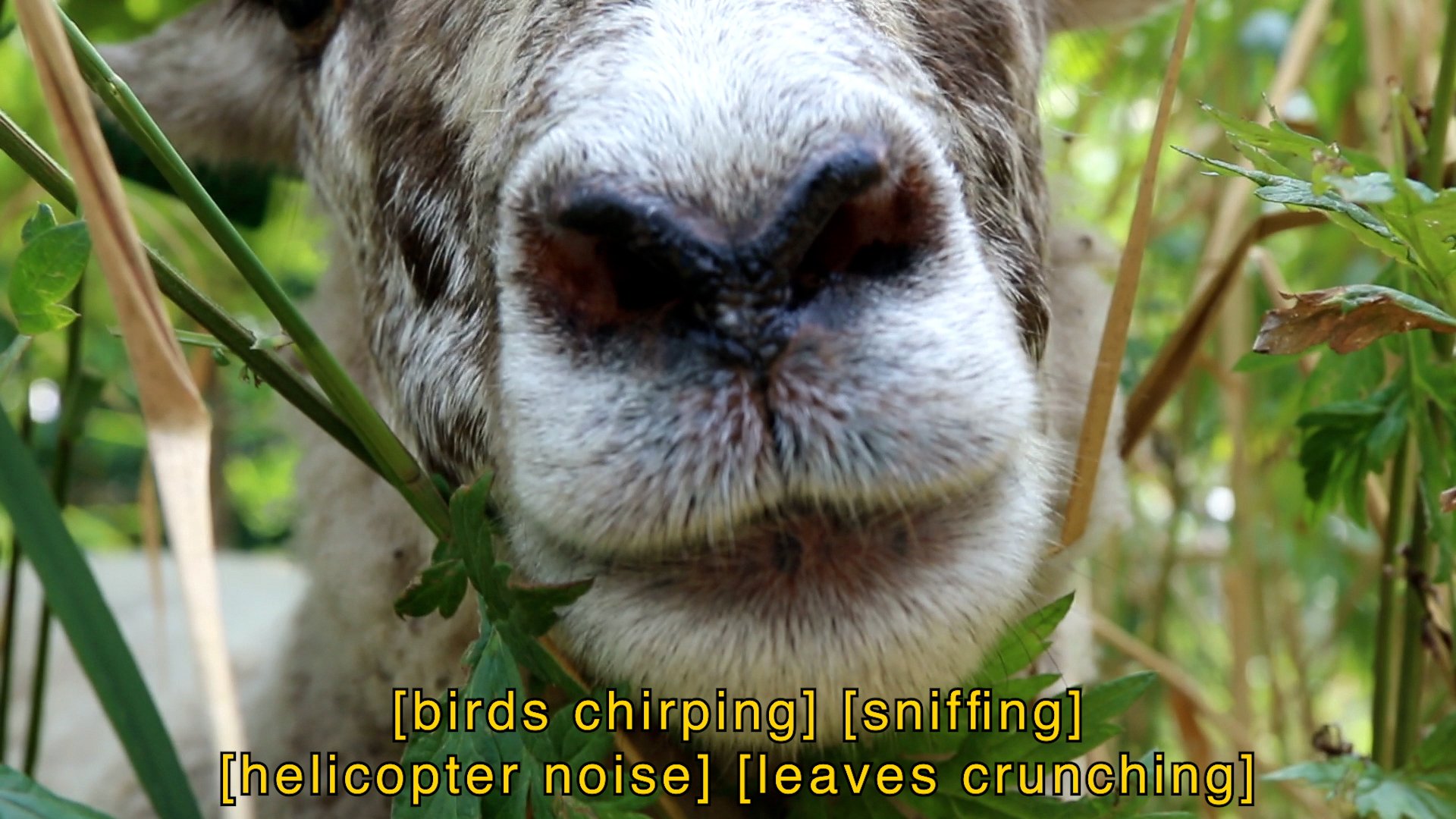
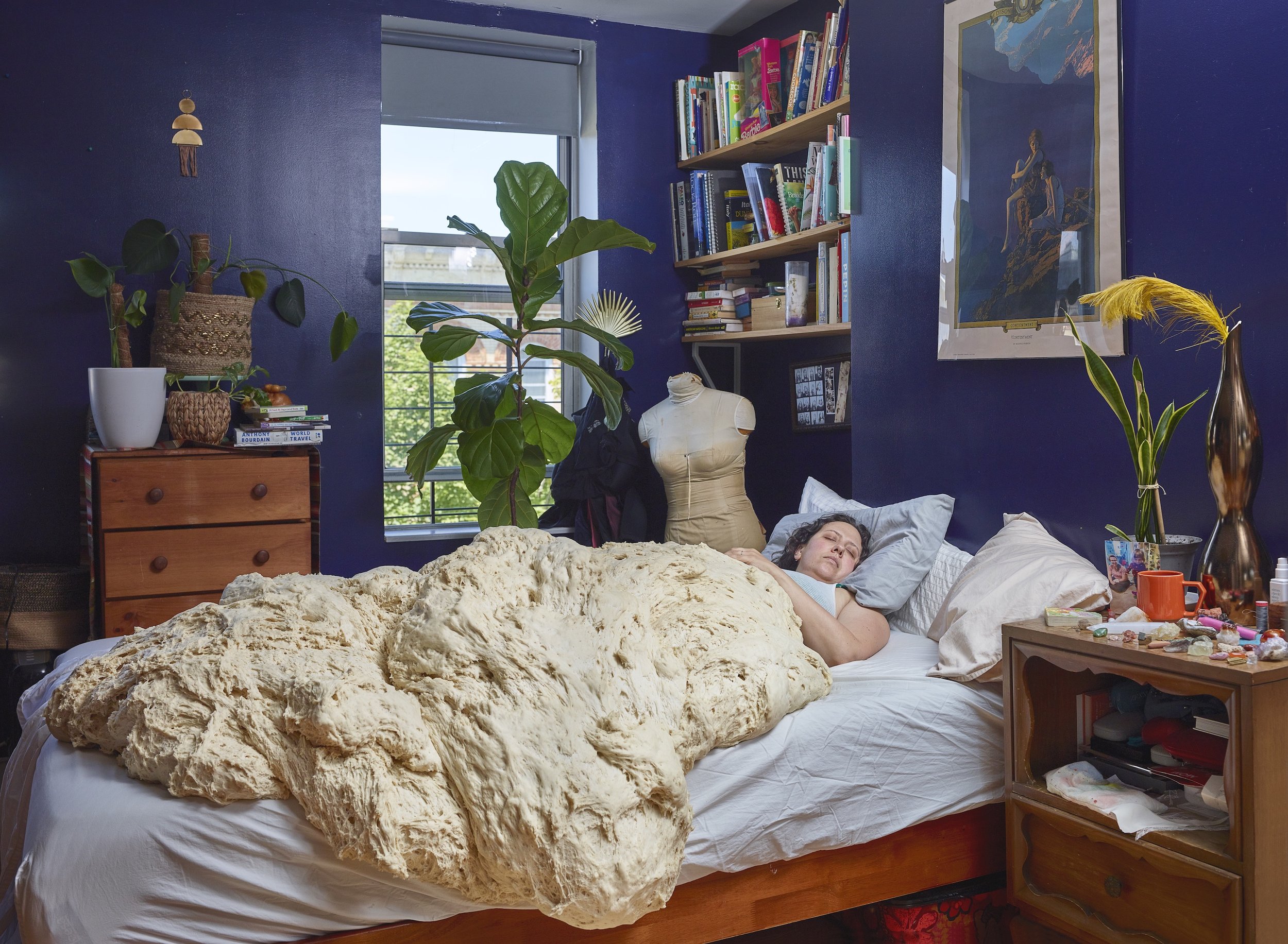

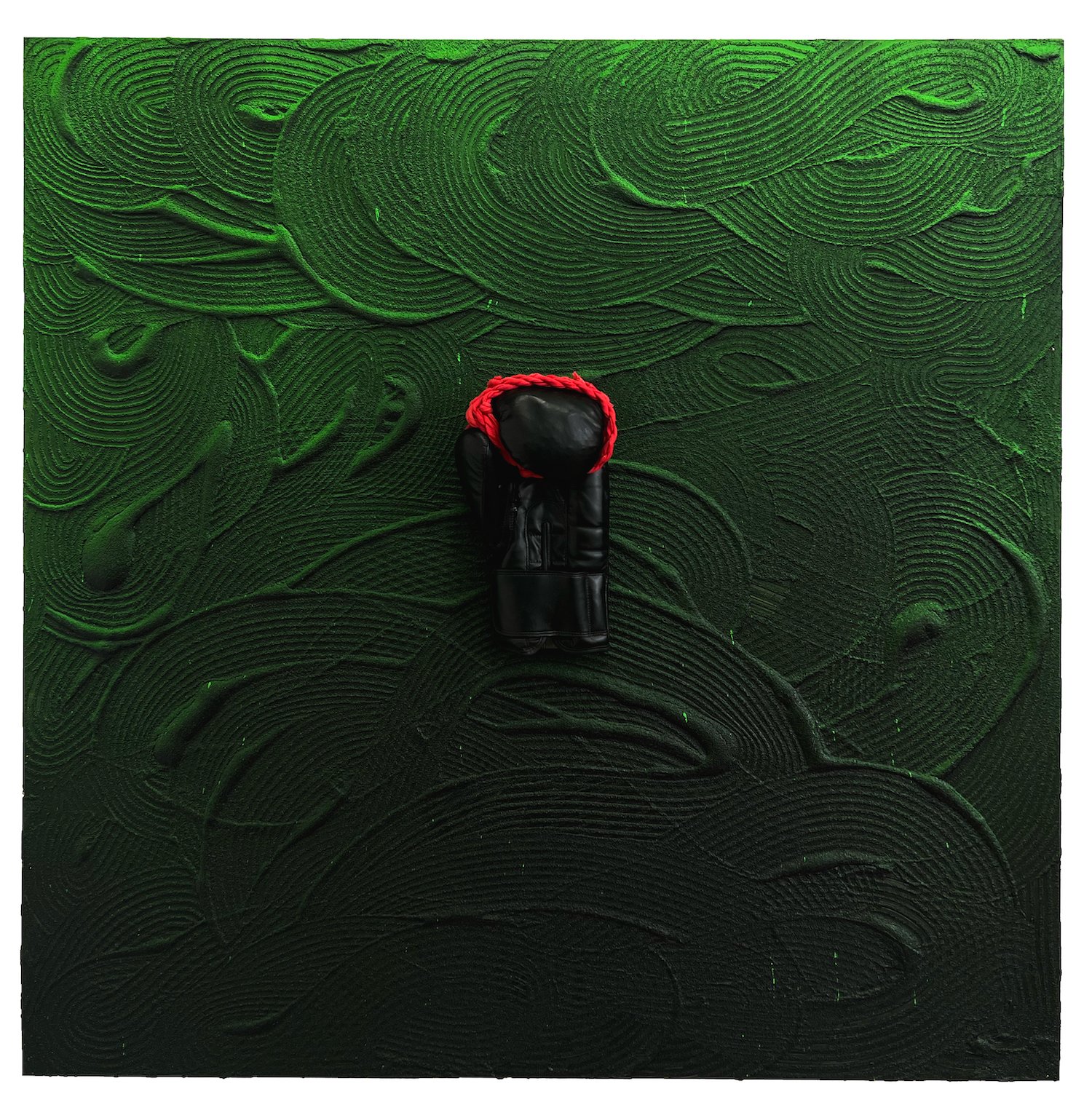
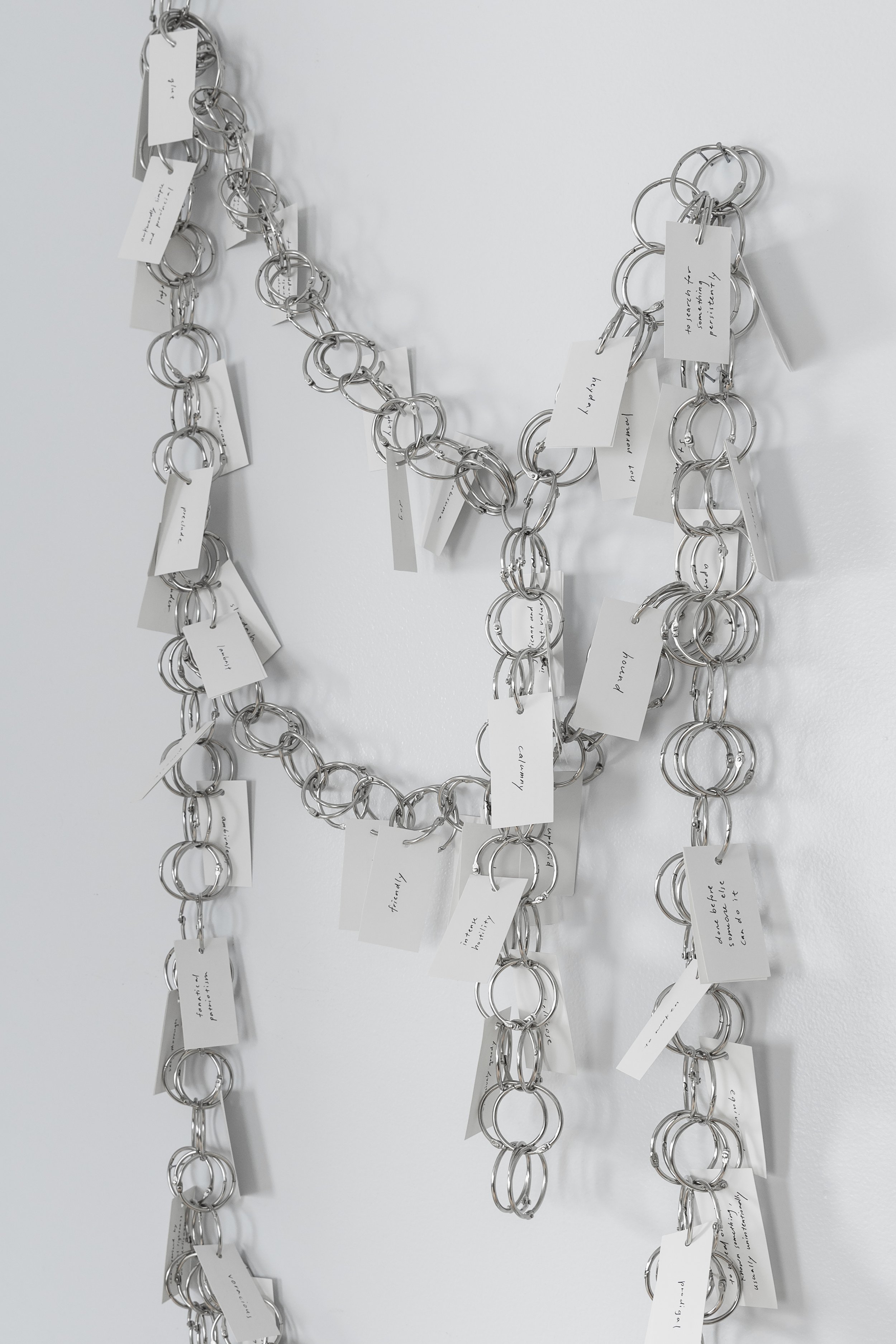

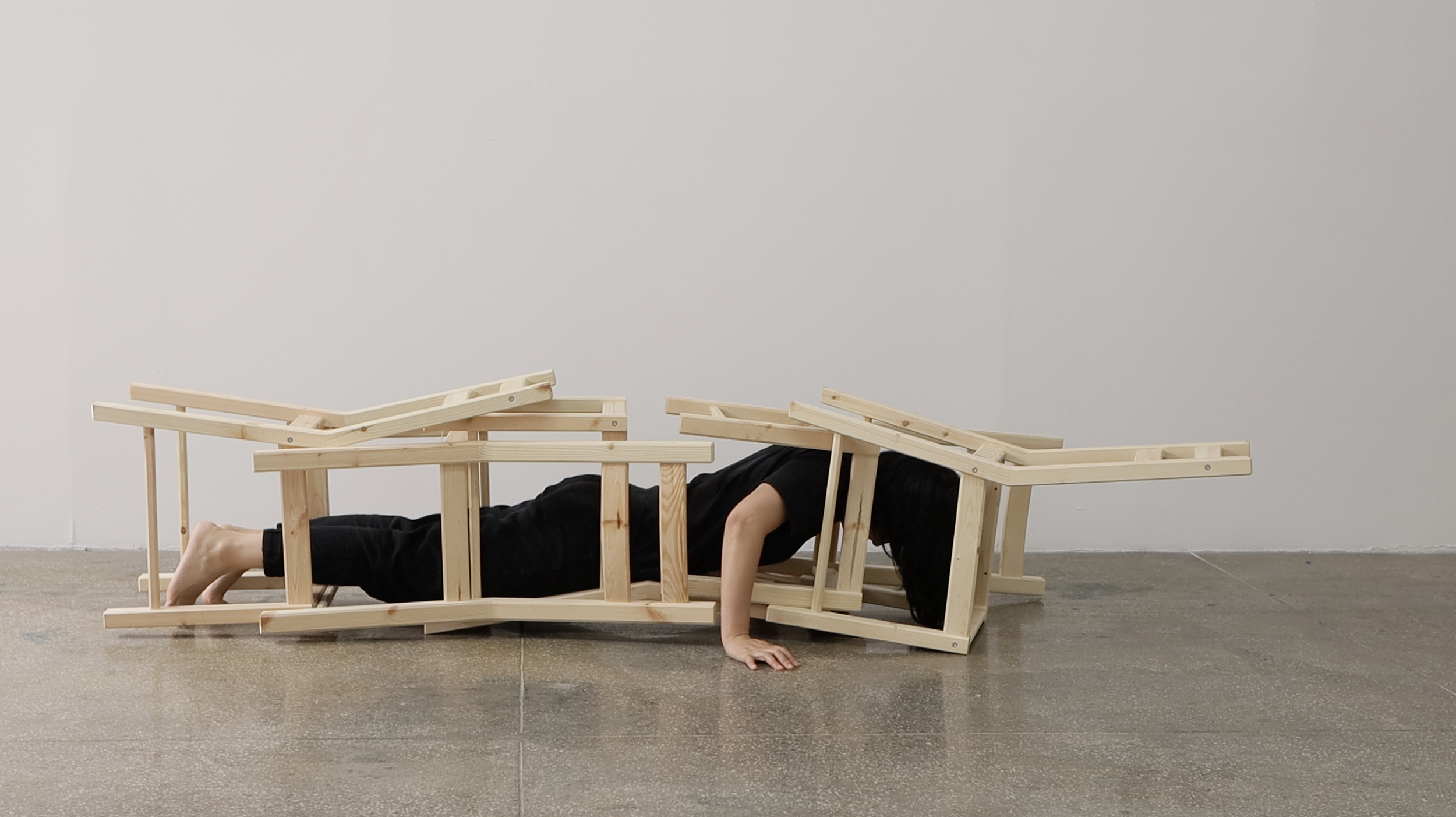
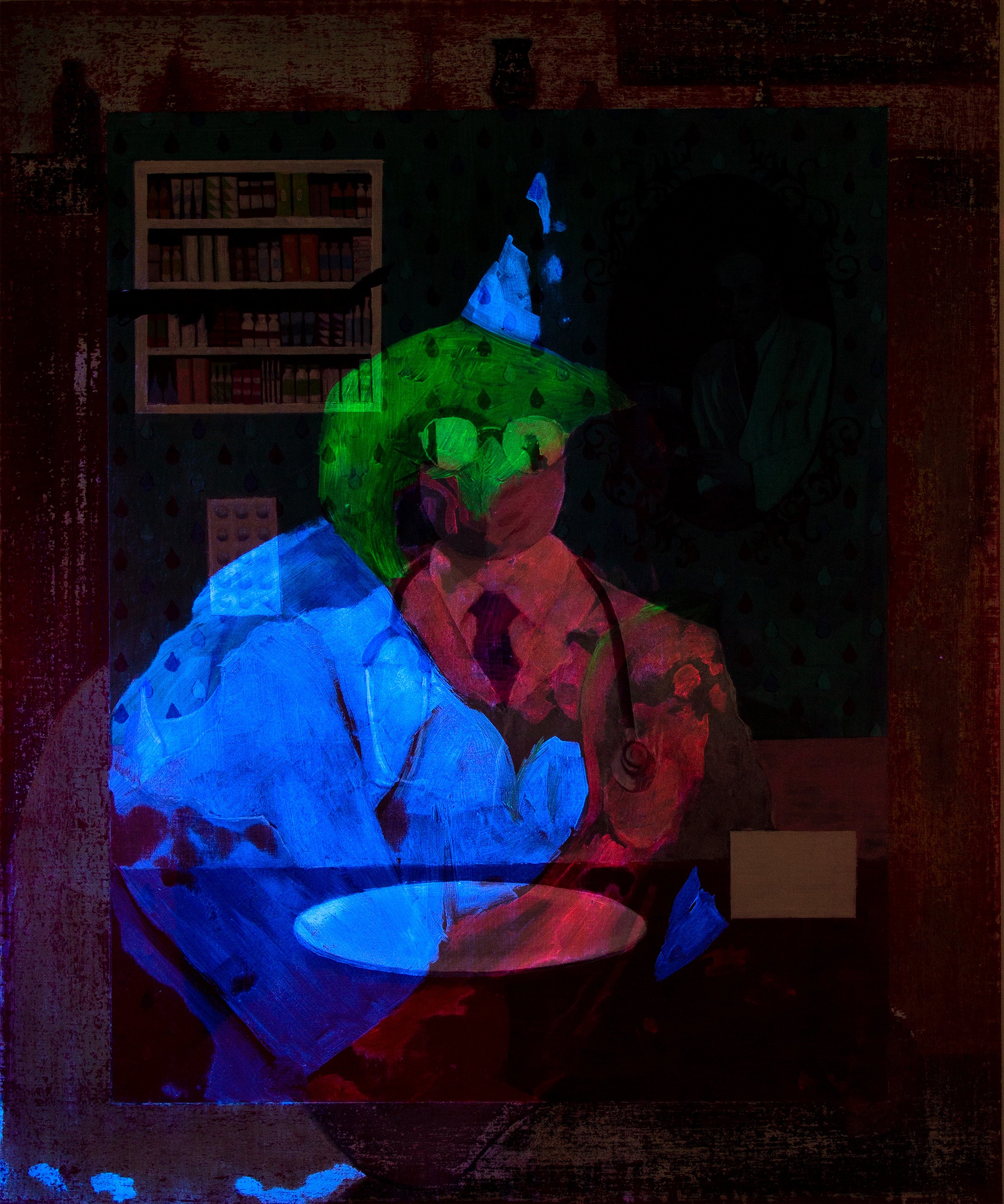
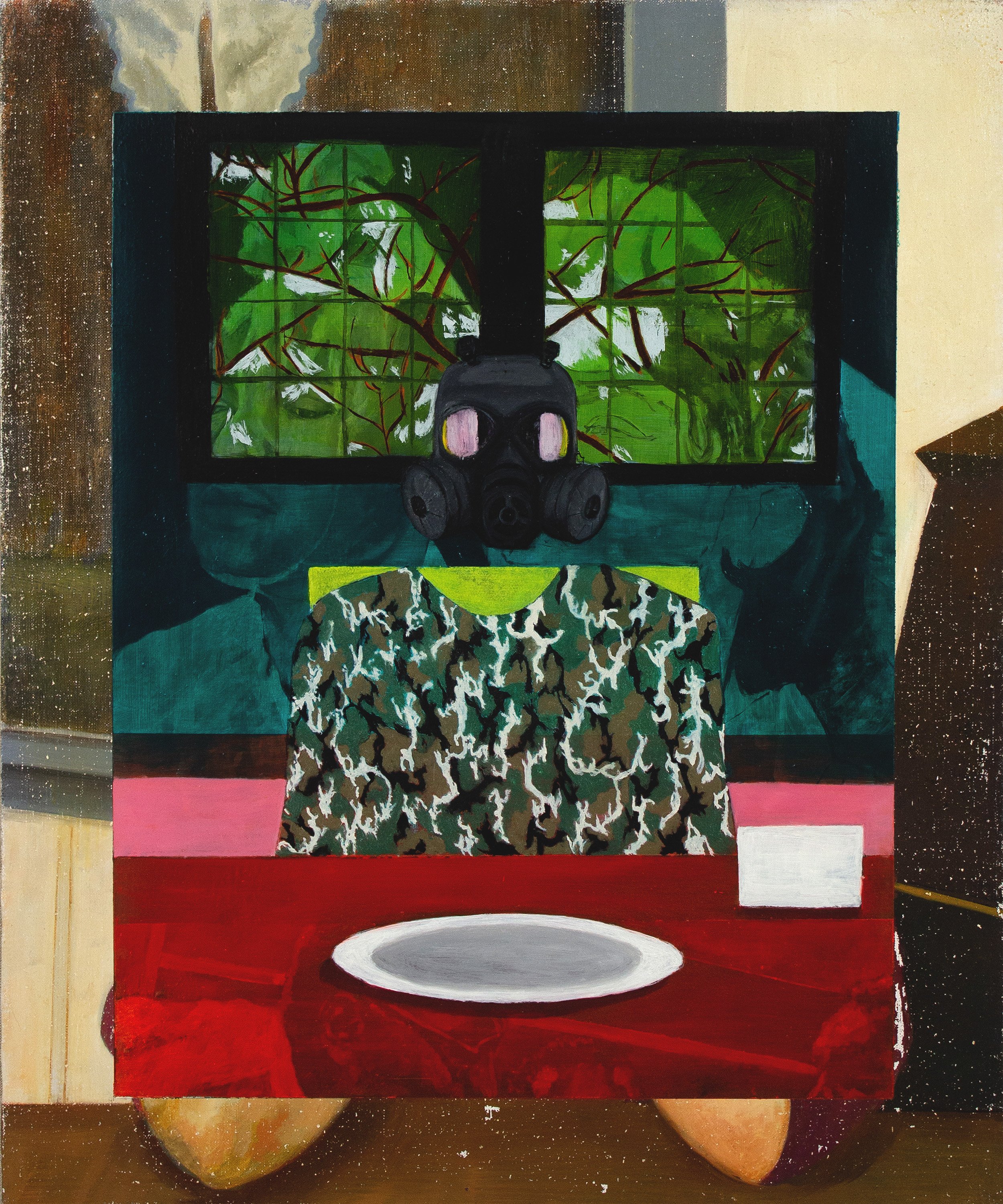
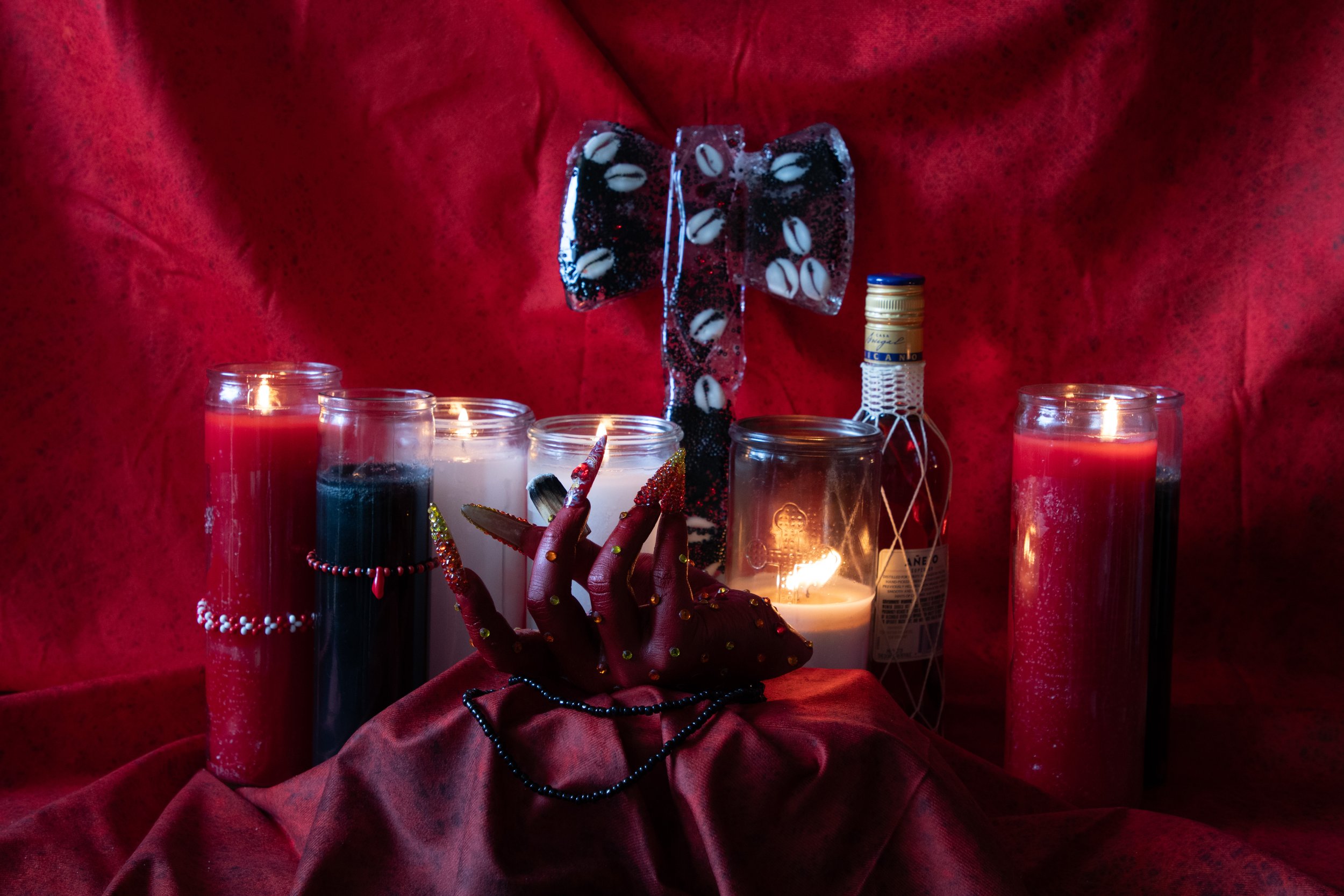
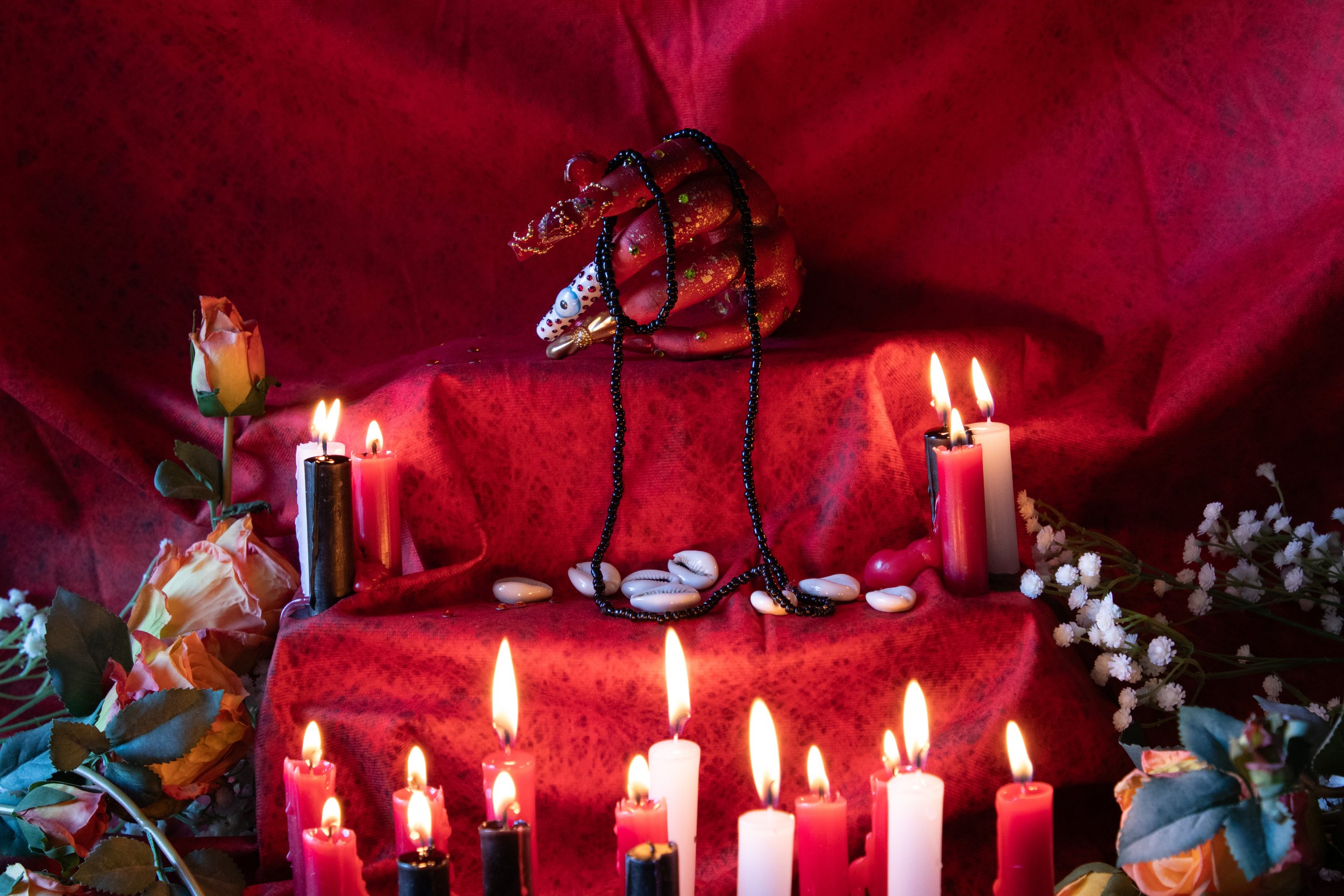
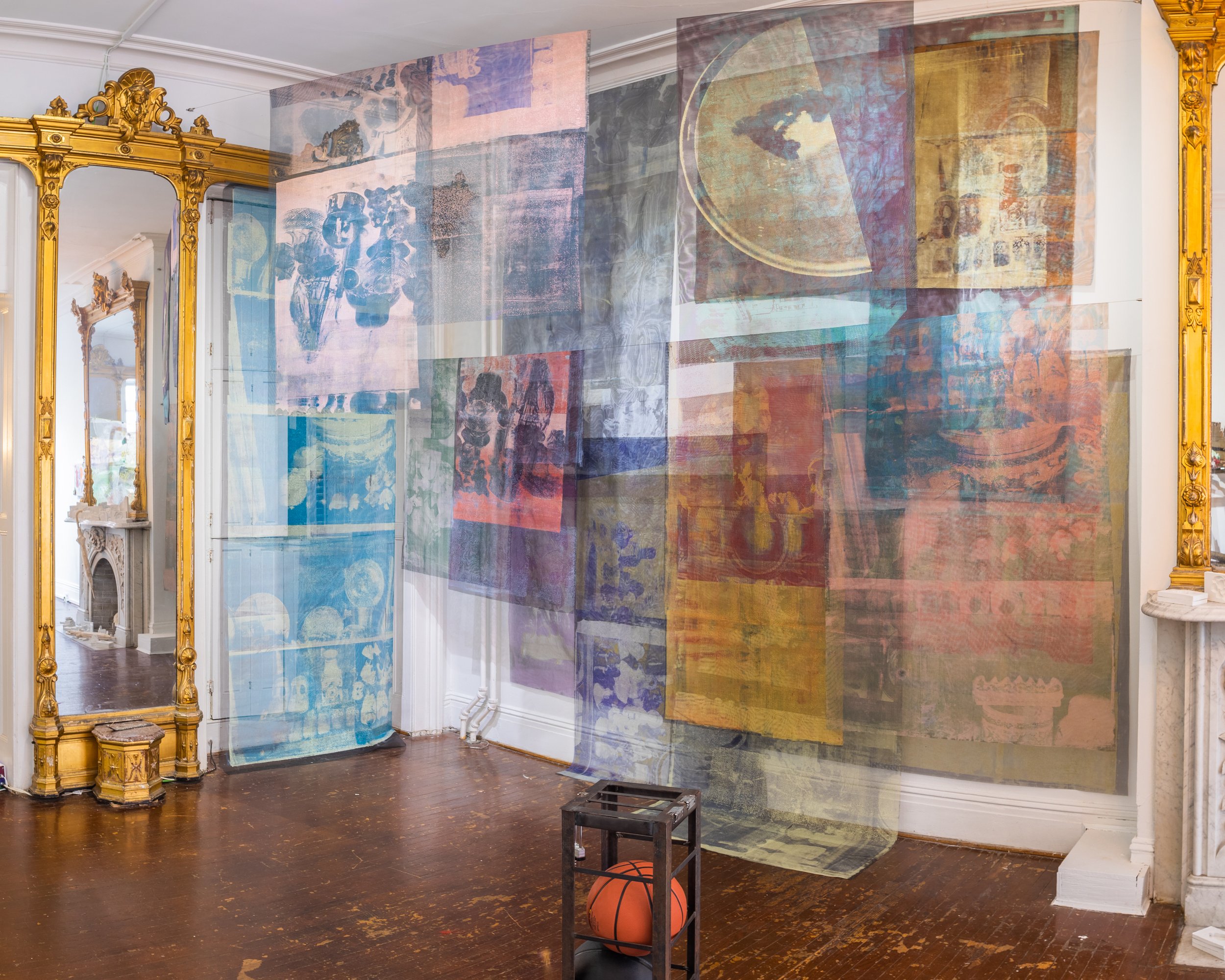

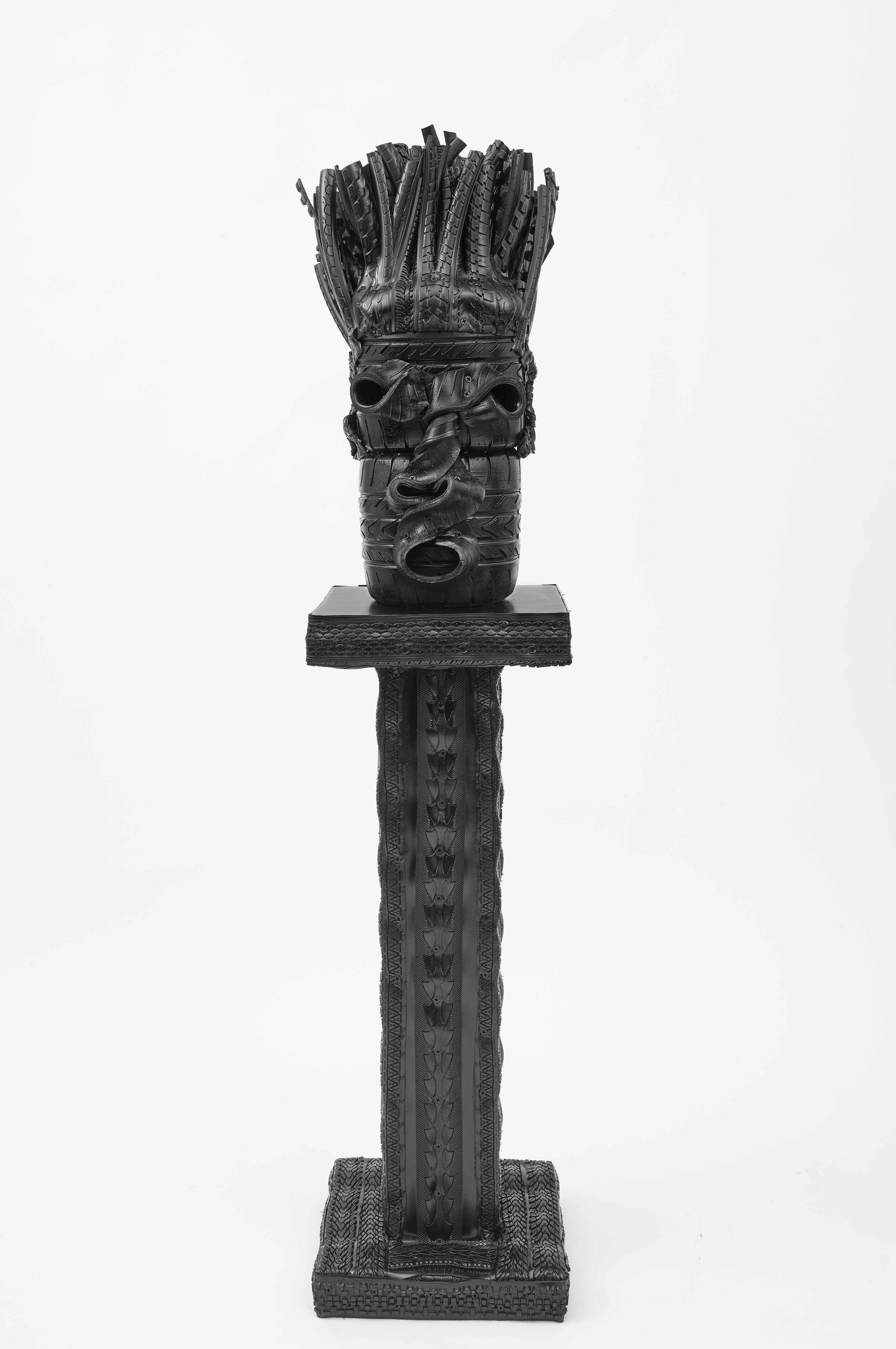
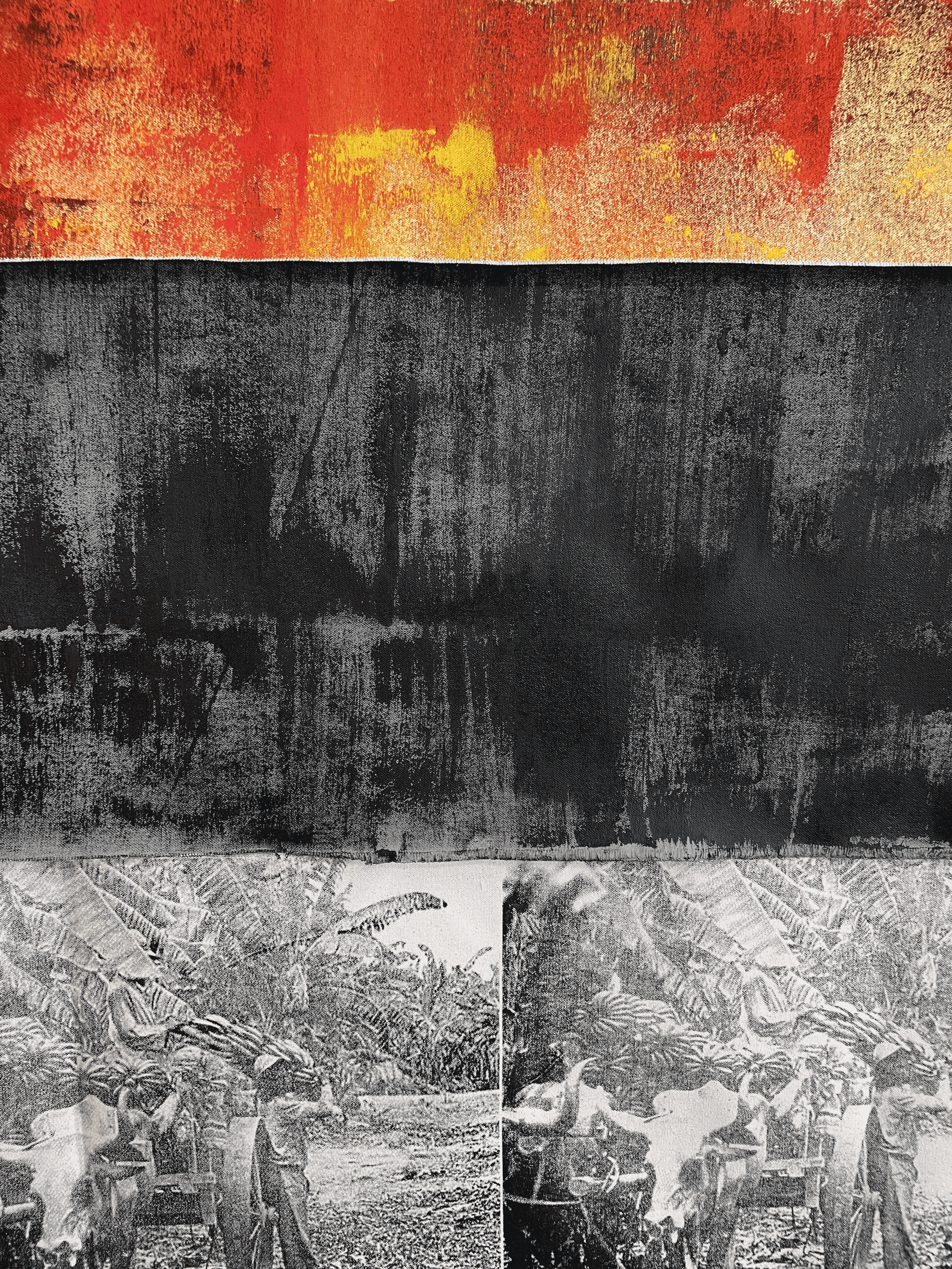
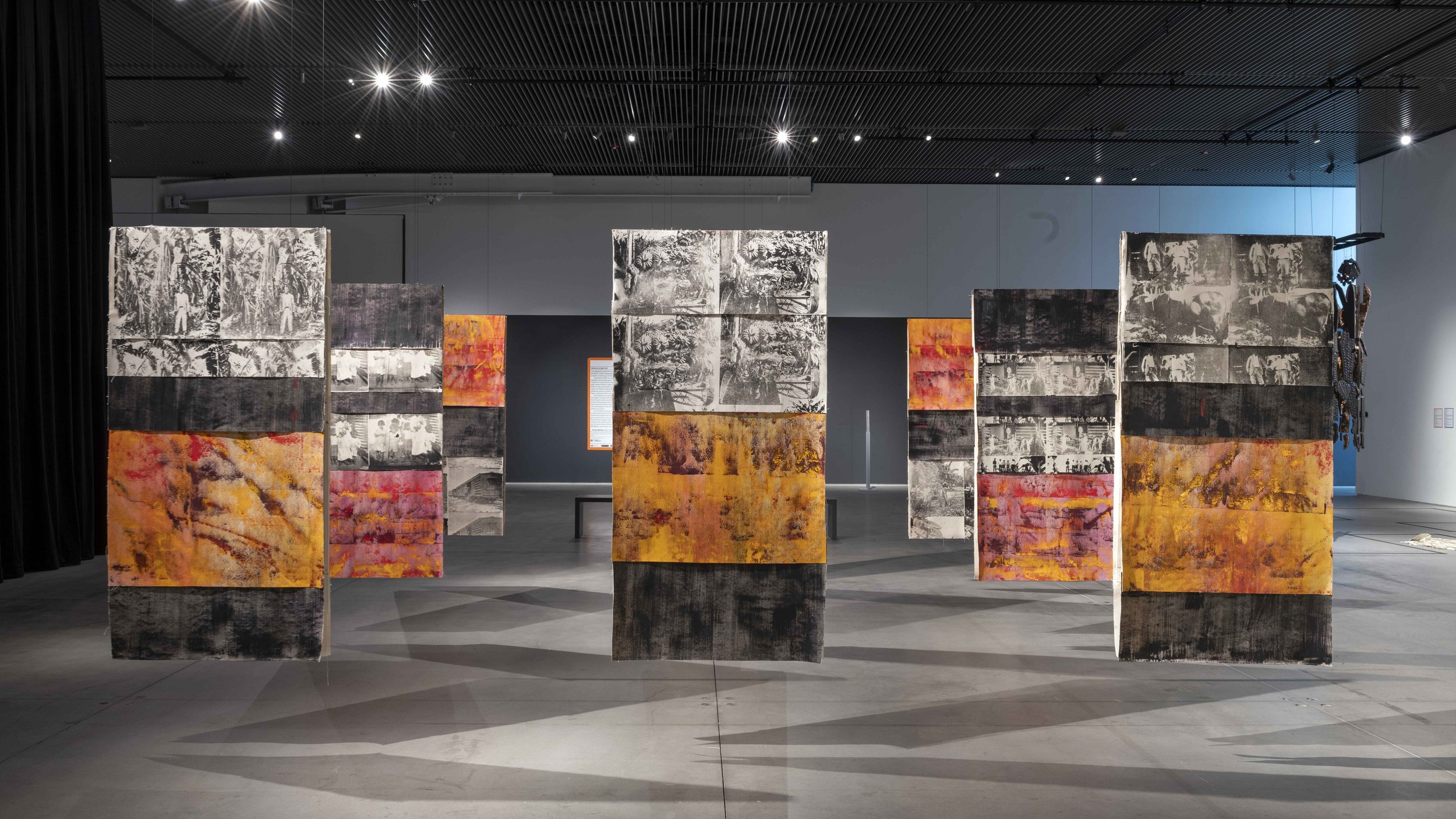
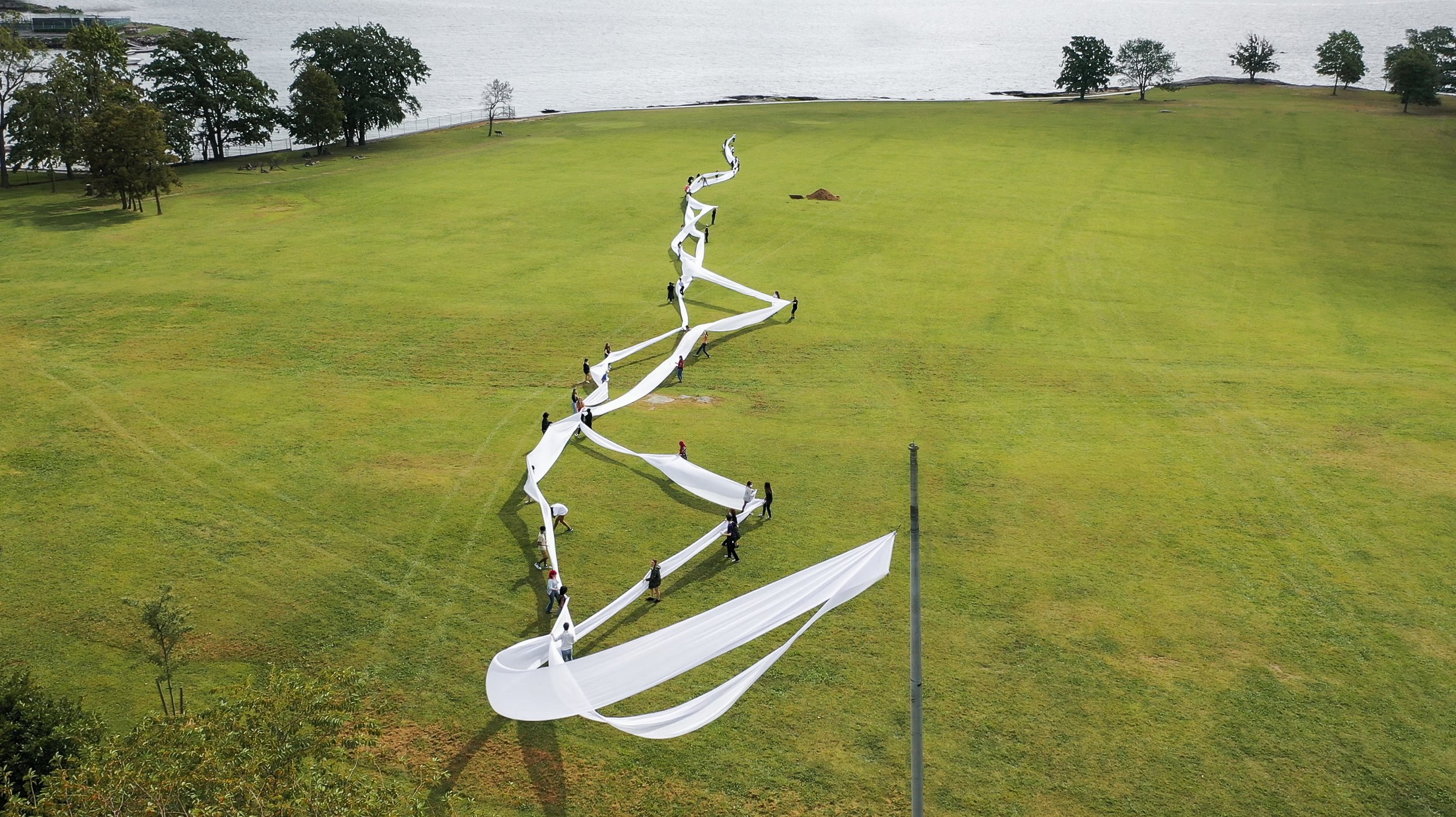
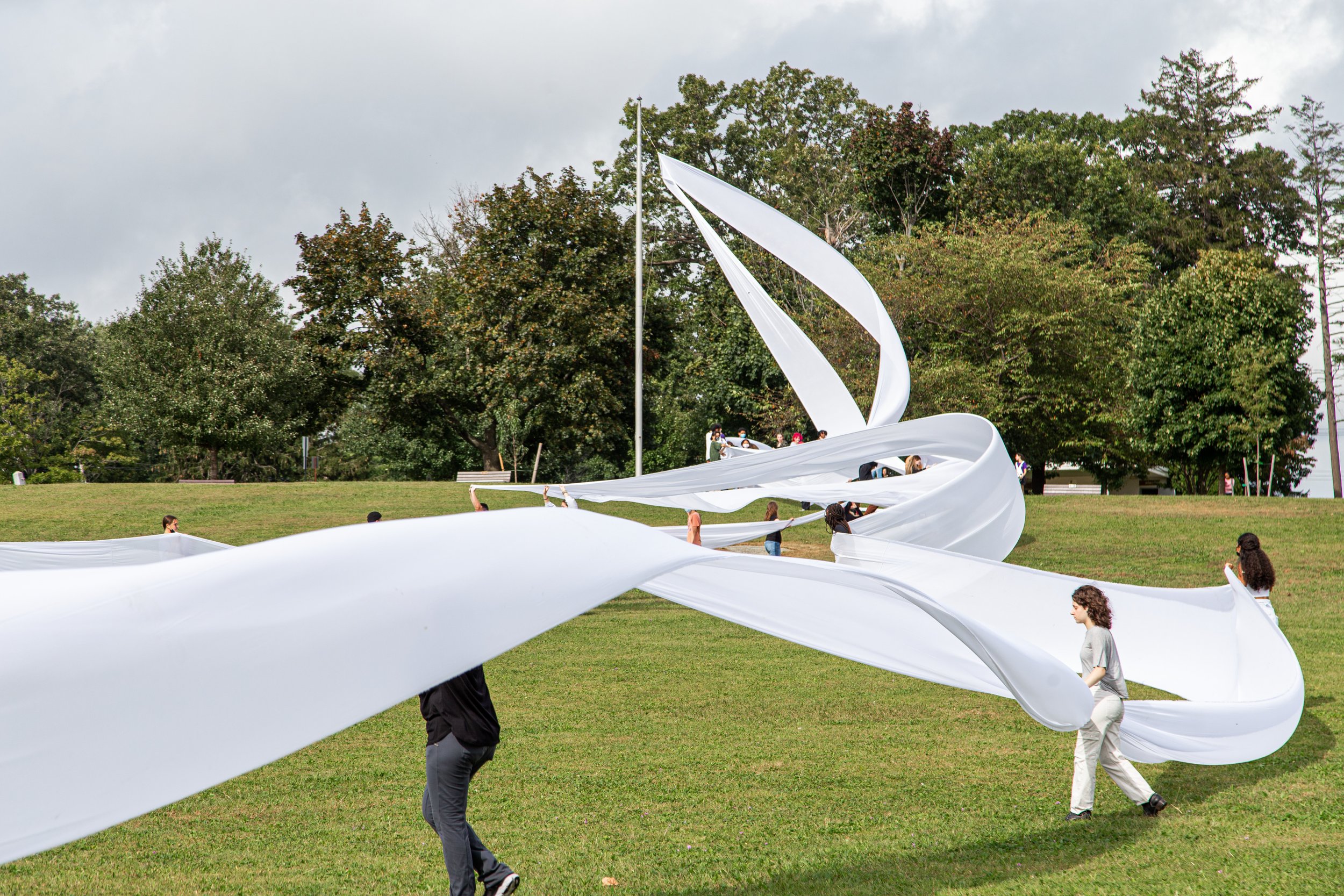
photo © The Bronx Museum of the Arts
PART ONE: Centering contemporary and critical issues drawn from the artists’ lived and embodied experiences, the 26 artists explore cultural heritage, examine labor issues, and highlight the impact of colonial histories on personal and collective identities through varied means and media. Featured artists are: Syd Abady, Aika Akhmetova, Santina Amato, Miguel Braceli, Chris Cook, Walter Cruz, Kim Dacres, Saba Farhoudnia, Ronen Gamil, Judy Giera, Luis Gutierrez, Jennifer Chia-ling Ho, Peter Hoffmeister, Maya Jeffereis, E. Lombardo, Dario Mohr, Joshua Nierodzinski, Jiwon Rhie, Ruth Rodriguez, Yelaine Rodriguez, Ami Park, Fred Schmidt-Arenales, Yesuk Seo, Kyle Utter, Misra Walker, and Junlin Zhu.
New York-based artist and filmmaker Maya Jeffereis, for example, fuses past and present by drawing upon her ancestral histories and focusing on maternal lineage in a new video. This single-channel video comprises cyanotypes on 16mm film. Jefferies creates the piece to abstract time and space and convey emotional, psychological, and physical memories and stories surrounding labor and migration. Questions of labor and colonial histories are similarly addressed by mixed media artist Luis Gutierrez in Lo Invisible, Una Fruta Tropical (2024), an installation of 72 paintings influenced by historical archives pertaining to the stories of banana plantation workers for United Fruit Company in Colombia in 1928, particularly their strike for fair wages and human labor conditions, which led to their mass killing by the Colombian Army.
Much like Bronx-based artist Kim Dacres, who combines found tires and rubber from automobiles and bicycles with braiding techniques to create sculptures that represent everyday people of color, Walter Cruz highlights connections between art, design, and architecture to understand how Black and Brown people activate and command space. Afro-Dominican and Bronx-based artist Yelaine Rodriguez unites the two worlds that have shaped her identity: the Caribbean and the U.S. Drawing upon vernacular culture of the late 1980s and ‘90s—which are exemplified by acrylic nails, beadwork, and cowry shells in La Hija De Shango (2022)—to articulate the stereotypes and judgments she faced growing up, Rodriguez creates sculptures that reference deities of the African diaspora in shrine-like compositions that not only contend with these stereotypes, but serve to embrace and uplift them. A shared focus on the exploration of gender identity and the challenges faced by women emerges amongst the work of Judy Giera, Santina Amato, E. Lombardo, and others in this first iteration of the Biennial. Through various mediums and approaches, these artists contend with societal issues, and highlight the emotional and psychological dimensions of womanhood. For example, Brooklyn-based Giera imbues her work in painting, video, and performance with a sense of humor to emphasize her non-cisgendered experience of womanhood. The abstract paintings that result thus highlight transgender joy while examining the psychological stakes and misogyny faced by transgender women in the United States today. Australian-born Amato similarly investigates the physical, psychological, and social manifestations of the female body through the use of domestic materials. In Portraits Of Women With Their Weight in Dough (2023), the artist invites women from diverse backgrounds to pose for portraits with their weight in dough, as a part of her ongoing photographic and video series that addresses the emotional labor associated with womanhood. And finally, via a collaging of queer and feminine imagery taken from both art historical and pop cultural sources alike, Lombardo turns to the media to examine how the narratives we consume inform conceptions of identity.
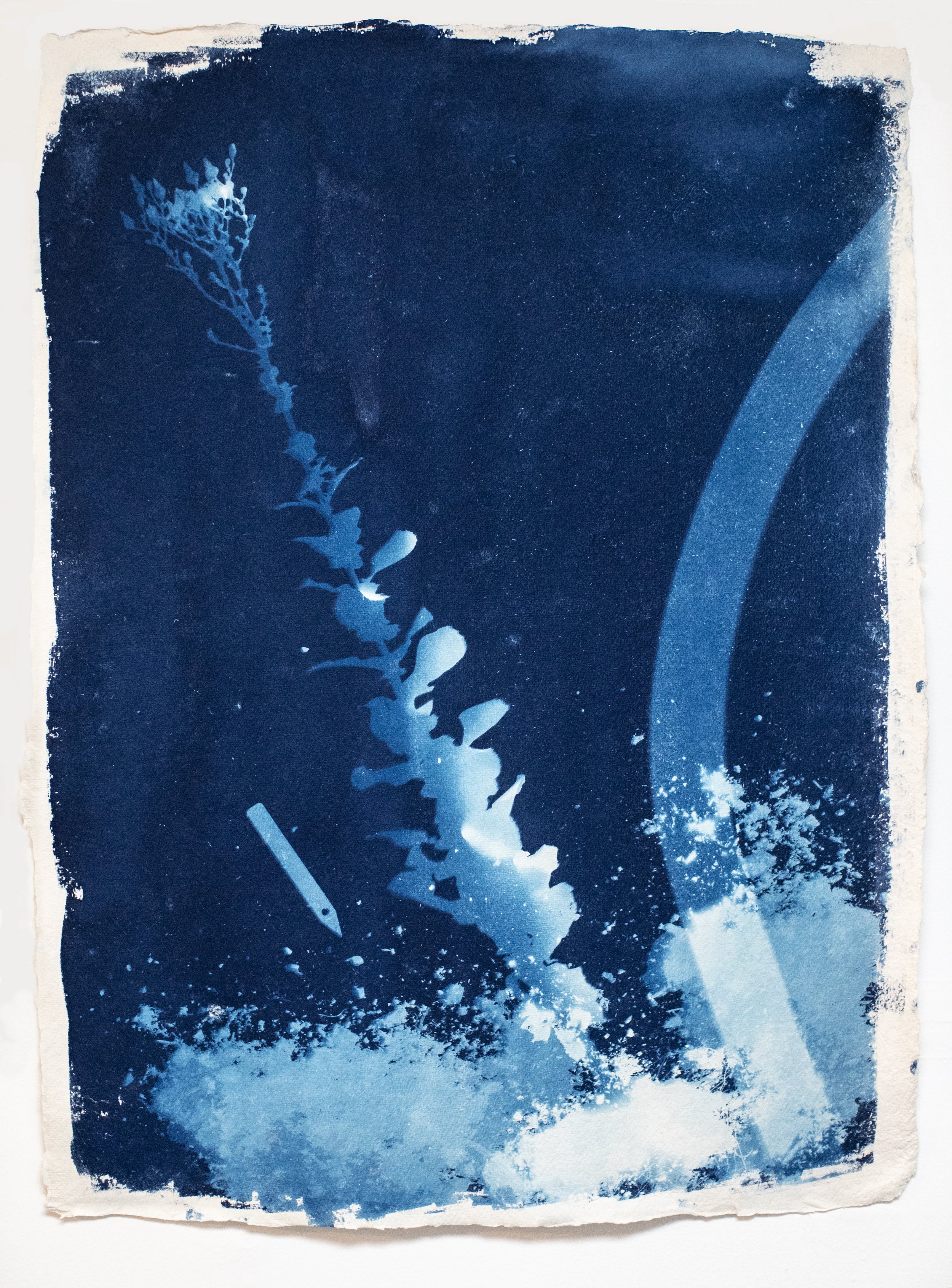

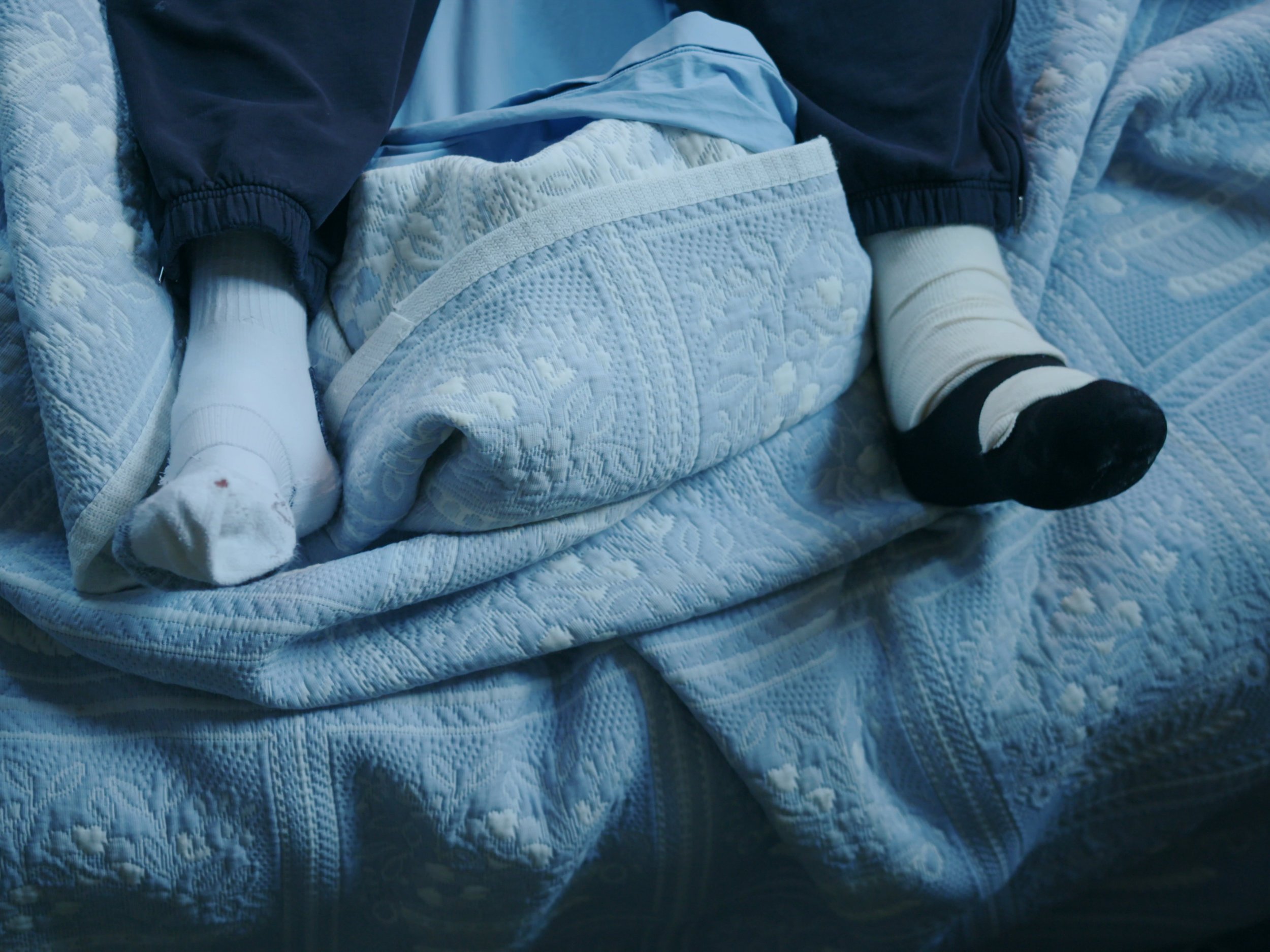
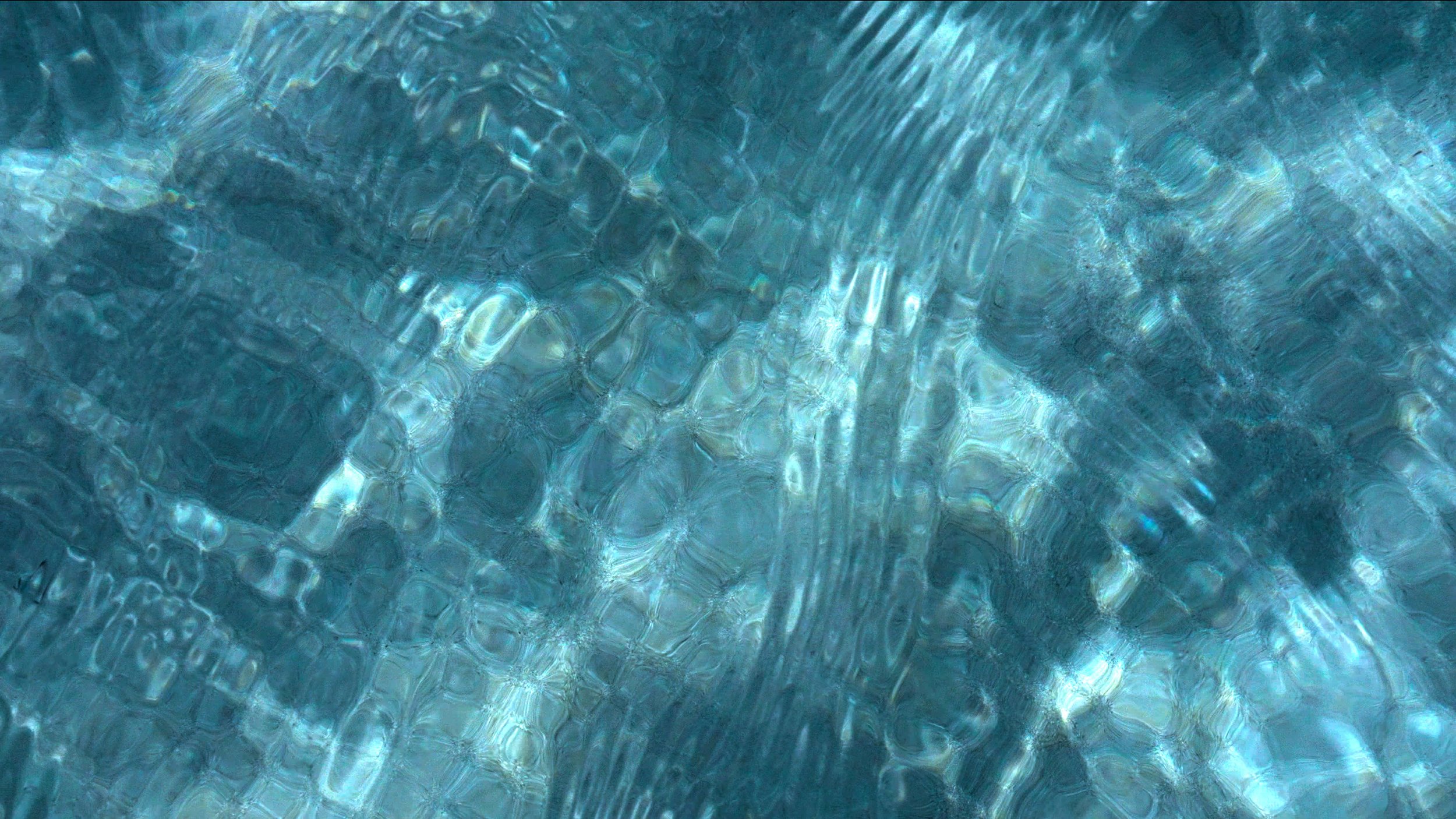

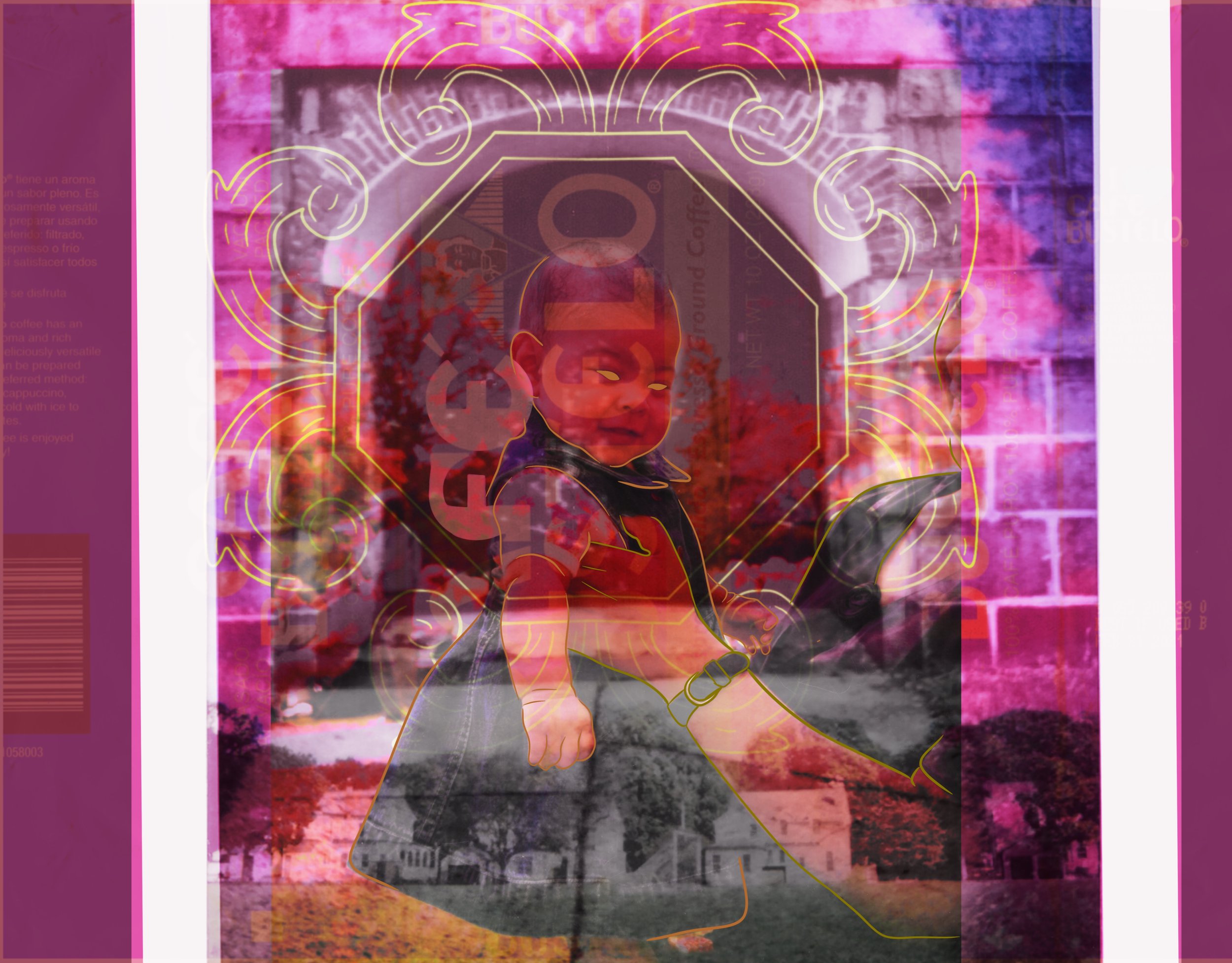
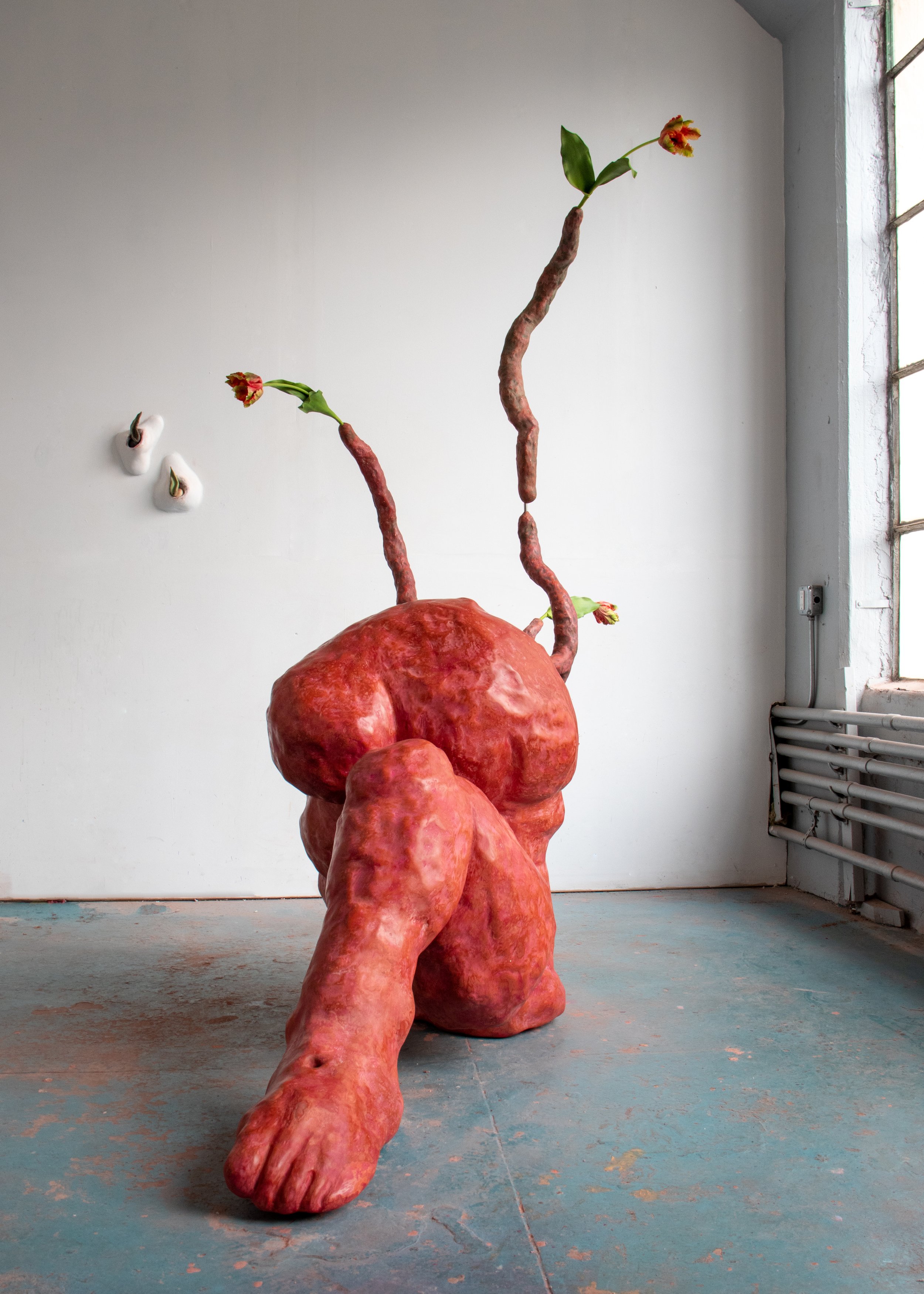

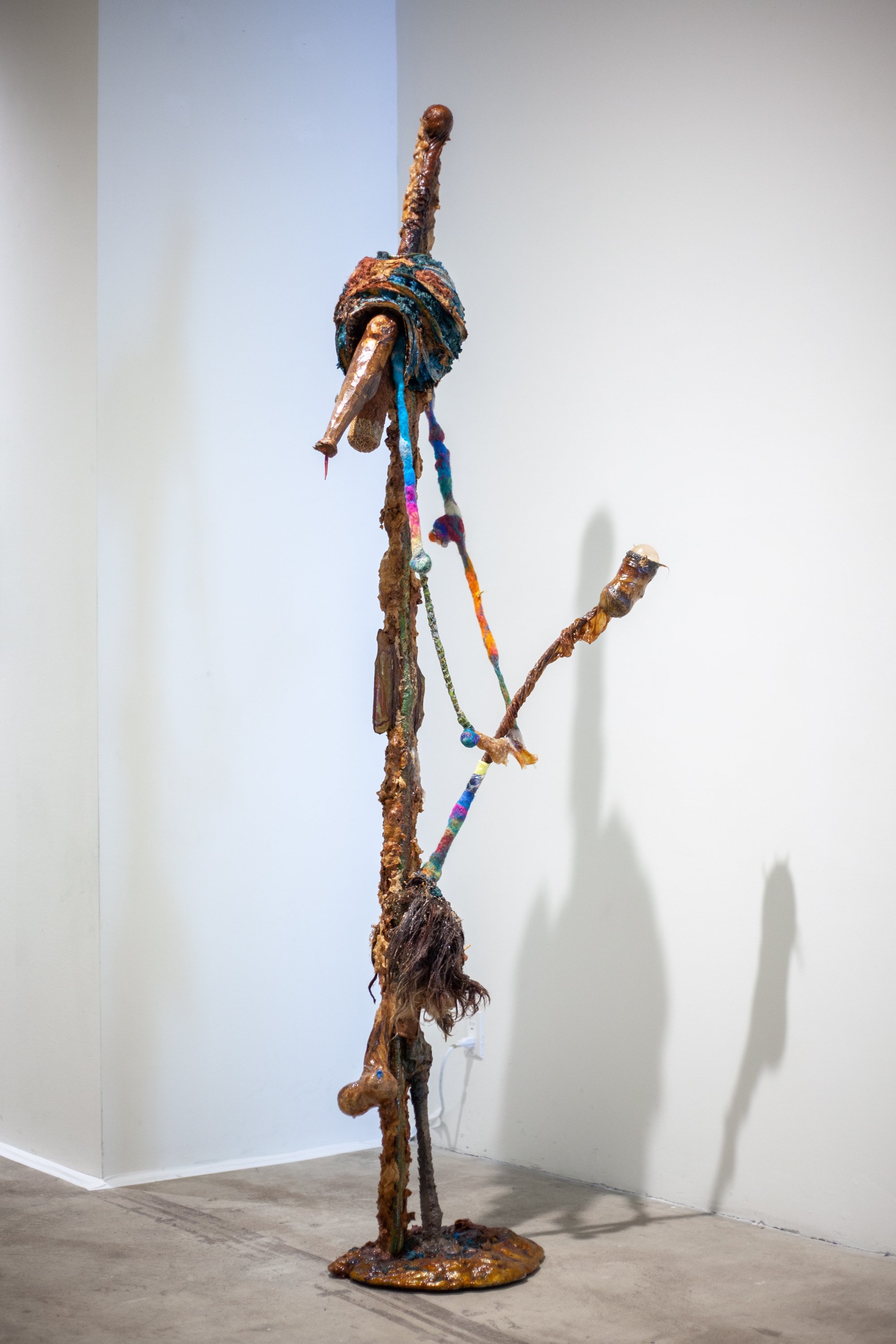
photo © The Bronx Museum of the Arts
PART TWO: By embracing possibilities and imagining speculative futures, the 27 artists featured in the second part of this year’s AIM Biennial expand upon those critical issues examined in part one as they create works and worlds which engage the complexities of the human condition: from our inseparability from nature to the dictates of our cultural identities and norms. Featured artists are Priscilla Aleman, Mickey Aloiso, Roni Aviv, Samantha Box, Ivana Brenner, Nicki Cherry, Christina Freeman, Sarah Friedland, Kat Geng, Daniel Giordano, Woomin Kim, Christopher Lin, Katherine Miranda, Carla Maldonado, Jonathan Sanchez Noa, Qinza Najm, Kark Orozco, María Elena Pombo, Xavier Robles Armas, Coral Saucedo, Daniel Shieh, Rachel Stern, Sagarika Sundaram, Lorenzo Triburgo, Derick Whitson, Huidi Xiang, and A Young Yu.
Connections between nature and the body are examined by multidisciplinary artist Jonathan Sanchez Noa, as he interrogates how histories of colonial extraction have impacted notions of race, identity, and climate. Incorporating Cuban tobacco leaf in handmade paper, Noa creates large abstract landscapes, exemplified by Untitled (OLÙFINA mi carne, Isleños) (2023), that reconstruct narratives of displacement and their cultural and religious significance. Sagarika Sundaram also uses natural materials such as fibers and dyes in her sculptures and installations that explore the interconnectedness of humanity and the environment with a particular focus on themes of migration, memory, and notions of home and domesticity. Subverting processes of mass production, Daniel Giordano’s provocative sculptures serve as eclectic assemblages—comprising industrial artifacts, foodstuffs such as prosciutto and Italian nougat, as well as all manner of organic material, from ticks to bald eagle excrement—that reflect the artist's family, his Italian-American heritage, and the postindustrial realities of Newburgh, New York, his hometown.
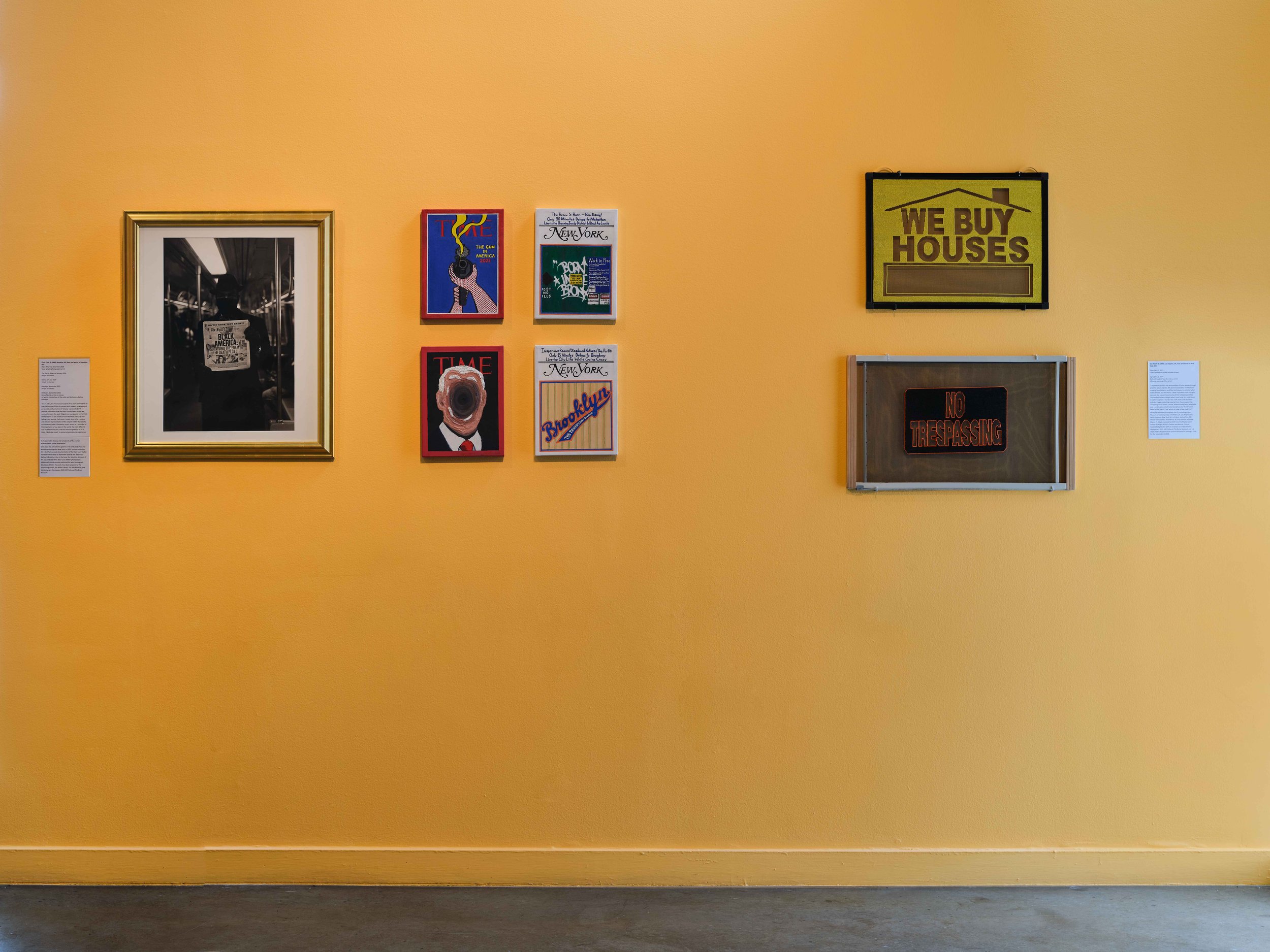
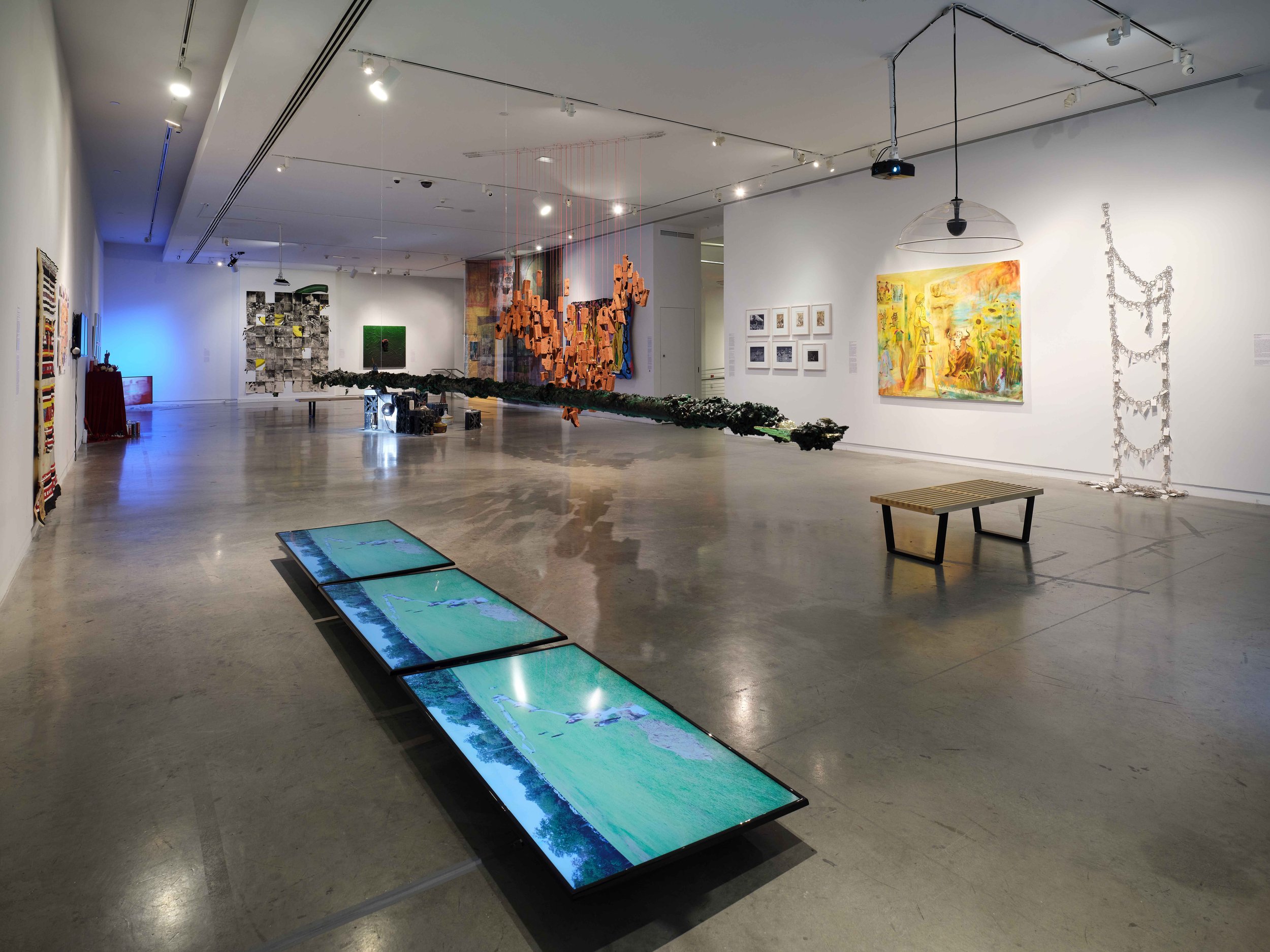
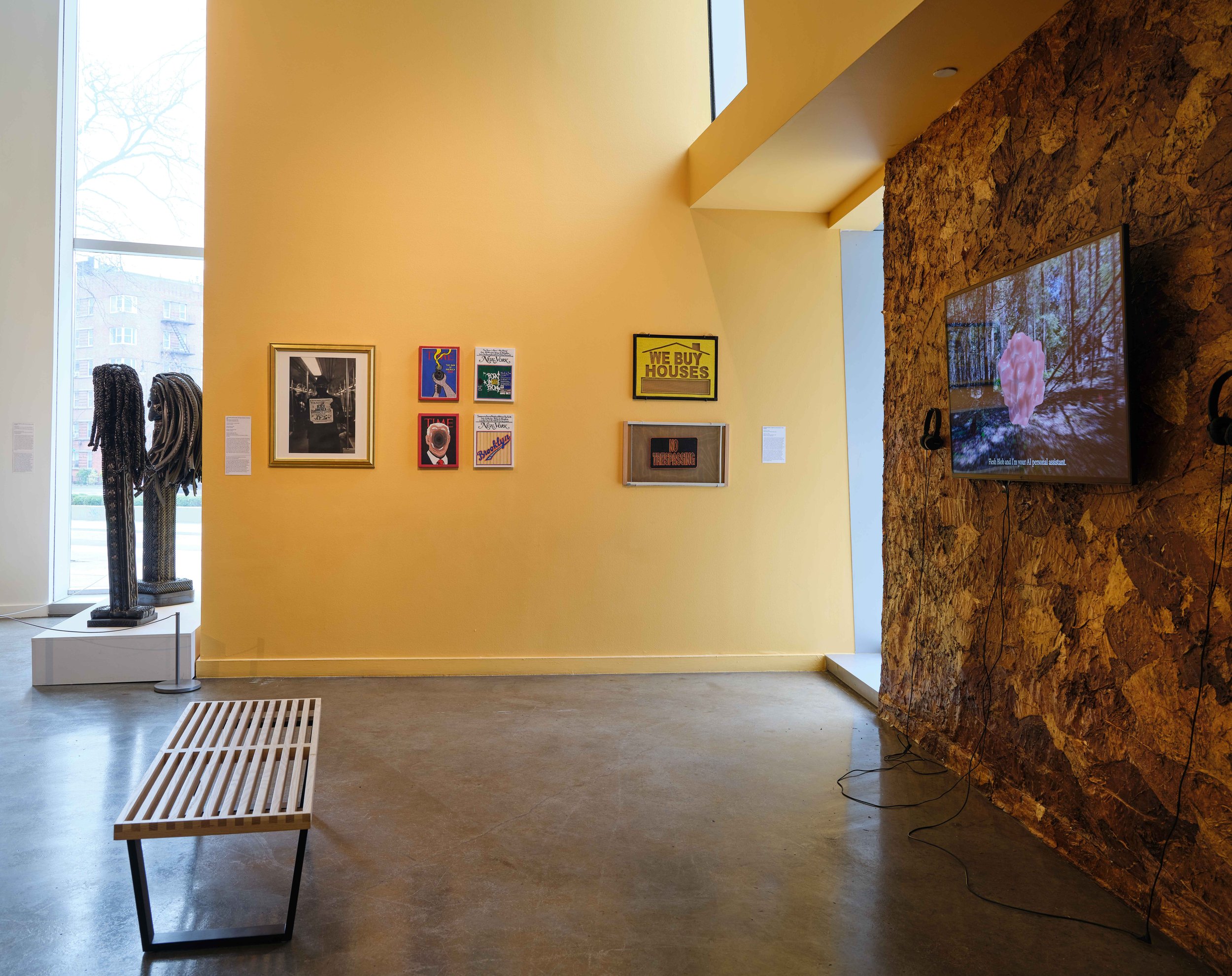
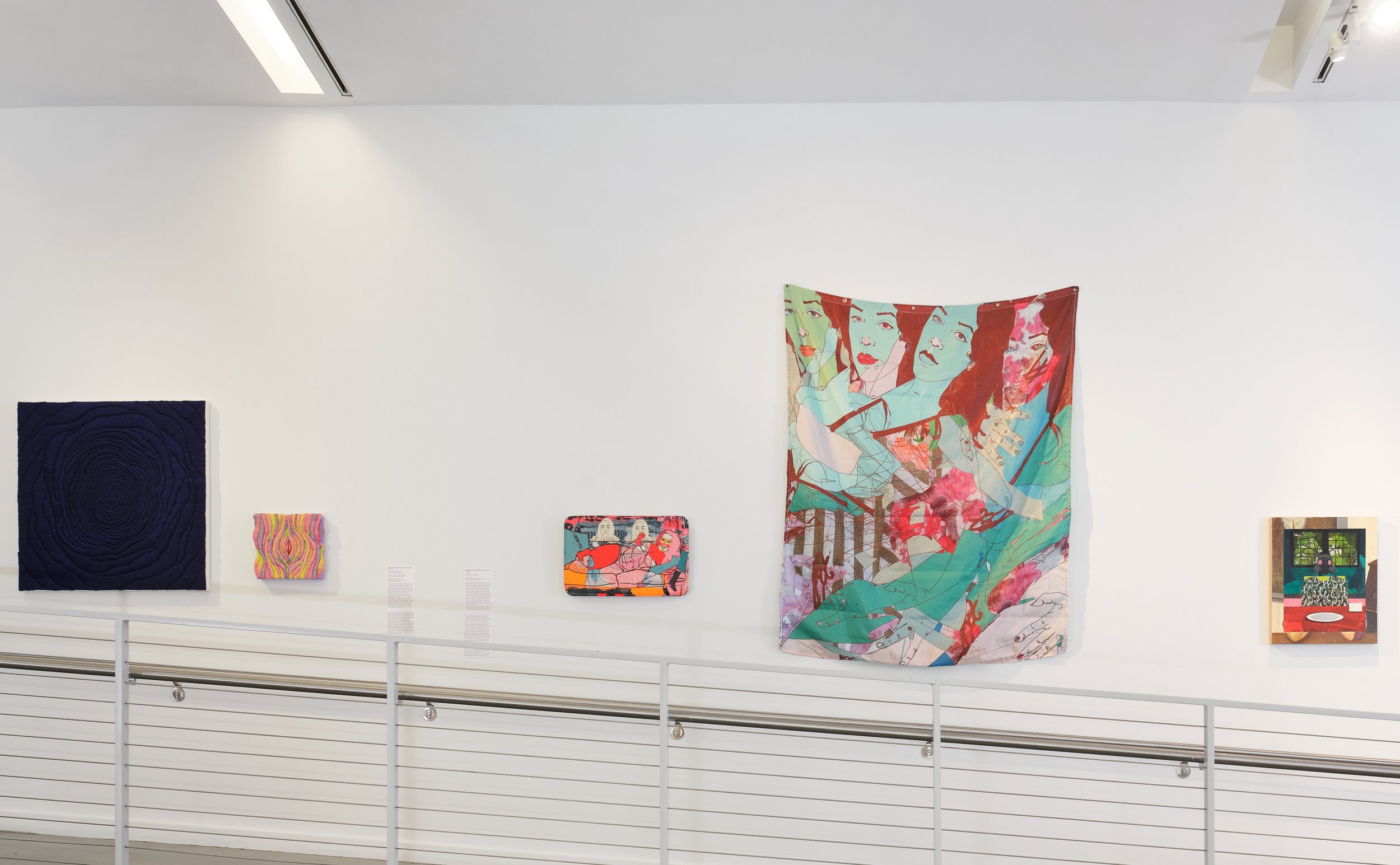
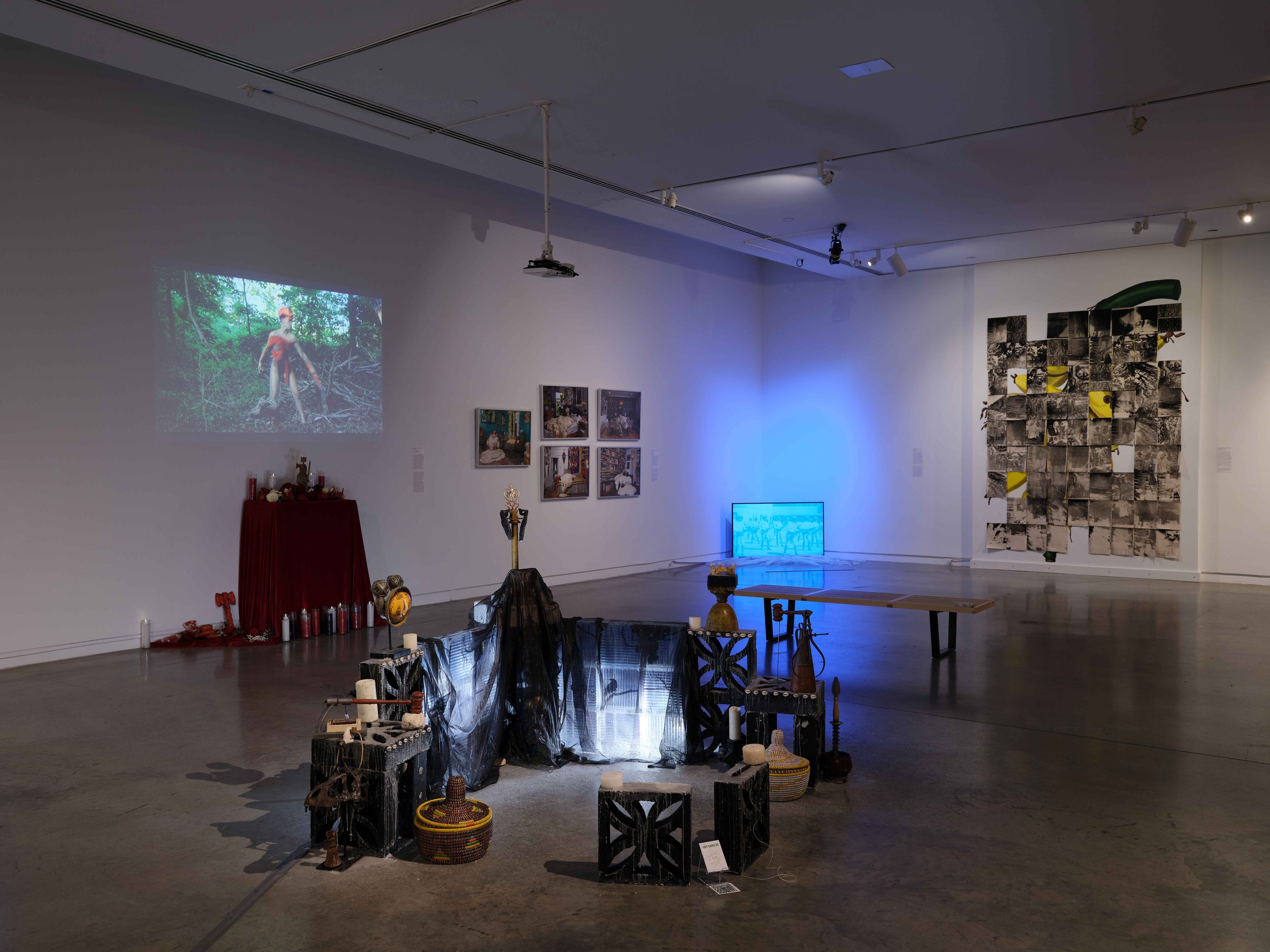

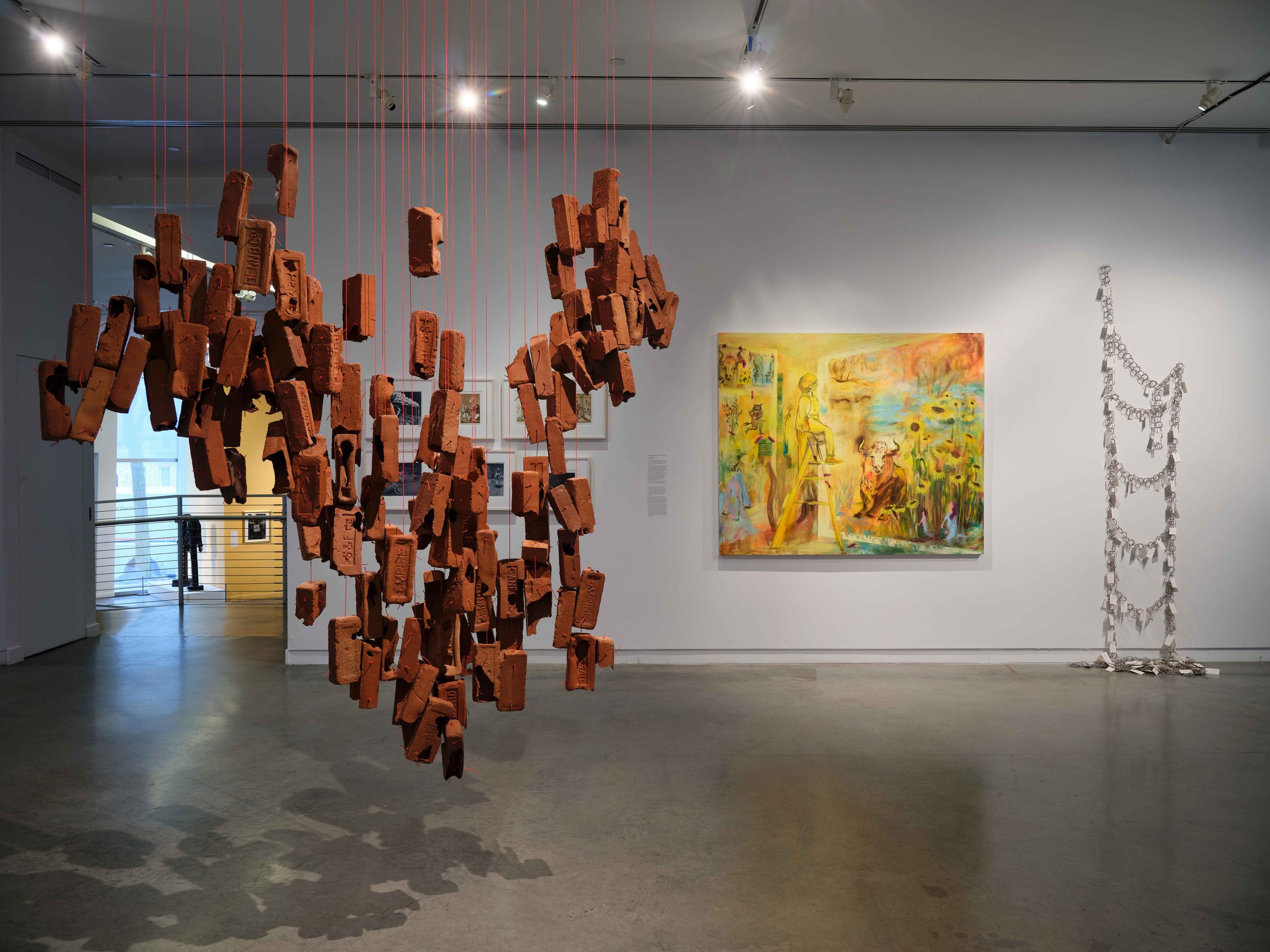

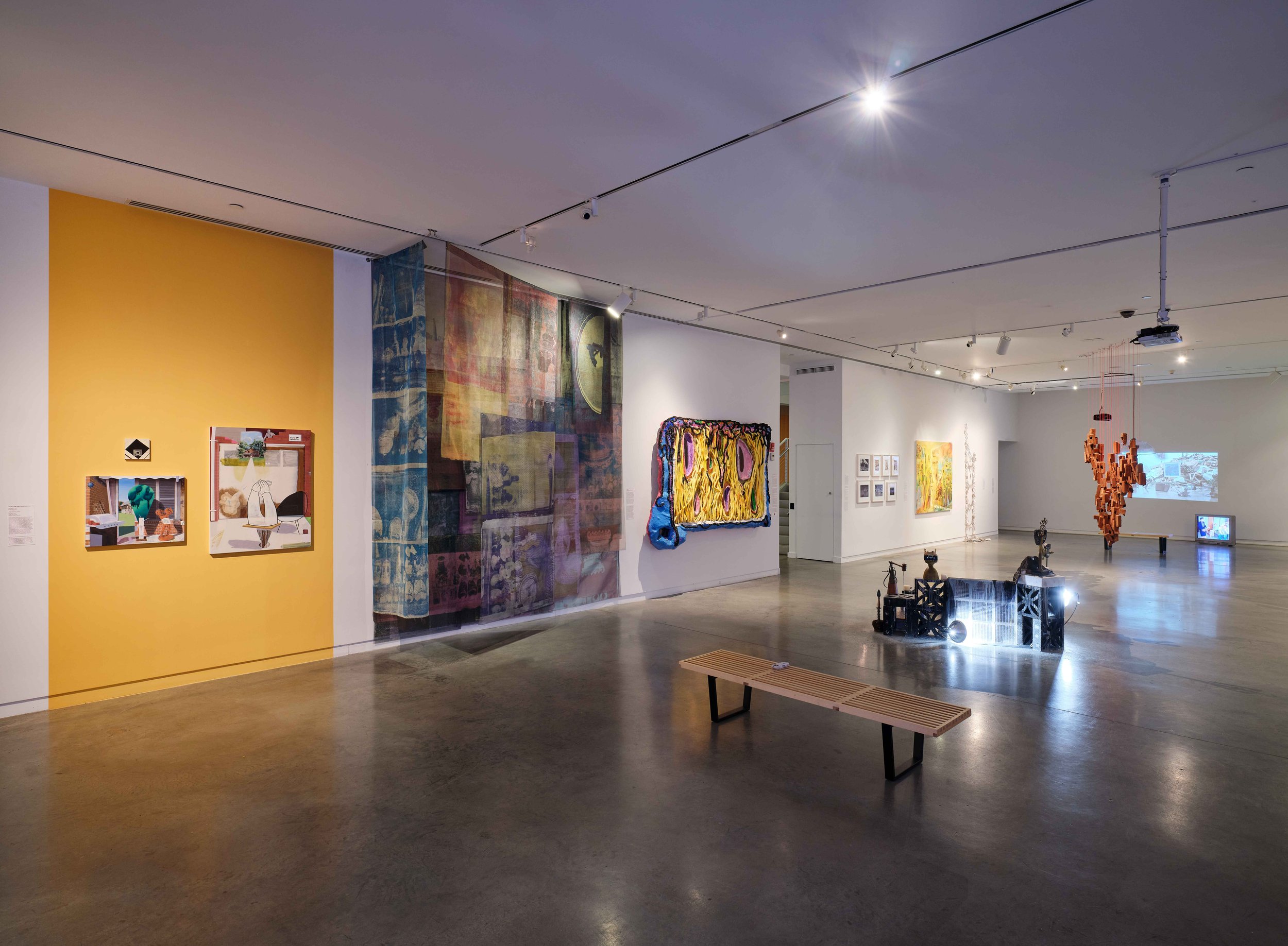
Installation photograph, Bronx Calling: The Sixth AIM Biennial, The Bronx Museum of the Arts, Jan 26 - Mar 31, 2024, photo © The Bronx Museum of the Arts
A tension that arises between the conflicting instincts of both embracing and controlling natural phenomena, including one’s own emotions and experiences, is examined on a psychological register by sculptor Nicki Cherry who delves into what it means to inhabit a body in her sci-fi-esque work that references mental illness, specifically anxiety, and the challenges of contending with it. Sarah Friedland addresses similar tensions in a more physical capacity as she brings attention to the power of movement in everyday life through highlighting home and trust exercises. In Movement Exercises Trilogy (2023), she reframes activities often considered banal, like walking a dog, to instead cast them in an empowering light, encouraging viewers to find beauty in ordinary actions.
The norms of bodily expression in various cultures are further explored by textile-based artist Woomin Kim, who draws upon her Korean identity to examine differing perspectives on sexuality within a patriarchal world. In Mokyoktang (bath house) (2023), for example, Kim highlights the lack of self-consciousness among individuals of different ages who gather in Korean bathhouses, and contrasts this with the far more private dispositions of individuals in the U.S., thus illustrating the dichotomy between private and public spheres and shedding light on distinct societal attitudes towards personal space and community.
CREDITS: Bronx Calling: The Sixth AIM Biennial is organized by Eileen Jeng Lynch, the Director of Curatorial Programs at The Bronx Museum.
ABOUT AIM:
Since 1980, The Bronx Museum has supported New York’s artist community through the AIM Fellowship, the Museum’s flagship artist development program offering career management resources to guide emerging artists through the opaque professional practices of the art world. Mentored by a distinguished faculty of industry experts, AIM Fellows engage in an intensive series of seminars and activities covering a wide range of topics including finance, law, media management, and writing, among others, that aid artists in building sustainable studio practices while expanding peer and professional networks. Since its founding, the AIM Fellowship has provided pivotal career support to a diverse roster of over 1,200 of New York's most promising artists, including Diana Al-Hadid, Firelei Báez, Njideka Akunili Crosby, Abigail DeVille,, LaToya Ruby Frazier, Lucia Hierro, Glenn Ligon, Sarah Oppenheimer, Michael Richards, Jacolby Satterwhite, and Saya Woolfalk.
ABOUT THE BRONX MUSEUM:
The Bronx Museum is the only major contemporary art museum in NYC with free admission year-round, making it a vital resource not just for residents in The Bronx, but thousands of residents from all five boroughs and tourists visiting annually. Now an internationally-recognized cultural destination, for the past five decades, The Bronx Museum has presented hundreds of exhibitions featuring works by culturally diverse and under-represented artists. The Museum’s permanent collection of 2,000+ works preserves and documents artists who are not typically represented within traditional museum collections by showcasing work by artists of African, Asian, and Latin American ancestry, as well as artists for whom the Bronx has been critical to their development. After over 50 years, The Bronx Museum continues to promote its mission of making the arts accessible to all audiences.
Please visit the museum's website here for more information about this exhibition and others. Also, you can find the Bronx Museum on Instagram, YouTube, and Facebook.
VISIT THE MUSEUM: 1040 Grand Concourse Bronx, New York 10456 T: 718-681-6000.
Painting in the River of Angels: Judy Baca and The Great Wall
Installation photograph, Painting in the River of Angels: Judy Baca and The Great Wall, Los Angeles County Museum of Art, Oct 26 2023 – Jun 2 2024, photo © Museum Associates/LACMA
(Los Angeles, CA)The Los Angeles County Museum of Art (LACMA) presented the Painting in the River of Angels: Judy Baca and The Great Wall on October 26 of last year at the Resnick Pavilion. This is the artist’s first solo exhibition at the museum. Los Angeles artist Judy Baca (b. 1946) conceived The Great Wall of Los Angeles (1975) as a monument to the people of California. Over five summers (1976-83), Baca collaborated with 400 youth, artists, and community members on a mural that told the erased histories of local communities. The artist, alongside members of the Social and Public Art Resource Center (SPARC), an organization Baca co-founded, designed the mural and painted it on the walls of the Tujunga Wash, a tributary of the L.A. River in North Hollywood, California. In 2021, SPARC received a grant from the Mellon Foundation to expand the landmark’s chronology into the 21st century.
Installation photograph, Painting in the River of Angels: Judy Baca and The Great Wall, Los Angeles County Museum of Art, Oct 26 2023 – Jun 2 2024, photo © Museum Associates/LACMA
At LACMA, Baca and SPARC artists will paint new sections of The Great Wall during the museum’s public hours. These new paintings span the 1960s with the first panel depicting moments of the Chicano Movement including the Farmworkers’ Movement and the East L.A. Student Walkouts, and the second panel featuring vignettes of the Watts Rebellion, Watts Renaissance, and community organizing by the Black Panthers. After the artists complete the paintings at LACMA, these panels will be added to The Great Wall, as part of the expansion that creates a mile of visual history. LACMA’s exhibition will also debut Generation on Fire, a new section of the wall memorializing activists known as the Freedom Riders. In 1961, they boarded buses traveling from Washington, D.C. to Southern states to challenge segregation on public transit. Baca centers the activists forming a circle in solidarity.
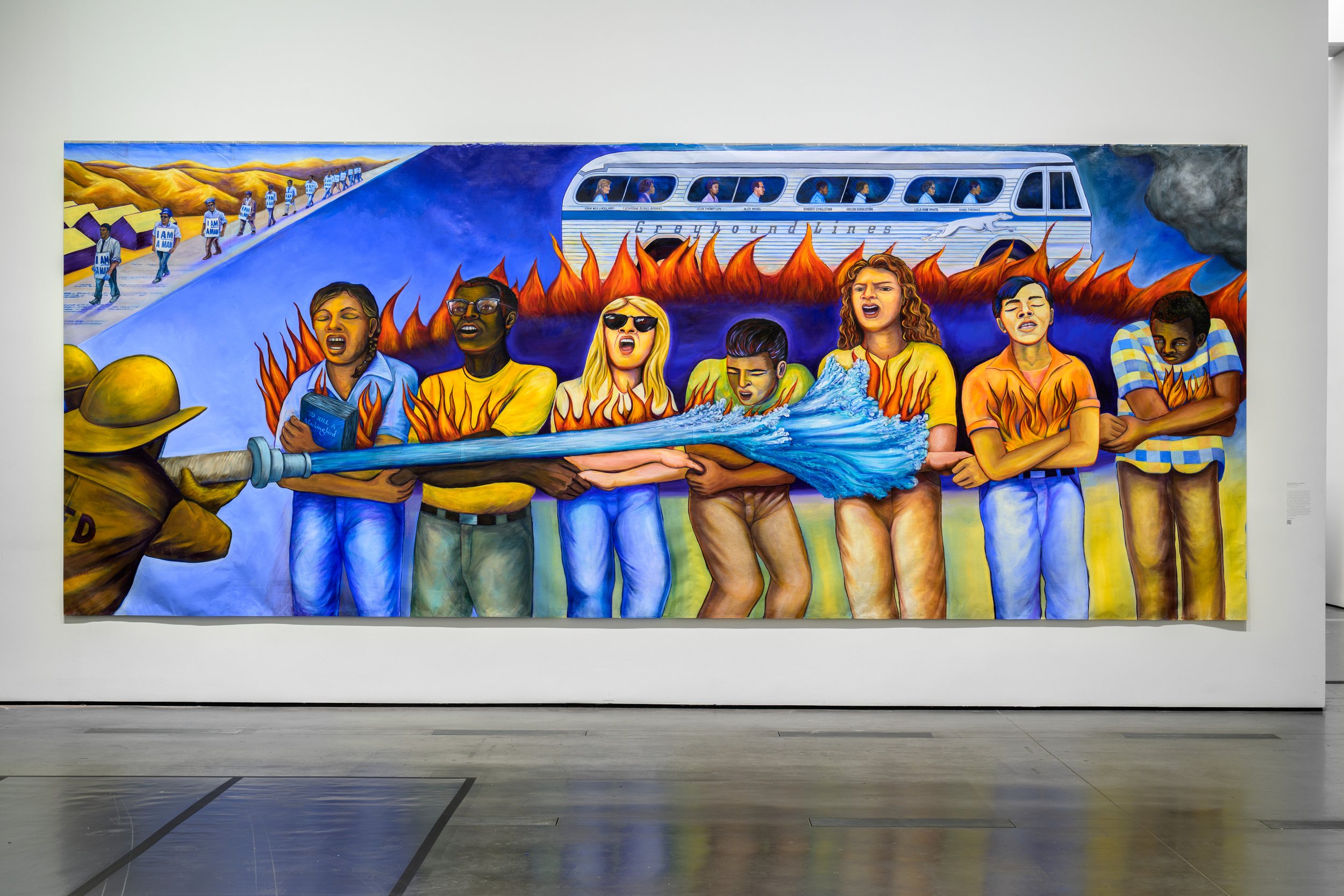


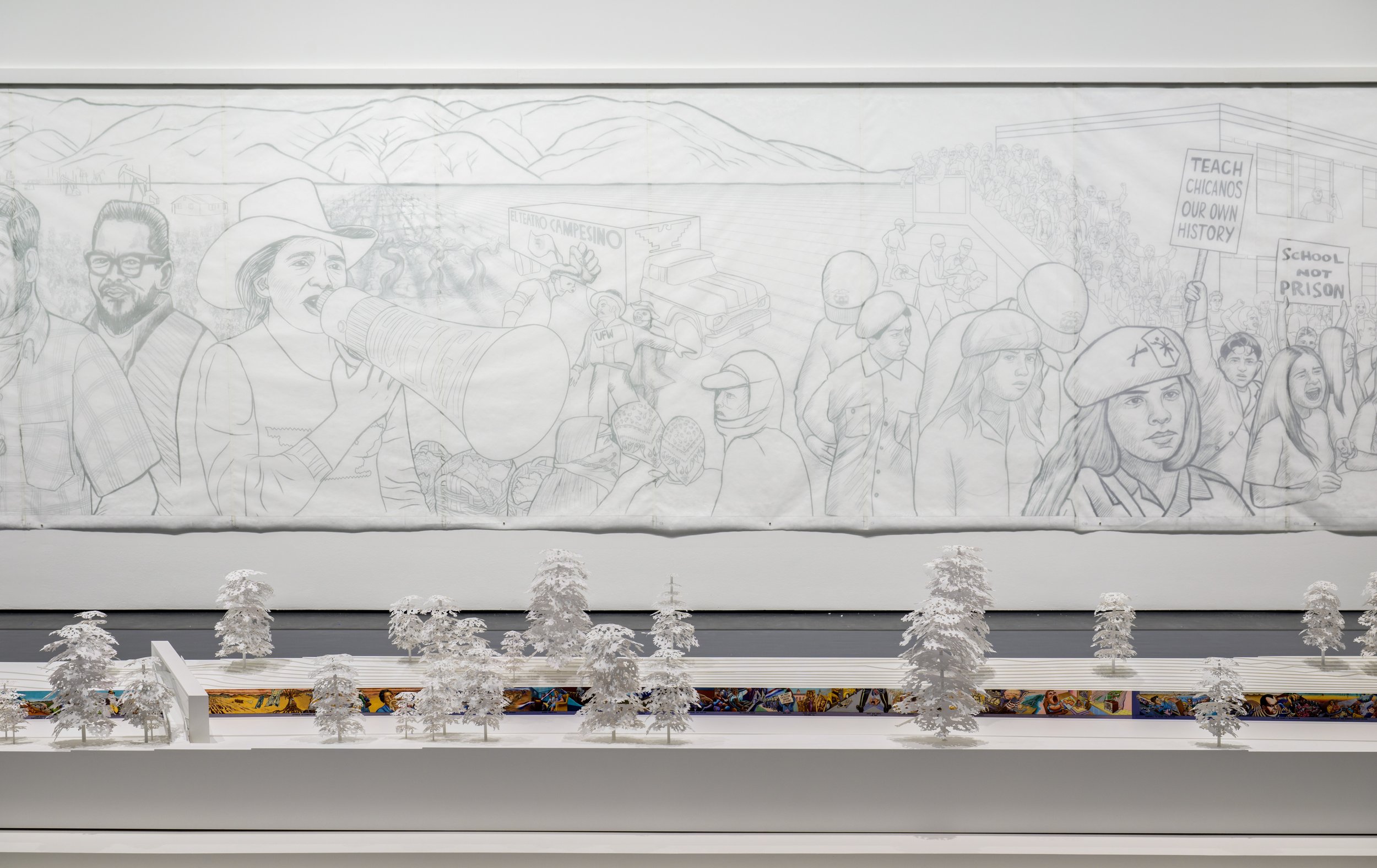
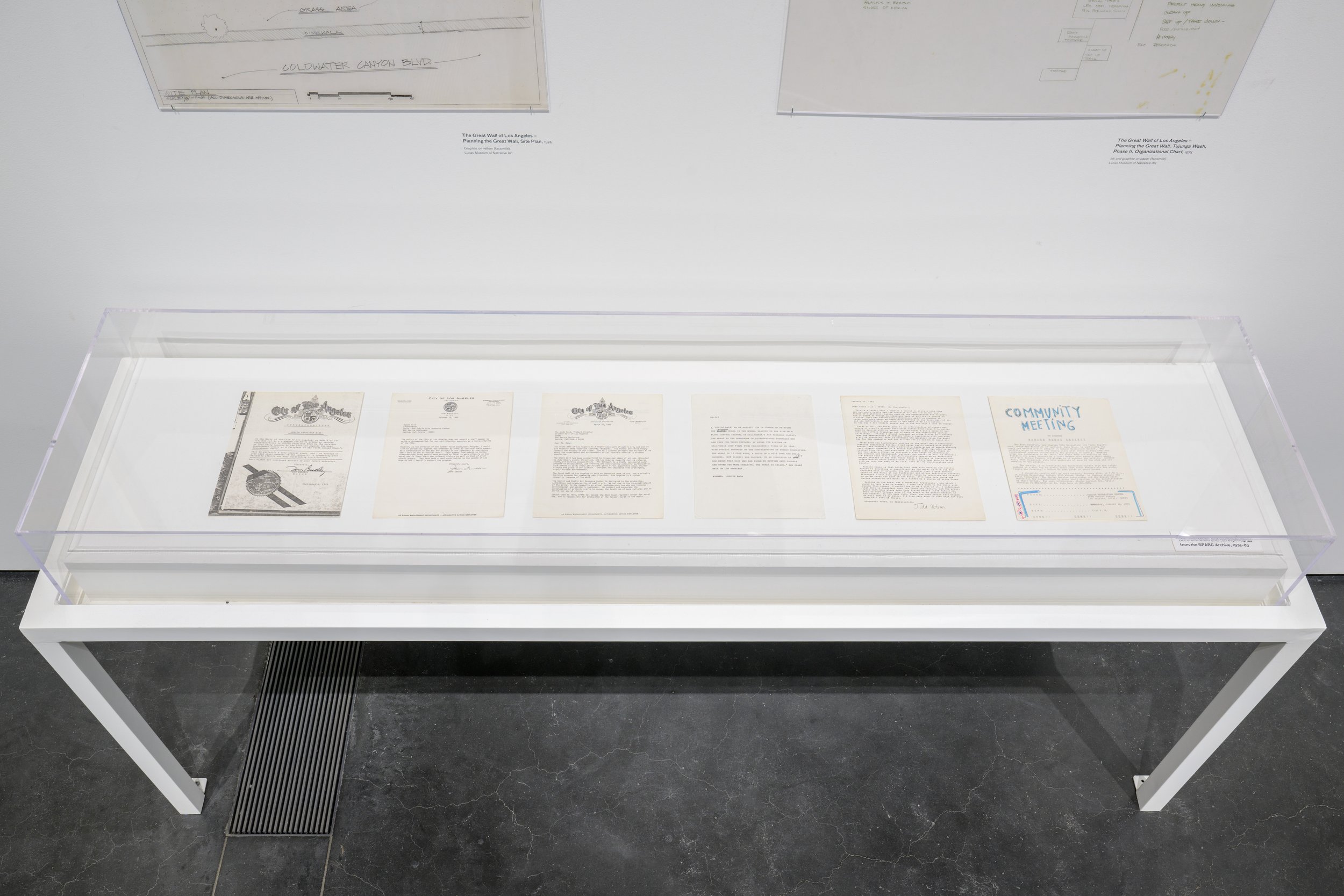
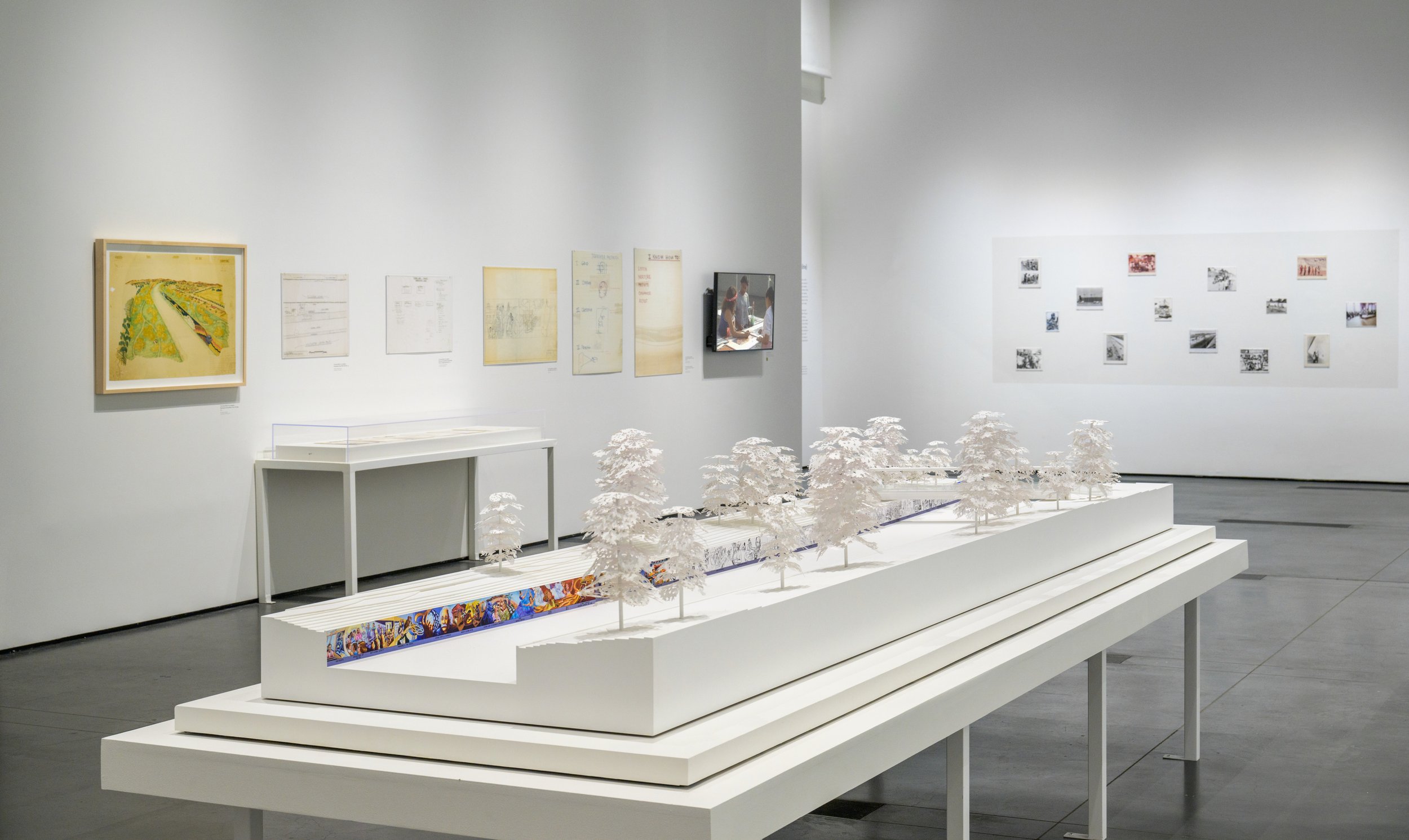
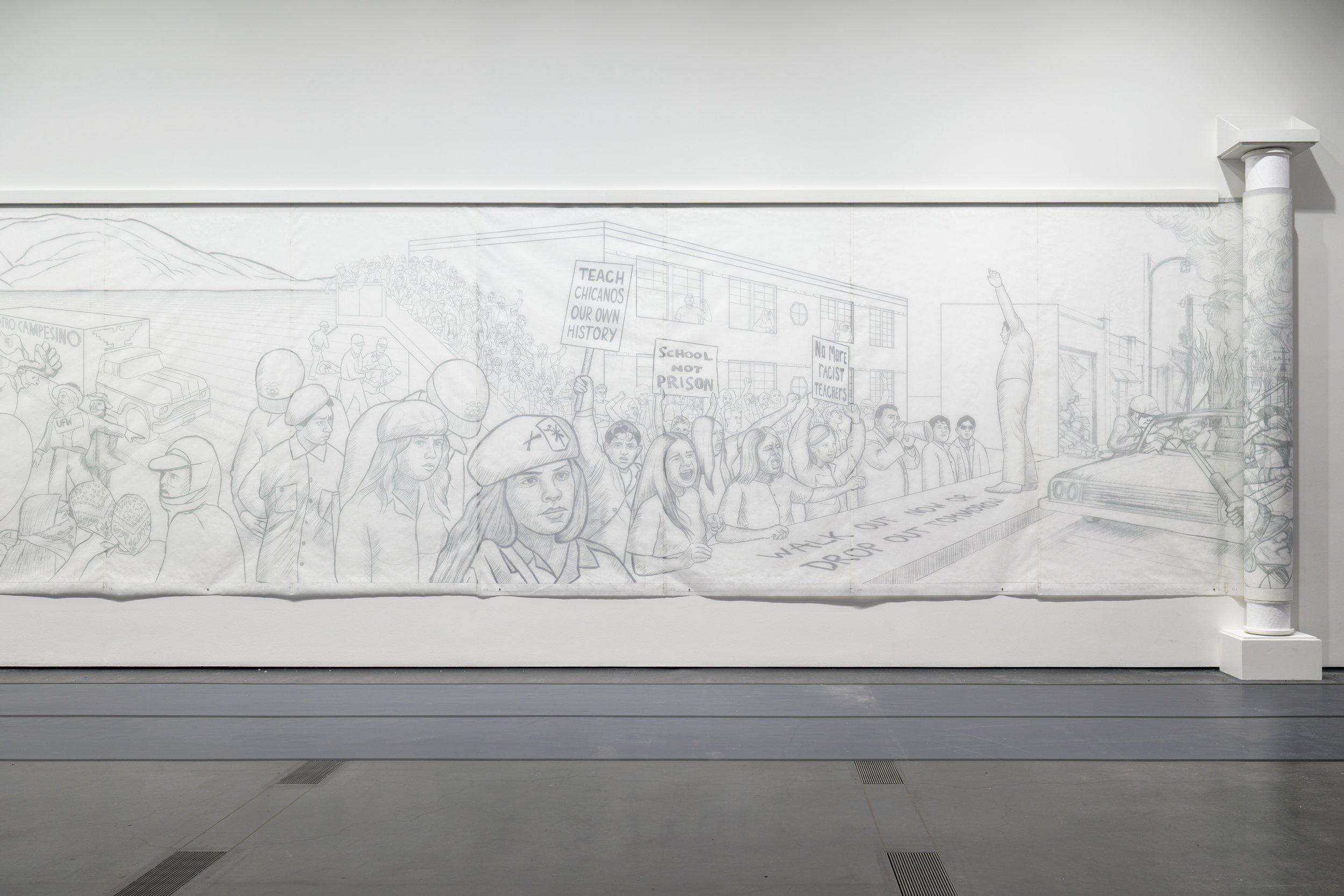
Installation photograph, Painting in the River of Angels: Judy Baca and The Great Wall, Los Angeles County Museum of Art, Oct 26 2023 – Jun 2 2024, © Judith F. Baca, photo © Museum Associates/LACMA
In addition to the paintings, LACMA’s exhibition features materials from the artist’s archive that have never been exhibited, revealing Baca’s process and innovations to muralism. Additionally, the exhibition includes Baca’s Augmented Reality Lens, The River Once Ran (2022), part of Collection II of LACMA × Snapchat: Monumental Perspectives. Painting in the River of Angels is co-curated by Dhyandra Lawson, Andy Song Assistant Curator of Contemporary Art, and Deliasofia Zacarias, Executive Assistant and Fellow, Director’s Office, LACMA.
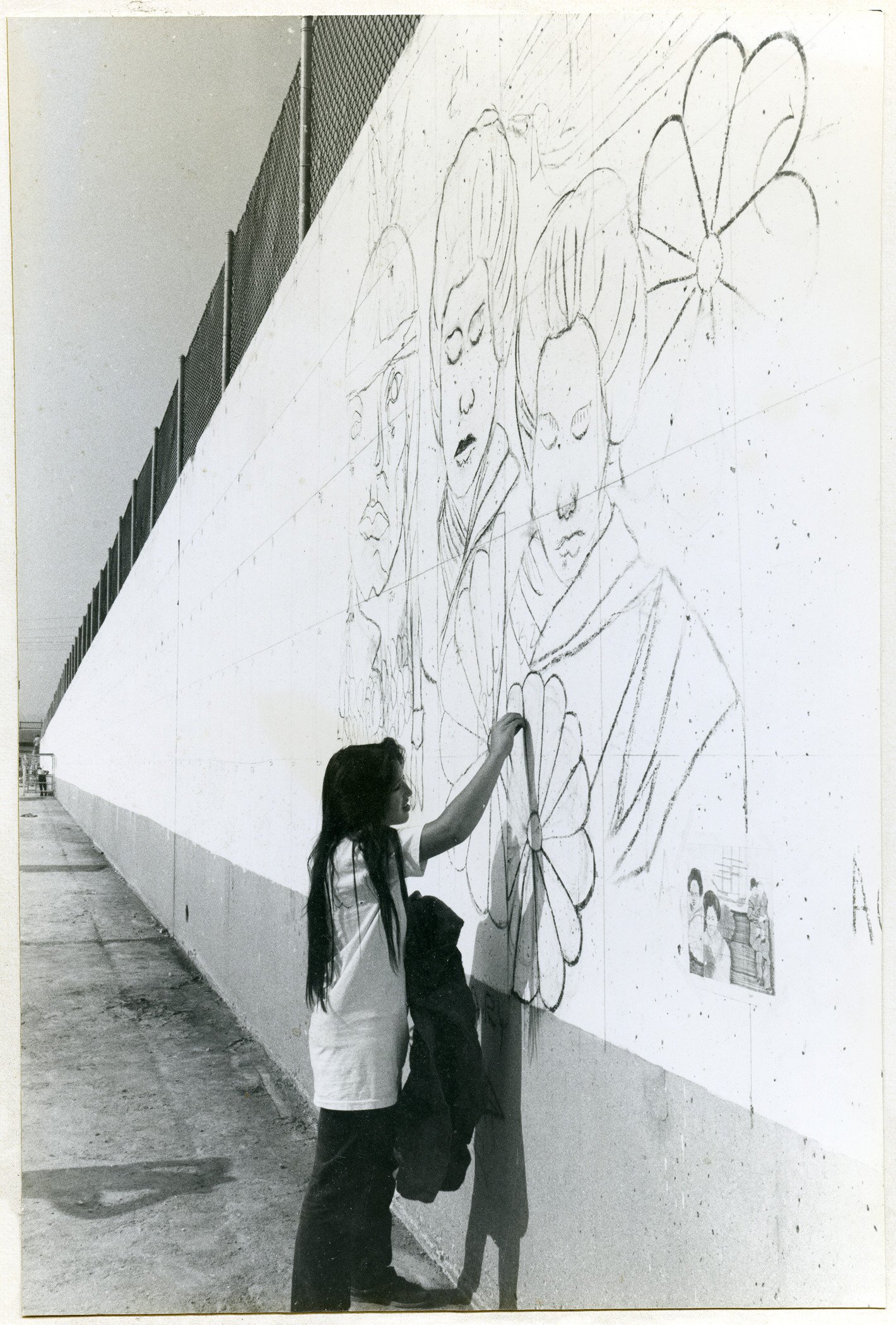
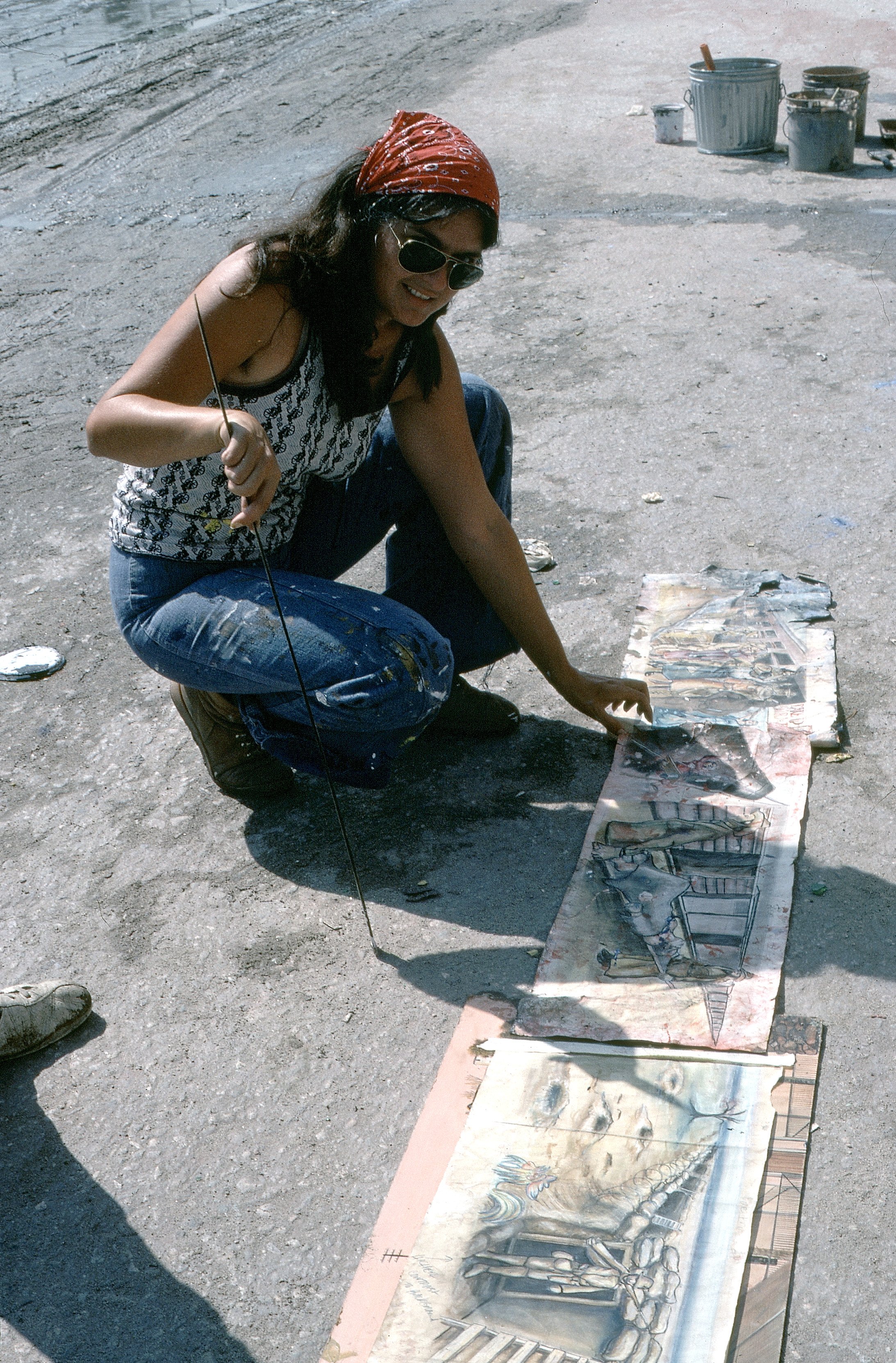
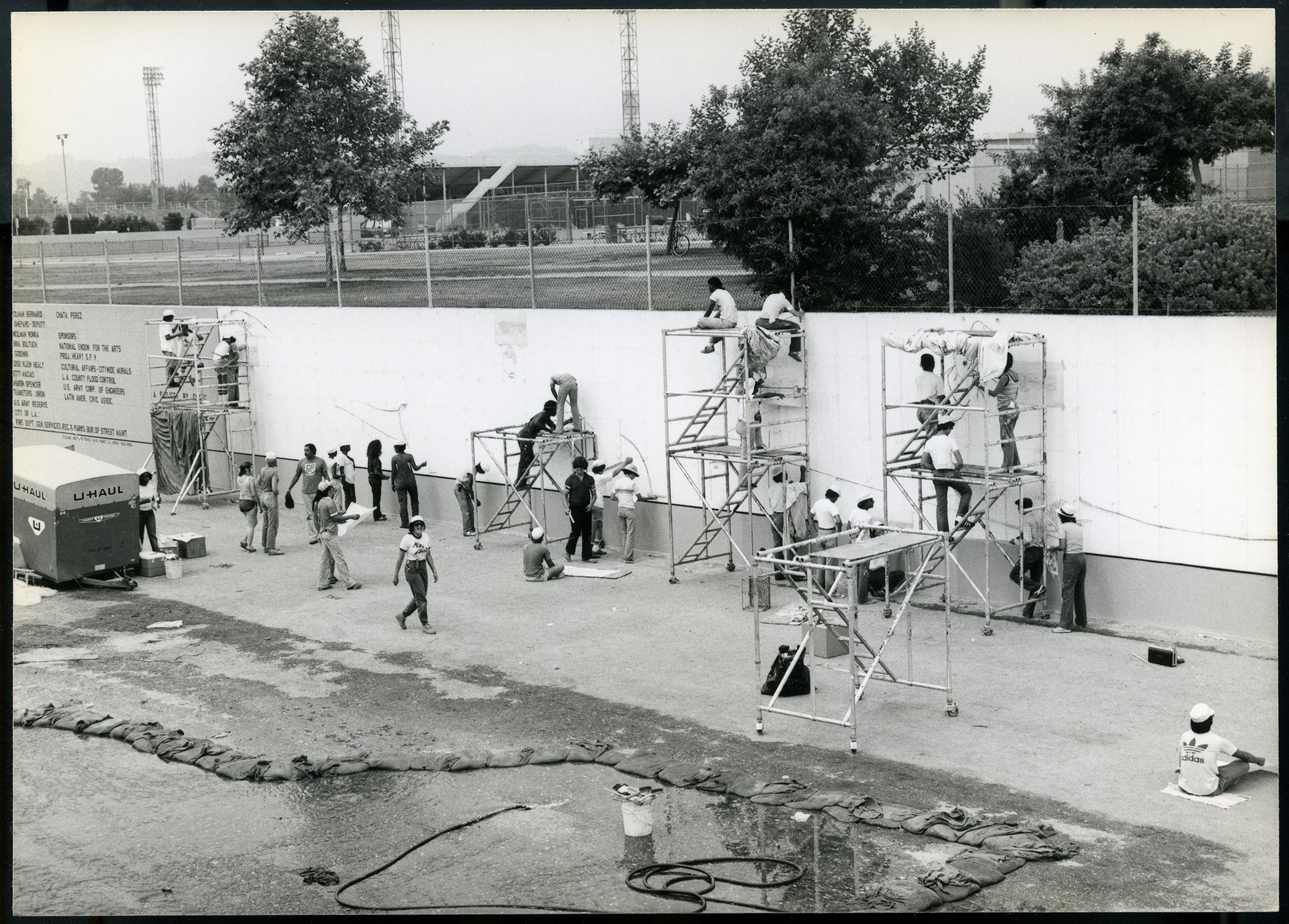
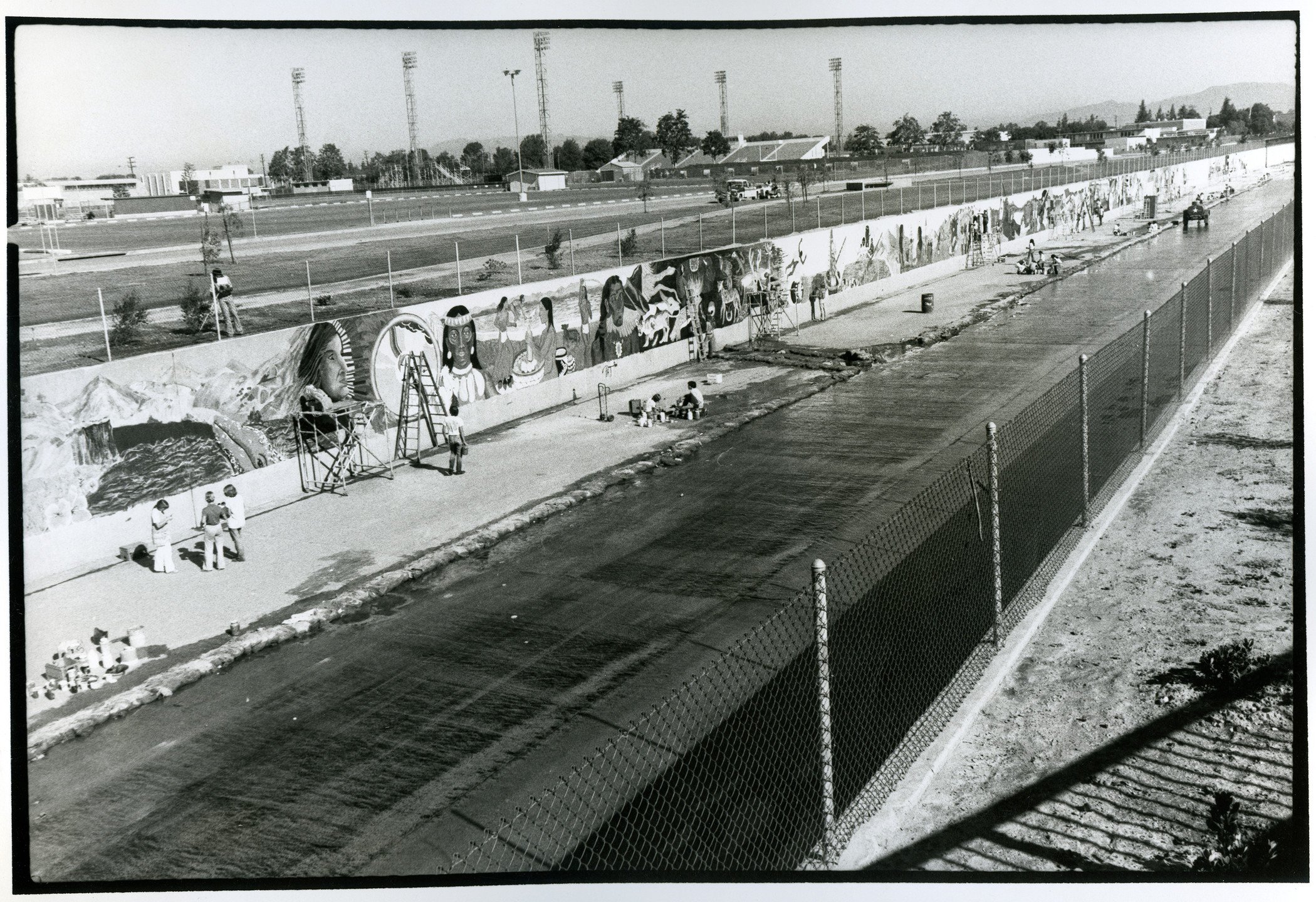
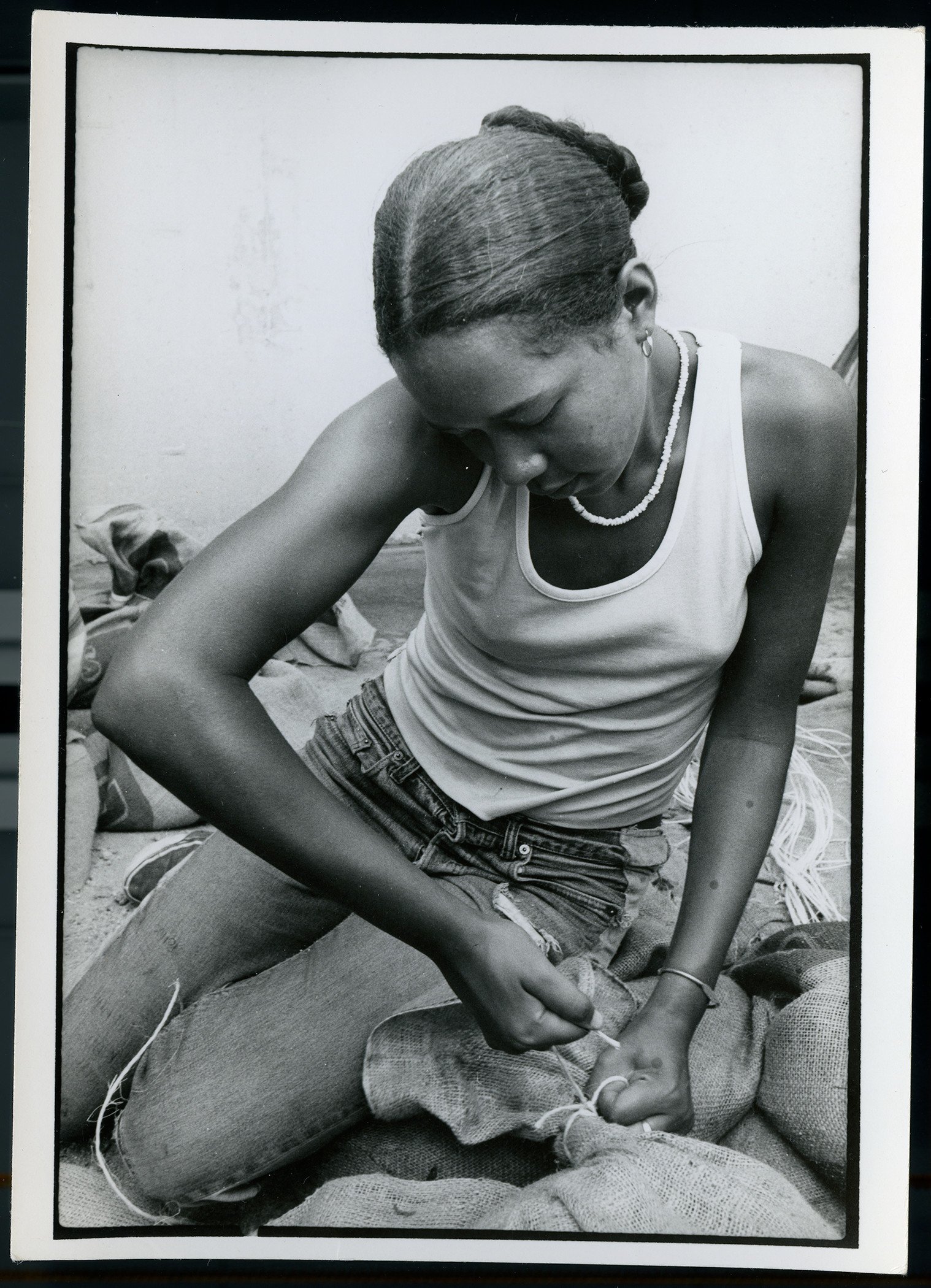
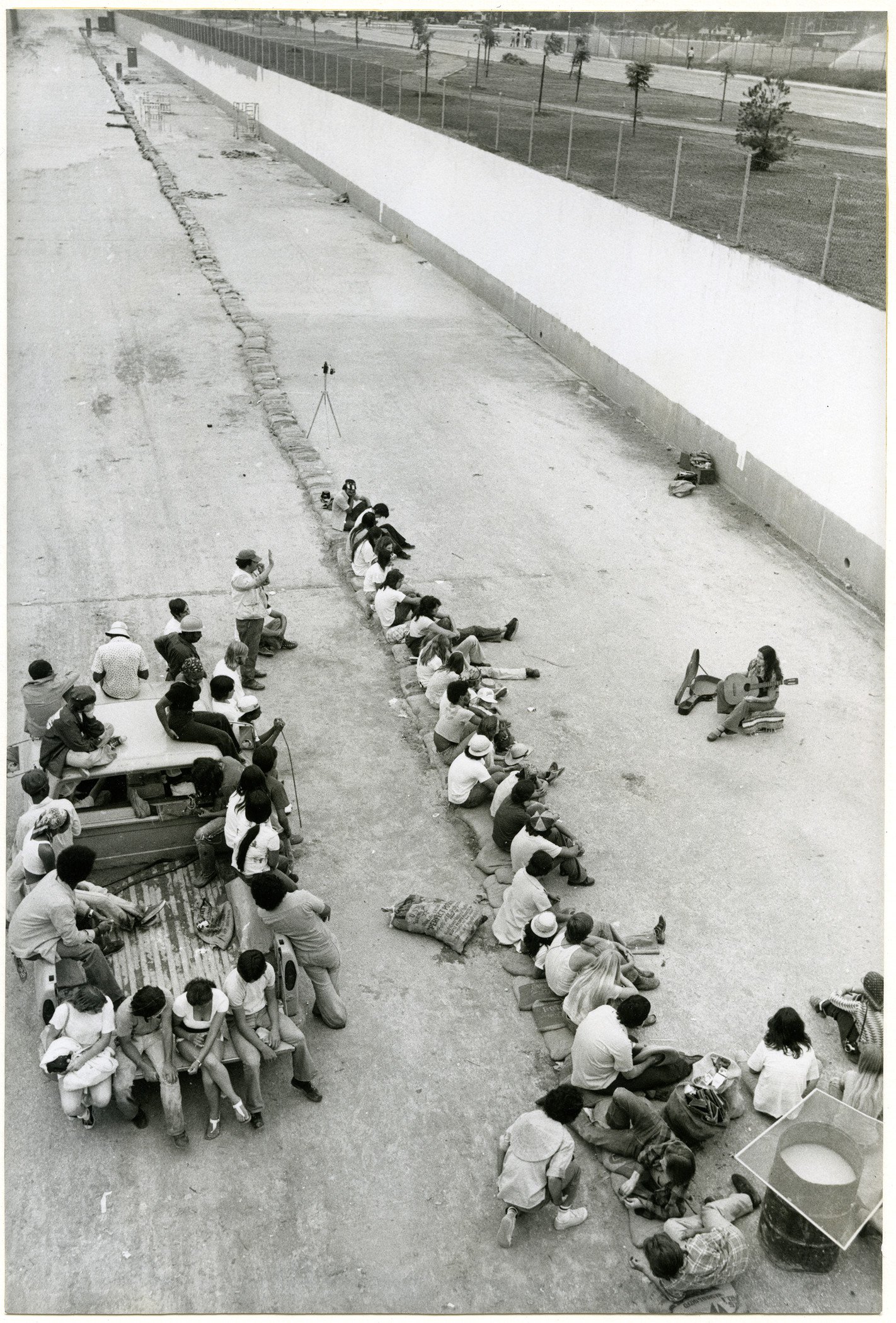
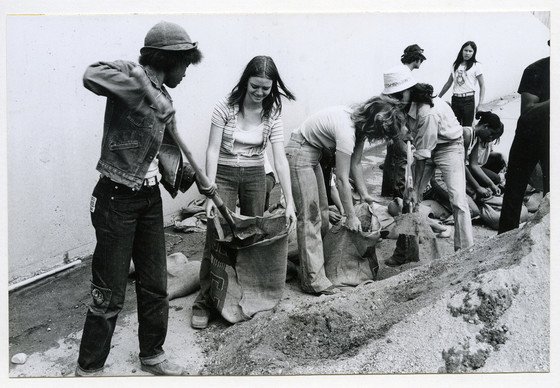
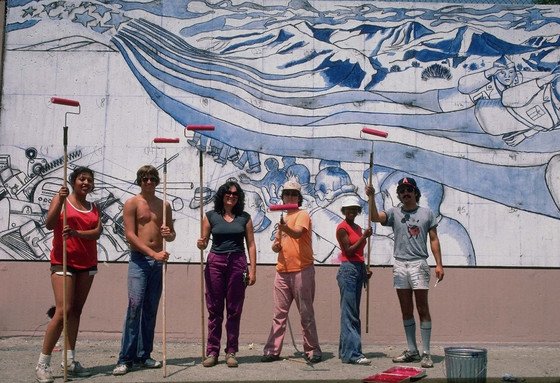
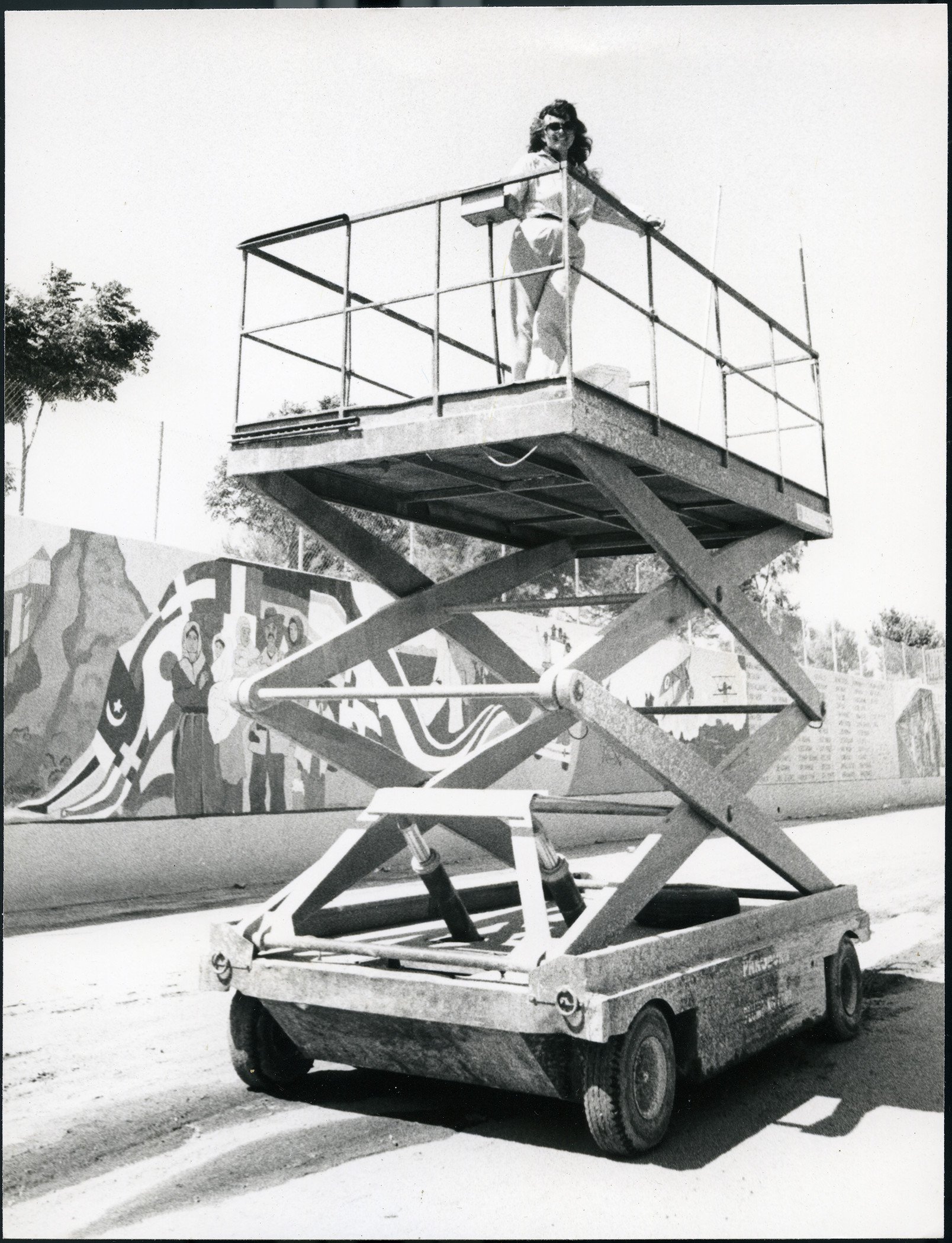
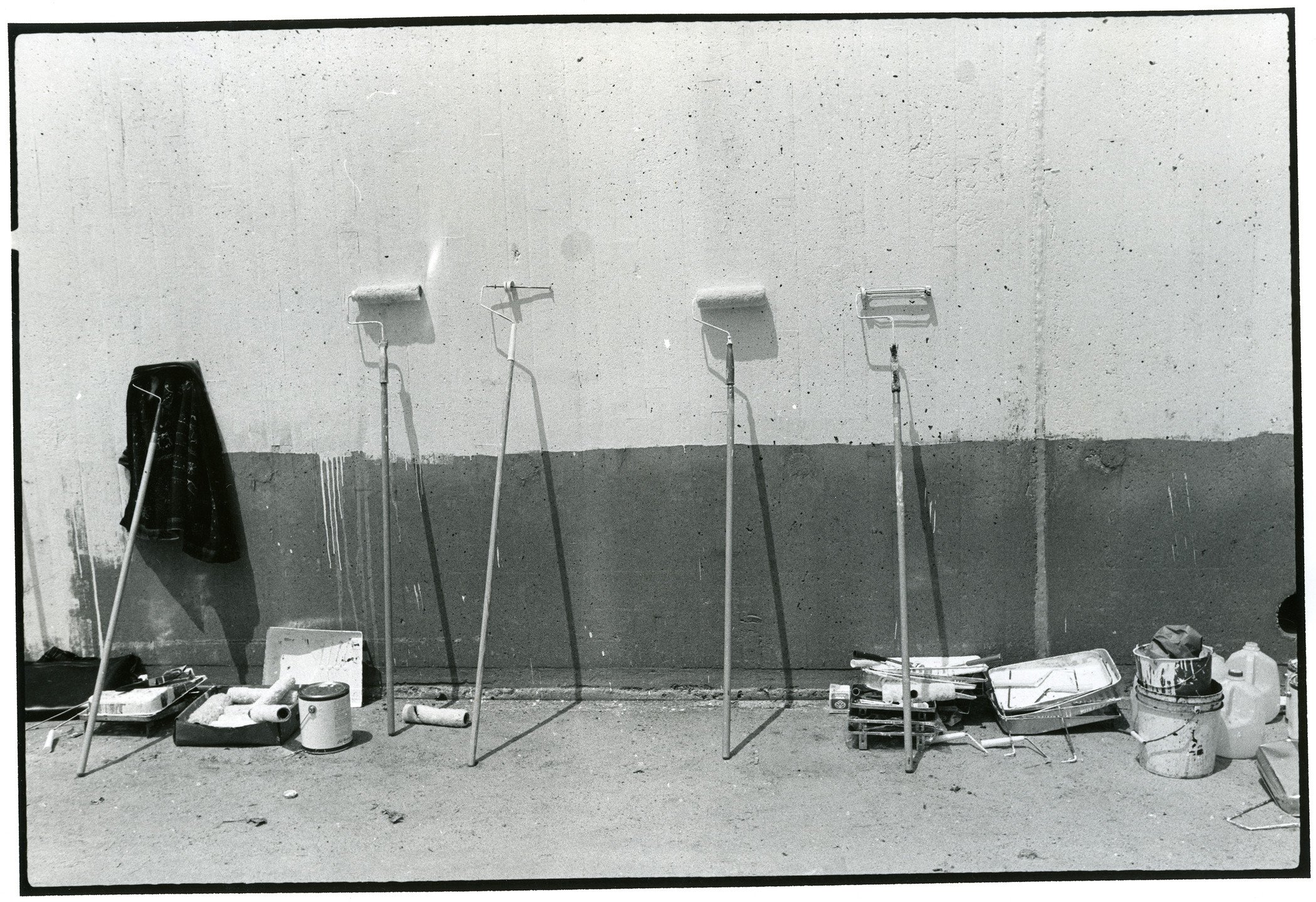
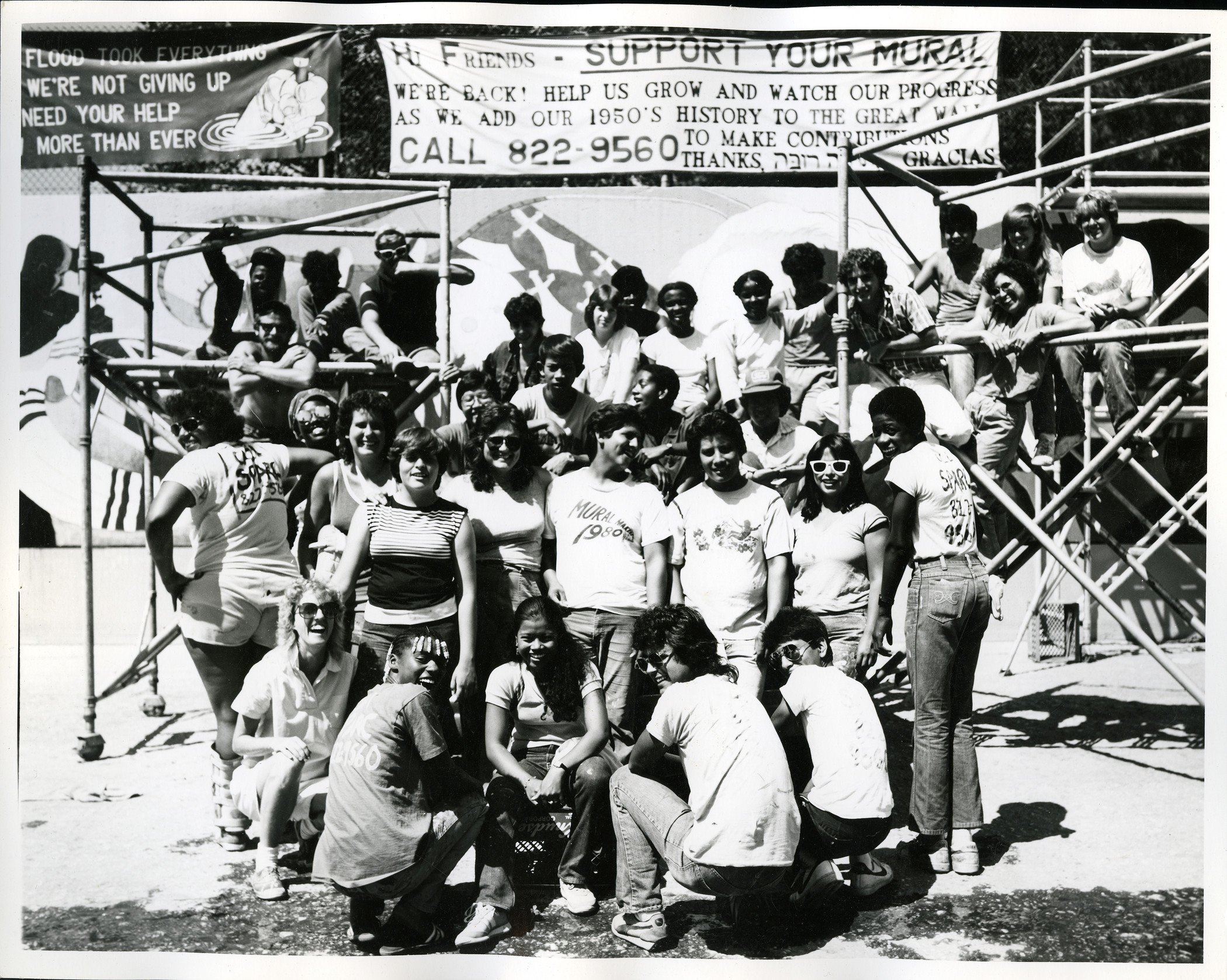
“Fifty years ago, Judy Baca began painting in the L.A. River to share communities' unreported perspectives, effectively shouting from the gutter of history,” said Dhyandra Lawson. “Her impact in L.A. and on the history of art and muralism are immeasurable. We are honored to work with Judy and SPARC artists on this unprecedented project, illuminating her vision for a people’s monument she now expands into the present.”
Deliasofia Zacarias added, “Baca is revered for many career-long achievements that have expanded public access to art and art education. At LACMA, she continues this commitment by allowing museum audiences to witness her work in real time, thereby challenging traditional distinctions between public and private space, as well as public and private practice.”
“LACMA’s galleries will transform into an active art studio, where audiences will be able to witness Judy Baca and her team paint new murals of The Great Wall of Los Angeles before they are permanently installed on the banks of the L.A. River,” said Michael Govan, LACMA CEO and Wallis Annenberg Director. “Baca’s work reexamines history, monumental painting, and representation of Los Angeles and its communities.
Judy Baca painting The Great Wall of Los Angeles, summer of 1983, photo courtesy of the SPARC Archives (SPARCinLA.org)
Painting in the River of Angels is a testament to artistic legacy and the power of visual storytelling in amplifying diverse voices.” About Judy Baca As one of America’s leading visual artists, Dr. Judy Baca has created public art for four decades. In 1974, Baca founded the City of Los Angeles’s first mural program, which produced over 400 murals, employed thousands of local participants, and evolved into an arts organization—the Social and Public Art Resource Center (SPARC). She continues to serve as SPARC’s artistic director while promoting social justice and participatory public art projects. Her best-known work is The Great Wall of Los Angeles. Located in the San Fernando Valley, the mural spans half a mile and is still a work in progress that is engaging another generation of youth. The mural making process has exemplified community involvement, employing more than 400 youth and their families from diverse social and economic backgrounds, artists, oral historians, and scholars. In 2017 The Great Wall of Los Angeles received national recognition on the National Registry of Historic Places by the U.S. Department of the Interior. Baca is a recipient of the Guggenheim Fellowship, the United States Artist Rockefeller Fellowship, and the Mellon Foundation Grant for the expansion of The Great Wall. Most recently, she was honored with the 2021 National Medal of Arts. Baca makes art shaped by an interactive relationship of history, people, and place. Her public artworks focus on revealing and reconciling peoples’ struggles for their rights and affirming the community’s connections to place. Together, she co-creates “sites of public memory.”
On November 4, 2023, Baca was honored alongside filmmaker David Fincher at the 2023 Art+Film Gala, presented by Gucci.
Background
LACMA has a history of presenting exhibitions highlighting local Latine and Chicane artists dating to the 1970s, when the museum organized Los Four: Almaraz, de la Rocha, Lujan, Romero (February 26–April 7, 1974), a history-making exhibition that established LACMA as the first mainstream museum to recognize the importance of Chicano Art as a unique school of American art. In the following decades, LACMA presented exhibitions including Hispanic Art in the United States: Thirty Contemporary Painters and Sculptors (February 5–April 16, 1989), considered the first major museum exhibition to survey in depth the work of contemporary American artists of Hispanic origin. Over the past 15 years, LACMA has continued its commitment to collecting, exhibiting, and interpreting work by Latine, Chicanx, and Latin American artists across generations, mediums, and subjects to better reflect the diverse community it serves. Notable exhibitions include Phantom Sightings: Art after the Chicano Movement (2008); Asco: Elite of the Obscure, A Retrospective, 1972– 1987 (2011); Under the Mexican Sky: Gabriel Figueroa – Art and Film (2013); Picasso and Rivera: Conversations Across Time (2016-2017); Playing with Fire: Paintings by Carlos Almaraz (2017); Alejandro G. Iñárritu: CARNE y ARENA (Virtually present, Physically invisible) (2017–18); Rufino Tamayo: Innovation and Experimentation (2019-2020); Luchita Hurtado: I Live I Die I Will Be Reborn (2020); Carmen Herrera: Estructura Verde (2021–22); Mixpantli: Contemporary Echoes (2021–22), among others. On view November 12, 2023–August 11, 2024, Vincent Valdez and Ry Cooder: El Chavez Ravine will explore Valdez’s oil painting on a 1953 Chevrolet ice cream truck portraying the forced removal of a predominantly Mexican American community in preparation for the construction of Dodger Stadium in the late 1950s. Recently acquired by LACMA, the work draws from the style and history of Mexican muralism and Chicano car culture, and serves as a mobile monument to a living chapter in the history of Los Angeles. Credit This exhibition is organized by the Los Angeles County Museum of Art. Major support provided by The Claire Falkenstein Foundation and the Mellon Foundation. Generous support provided by Fabian Newton Family, Carmela and Miguel Koenig, Cheryl Gora, and an anonymous donor Premier sponsorship provided by Snapchat All exhibitions at LACMA are underwritten by the LACMA Exhibition Fund. Major annual support is provided by The David & Meredith Kaplan Foundation, with generous annual funding from Louise and Brad Edgerton, Edgerton Foundation, Mary and Daniel James, Justin Lubliner, Alfred E. Mann Charities, Kelsey Lee Offield, Koni and Geoff Rich, Lenore and Richard Wayne, and Marietta Wu and Thomas Yamamoto. Painting in the River of Angels: Judy Baca and The Great Wall was organized by the Los Angeles County Museum of Art.
About LACMA
Located on the Pacific Rim, LACMA is the largest art museum in the western United States, with a collection of nearly 152,000 objects that illuminate 6,000 years of artistic expression across the globe. Committed to showcasing a multitude of art histories, LACMA exhibits and interprets works of art from new and unexpected points of view that are informed by the region’s rich cultural heritage and diverse population. LACMA’s spirit of experimentation is reflected in its work with artists, technologists, and thought leaders, as well as in its regional, national, and global partnerships to share collections and programs, create pioneering initiatives, and engage new audiences. Location: 5905 Wilshire Boulevard, Los Angeles, CA 900036.
The exhibition opened on October 26, 2023 and will closed on June 2, 2024, it is located at the Resnick Pavilion.
For more information about this exhibit, along with other exhibits and the LACMA, please visit their site. The museum can also be found on Instagram, Facebook, You Tube.
Boren Banner Series: Rafael Soldi
Photo: Jueqian Fang
Presented in conjunction with the exhibition Rafael Soldi: Soft Boy, this iteration of the Boren Banner Series features an image from the artist’s new body of work, Mientras el cielo gire (As long as the sky whirls). The project is based on Soldi’s research into the Peruvian Havana Embassy Crisis of 1980 and the ensuing Mariel Boatlift, a massive flotilla of private vessels that brought 125,000 Cuban refugees to the United States and a thousand to the artist’s native Peru. At the time, homosexuality was criminalized in Cuba, punishable by imprisonment and hard labor. An estimated 20,000 of those who fled the country in 1980 were gay.
Installation view of Rafael Soldi: Soft Boy, Frye Art Museum, Seattle, October 7, 2023–January 7, 2024. Photo: Jueqian Fang
Soldi’s interest in the historic event developed out of the inadvertent role his homeland played, he says,“as a gateway to queer liberation, despite its long history with homophobia.” The banner image is drawn from one of many photographs taken by the artist at newspaper archives in Lima.
By abstracting his subject through cropping and enlargement, Soldi aims to “transform an ostensibly neutral journalistic account into one laden with suggestion and desire, with a gaze toward a queer body veiled in the chaos of mass exile.”
Installation view of Rafael Soldi: Soft Boy, Frye Art Museum, Seattle, October 7, 2023–January 7, 2024. Photo: Jueqian Fang
The series title comes from a poem Reinaldo Arenas (1943–1990) wrote to his lover in New York City, after he escaped Cuba and shortly before he contracted HIV.
CARGAMONTÓN, 2022. Aquatint photogravure. 27 1/2 x 34 in. Courtesy of the artist
For Soldi, the project centers on personal queer narratives like Areanas’s that stream below the surface of public accounts: the real people for whom, as Areanas writes in his memoir, "there’s just one place to live—the impossible."
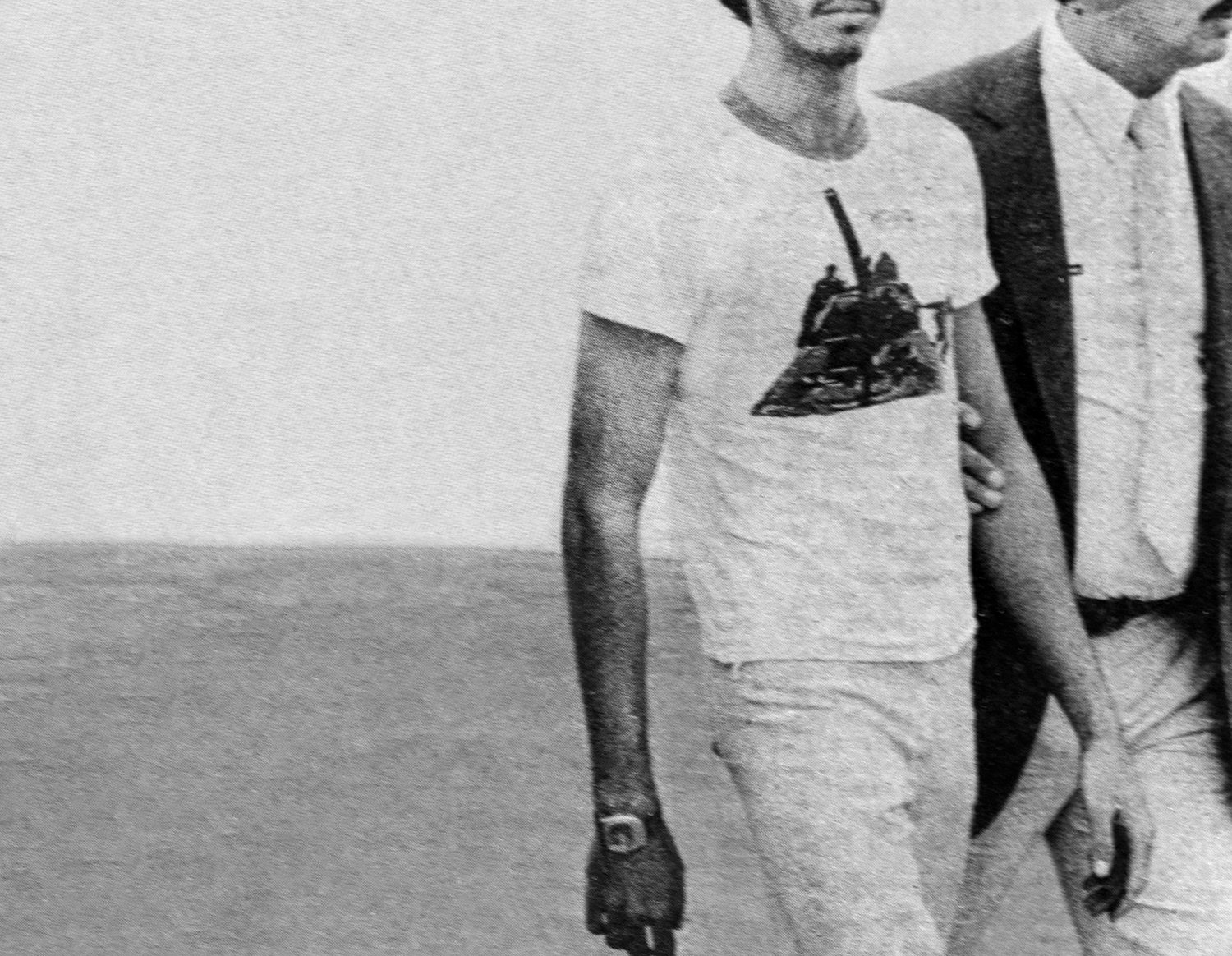
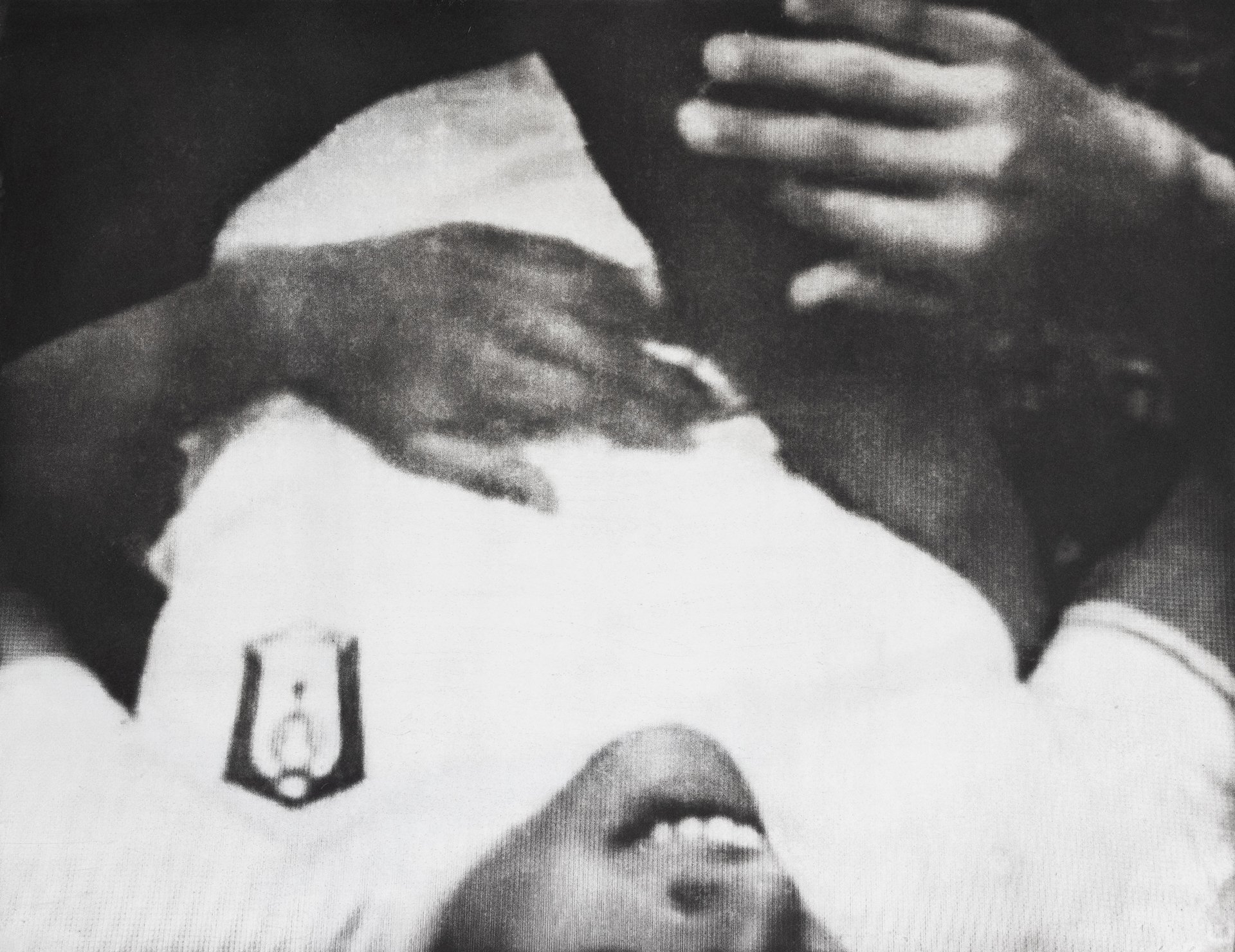
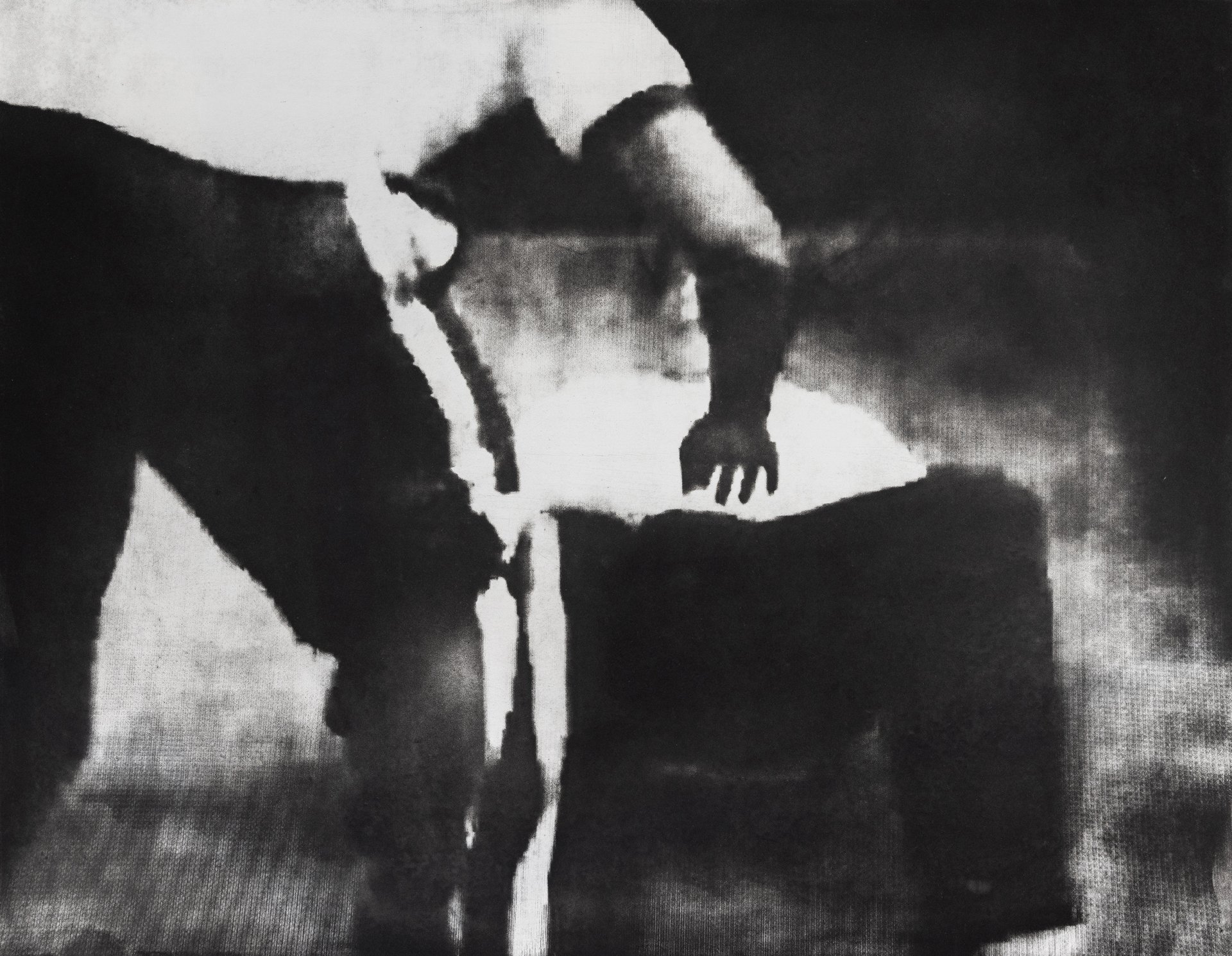
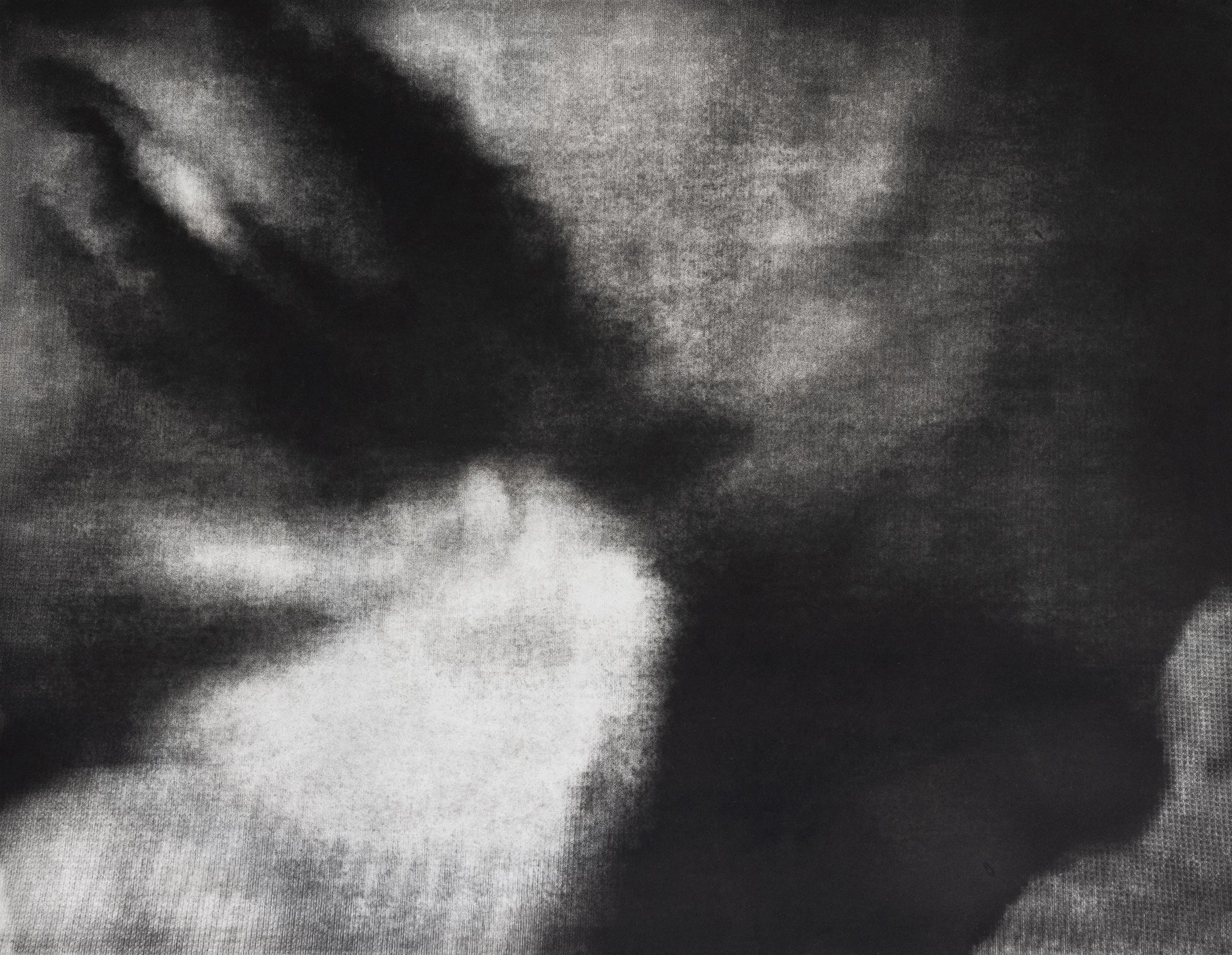
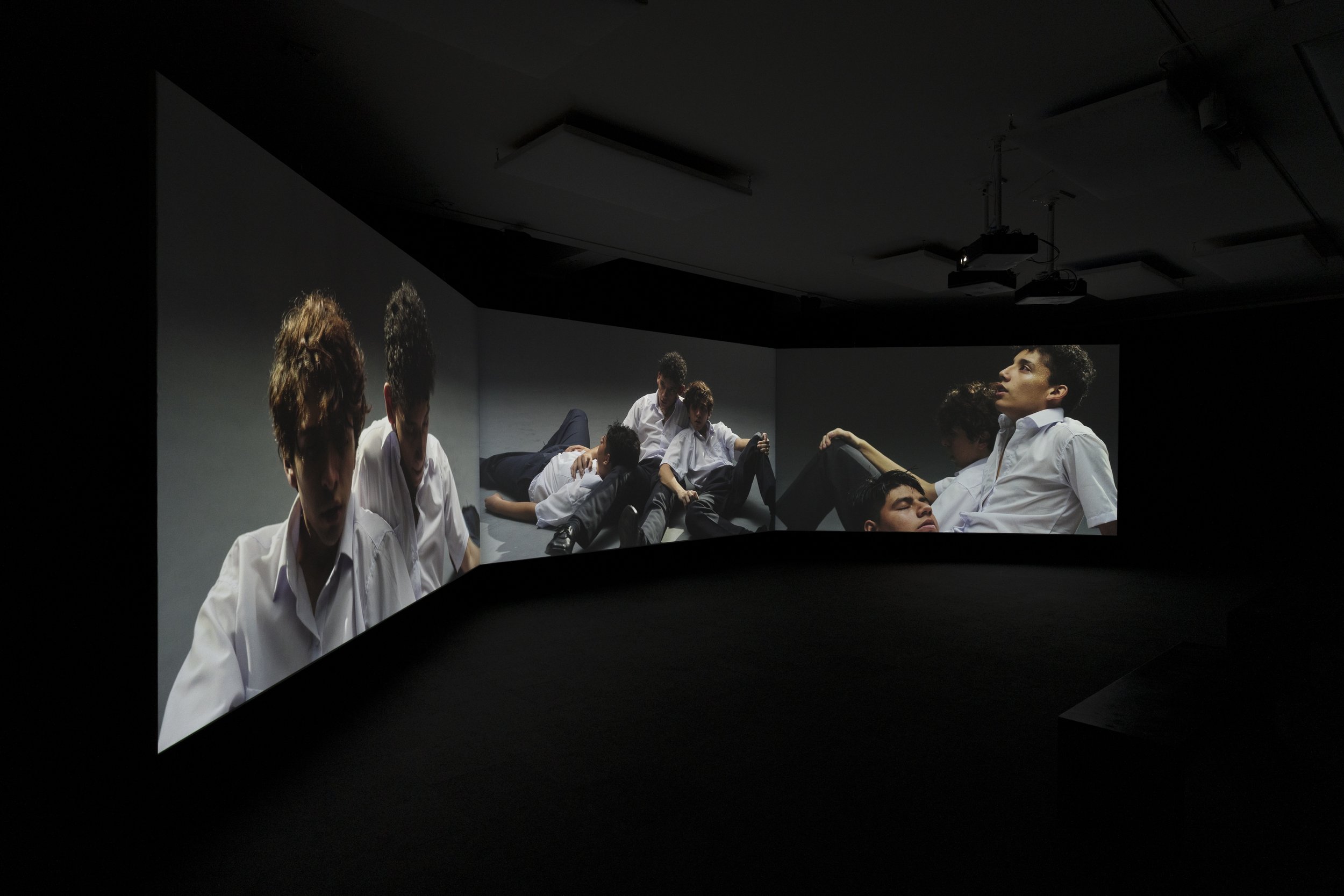
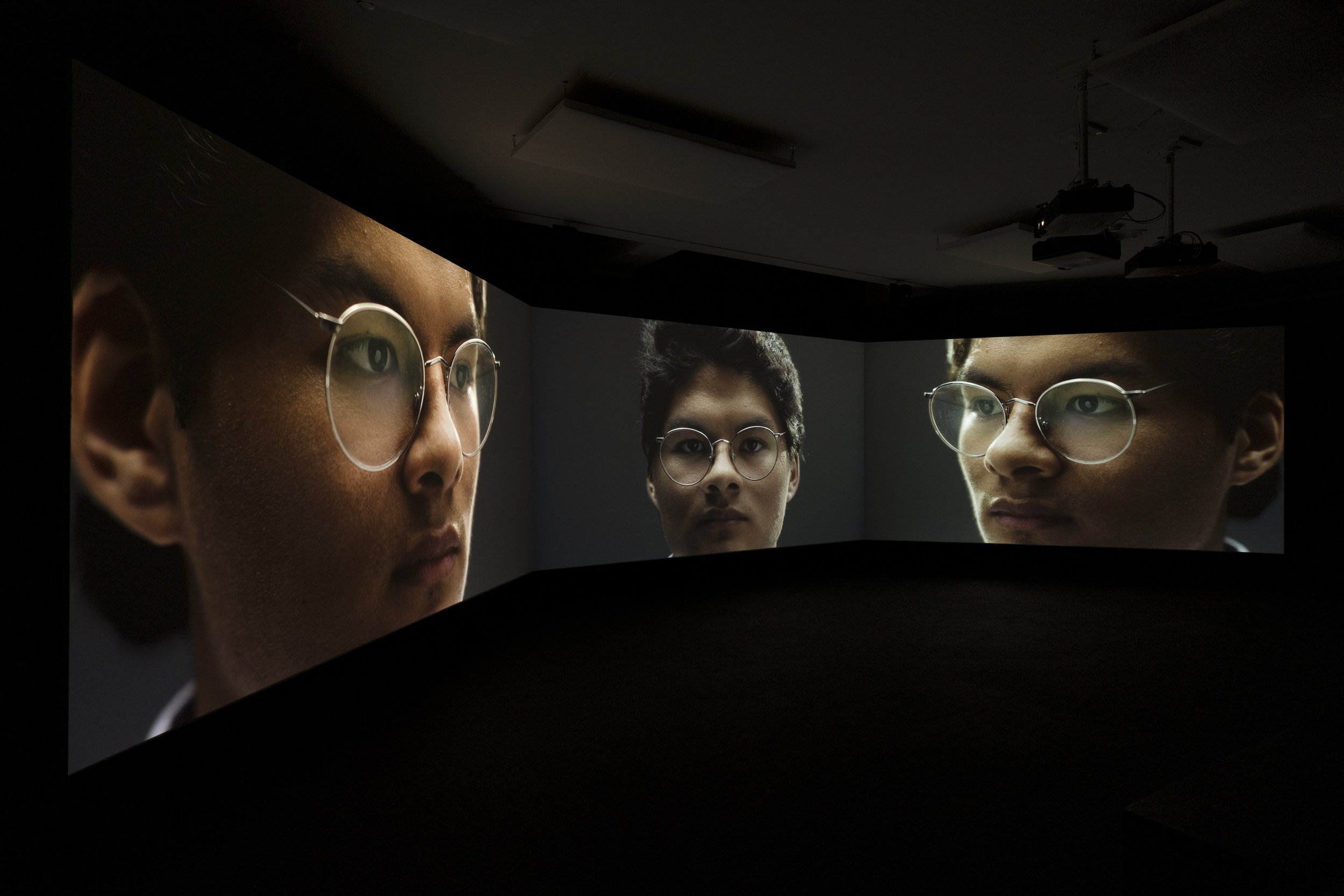
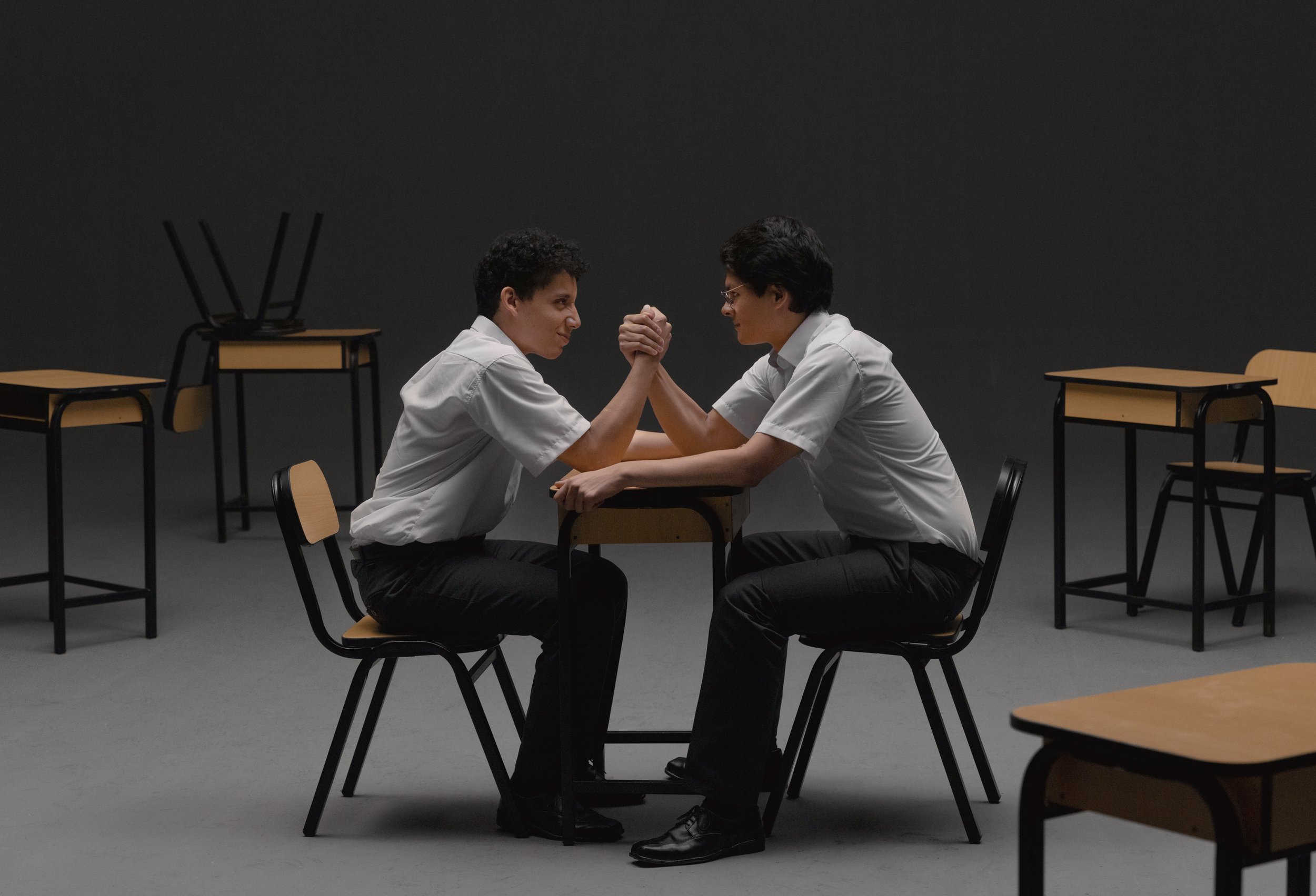
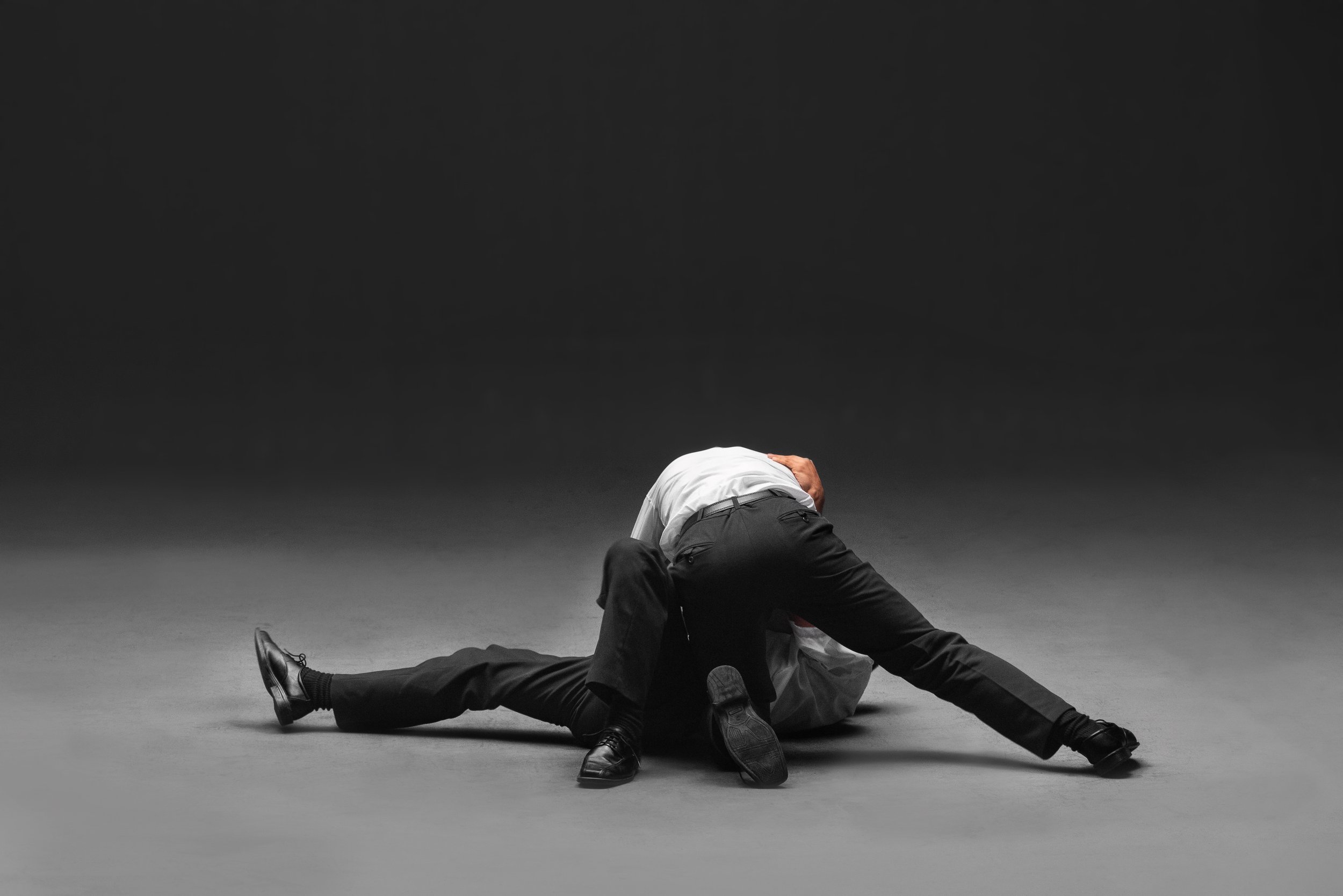
Installation view of Rafael Soldi: Soft Boy, Frye Art Museum, Seattle, October 7, 2023–January 7, 2024. Photo: Jueqian Fang
ABOUT THE BOREN BANNER SERIES
The Boren Banner Series is a public art initiative by the Frye Art Museum that reflects the museum’s commitment to showcasing work by Pacific Northwest artists. Presented biannually, the series gives regional artists the opportunity to create new site-specific work or show a previously unexhibited piece as a monumental, 16 x 20 ft. vinyl banner. The billboard-size work is prominently sited facing Boren Avenue, the Frye’s most visible and accessible physical interface.
Boren Banner Series: Rafael Soldi is organized by Amanda Donnan, Chief Curator and Director of Exhibitions.
Generous support provided by 4Culture/King County Lodging Tax, the Frye Foundation, and Frye Members.
This exhibition opened on October 7, 2023, and will conclude on April 7, 2024. Please visit their website here for more information about this exhibition and others at the Frye Museum. The museum can also be found on Facebook, Youtube, and Instagram.
THE END OF FOSSIL FUEL
Installation View, THE END OF FOSSIL FUEL, the Climate Museum NYC., Photo Credit: Sari Goodfriend
New York, NY The Climate Museum, the first museum in the nation dedicated to climate change, has opened its latest exhibition in SoHo, THE END OF FOSSIL FUEL. Located at 105 Wooster Street in Manhattan, the show features exhibits that educate visitors about the fossil fuel industry and the intertwined histories of inequality and the climate crisis, and that invite visitors to connect and take action.
Installation View, THE END OF FOSSIL FUEL, the Climate Museum NYC., Photo Credit: Sari Goodfriend
The exhibition’s lead artist is R. Gregory Christie, a celebrated illustrator who is an NAACP Image Award winner, a six-time Coretta Scott King Honor recipient, and a Caldecott Honor winner. The show features Christie’s 45-foot mural Making Tomorrow, which envisions the struggle for, and transition to, climate justice.
In addition to the artwork by Christie, the exhibition includes:
A series of exhibits that dive into the origins of the fossil fuel industry and its creation and exploitation of racially defined sacrifice zones and aggressive use of deception, on one hand, and inspiring subjects like the remarkable history of the environmental and climate justice movement and the existence of a (currently silent) supermajority for climate justice in the US, on the other;
Interactive maps of New York City, the U.S., and the world visualizing the connections between the climate crisis and social inequality;
A sticker wall where visitors commit to specific climate actions—creating a vibrant community-built installation that builds collective momentum for addressing both the climate crisis and the inequalities with which it is bound up;
A station where visitors can write postcards that the Museum mails and reflections they share on a large visitor reflection wall;
A children’s activity station with books about climate justice and materials to draw an imagined future; and
A reading corner for adults with a selection of books and articles on the climate crisis, the fossil fuel industry, and the climate justice movement.
“This exhibition explores how the fossil fuel industry manages to keep making a killing off of killing us, and what we can do about it,” said Miranda Massie, Founder and Director of the Climate Museum. “We can’t address the crisis of climate change without also addressing the deep-seated social and racial inequities that underpin it. This exhibition encompasses both the hard truths that we must confront, as well as the astonishing victories won by climate justice communities and leaders fighting for social equality and clean energy together.”
“I hope that my work for this exhibition can help visitors see the connections between our society’s social justice crisis and the ecological and climate crisis, get involved in ongoing work to move us forward, and envision the bright future we can all share,” said muralist R. Gregory Christie “It was inspiring to collaborate with the Museum team on this commission.”
“Climate art like Greg’s remarkable mural inspires powerful emotional reactions in visitors. We’ve repeatedly seen the power of the arts as a pathway into climate engagement. Making Tomorrow opens visitors up to reflect, connect, and take action on climate, satisfying an intense, mostly unmet public appetite,” Massie added.






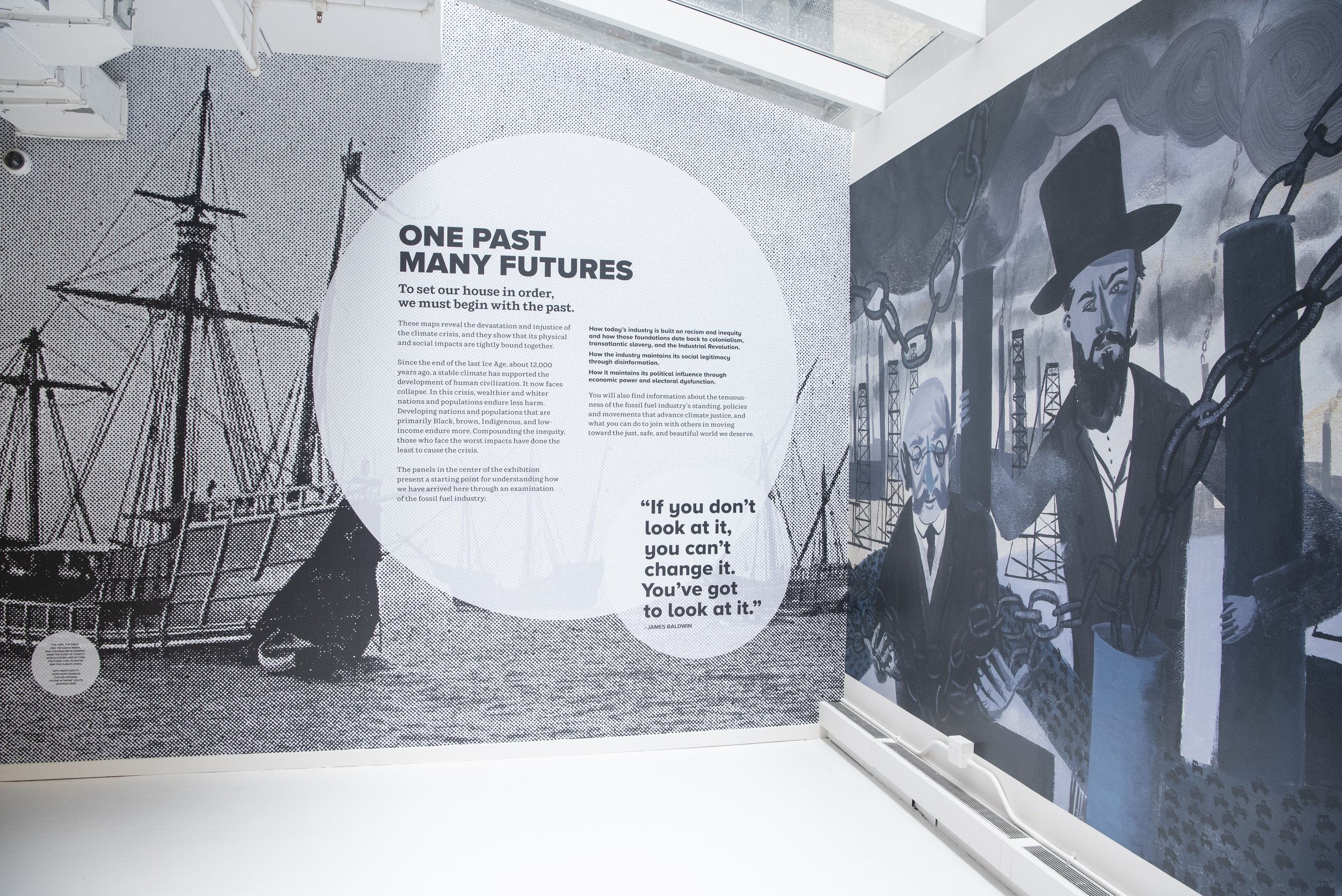

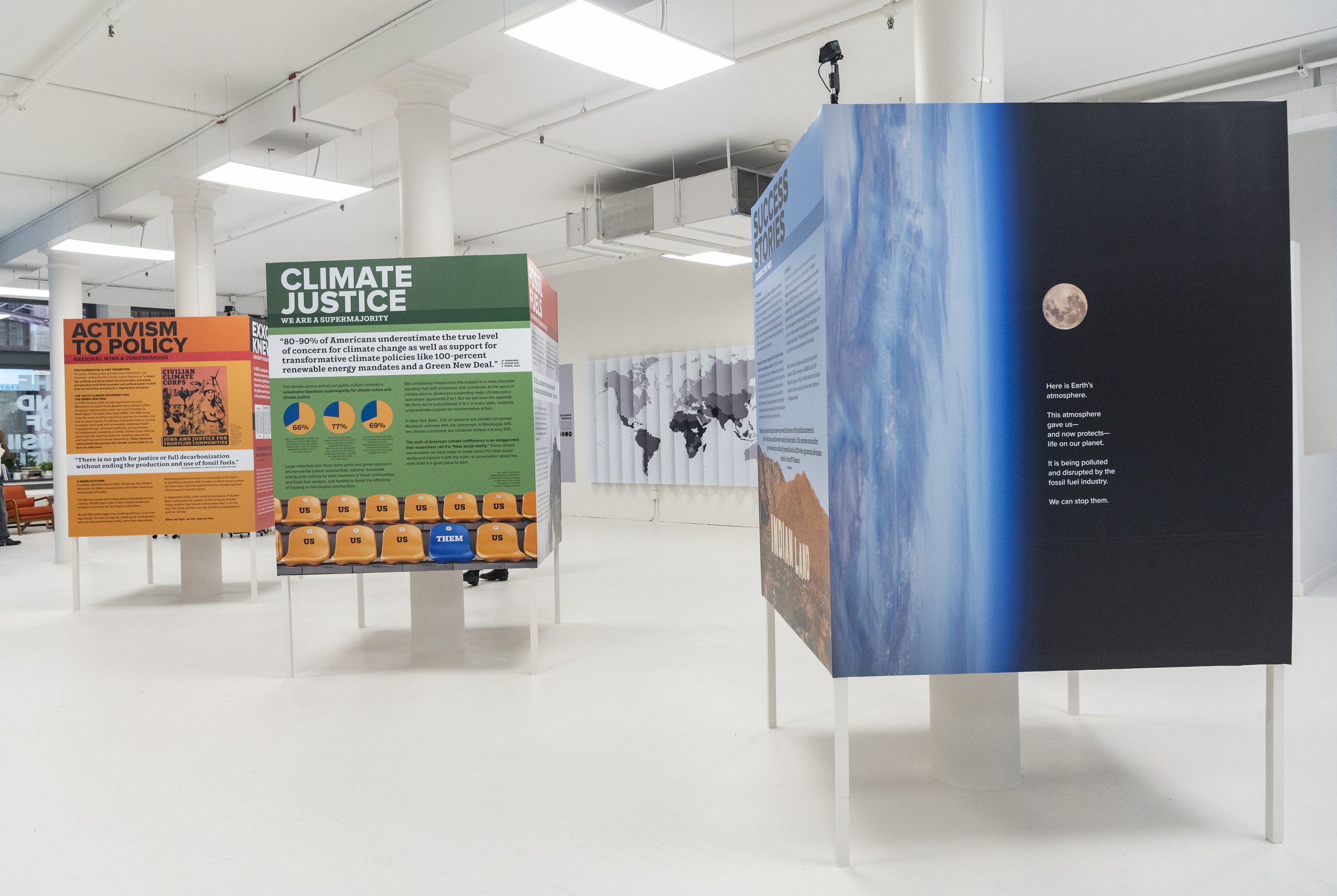
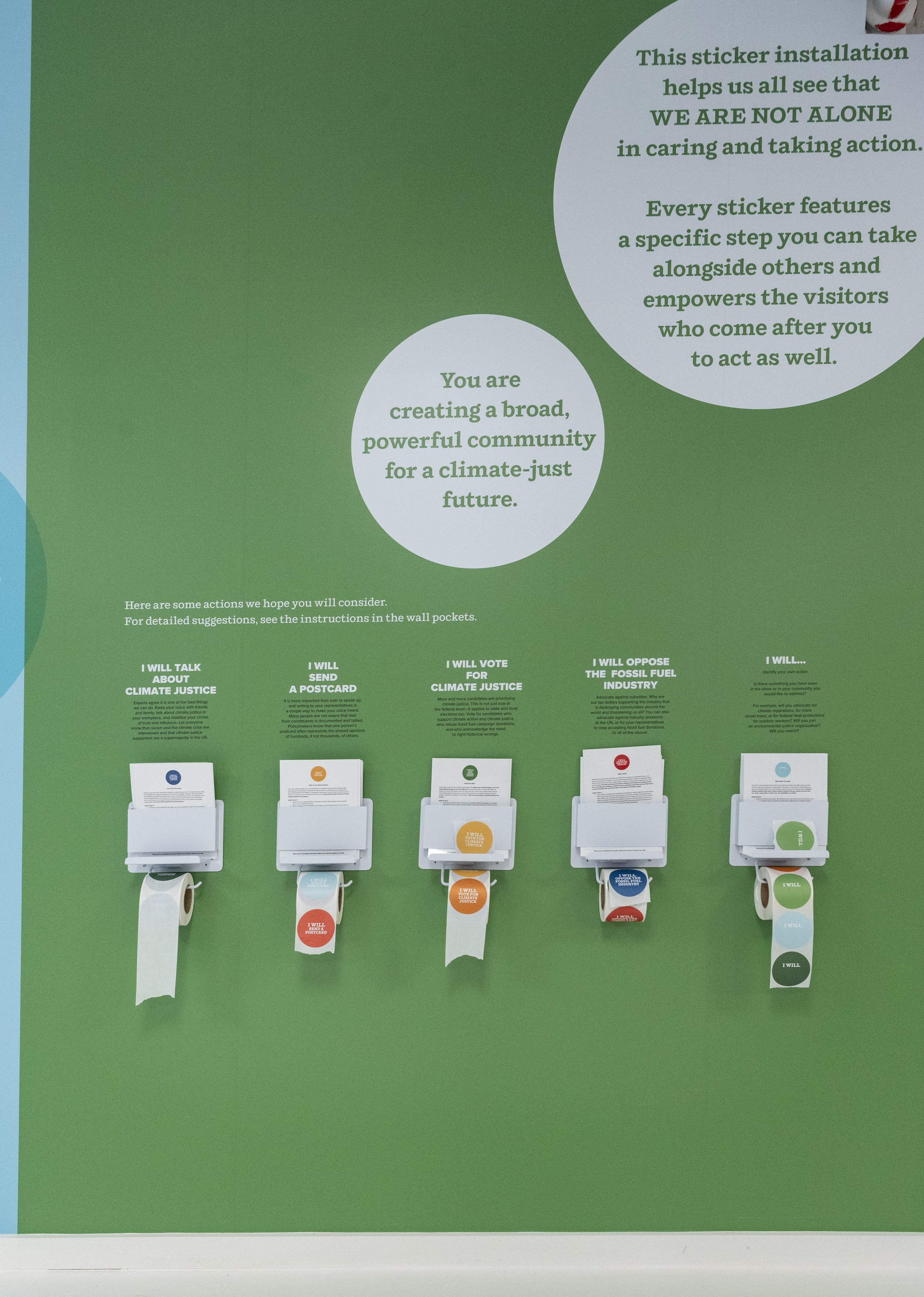


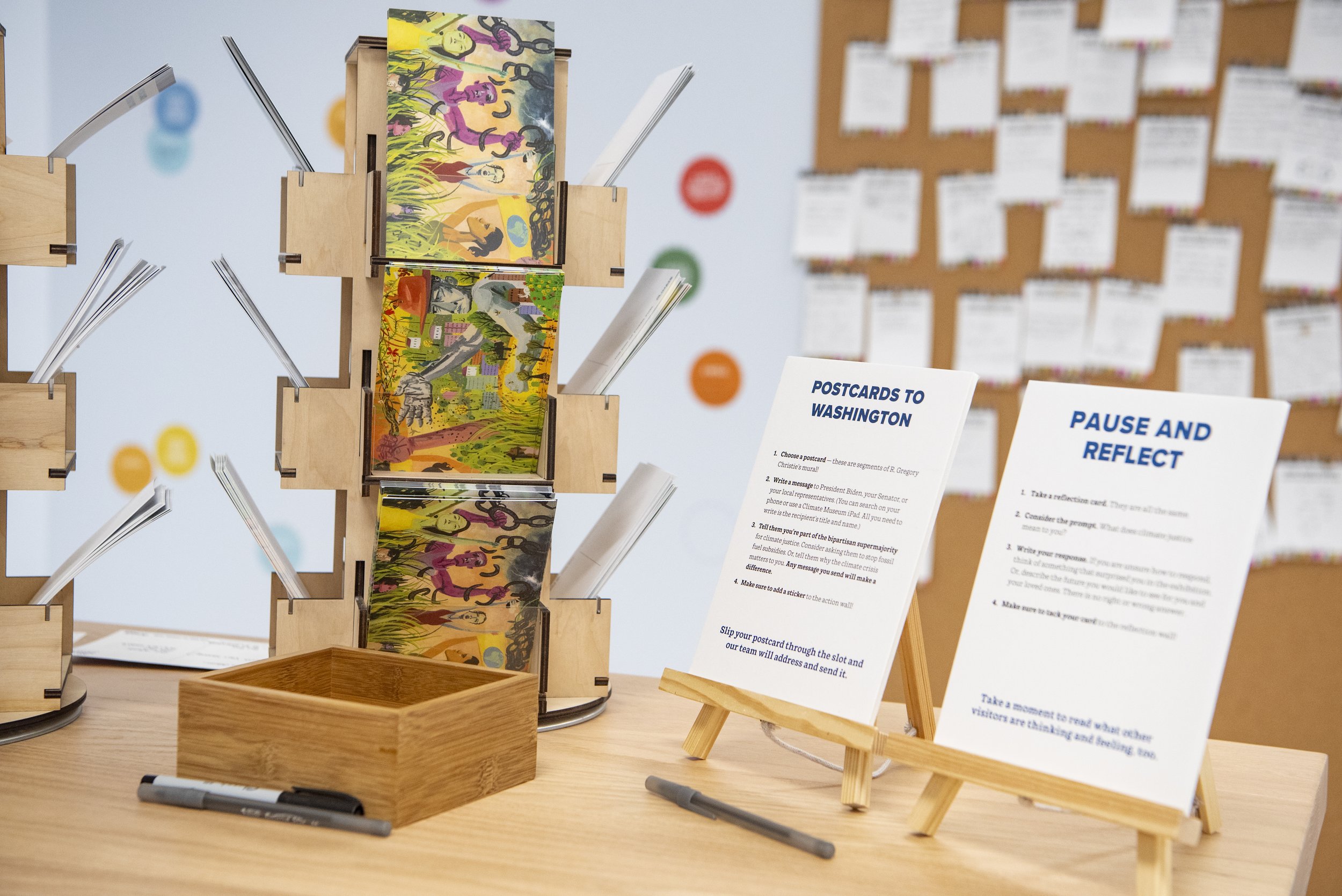

Installation View, THE END OF FOSSIL FUEL, the Climate Museum NYC., Photo Credit: Sari Goodfriend
The Climate Museum has presented public programs and exhibitions since 2018 and recently launched an initiative to scale up to a year-round, transit-accessible location. Its last exhibition in SoHo, which concluded in April 2023, examined and debunked the myth of our society’s indifference toward the climate crisis, debuting David Opdyke’s postcard mural Someday, all this, which offered a bracing commentary on the impact of the climate crisis on the American landscape, both real and imagined. It also included a climate action incubator where visitors could share their reflections on research about the myth of American climate indifference, a sticker wall, and a station to send postcards to public officials to encourage them to take action on the climate crisis.
Courtesy of the Climate Museum NYC
About The Climate Museum
The Climate Museum is the first museum in the United States dedicated to climate change. The Museum mobilizes the power of arts and cultural programming to invite visitors into climate engagement and agency and to transform our public culture for action at scale. The Museum offers free, interdisciplinary, participatory programs that connect constituents to a culture for climate action with a focus on justice, including exhibitions and installations, pop-ups, youth programs, interactive dialogue events, performances, workshops, and more.
The exhibition opened on October 7, 2023, and will welcome visitors through April 28, 2024. Admission is free and open to the public, between the hours of 1 pm to 6 pm, Wednesday through Sunday. During the run of the show, the Museum will also present free public programs, youth programs, community events, and more.
The show examines the fossil fuel industry’s racism and deception and how we can move together toward climate justice.
Follow the Climate Museum on Instagram, X, LinkedIn, and Facebook, and visit its website.
HOPE
AbuQadim Haqq, Museion Wormhole, 2023. Courtesy / © the artist
On September 30, 2023, Museion in Bolzano, Italy, presented HOPE, an international group exhibition exploring spaces of hope between science and fiction, curated by Bart van der Heide and Leonie Radine in collaboration with musician, theorist, and writer DeForrest Brown, Jr. As the final installment of the TECHNO HUMANITIES trilogy, HOPE probes the close alliance between museums and the humanities as sites of active world-building. The exhibition, which occupies the entirety of the museum, includes works from an intergenerational cohort of artists. It is further supported by an anthology of newly commissioned critical texts as well as a rich mediation and event program. The exhibit will close on the 25th of February of this year.
Ever since opening its doors exactly 15 years ago, the Museion building has been repeatedly described as alien, a UFO that landed in the center of Bolzano. HOPE endorses the view of the museum as a spaceship, a time capsule, a portal to another dimension. The exhibition will transform Museion into a production site of wonder, merging science and fiction to evoke hope through individual and collective imaginations of futures and pasts. As Philosopher Ernst Bloch wrote in the introduction of his Principle of Hope (1954): “We need the most powerful telescope, that of polished utopian consciousness,” to penetrate the darkness.
AbuQuadim Haqq, Orbital Satellite Workers, 2023. Courtesy / © the artist
Ever since opening its doors exactly 15 years ago, the Museion building has been repeatedly described as alien, a UFO that landed in the center of Bolzano. HOPE endorses the view of the museum as a spaceship, a time capsule, a portal to another dimension. The exhibition will transform Museion into a production site of wonder, merging science and fiction to evoke hope through individual and collective imaginations of futures and pasts. As Philosopher Ernst Bloch wrote in the introduction of his Principle of Hope (1954): “We need the most powerful telescope, that of polished utopian consciousness,” to penetrate the darkness.
AbuQadim Haqq, Leo Rodrigues, and Hector Rubilar, Timeline of the Black Technology, 2021. Courtesy the artists.
HOPE invites visitors to move between real and imagined spaces and times to try on alternative viewpoints. The exhibition architecture suggests an upside-down, non-linear path through the building, leading first to the fourth floor, which showcases various artistic time capsules in an observatory-like setting. By proceeding through individual and collective artistic cosmologies, the self and the other are open for exploration beyond a humancentric worldview. Here, the selection of artworks creates a sci-fi atmosphere between apocalyptic scenarios and new beginnings at the intersection of the humanities, technology, ecology, and economy.
Artists exhibiting on the third floor interrogate new tools and challenges in the era of artificial intelligence and other forms of digital worldbuilding. Their arcade-like installations create immersive spaces of imagination between the virtual and the real, memory and forgetting.
The second floor houses an archive dedicated to the Afrofuturist myth of Drexciya. The archive draws on DeForrest Brown, Jr.’s thorough research on the history of techno for his book Assembling a Black Counter Culture (2022), which is partly translated into space. At Museion, he arranges numerous Detroit techno album covers and paintings by AbuQadim Haqq alongside maps and timelines while a story in sound unfolds with his album Techxodus (2023) as well as his mixes The Myth of Drexciya (2023) and Stereomodernism (2020). Thanks to the longstanding dialogue between Brown and Haqq and the record collection of DJ Veloziped / Walter Garber in Bolzano, HOPE marks the first time this previously overlooked artistic form of historiography and world-building is experienced in a museum to this extent.
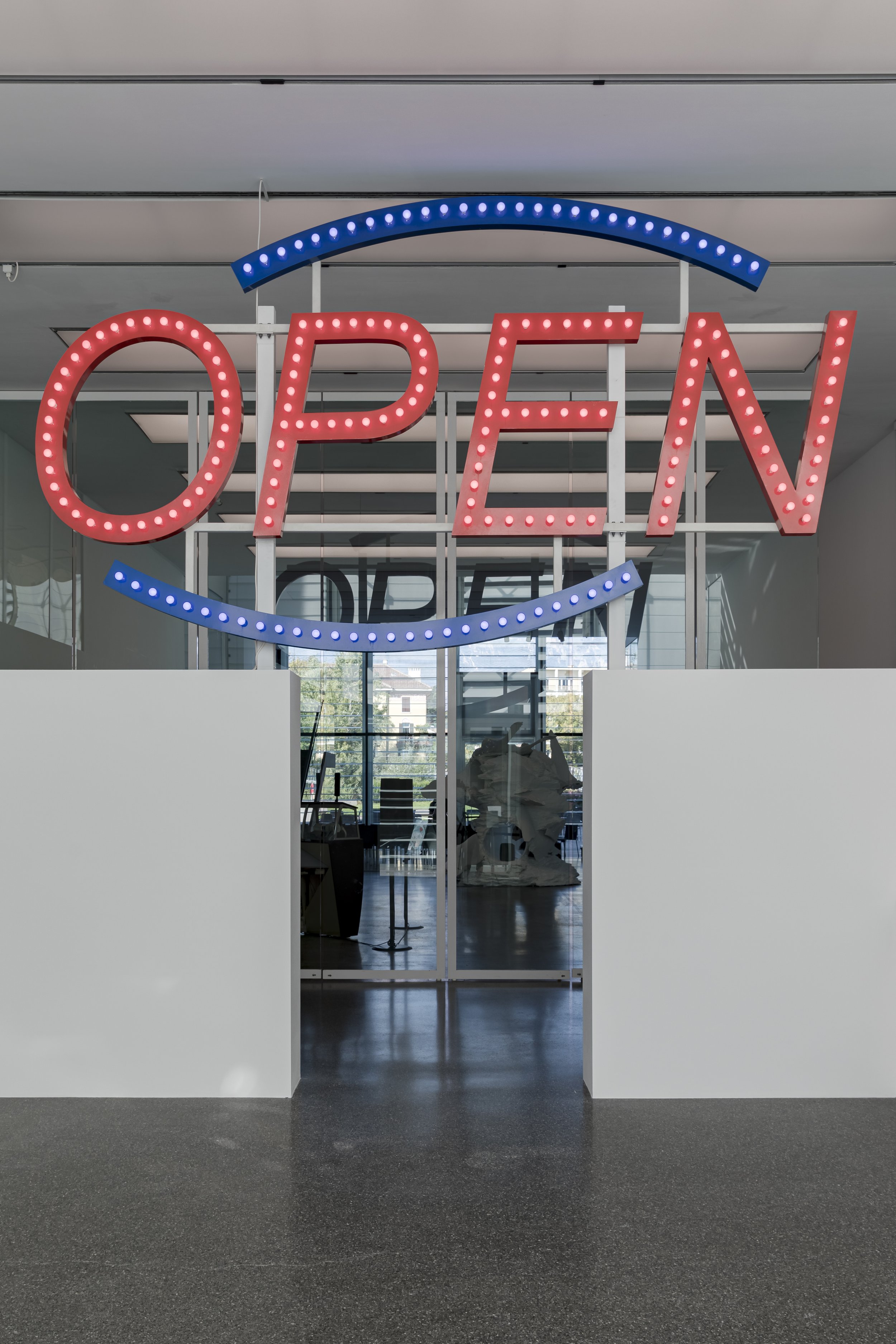
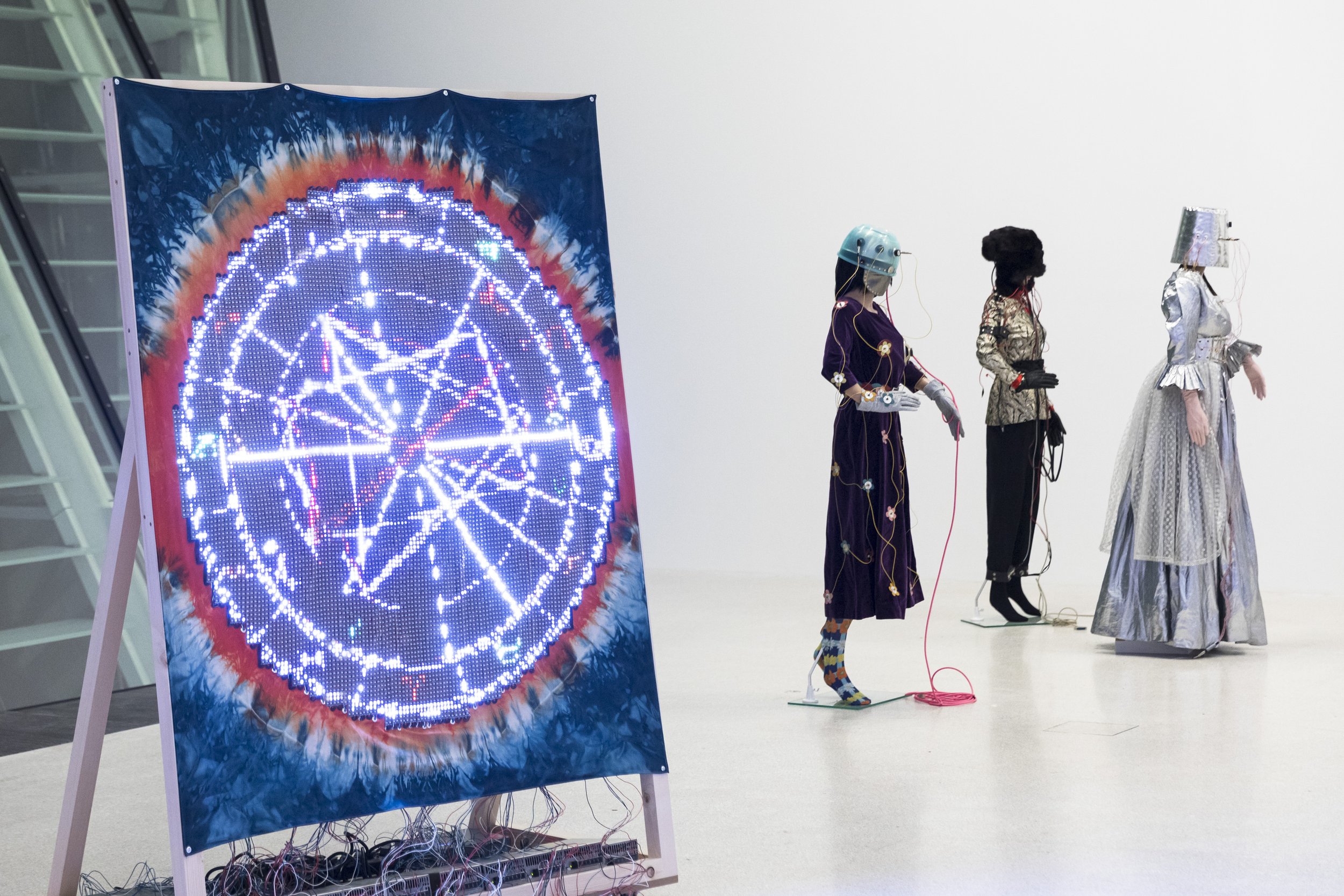

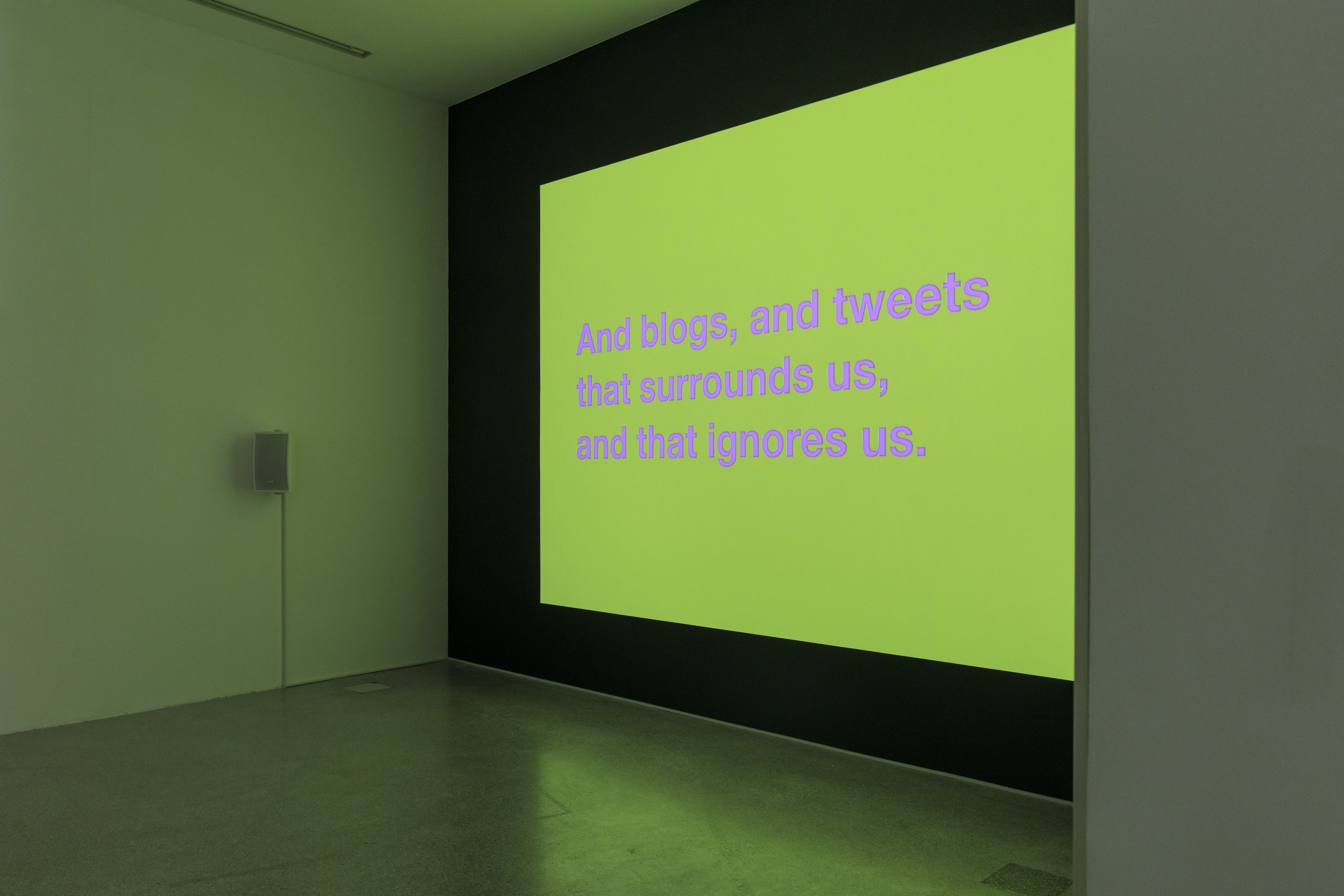
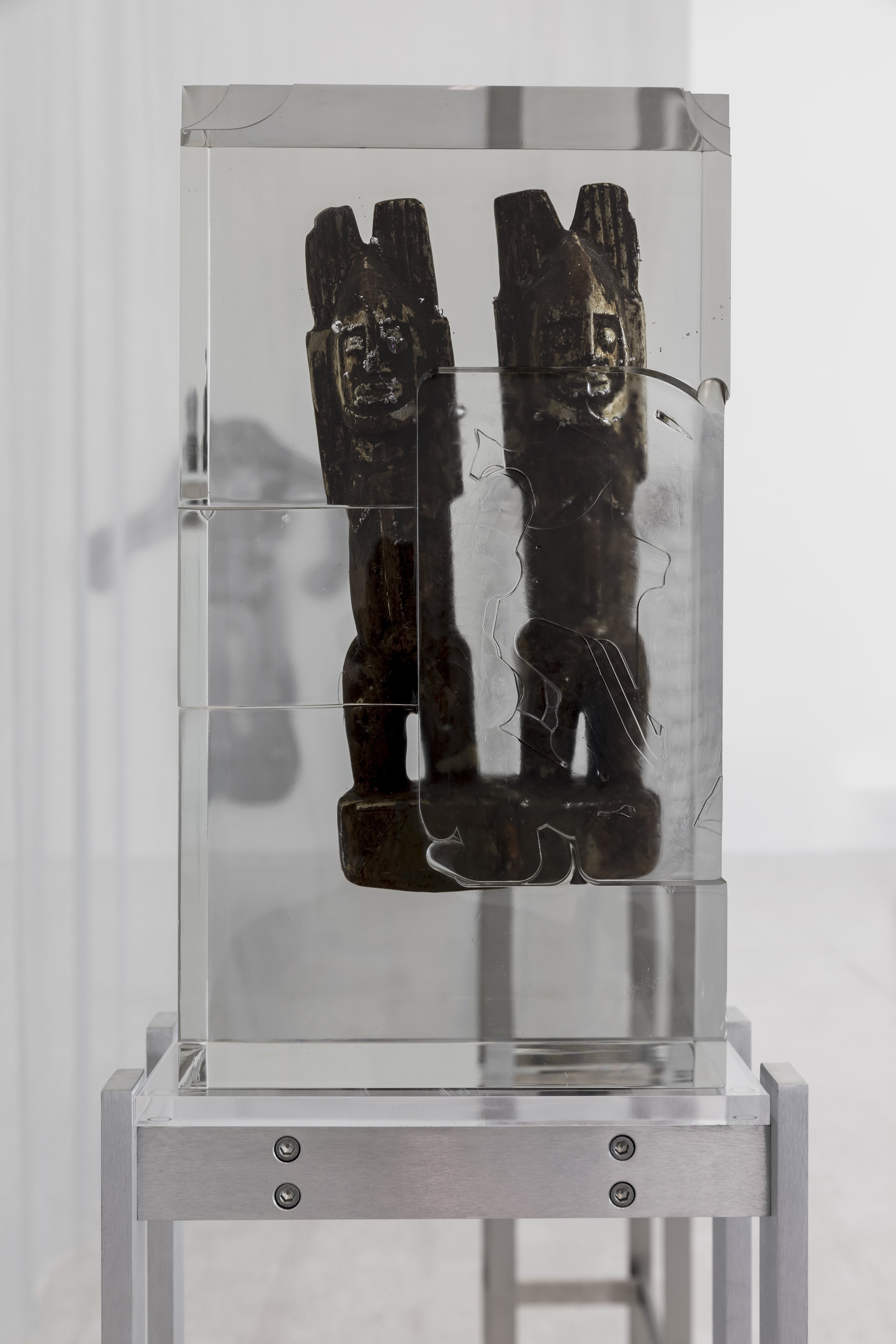
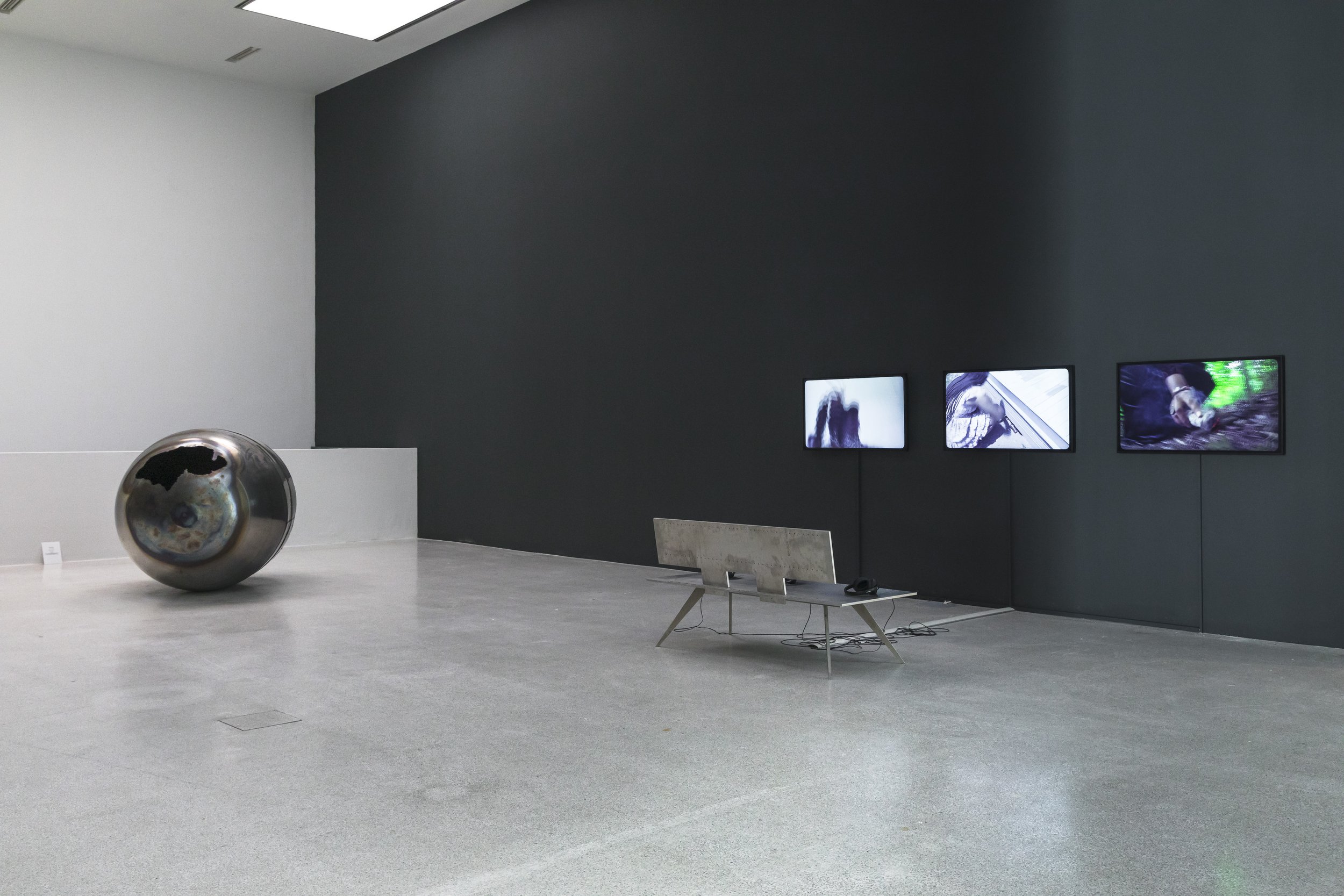
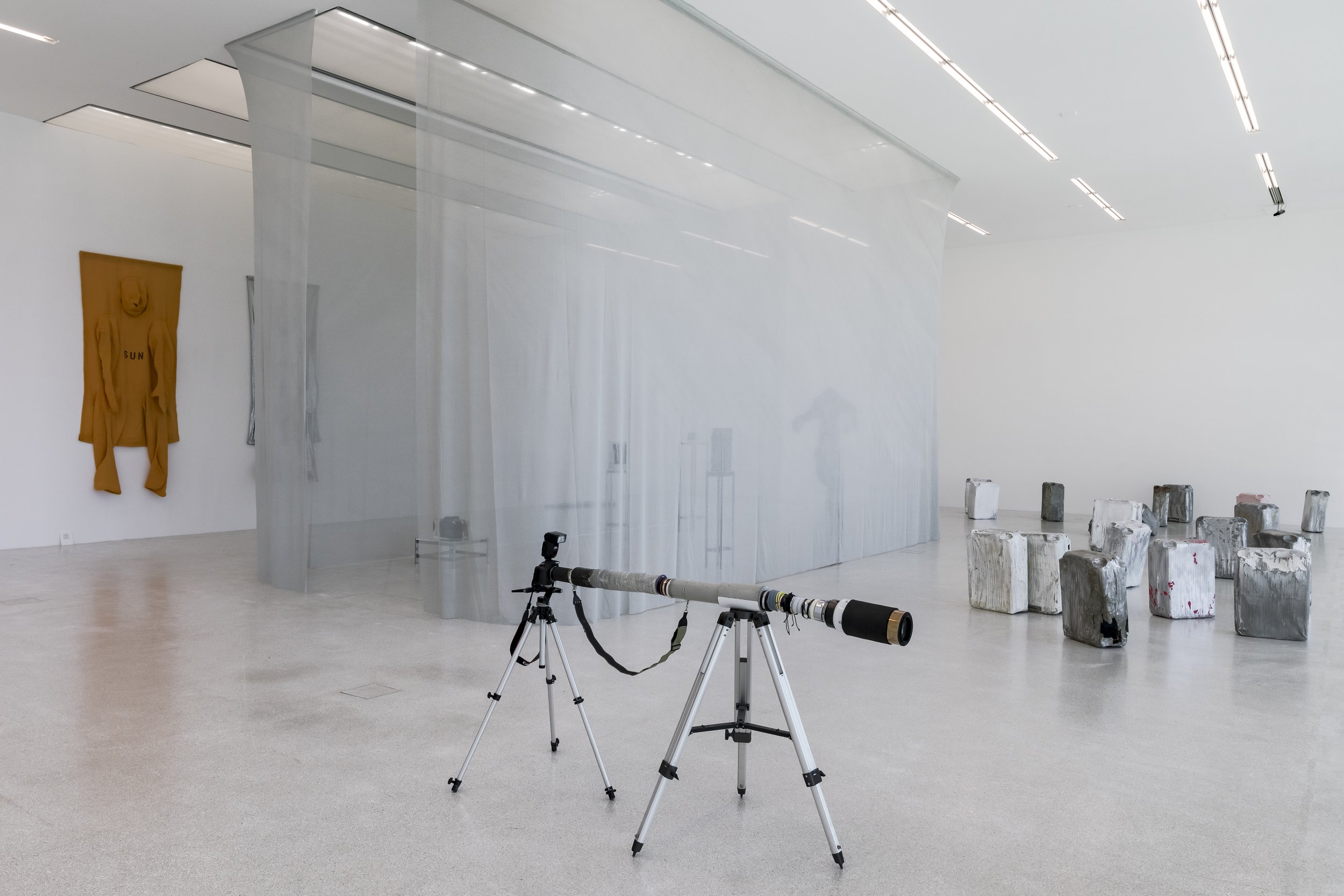
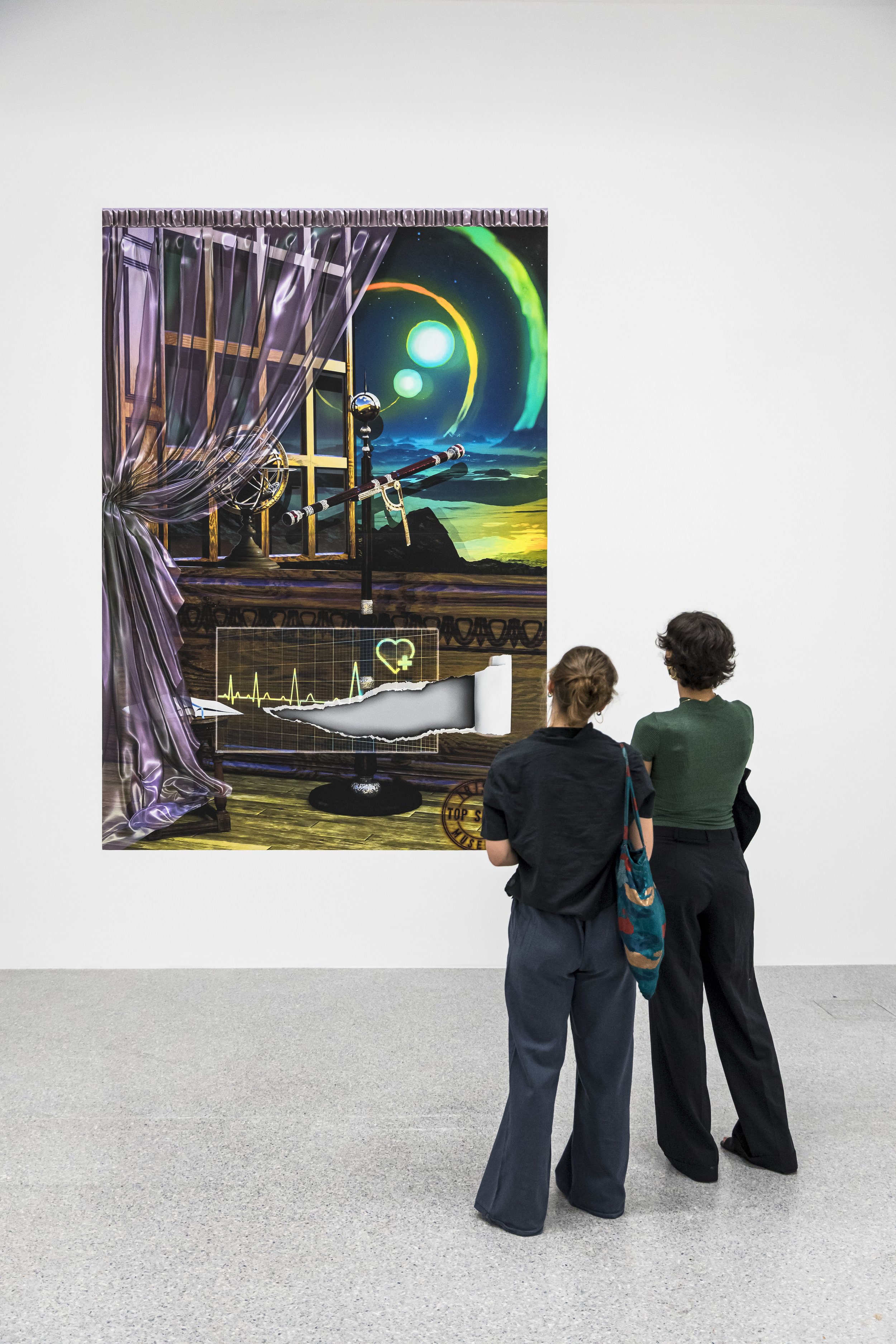
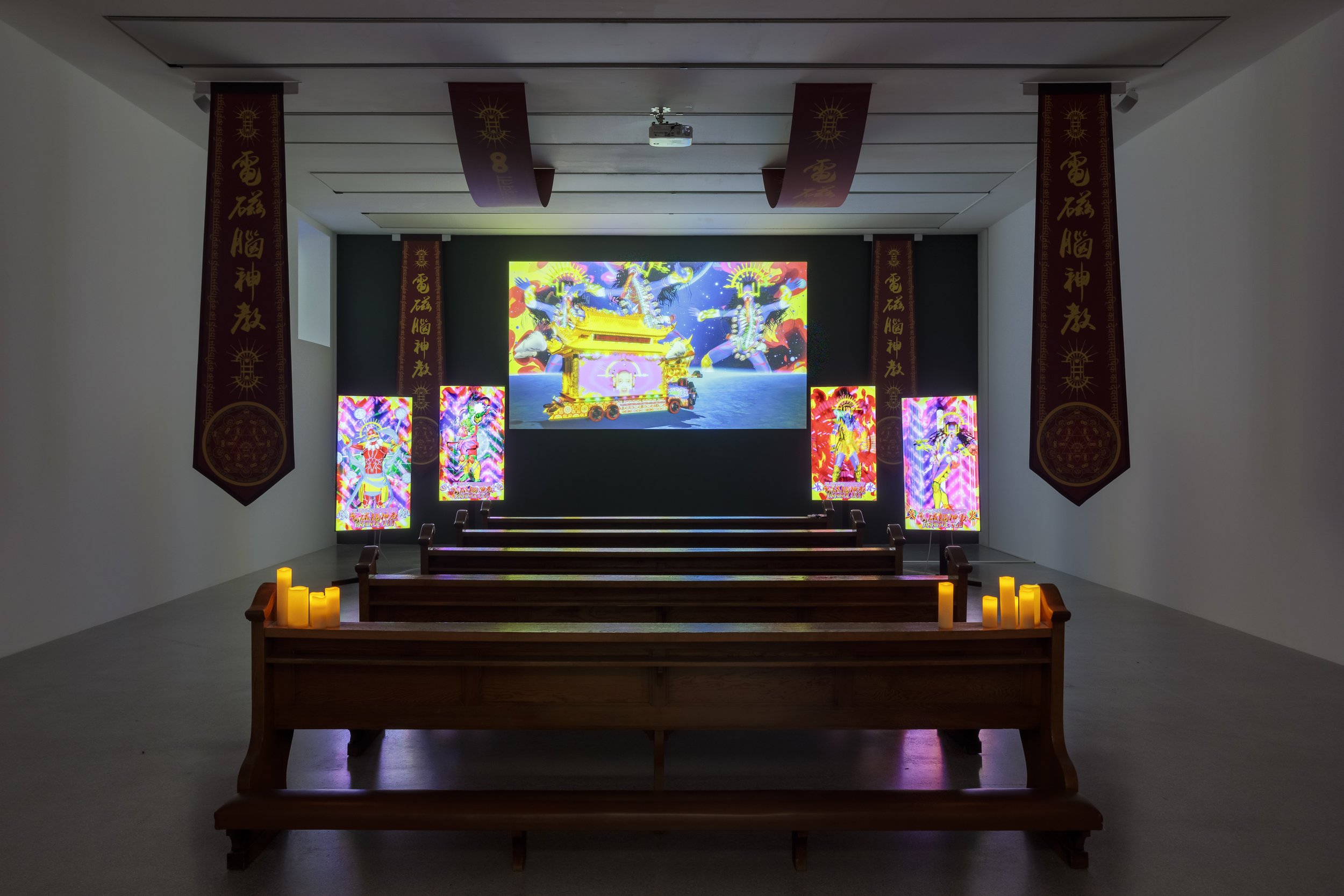

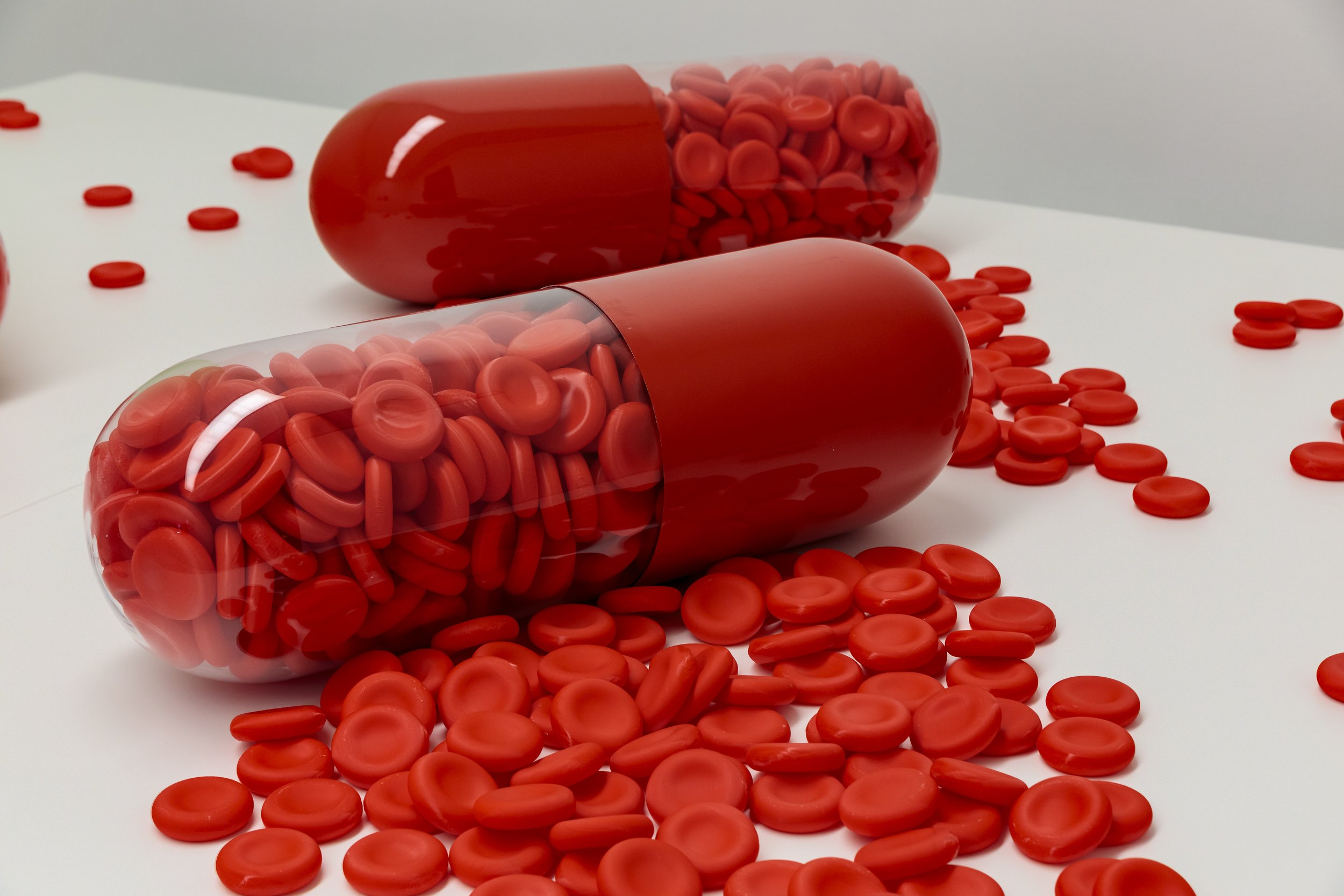


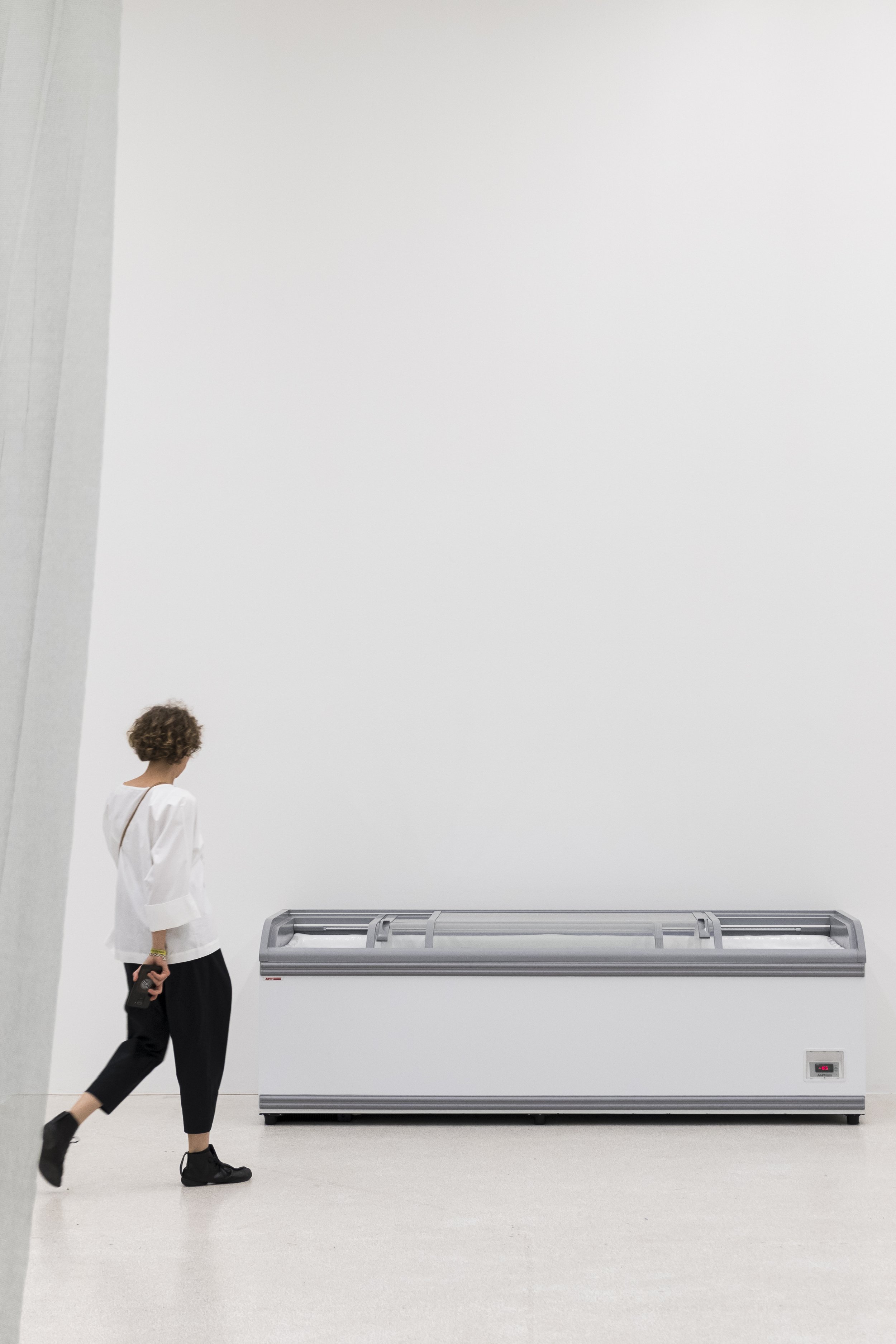
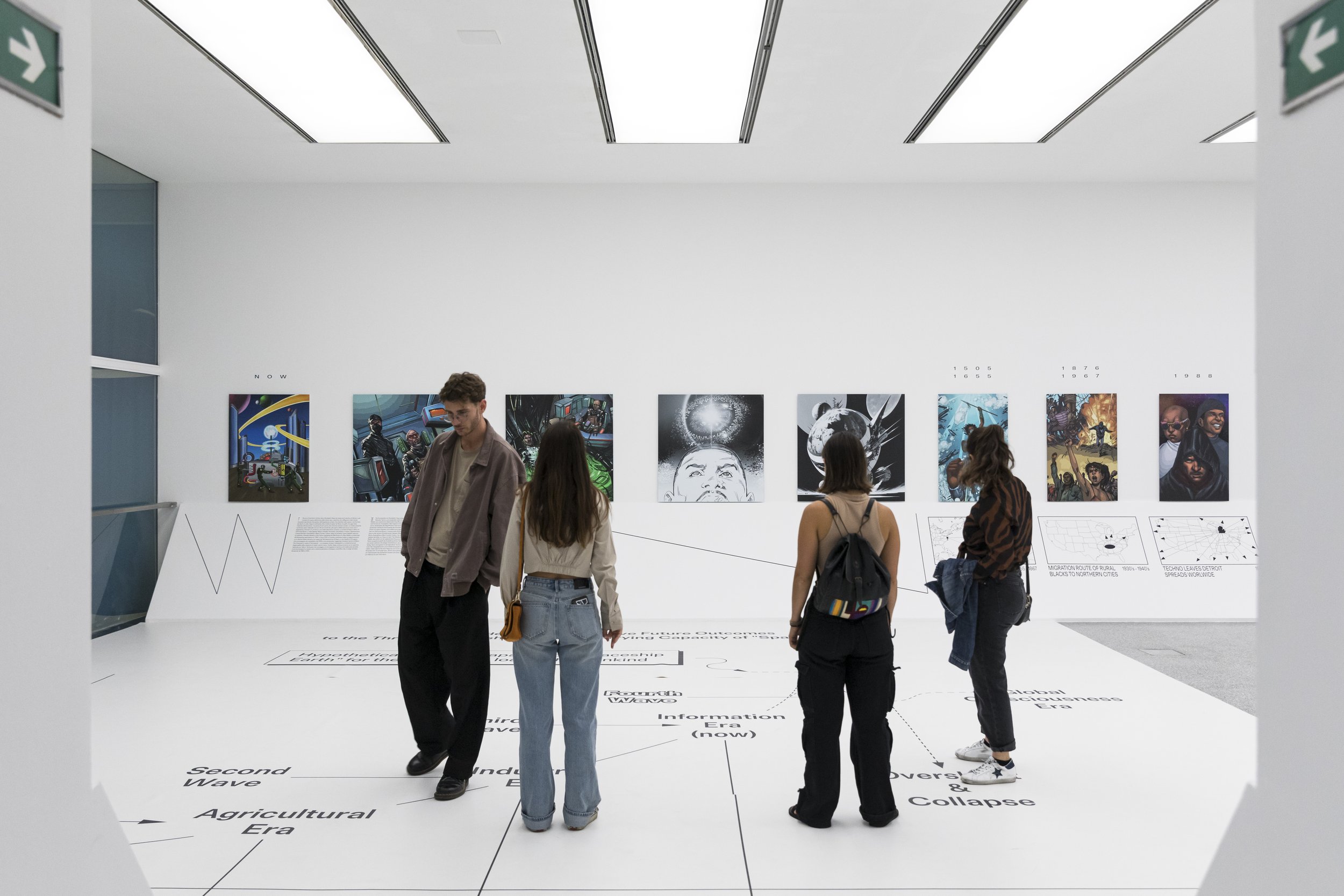

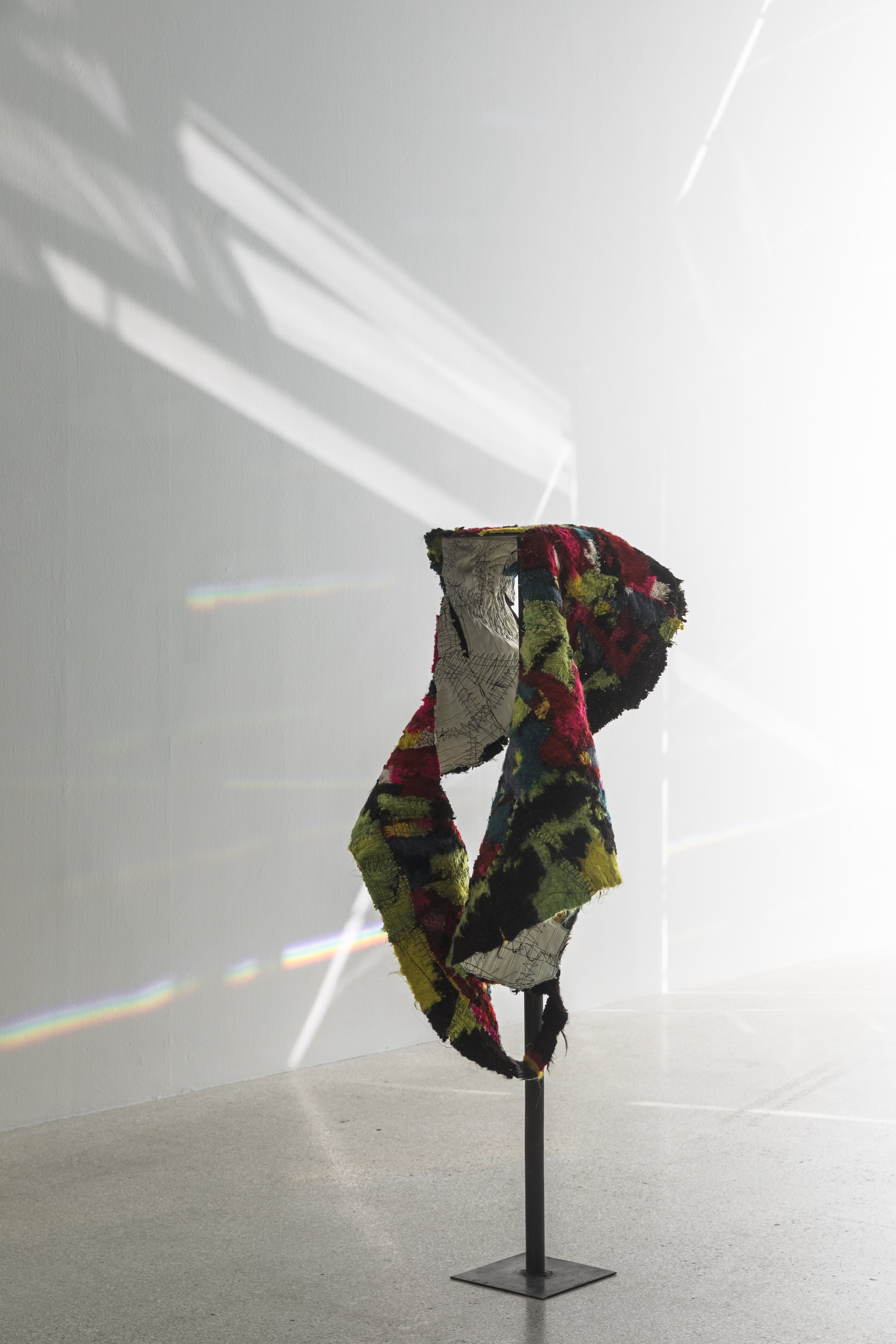
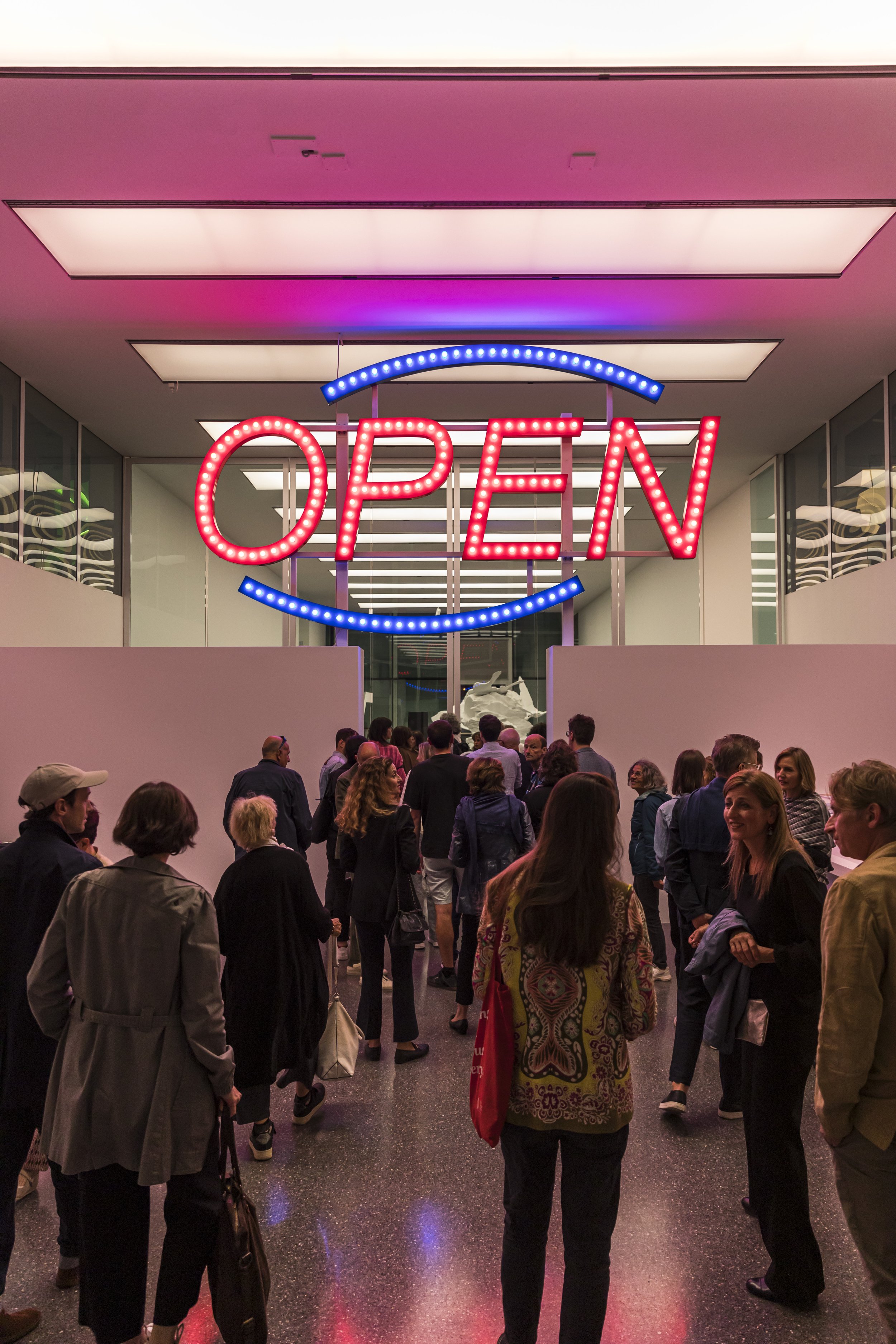
Installation view, HOPE, Museion in Bolzano, Italy, 2024. Courtesy Museion
Finally, following the guiding logic of the wormhole depicted in Haqq's key visual artwork for the exhibition, the ground floor creates a passage for lightning-fast travel between distant points in space-time. The combination of unearthed and just emerging works bridges the histories and futures of Museion as a collecting institution and opens a space of listening, speech, and discussion of HOPE's key questions: Where do we come from, and where do we want to go?
The exhibition includes pieces by Almare, Sophia Al-Maria, Ei Arakawa, Trisha Baga, Neïl Beloufa, Black Quantum Futurism, Tony Cokes, Irene Fenara, Michael Fliri, Petrit Halilaj, Matthew Angelo Harrison, AbuQadim Haqq, Andrei Koschmieder, Maggie Lee, Lawrence Lek, Nicola L., Linda Jasmin Mayer, Beatrice Marchi, Bojan Šarčević, Marina Sula, Suzanne Treister, Ilaria Vinci, LuYang, and works from the Museion collection by Allora & Calzadilla, Shūsaku Arakawa, Ulrike Bernard & Caroline Profanter, Shu Lea Cheang, Tacita Dean, Sonia Leimer, Ana Lupaş, and Riccardo Previdi.
The HOPE program further includes the Italian premiere of a major performance by choreographer and dancer Trajal Harrell and the Schauspielhaus Zürich ensemble in collaboration with Transart, an off-site exhibition by artist Thomas Feuerstein hosted and supported by NOI Techpark, several Museion Art Club events, and a rich mediation program that actively engages the audience in negotiating "spaces of hope.”
HOPE marks the third chapter of TECHNO HUMANITIES with an international research group consisting of Bart van der Heide, Leonie Radine, DeForrest Brown, Jr., and Museion Passage Group with the exhibition design by Diogo Passarinho Studio
Publication
HOPE is complemented by an anthology of newly commissioned critical texts by Bart van der Heide, Leonie Radine, DeForrest Brown, Jr., Mahan Moalemi, and Ytasha L. Womack, published by Hatje Cantz, which concludes the trilogy of volumes dedicated to TECHNO HUMANITIES. The key visual artwork in the communication of the exhibition is created by AbuQadim Haqq, who also contributes to the anthology with a set of digital paintings that relate to his illustrations of historic Detroit techno album covers and his renowned Afrofuturist graphic novels.
TECHNO HUMANITIES
TECHNO HUMANITIES is a three-year multidisciplinary research project of exhibitions, publications, and public programs. It is Museion’s most extensive experiment to date, involving all staff members and regional stakeholder communities. TECHNO HUMANITIES explores the urgent, existential questions of what it is to be a global citizen in the present-day dependency between ecology, technology, and economy.
In partnership with
Transart Festival of contemporary culture
NOI Techpark
Institutional partners
Autonome Provinz Bozen Südtirol – Provincia Autonoma di Bolzano Alto Adige
Stiftung Fondazione Sparkasse
Museion Private Founders
For more information about this exhibition or others at the museum, please visit their site here. The museum can also be found on Instagram, YouTube, and Facebook.
Lhola Amira: Facing The Future
IRMANDADE: The Shape of Water in Pindorama (2018–2020). iNyembezi zomKhathilibe - lágrimas do universo, 2019 (film still). Courtesy of SMAC Gallery. © Lhola Amira.
Lhola Amira: Facing the Future launches a new program of special exhibitions that will interpret the African art collection as a living and evolving practice through the lens of contemporary art.
This solo exhibition, the artist’s first in the United States, features the newly created, site-specific spiritual portal Philisa: Zinza Mphefumlo Wami (2022). Philisa are unique portals, sacred spaces for the cleansing of wounds, honoring ancestors, and fostering connection. Visitors are invited to enter this sacred grove with support for whatever may unfold. Also included is the single-channel video projection IRMANDADE: The Shape of Water in Pindorama (2018–2020), produced by the artist in Bahia, Brazil. The film documents the artist’s journey through the city, contemplating the wounds of the ocean, the land, and the descendants of enslaved Africans while offering gestures toward healing.
Ancestral Screen (1890–1920) Pokia Family, Nigeria. Iroko Wood, Bamboo, Rattan, Pigment, Vegetable Fibers, Metal, 90.2 x 86.4 cm (35 1/2 x 34 in.) The image was provided courtesy of the Fine Arts Museums of San Francisco.
Artist Lhola Amira travels the world asking, “Where does it hurt, why does it hurt, how does it hurt, and what do WE do with our wounded-ness? How can WE move through the wound and gesture for healing?”*This exhibition explores these questions in the context of the journey of artworks and people from Africa across space and time as it acknowledges the wounds of descendants of Africans. Amira’s art practice evolved from the spirituality of the Nguni of South Africa, which combines Christianity with traditional values. THEY adapted this living tradition for today’s world, inspiring visitors to remember ancestors and descendants as a healing practice. The exhibition features a new site-specific commission, Philisa: Zinza MphefumloWami(2022), which translates to “Let It Be Healed: Be Steady My Breath, MySpirit.”Philisais a sacred gateway to support individual and collective health through listening and relaxation. Lhola AmiraFacing the FutureArtist Lhola Amira travels the world asking, “Where does it hurt, why does it hurt, how does it hurt, and what do WE do with our wounded-ness? How can WE move through the wound and gesture for healing?”*This exhibition explores these questions in the context of the journey of artworks and people from Africa across space and time as it acknowledges the wounds of descendants of Africans. Amira’s art practice evolved from the spirituality of the Nguni of South Africa, which combines Christianity with traditional values. THEY adapted this living tradition for today’s world, inspiring visitors to remember ancestors and descendants as a healing practice.
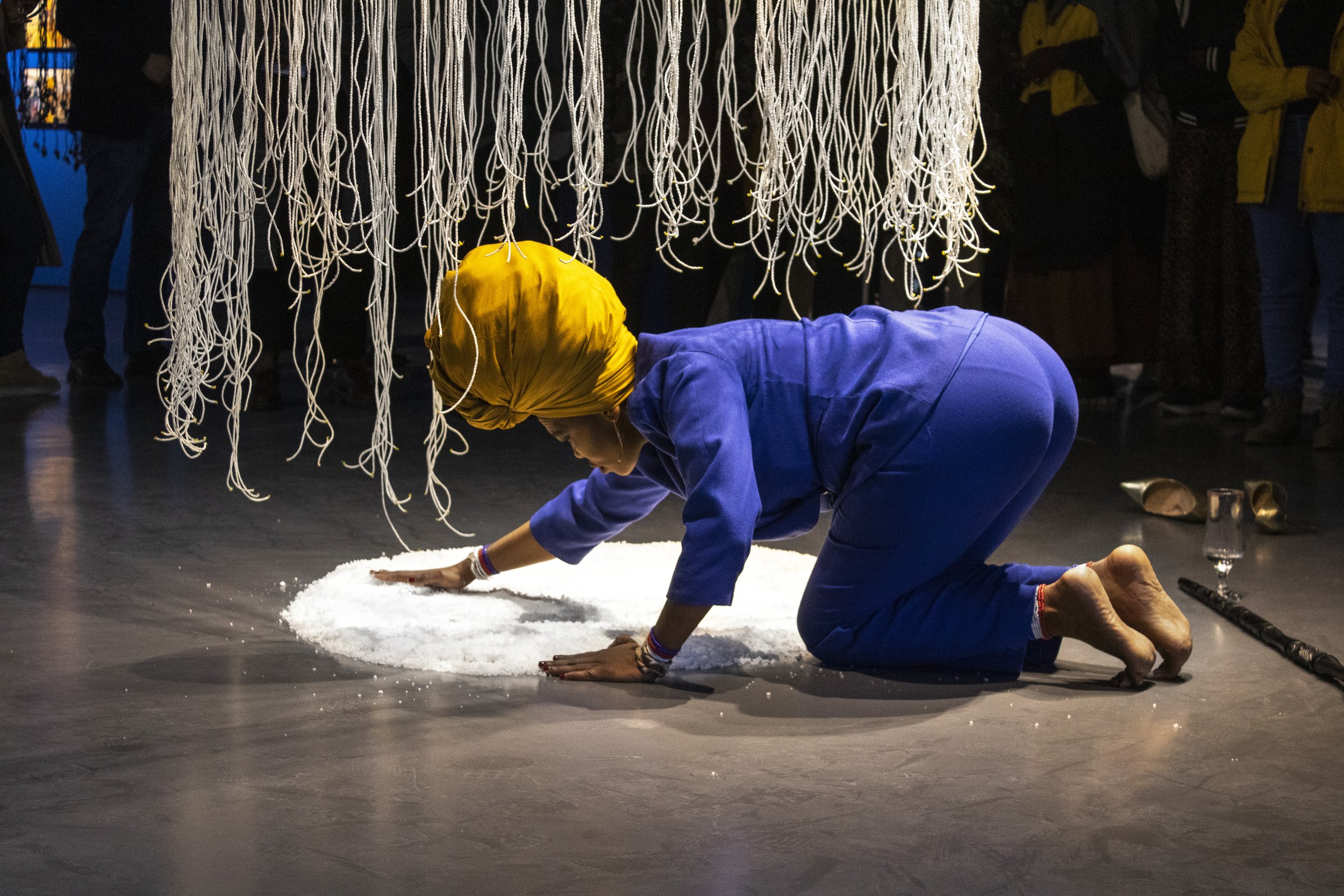
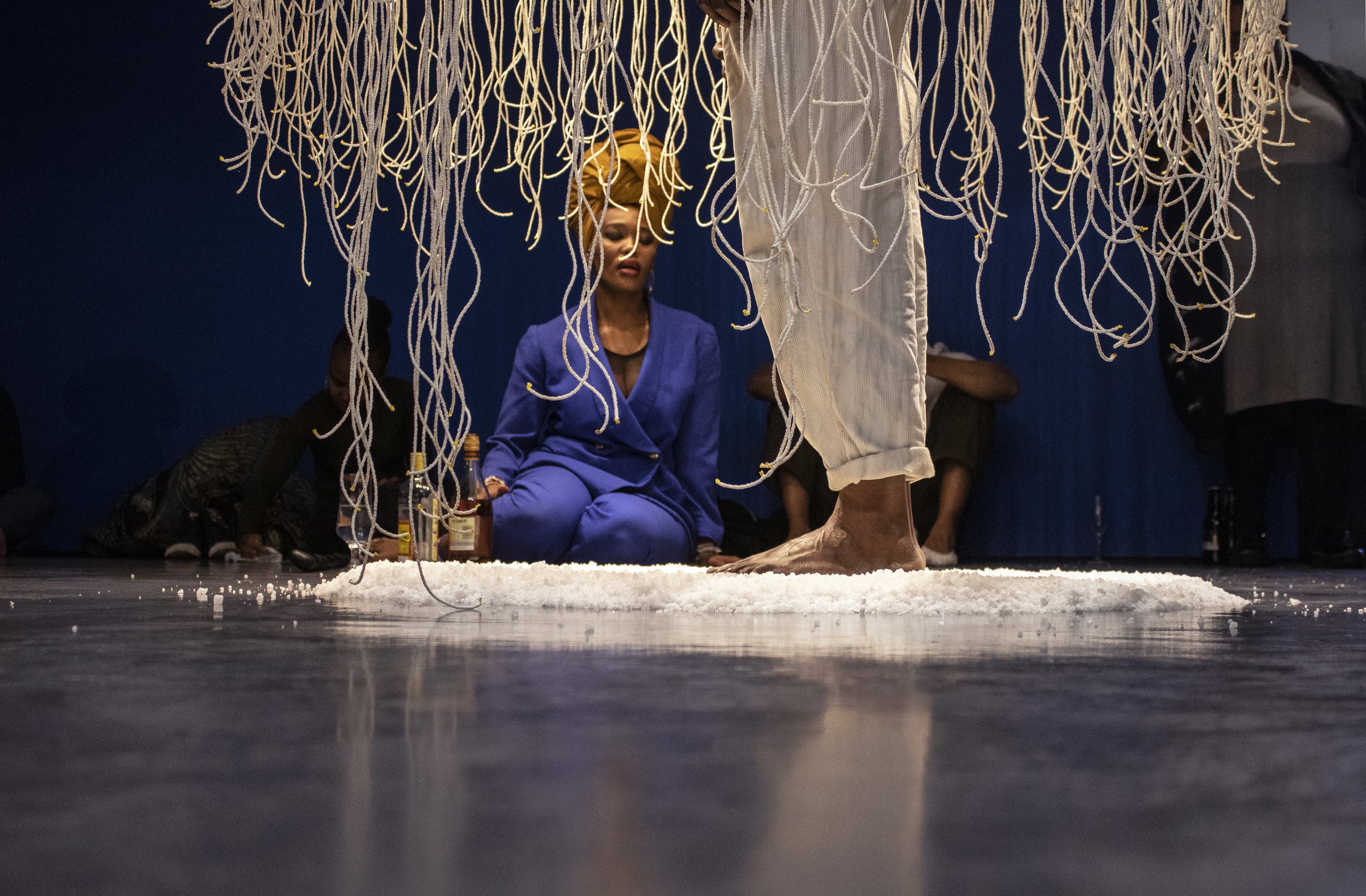
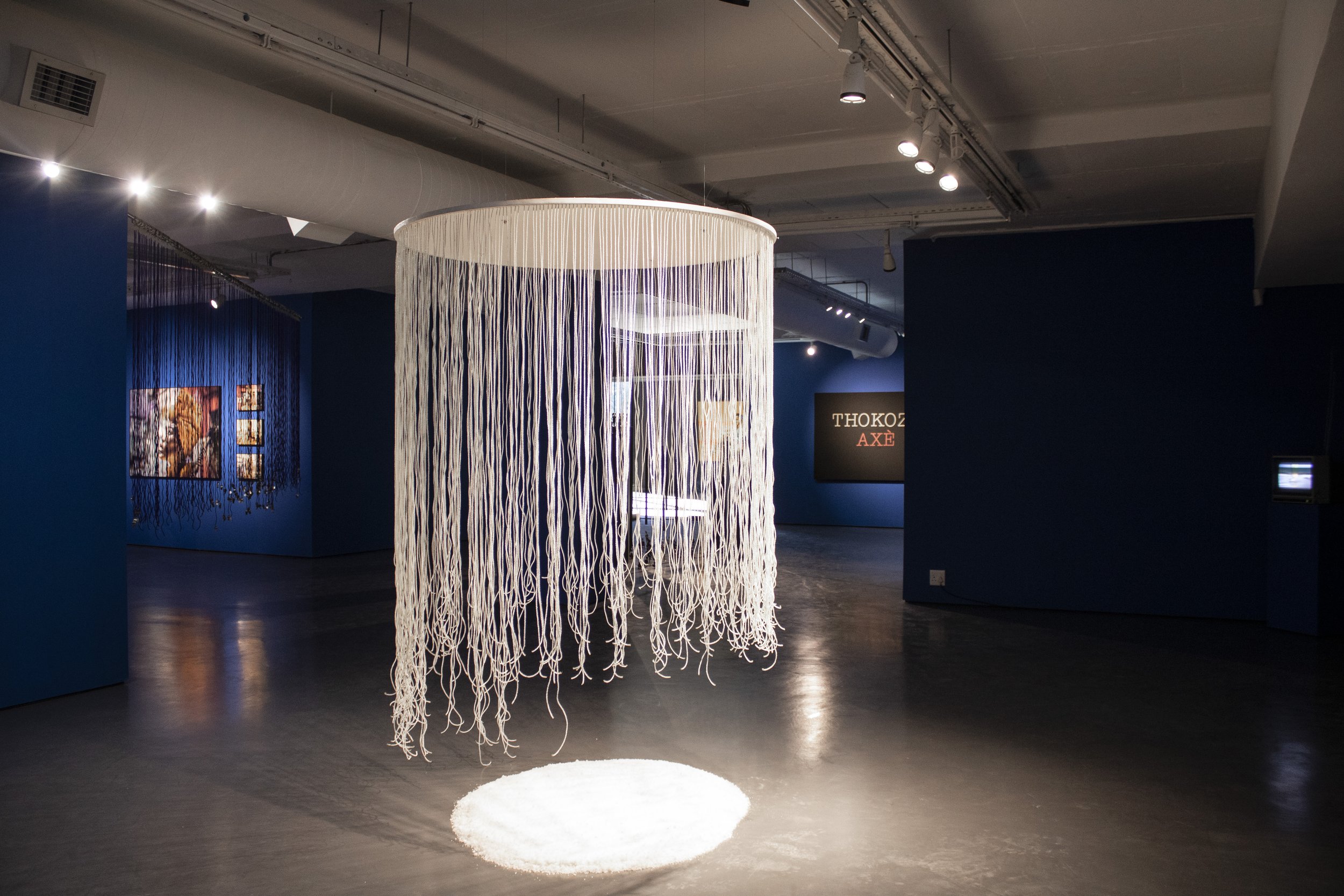
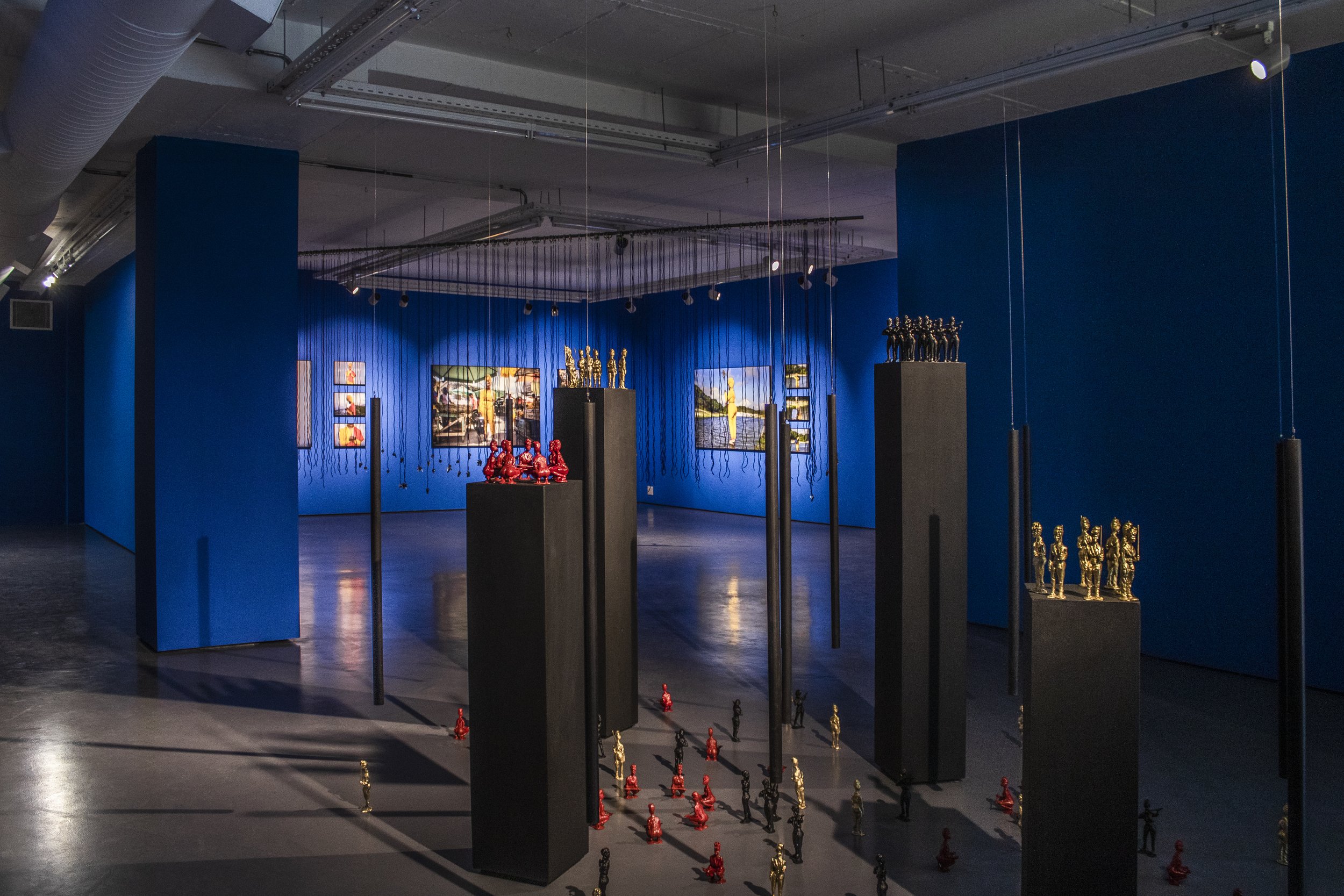

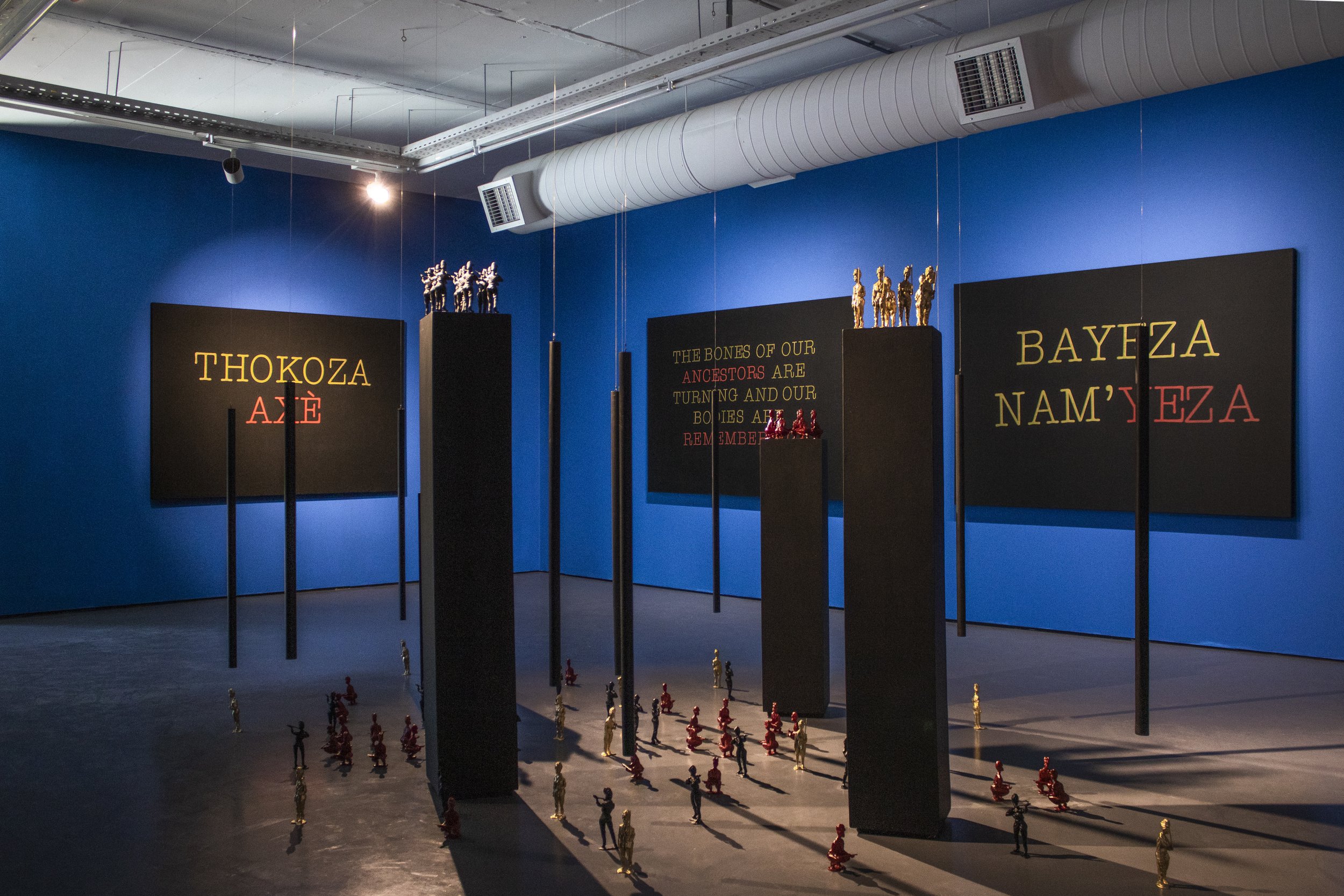


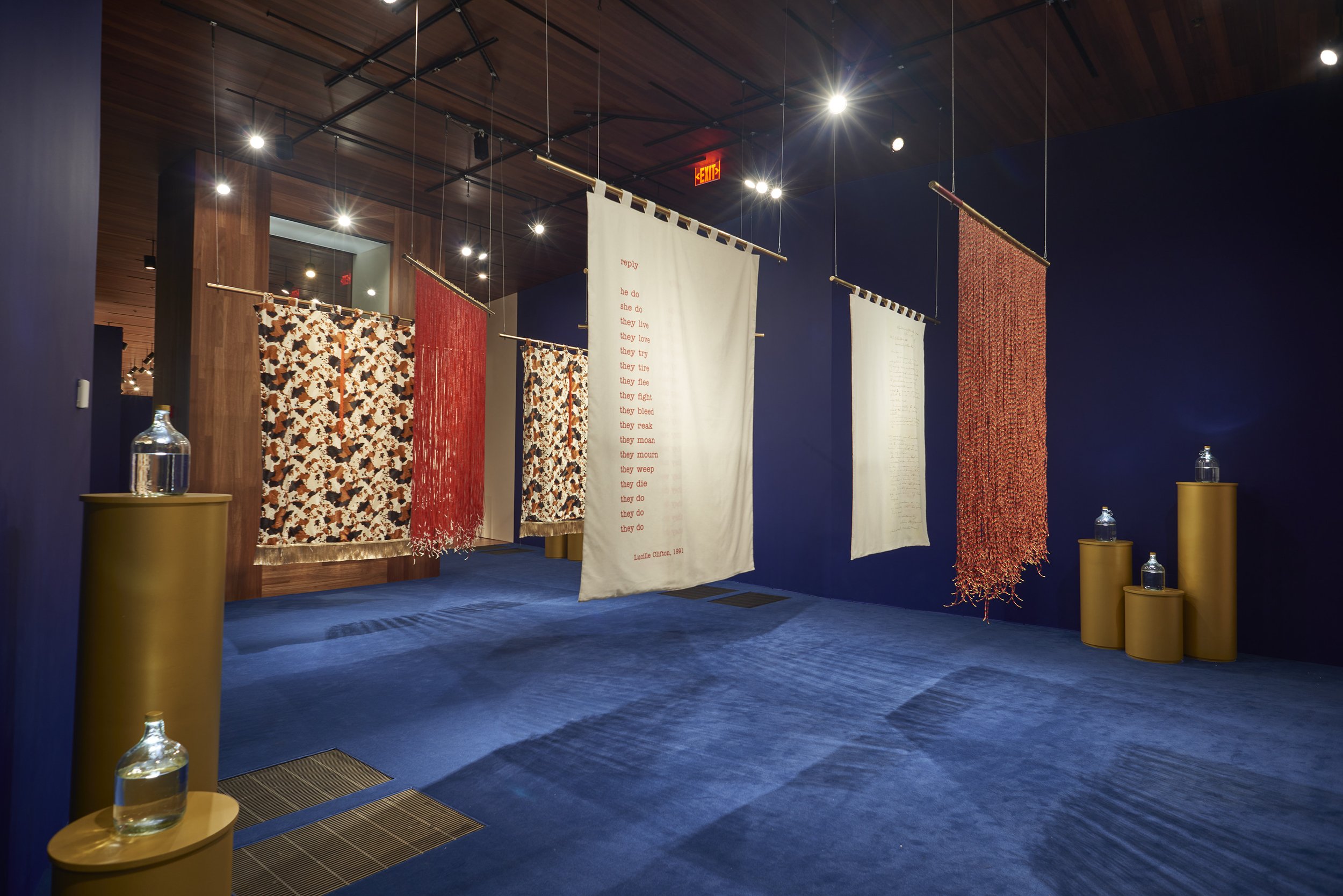



The exhibition features a new site-specific commission, Philisa: Zinza MphefumloWami(2022), which translates to “Let It Be Healed: Be Steady My Breath, MySpirit.”Philisais is a sacred gateway to support individual and collective health through listening and relaxation.
Included is the single-channel video projection IRMANDADE: The Shape of Water inPindorama(2018–2020), in which the artist journeys through an Afro-Brazilian city to bear witness to the wounds of the ocean and land, the dead and living. Artworks from the Fine Arts Museums’ permanent collection serve as conduits between the spirit and human worlds and assume a new cultural vitality within Amira’s healing arc. Vibrating with relevance are representations of ancestors, expressions of spiritual values, and objects that serve sacred and ceremonial purposes.
Lhola Amira: Facing the Future calls for all, including ancestors, to be involved in the work of caring and repairing our shared world. This exhibition is organized by the Fine Arts Museums of San Francisco with the generous support of Denise Littlefield Sobel.
*Lhola Amira capitalizes THEIR pronouns (THEY/THEM/THEIR) because THEY are the spiritual counterpart to the physical body of Khanyisile Mbongwe. They are the manifestation of the Nguni belief in duality: each person has a spiritual counterpart in addition to their physical body.
Seth Kane Kwei, Coffin in the shape of a cocoa pod, ca. 1970. Wood, paint, and cloth, 34 x 102 x 29 in. (86.4 x 259.1 x 73.7 cm). Fine Arts Museums of San Francisco, Gift of Vivian Burns, Inc. Courtesy of Kane Kwei carpentry workshop. Photograph © Fine Arts Museums of San Francisco, photograph by Randy Dodson
Beaders: Busela Mbongwa, Yvonne Motlhare, Veronica Mke, Thandeka Grace Maranyathi, Nomvuyo Mke, Nomonde Mahote, Pieta Magengenene, Nokhaya Wowo, Linda Kanye, Kwanele Mayeki. Studio assistants: Lungile Mbongwa and Luca Evans. Sound conversations: Sisonke P.
The Healing Power of Art:
Lhola Amira: Facing the Future brings together historical and contemporary art practices that respond to the care of individuals and communities. The calls of ancestors and descendants are filtered through the shared experiences of Black people. Their voices are entwined, as they are all involved in healing our world by dismantling the forces of colonialism, imperialism, and systemic racism. This selection highlights sculptures and ceremonial pieces from Africa made for rituals supporting healthy human and ecological relationships. They reflect different worldviews about the interconnectedness of individuals and communities, past and future, earth and ocean, and physical and spiritual worlds. Many religious beliefs proliferate in Africa today—the most common are Christianity and Islam—yet these objects transcend their respective eras to communicate across time and cultures. This convergence of the Fine Arts Museums’ collection of African art and Lola Amira’s contemporary practices invites visitors to be inspired by simple acts of care and devotion that can heal and transform the past and present.
Facing the Future is a resource for today’s troubling times, reminding us of our deep and profound connection to the earth and to each other.
For more information about this exhibition and others at de Young/Legion of Honor and the fine arts museums of San Francisco please visit here. The museum can also be found on Instagram, on Facebook, and YouTube
Antonio M. Gómez: LINEAJES
Installation view of Antonio M. Gómez: LINEAJES, Frye Art Museum, Seattle, November 11, 2023–March 10, 2024. Photo: Jueqian Fang
LINEAJES interrupts the gilded display of paintings in Frye Salon with sights and sounds that foreground an intercultural artistic heritage long obscured by the Western canon. The exhibition presents the research of the Tacoma percussionist, producer, and educator Antonio M. Gómez (born 1971, Brownsville, Texas), who pursues the interwoven histories of world music. Relating his practice to the experience of mixed identity formed from the convergence of cultures—such as his own Chicano-Italian background—Gómez explores musical ties between the Americas, the Mediterranean, West Africa, and beyond.
Zafona and quijada de burro played by Gómez. Photo: Gary Lappier
The exhibition features a global array of instruments drawn from Gómez’s extensive collection, arranged in groupings that highlight transformations in form, style, and usage across time and geography. Live performances by the artist’s Trío Guadalevín and other invited ensembles supplement recorded soundscapes within the exhibition space.
Bird calls, rattles, and finger cymbals played by Gómez. Photo: Gary Lappier
At Gómez’s invitation, the street artist Angelina Villalobos Soto, aka 179, created a mural of vines twisting around the paintings in Frye Salon, evoking intertwined cultural lineages and the continual metamorphosis of artistic expression.
Tony Gómez with a Requena drum. Photo: Gabriela Davidson-Gómez
Antonio M. Gómez received the 2018 James W. Ray Distinguished Artist Award, funded by the Raynier Institute & Foundation through the Frye Art Museum | Artist Trust Consortium. The award supports and advances the creative work of outstanding artists living and working in Washington State and is accompanied by a presentation at the Frye Art Museum.














Installation view of Antonio M. Gómez: LINEAJES, Frye Art Museum, Seattle, November 11, 2023–March 10, 2024. Photo: Jueqian Fang
This exhibit opened on Nov. 11, 2023 and will conclude on March 10, 2024. Please visit their website here for more information about this exhibition and others at the Frye Museum. The museum can also be found on Facebook, Youtube, and Instagram.
Charles Gaines: 1992–2023
Photo Credit : Fredrik Nilsen
A new survey of acclaimed artist Charles Gaines opened at the Institute of Contemporary Art, Miami (ICA Miami) on November 16, 2023, tracing the evolution of the second half of his influential practice. Charles Gaines: 1992–2023 brings together for the first time more than 65 works from 1992 to the present day, including two monumental works, one of which the artist is recreating for the first time in nearly two decades. Curated by Gean Moreno, ICA Miami’s Director of the Knight Foundation Art + Research Center, the exhibition is on view at ICA Miami until Mar 17, 2024.
Night/Crimes: Canis Major 1995 Photographs, silkscreened text on acrylic Unique 179.7 x 95.9 cm / 70 3/4 x 37 3/4 inches GAINE118354 © Charles Gaines Courtesy the artist and Hauser & Wirth
Recognized as a pioneer of conceptual art, Gaines has been at the forefront of introducing language and systems into artistic production for decades. He is widely known for his use of translating mechanisms to convert images and documents into numerical structures, musical notation, and other sign systems. The ICA Miami exhibition highlights a pivotal shift in Gaines’s practice during the second half of his career, in which his work takes on even greater political and social dimension, incorporating materials abundant with preexisting cultural meaning. Among these are the Black Panthers’ manifesto as well as texts by Franz Kafka and Frantz Fanon, which have been channeled by the artist into complex formal and conceptual works. This radical approach has allowed Gaines to address the issues of race and identity politics in innovative ways that extend beyond representation. Simultaneously, Gaines began to combine different media, including video and sound, into his works.











Installation view, Charles Gaines: 1992–2023, ICA Miami, Miami, 2024. Courtesy ICA Miami
The ICA Miami exhibition brings together for the first time a number of monumental works and series that demonstrate the evolution of Gaines’s approach to combining an array of materials–electronics, wood, acrylic, photographs–and transforming them into a distinct visual language. Among these is a monumental piece that is being recreated by Gaines for the first time in nearly twenty years: Greenhouse (2003–2023) is a massive 12 by 16-foot sculptural enclosure wherein simulated atmospheric conditions identified with climate change are conflated with data visualizations of recorded temperature changes across the globe from the 15th century to the present. Another large-scale work, Falling Rock (2000–2023) is a sculpture in which a 65-lb chunk of granite drops in a randomized and sudden fashion, creating unexpected outcomes for the viewer each time. The artist is recreating these major works specifically for the ICA Miami exhibition.
Airplane crash clock 1997-2007 Mixed media, Duration: 10:00 min (loop) Unique Overall: 274.3 x 396.2 x 152.4 cm / 108 x 156 x 60 inches GAINE91965 © Charles Gaines Courtesy the artist and Hauser & Wirth
These pieces are presented alongside several standalone works, including Airplane Crash Clock (1997– 2007), Manifestos (2008), Sky Box I (2011), Manifestos 2 (2013), Manifestos 3 (2018), and Manifestos 5 (2023). Several series are also highlighted in the exhibition: Night/Crimes (1994–1997); Submerged Text (1991–2004); Randomized Text: History of Stars (2006–2007); Explosion (2006–2020); String Theory: Rewriting Fanon (2010); Notes on Social Justice (2013–2021); Librettos: Manuel de Falla/Stokley Carmichael (2015–2020); Identity Politics (2018); Numbers and Faces: Multi-Racial/Ethnic Combinations (2019–2020); and Numbers and Trees (1975–2023).
“Charles Gaines is a pivotal figure in conceptual art, and this exhibition demonstrates his central role in global conversations about contemporary art,” said Alex Gartenfeld, ICA Miami Artistic Director. “This survey also builds upon our ongoing engagement with the artist, who inaugurated our new building in 2017 with a site-specific installation and has since presented a performance at the museum. We are thrilled to share his work once again with the Miami community in an even more expansive presentation.” “This exhibition not only signifies the individual transformation of Gaines’s practice over the past several decades, but it also provides a throughline from the conceptual artists of the 1960s and 1970s to the conceptual artists of today,” said Moreno. “This rare examination of a three-decade-long evolution offers a new perspective on an established artist and allows audiences a view into the complex relationship between innovation, social justice, and conceptualism that has characterized the second half of Gaines’s career.”
Charles Gaines, Numbers and Trees: Charleston Series 1, Tree #3, Boone Hall Drive (2022). Acrylic sheet, acrylic paint, lacquer, wood. Unique.
152.4 x 210.5 x 14.6 cm / 60 x 82 7/8 x 5 3/4 inches. © Charles Gaines. Courtesy the artist and Hauser & Wirth. Photo: Fredrik Nilsen.
Exhibition Support
Exhibitions at ICA Miami are supported by the Knight Foundation. Major support is provided by the Nicoll Family Fund and Kathy and Steven Guttman.
About the Institute of Contemporary Art
Miami The Institute of Contemporary Art, Miami (ICA Miami) is dedicated to promoting continuous experimentation in contemporary art, advancing new scholarship, and fostering the exchange of art and ideas throughout the Miami region and internationally. Through an energetic calendar of exhibitions and programs, and its collection, ICA Miami provides an important international platform for the work of local, emerging, and under-recognized artists, and advances the public appreciation and understanding of the most innovative art of our time. Launched in 2014, ICA Miami opened its new permanent home in Miami’s Design District on December 1, 2017. The museum’s central location positions it as a cultural anchor within the community and enhances its role in developing cultural literacy throughout the Miami region. The museum offers free admission, providing audiences with open, public access to artistic excellence year-round.
The Institute of Contemporary Art, Miami is located at 61 NE 41st Street, Miami, Florida 33137. For more information, visit here or follow the museum on Instagram, YouTube, and Facebook. Explore the ICA Channel for inside looks at ICA Miami exhibitions and the practices of the most exciting artists working today.
BEFORE MIDNIGHT
Matthew Porter Eureka Valley, 2023 27 x 33.5 inch archival pigment print Edition 4 of 5
BEFORE MIDNIGHT – An online exhibition.
To start the new year presents a selection of photographs taken between sunset and midnight – a magical time for photography. Requiring a unique blend of creativity and technical skill, photographs that explore this time can uncover a rich tapestry of emotions, stories, and atmosphere expressing the artist's vision and interpretation of the world.
Thierry Cohen Paris 48° 51' 30'' 2020-11-13 LST 2:06 26 x 40 inch pigment print - Edition of 5 39 x 60 inch pigment print - Edition of 3
The allure of great photography lies not only in the proficiency of its practitioners but also in the artist’s ability to evoke an emotional response.
Robert Frank Lusk, Wyoming, 1956 11 x 14 inch gelatin silver print
Before midnight, the world undergoes a subtle metamorphosis, and during this transition, the photographer has the opportunity to make images that resonate with viewers on a surprisingly profound level.
Glen Luchford, Kate Moss. 1994.
The temporal constraint of the rapidly changing light (not to mention the change in human behavior after dark) challenges photographers to seize the fleeting moment and capture it in a single frame.
Dall-e, A.I. generated print from the prompt: “Joshua Tree at night with three Joshua trees, stars, and a blue line of light at the horizon” 11 x 11 inch archival pigment print Edition of 3
Gerhard Richter
Strip (Strip), 2011 Digital print on paper between Alu Dibond and Perspex (Diasec) © Gerhard Richter 2024 (25012024)
David Zwirner is pleased to present an exhibition of new and recent work by renowned German artist Gerhard Richter at the gallery’s 24 Grafton Street location in London. This marks the gallery’s first presentation of Richter’s work in London since announcing his representation in December 2022, and follows the artist’s recent debut at David Zwirner in New York in spring of 2023.
This considered installation expands upon Richter’s sustained inquiry into the fixity of perception and reaffirms his unwavering commitment to the formal and conceptual possibilities of abstraction. Centrally featured are three of the artist’s celebrated abstract paintings, made in the years preceding his decision to move away from oil paint and turn toward drawing and installation with increasing dedication. An expansive group of new works on paper—some made with ink or pencil, others with a combination of the two—illuminates the newfound urgency and prominence that Richter has placed on method and technique in drawing.
27.6.2023, 2023 Ink and pencil on paper © Gerhard Richter 2024 (25012024)
Richter created the ink drawings, a number of which include unprecedented vividness of colour, by dripping the medium onto paper and shifting around the sheet to produce unexpected forms, further augmenting the improvisatory and captivating freedom of movement unique to this body of work. For the pencil drawings, Richter instead combines various elements from a limited set of forms and techniques—including meandering lines, broad tonal planes applied with angled strokes of graphite, and passages of smudging, hatching, and erasure—thereby uniting choice and chance through this infinitely generative process. These works on paper condense and distill the tenets that have remained central to Richter’s practice throughout his career. As noted by Dieter Schwarz, editor of the artist’s catalogue raisonné of drawings: ‘They are of stringent individuality and recognizably by Richter’s hand, not based on their signature style but rather because they make their theme the act of drawing itself, gauging the conditions of drawing.’
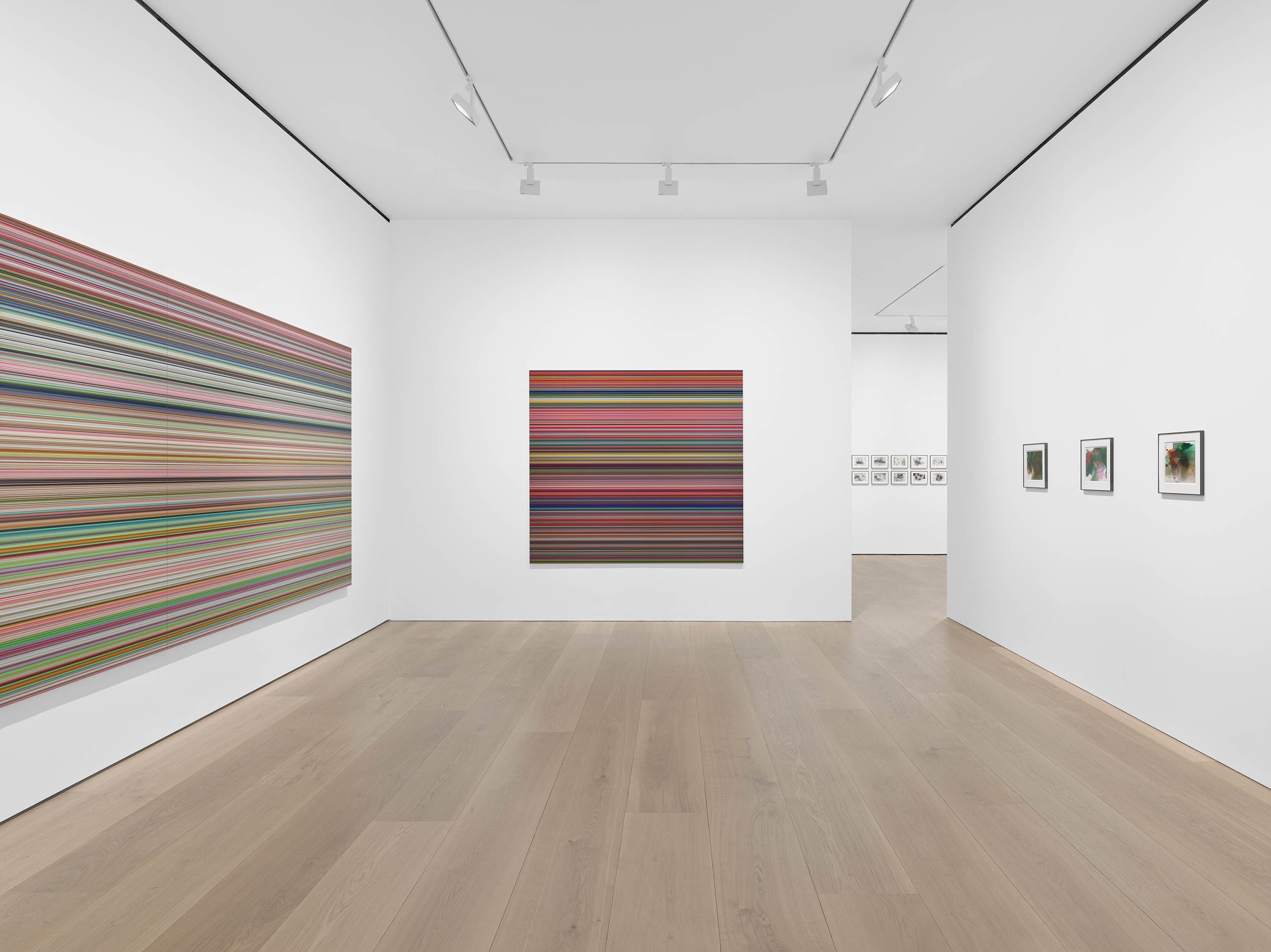




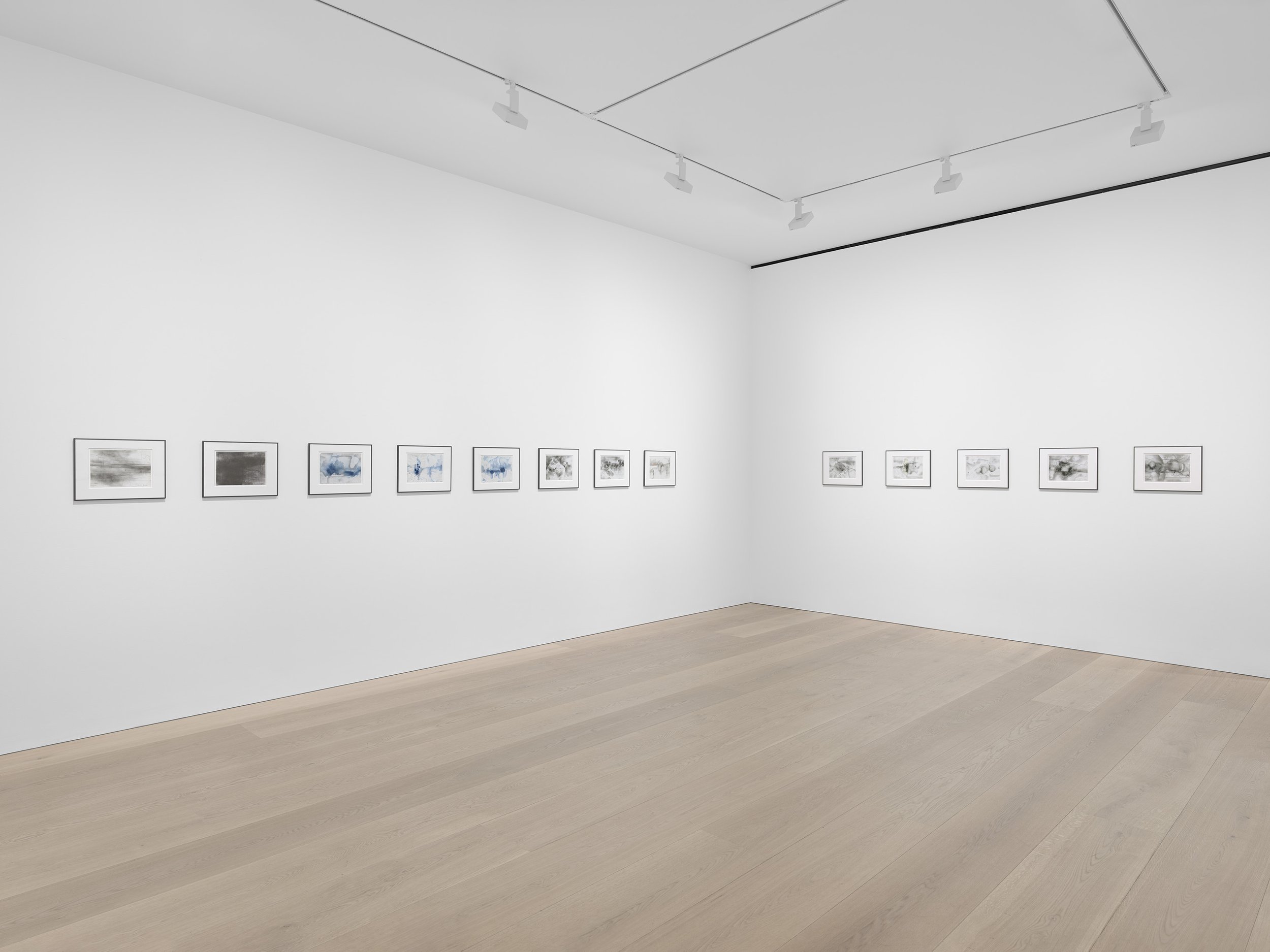


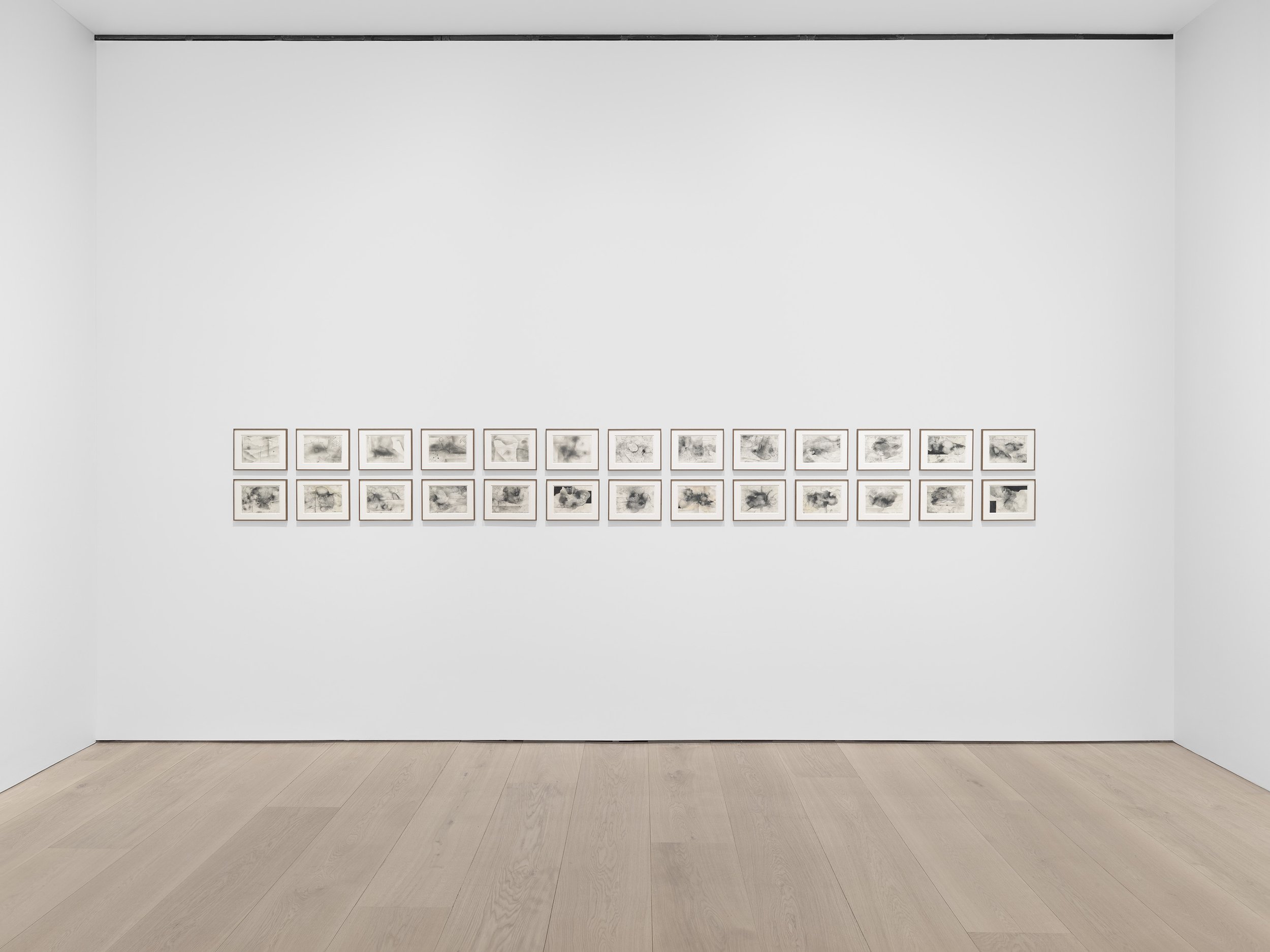



Installation view, Gerhard Richter, David Zwirner, London, 2024. Courtesy David Zwirner
Also featured are important recent works that illustrate Richter’s longstanding interest in the idea of reflection—in both the material and the phenomenological sense of the word. His large-scale paintings and room-sized installations, which are notable for their use of glass and mirrored surfaces, serve as sites for the perpetual creation and contemplation of a new kind of abstract image. On view is a work from Richter’s expansive Spiegel (Mirror) series, which the artist began in the 1980s; comprising wall-mounted panes of glossy tinted glass, they invite viewers to look both at and beyond one’s surroundings. A group of vibrant lacquer-behind-glass paintings from 2010 explore the dual role of paint as conceptual image and physical substance. These works eventually led to Richter’s development of the Strip paintings (begun in 2011), which are derived from a photographic reproduction of one of the artist’s abstract paintings that is then digitally divided, mirrored, and repeated into a glass-mounted print whose pristine surface removes all traces of its maker’s hand. Crucially, Richter classifies the Strips as “paintings” despite their computerized facture, thus positioning the works at a philosophical nexus in which they examine both the historical implications of painting as well as its future possibilities. Gerhard Richter was born in 1932 in Dresden, Germany. He studied art at the Dresden Hochschule für Bildende Künste from 1951 to 1956, with mural painting as his main course of study. In 1959, Richter visited Documenta II, held in Kassel, Germany, an experience that inspired him to alter his artistic trajectory. After his escape from East Germany in 1961, he completed a second course of study at the Staatliche Kunstakademie in Düsseldorf. There, he united with fellow students Sigmar Polke, Konrad Lueg (later known as the gallerist Konrad Fischer), and Manfred Kuttner to collectively form the short-lived “capitalist realism” group. From 1964 onward, Richter has had many solo exhibitions in renowned galleries and museums worldwide. The artist’s first solo exhibition in a public institution was held at the Gegenverkehr, Zentrum für aktuelle Kunst, in Aachen, Germany, in 1969. In 1972 he was selected as the only artist to represent Germany in its national pavilion at the Venice Biennale. Richter has exhibited at Documenta, in Kassel, Germany, more times than any other artist (1972, 1977, 1982, 1987, 1992, 1997, 2007, and 2017). Richter’s work has been presented in numerous solo and retrospective exhibitions at important institutions worldwide, including the Kunstverein für die Rheinlande und Westfalen, Düsseldorf (1971, 1986); Kunsthalle Bremen, Germany (1975); Centre Pompidou, Paris (1977, 2012); Städtische Kunsthalle, Düsseldorf (1986); Neue Nationalgalerie, Berlin (1986, 2012, 2023); Hirshhorn Museum and Sculpture Garden, Washington, DC (1988, 2003); San Francisco Museum of Modern Art (1989, 2002); Tate, London (1991, 2011); Moderna Museet, Stockholm (1993); Art Institute of Chicago (2002); The Museum of Modern Art, New York (2002); Queensland Art Gallery, Brisbane (2017); The Met Breuer, New York (2020); and The National Museum of Modern Art, Tokyo (2022). In April 2023, the Neue Nationalgalerie in Berlin opened Gerhard Richter: 100 Works for Berlin. This special long-term presentation features works that the Gerhard Richter Kunststiftung gave to the museum on permanent loan in 2021, including Richter’s Birkenau cycle of large-scale abstract paintings from 2014.
17.7.2023, 2023 Colored ink and pencil on paper © Gerhard Richter 2024 (25012024)
Richter has been honoured with a number of significant awards, among them the Kunstpreis Junger Westen, Kunsthalle Recklinghausen, Germany (1967); Arnold-Bode-Preis, Kassel, Germany (1981); Oskar-Kokoschka-Preis, Vienna (1985); Goslarer Kaiserring, Goslar, Germany (1988); Golden Lion at the 47th Venice Biennale (1997); Praemium Imperiale Award, Japan Art Association, Tokyo (1997); Wexner Prize, Wexner Center for the Arts, Columbus, Ohio (1998); Foreign Honorary Membership of the American Academy of Arts and Letters, New York (1998); Staatspreis des Landes Nordrhein-Westfalen, Düsseldorf (2000); and the Kunst- und Kulturpreis der deutschen Katholiken, Deutsche Bischofskonferenz, Bonn, Germany (2004). In 2007 Richter received honorary citizenship of Cologne, Germany. In the same year, he designed a spectacular stained-glass window for the Cologne Cathedral. Works by the artist are held in important public and private collections worldwide. Richter lives and works in Cologne.
This exhibit opened on January 25th and will conclude on March 28th, 2024. For more information about this exhibit, visit David Zwirner’s site , along with following them on Instagram and find the gallery also on Artsy here.
Josèfa Ntjam : Futuristic Ancestry: Warping Matter and Space-time(s)
Installation views: “Josèfa Ntjam: Futuristic Ancestry: Warping Matter and Space-time(s)” Fotografiska., NYC, 2024, Photography Credit: Leandro Justen. Courtesy of Fotografiska New York
Fotografiska New York, presented French multimedia Genre-Defying Artist Josèfa Ntjam’s First-Ever Solo U.S. Museum Show on February 2, 2024, and the exhibition will run through May 2024. The exhibition titled Futuristic Ancestry: Warping Matter and Space-time(s) includes dozens of never-before-seen works.
The show, titled Futuristic Ancestry: Warping Matter and Space-time(s), will feature a selection of new works, including biomorphic sculptures and photomontages printed on plexiglass and aluminum. The show also presents the U.S. debut of Matter Gone Wild, an immersive video installation that bends perceptions of space, time, historical narrative, and cultural identity as it pushes the limits of moving-image technology. Directed by Ntjam in collaboration with Sean Hart and Nicolas Pirus, Matter Gone Wild follows the stories of extraterrestrials revolting against systems of oppression through collective struggle, offering a broader reflection on present-day political realities.
Throughout her collages, narratives, and references, Ntjam blends memory with historical fact, the incorporation of personal and family archives, and speculative fiction (from Battlestar Galactica to the novels of Octavia E. Butler) to produce new interpretations of radical liberation movements around the world, from the battle against white supremacy led by the Black Panther Party in the U.S. to the fights in Cameroon and Nigeria against colonial power.
Installation views: “Josèfa Ntjam: Futuristic Ancestry: Warping Matter and Space-time(s)” Fotografiska., NYC, 2024, Photography Credit: Leandro Justen. Courtesy of Fotografiska New York
The exhibition plunges visitors into an immersive and alternative ecosystem that suggests how disparate movements are intertwined through a global demand for liberation. Powered by mythologies from across the African continent and the limitless horizons of science fiction, Ntjam’s work imagines new possibilities for the future with a nod to the past.
“Josèfa Ntjam’s work combines disciplines, ideas and images in ways that were previously unimaginable,” said Jessica Jarl, Global Director of Exhibitions at Fotografiska. “It is a rare privilege to be able to debut such extraordinary work so early in an artist’s career.”















Installation views: “Josèfa Ntjam: Futuristic Ancestry: Warping Matter and Space-time(s)” Fotografiska., NYC, 2024, Photography Credit: Leandro Justen. Courtesy of Fotografiska New York
Ntjam (b. 1992, Metz, France) is best known for her work that blends science fiction, history, and fantasy to present alternative narratives of African diasporic experiences. Across multiple mediums, her practice deconstructs mainstream discourses on origin, identity, and race. The artist, who earned a degree from the École Nationale Supérieure d’Art, has been featured in exhibitions at the Stedelijk Museum in Amsterdam and the Barbican Art Gallery in London.














Photography Credit: Leandro Justen. Courtesy of Fotografiska New York
Programming highlights for this exhibition include an invitation for all Fotografiska members to celebrate the opening night which had a performance by Sun Ra Arkestra, the renowned experimental Jazz group, alongside the artist.
About Fotografiska
Fotografiska is the contemporary museum for photography, art, and culture. Founded in Stockholm in 2010 and led globally by its Chairman Yoram Roth, Fotografiska is a destination to discover world-class photography, eclectic programming, elevated dining, and surprising new perspectives.
For more information about this exhibition and others at Fotografiska New York, please visit their site here. The museum can also be found on Instagram and Facebook.
Art Wynwood
Courtesy of Art Wynwood
Art Wynwood will be taking place Feb 14-18 (VIP Preview 2/14 benefitting the Bass Museum); this annual winter event provides a unique platform for art enthusiasts to explore over 50 contemporary, emerging, and modern art galleries from the Miami/Southern Florida region, and from across the United States like NYC, The Hamptons , and Dallas to international galleries from London, Italy, Germany, France, Spain, Venezuela and more (over 500 artists will be shown, representing a diverse array of works including pieces from the 20th and 21st centuries, post-war, pop and street art, and various modern & contemporary genres), just a few artists being shown include Derrick Adams, Damien Hirst, Alex Katz, Jeff Koons, Wifredo Lam, Gloria Lorenzo, Henri Matisse, JD Miller, Gina Pellón, René Portocarrero, Ugo Rondinone, Andy Warhol, world-renowned photographer David Yarrow, and Ukraine-based gallery Kedria Arts will be showing 5 exceptional Ukrainian artists. Art Wynwood will also bestow its 2024 Lifetime Achievement Award to one of Miami’s most influential artists , Peter Tunney , who will have a special booth exhibiting a show of new works (his art will also be featured on an outdoor mural flanking the fair entrance), and for the 4th consecutive year, the fair has partnered with the Discover Boating Miami International Boat Show next door, enhancing the cultural experience on Biscayne Bay with the world’s largest boat and yacht show.
Jeff Koons -Monkey Train (Birds) (shown by Zeit Contemporary Art)
Zeit Contemporary Art based in NYC at 590 Madison Avenue will be showing: Alex Katz, Jeff Koons, Sol Lewitt, Robert Mangold, Henri Matisse, Nelo Vinuesa, Andy Warhol.
Kedria Arts, founded by sculptor Oleg Kedria and based in Kiev, Ukraine with another location in Detroit will be showing five Ukrainian artists: Alina Bauer, Oleg Kedria, Mykola Khodorovsky, Zhanna Thomas, Igor Tulipanov.
Alex Katz- suite of Ada (shown by Adamar Fine Art)
Adamar Fine Arts is a 37 year old gallery in Miami that represents contemporary masters (mostly in print) and a small group of internationally renowned mid-career artists; among the artists they will show at Wynwood: Derrick Adams, Damien Hirst, Alex Katz, Ugo Rondinone, Donald Sultan.
Cernuda Arte, based in Coral Gables, will be showing an exciting roster of all Cuban-born artists: Carlos Alfonzo, Wifredo Lam, Amelia Peláez, René Portocarrero, Gina Pellón, Manuel Mendive, José Bedia, Danuel Méndez, Enrique Casas, and Yasiel Elizagaray.
Antonio Sannino -Under Construction Sea VI (shown by Liquid Art System)
Liquid Art System is a gallery originally based in Capri that just opened a second gallery in Miami in Dec, they will be showing over 15 artists at Art Wynwood including: Silvia Berton, Peter Demetz, Marco Grassi, Antonio Sannino.
JD Miller- The Perfect Wave (shown by Samuel Lynne Galleries)
Samuel Lynne Galleries, with locations in Dallas, Houston and Chicago, will be showing: world renowned photographer David Yarrow, JD Miller (a brilliant painter with a career spanning over 25 years and creator of a unique 3-Dimensional Oil technique), Lea Fisher (a protégée of JD Miller who has captivated audiences with her unique take on oil painting), Tanner Lawley (contemporary artist who was awarded "Top 50 Artists to Watch" by Art Business News).
Imaginart.Gallery based in Coral Gables will exhibit a solo show of work by Cuban-born/Coral Gables-based Gloria Lorenzo.
Courtesy of Peter Tunney
Art Wynwood will bestow its 2024 Lifetime Achievement Award to visual artist Peter Tunney, a genuine force of nature with boundless creative energy, spreading his positive messages in unconventional ways while delivering works of art to a worldwide collector base for over 30 years. He creates in almost every medium: paint, collage, wood, photography, found objects, and discarded materials. His nontraditional life, a cache of extraordinary experiences, and countless wild adventures serve as the foundations for his work. In addition to his current Tribeca space, Tunney has maintained a gallery in the heart of Miami’s famed Wynwood Walls for the last eight years.
Peter Tunney- INVINCIBLE SUMMER (6ft x 8ft)
The Peter Tunney Experience is a fixture in the thriving Wynwood neighborhood (previous Art Wynwood Lifetime Achievement Award recipients include Mel Ramos, Martha Cooper, Shepard Fairey, Logan Hicks, Ron English). Here’s some words from Peter Tunney about his special booth/show, Invincible Summer (inspired by the words of Albert Camus): “I have been immersed in Invincible Summer since I first stumbled upon the passage by Albert Camus. Thousands of quotes and snippets flood into my mind and studio regularly, but this one pierced my heart and resonated with me in my core. It gave me the way. It articulated for me something that I’ve been feeling for decades but was unable to express.
Peter Tunney- ALBERT CAMUS
Since Jan. 2023, “Invincible Summer” has been in the DNA of my practice of art making and daily meditation. It is the lens through which I’ve been processing all aspects of life. I might even say that these words have changed the trajectory of my life going forward. Words do matter.”
Peter Tunney- HERE COMES THE SUN (6ft x 8ft)
Art Wynwood is hosted by Art Miami and is returning for its 11th edition during Presidents Day Weekend. The event provides a unique platform for art enthusiasts to explore and collect contemporary, emerging, and modern art from over 50 international galleries. Known for showcasing diverse artistic expression, Art Wynwood will take place at One Herald Plaza (NE 14th Street & Biscayne Bay), Miami, FL 33132.
Fair Hours:
Platinum VIP Preview: Wednesday, February 14: 4:30 – 6 p.m.
VIP Preview: Wednesday, February 14: 6 – 10 p.m.
General Admission:
Thursday, February 15: 11 a.m. – 7 p.m.
Friday, February 16: 11 a.m. – 7 p.m.
Saturday, February 17: 11 a.m. – 7 p.m.
Sunday, February 18: 11 a.m. – 5 p.m.
For more information about Art Wynwood, please see their site here. Art Wynwood can also be found on Instagram and Facebook.
Gary Simmons: Public Enemy
Installation view: Gary Simmons: Recapturing Memories of the Black Ark, 2014-15. Prospect 3, New Orleans, Louisiana. October 25, 2014 - January 25, 2015. Courtesy of the artist and Hauser & Wirth, Los Angeles. © Gary Simmons. Photo: Scott McCrossen/FIVE65 Design
Pérez Art Museum Miami (PAMM) is pleased to present Gary Simmons: Public Enemy, which opened on December 5, 2023. The exhibition, co-organized with the Museum of Contemporary Art Chicago, is the first comprehensive career survey of the richly layered work of Gary Simmons and features nearly 70 sculptures, paintings, photographs, works on paper, and installations, as well as a number of large-scale wall drawings the artist will create on-site.
Since the late 1980s, Simmons has played a key role in situating questions of race, class, and identity at the center of contemporary art discourse. Notable for his early application of appropriated pop-cultural imagery, Simmons’ work aims to analyze and expose histories of racism in visual culture. Over the course of his career, Simmons has revealed traces of these histories in sports, cinema, literature, music, architecture, and urbanism, while drawing heavily on genres such as hip-hop, horror, and science fiction.
Hollywood, 2008. Pigment, oil paint, and cold wax on canvas. 84 × 120 in. Rubell Museum. © Gary Simmons
“We’re proud to present the work of Gary Simmons, which encapsulates the essence of our nation’s culture and history to urge us to explore the depth of our own stories. Simmons compels us to confront our shared past while embracing the possibilities of our collective future — serving as a powerful reminder that art has the remarkable ability to weave together important narratives of our time,” said PAMM Director Franklin Sirmans.
Organized in sections ranging from miseducation to erasure to recurrence, Public Enemy spans 30 years of the artist’s highly disciplined production. Guided by an internal logic, Simmons’ approach is cool, analytical, and unflinching in its interrogation of intense historical narratives, yet the results consistently deliver a strong emotional charge. The exhibition offers audiences a timely opportunity to gain a holistic understanding of the complex and profoundly moving work of this groundbreaking and influential artist.











Exhibition highlights include: Lineup (1993) in which eight pairs of gold-plated athletic sneakers sit neatly arrayed on a platform under a police wall chart lineup used to identify suspects’ height; Step into the Arena (The Essentialist Trap) (1994), a boxing ring with a chalkboard drawing on the floor demonstrating the footwork for the Cakewalk dance and tap shoes dangling from the ropes, referencing the ways in which African American men have been exploited for entertainment in sports, the performing arts, and cinema; and Recapturing Memories of the Black Ark (2014-ongoing), an interactive sculptural installation inspired by Lee “Scratch” Perry’s Black Ark reggae recording studio in Jamaica on which local performers will activate the work throughout the exhibition run. These installations will accompany a vast selection of pictorial works featuring Simmons’ signature technique—a striking erasure effect that he achieves by executing an image to its completion then smearing it with his hands.
“This comprehensive survey of Gary Simmons’ complex, hard-hitting work, is both long overdue and timely. Posing sharp questions about what we, as individuals and as a society, remember and what we are made to forget, Simmons’ work touches on urgent political issues while probing the spaces between history and collective memory.” said MCA James W. Alsdorf Chief Curator René Morales.
Gary Simmons: Public Enemy is curated by René Morales, James W. Alsdorf Chief Curator, and Jadine Collingwood, Assistant Curator, with Jack Schneider, Curatorial Associate, of the Museum of Contemporary Art Chicago. The exhibition is accompanied by a major exhibition catalogue and a slate of related programming.
Major support for this exhibition is provided by the Terra Foundation for American Art
At Pérez Art Museum Miami, the exhibition is presented by Citi with lead individual support from Patricia and William Kleh. Support from Ford Foundation, the Andy Warhol Foundation for the Visual Arts and Funding Arts Network is gratefully acknowledged.
© Gary Simmons. Photo: Tito Molina/HRDWRKER. Courtesy of the artist and Hauser & Wirth
ABOUT GARY SIMMONS
Gary Simmons was born in 1964 in New York City, where he was raised. Today he lives and works in Los Angeles. He received a BFA in 1988 from the School of Visual Arts, New York, and an MFA in 1990 from the California Institute of the Arts, Valencia; he also studied at Hunter College, New York. He has received numerous awards, including the Studio Museum in Harlem Joyce Alexander Wein Prize (2013), the George Gund Foundation USA Gund Fellowship (2007), and the National Endowment for the Arts Interarts Grant (1990).
Simmons’ work has been the subject of major exhibitions worldwide. He has had solo exhibitions at institutional venues including California African American Museum, Los Angeles; Drawing Center, New York; Museum of Contemporary Art Detroit; Pérez Art Museum Miami; Modern Art Museum of Fort Worth; Bohen Foundation, New York; and Museum of Contemporary Art, Chicago.
Simmons’ work has been included in group exhibitions at the Studio Museum in Harlem, New York; Whitney Museum of American Art, New York; Blaffer Art Museum, Houston; Museum of Modern Art, New York; M. H. de Young Memorial Museum, San Francisco; Mildred Lane Kemper Art Museum, Washington University, St. Louis; and the Nasher Museum of Art, Duke University, Durham, North Carolina, among many other institutions.
His works can be found in numerous public collections including the Whitney Museum of American Art, New York; Albright-Knox Art Gallery, Buffalo; Baltimore Museum of Art; Colección Jumex, Mexico City; Museum of Modern Art, New York; Portland Art Museum, Oregon; Rubell Family Collection, Miami; San Francisco Museum of Modern Art; Studio Museum in Harlem, New York; Walker Art Center, Minneapolis; and Pérez Art Museum Miami.
ABOUT PAMM
Pérez Art Museum Miami (PAMM), led by Director Franklin Sirmans, promotes artistic expression and the exchange of ideas, advancing public knowledge and appreciation of art, architecture, and design, and reflecting the diverse community of its pivotal geographic location at the crossroads of the Americas. The nearly 40-year-old South Florida institution, formerly known as Miami Art Museum (MAM), opened a new building, designed by world-renowned architects Herzog & de Meuron, on December 4, 2013 in Downtown Miami’s Maurice A. Ferré Park. The facility is a state-of-the-art model for sustainable museum design and progressive programming and features 200,000 square feet of indoor and outdoor program space with flexible galleries; shaded outdoor verandas; a waterfront restaurant and bar; a museum shop; and an education center with a library, media lab, and classroom spaces.
For more information about this exhibit and other exhibits currently on view and upcoming, please visit the Pérez Art Museum website here. PAMM can also be found on Instagram, YouTube, TikTok, and Facebook.
Vincent Valdez and Ry Cooder: El Chavez Ravine
Installation photograph, title wall of Vincent Valdez and Ry Cooder: El Chavez Ravine, Los Angeles County Museum of Art, November 12, 2023 - August 11, 2024, photo © Museum Associates/LACMA
The Los Angeles County Museum of Art (LACMA) presents Vincent Valdez and Ry Cooder: El Chavez Ravine, which explores Vincent Valdez’s El Chavez Ravine (2005–7), recently added to the museum’s collection through a generous gift from award-winning musician Ry Cooder..
Vincent Valdez, El Chavez Ravine (detail), 2005-2007, Los Angeles County Museum of Art, gift of Ryland Cooder, © Vincent Valdez and Ry Cooder, photo © Museum Associates/LACMA
An elaborate oil painting on an ice cream truck, El Chavez Ravine conjures the history of the once thriving, predominantly Mexican American community in the hills north of downtown Los Angeles whose residents were forcibly evicted to make way for the construction of Dodger Stadium in the late 1950s. In 2004, Cooder invited Valdez to create a painting to align with his musical interpretation of the neighborhood. Cooder provided Valdez with a studio in L.A.’s Boyle Heights and a 1953 Chevrolet Good Humor truck customized by the lowrider-car club Duke’s to use as a support for the painting. Valdez depicted former Dodgers owner Walter O’Malley, LAPD Chief William H. Parker, FBI Director J. Edgar Hoover, and the displaced families. Valdez’s narrative—which illustrates dawn to sunset unfolding around the vehicle—poses a visual contradiction between the eviction and the ice cream truck.
Vincent Valdez, El Chavez Ravine (detail), 2005-2007, Los Angeles County Museum of Art, gift of Ryland Cooder, © Vincent Valdez and Ry Cooder, photo © Museum Associates/LACMA
El Chavez Ravine draws from the style and history of Mexican and American muralism. Valdez, born in San Antonio in 1977, apprenticed with muralist Alex Rubio in his teenage years. Judy Baca, who depicted the Chavez Ravine evictions in The Great Wall of Los Angeles, inspired Valdez, as did painters Carlos Almaraz, Robert de la Rocha, Judithe Hernández, Gilbert “Magu” Lujan, and Frank Romero, membersof the collective Los Four, who were among the first Chicanx artists to show their work in a major museum exhibition (at LACMA, in 1974). Valdez has built upon the impact of these artists’ work, creating complex portrayals of American history and bringing visibility to experiences of Mexican Americans. El Chavez Ravine is aPage 2 monument to a disturbing chapter in L.A. history. Shown alongside Valdez’s research and preparatory materials, the work symbolizes the continued struggles for affordable housing, and against eminent domain, gentrification, and discrimination going on across the United States.
Vincent Valdez and Ry Cooder: El Chavez Ravine is curated by Rita Gonzalez, Terri and Michael Smooke, Curator and Department Head, and Dhyandra Lawson, Andy Song, Assistant Curator, Contemporary Art, at LACMA.




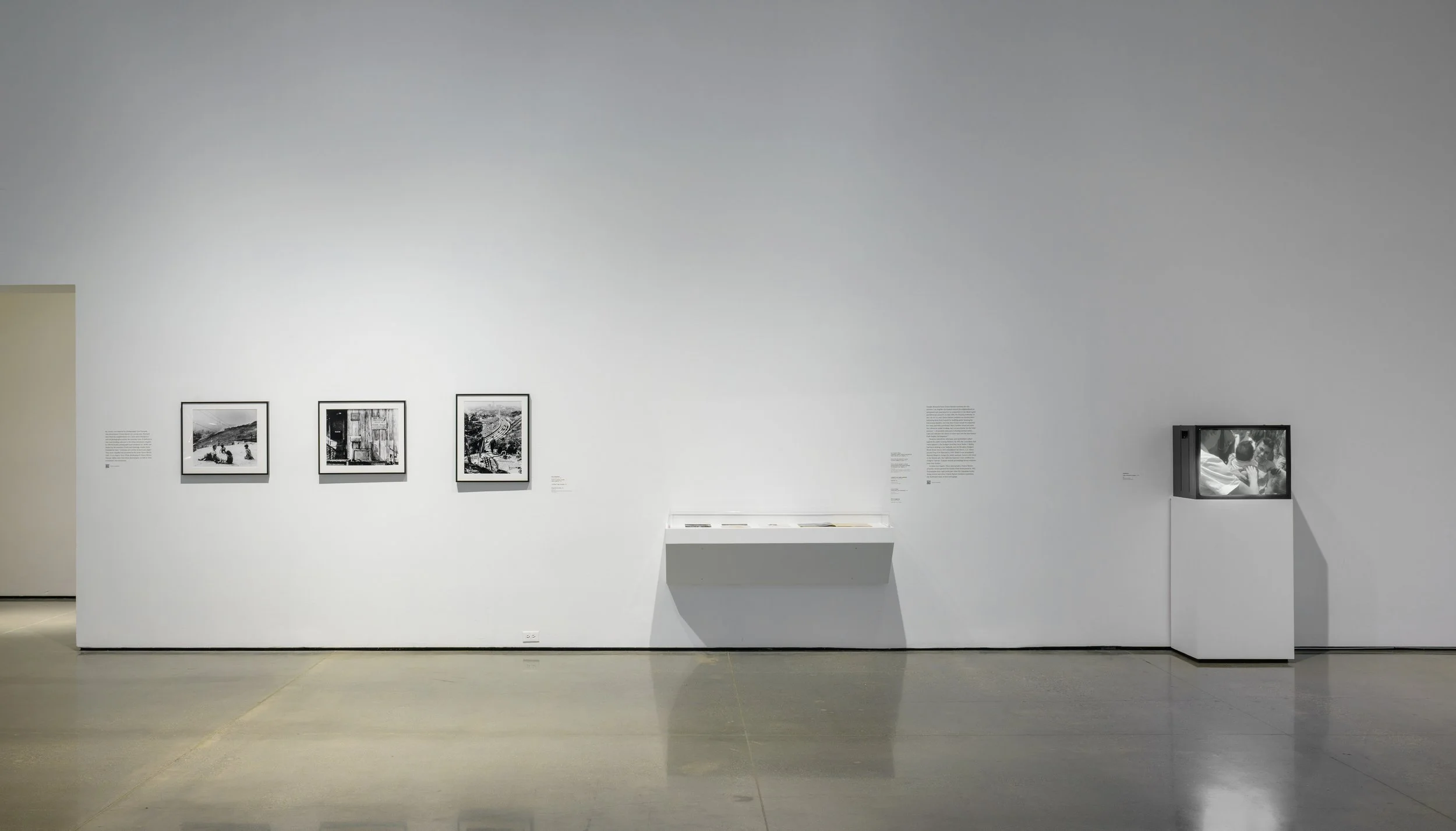








Installation photograph, Vincent Valdez and Ry Cooder: El Chavez Ravine, Los Angeles County Museum of Art, November 12, 2023 - August 11, 2024, © Vincent Valdez and Ry Cooder, photo © Museum Associates/LACMA
About Vincent Valdez
Vincent Valdez (b. 1977) blends large, representational paintings—the scale of which recall Western traditions of history painting as well as mural painting and cinema— with contemporary subject matter. He focuses on subjects that explore his observations and experience of life in the 21st century. The results are powerful images of American identity that confront injustice and inequity while imbuing his subjects with empathy and humanity. A recipient of the Latinx Artist Fellowship (2022), Joan Mitchell Fellowship (2016), as well as residencies at the Skowhegan School of Painting & Sculpture (2005), the Vermont Studio Center (2011), the Künstlerhaus Bethanien (2014), and the Arion Press King Residency (2023), Valdez currently lives and works between Houston and Los Angeles. Valdez’s work has been featured in exhibitions at major museums such as Crystal Bridges Museum of American Art, MASS MoCA, The National Portrait Gallery, and The Smithsonian Museum of American Art, and is held in the collections of The Cheech Marin Center for Chicano Art, Culture & Industry, The Ford Foundation, LACMA, and The Museum of Fine Arts Houston, among other institutions.
Credit: This exhibition was organized by the Los Angeles County Museum of Art.
Lead support provided by LACMA's Future Arts Collective. Generous support provided by Fabian Newton Family.
All exhibitions at LACMA are underwritten by the LACMA Exhibition Fund. Major annual support is provided by The David & Meredith Kaplan Foundation, with generous annual funding from Louise and Brad Edgerton, Edgerton Foundation, Mary and Daniel James, Justin Lubliner, Alfred E. Mann Charities, Kelsey Lee Offield, Koni and Geoff Rich, Lenore and Richard Wayne, and Marietta Wu and Thomas Yamamoto.
About LACMA: Located on the Pacific Rim, LACMA is the largest art museum in the western United States, with a collection of nearly 152,000 objects that illuminate 6,000 years of artistic expression across the globe. Committed to showcasing a multitude of art histories, LACMA exhibits and interprets works of art from new and unexpected points of view that are informed by the region’s rich cultural heritage and diverse population. LACMA’s spirit of experimentation is reflected in its work with artists, technologists, and thought leaders as well as in its regional, national, and global partnerships to share collections and programs, create pioneering initiatives, and engage new audiences.
The exhibit opened on November 12, 2023, and will end on August 11, 2024. The exhibition location is BCAM, Level 1.
For more information about this exhibit, along with other exhibits and the LACMA, please visit their site. The museum can also be found on Instagram, Facebook, You Tube.
Judy Chicago: Herstory
What if Women Ruled the World? From “The Female Divine,” 2020. Embroidery and brocade on velvet-backed fabric, 204 x 144 x 1/2 in (518.16 x 365.76 x 1.27 cm). © Judy Chicago/Artists Rights Society (ARS). Jordan Schnitzer Family Foundation
New York, NY The New Museum opened on October 12, 2023, with “Judy Chicago: Herstory,” it brings together six decades of the artist’s work and including an exhibition with the exhibition spotlighting women essential to the history of art and Chicago’s own practice. It will be on view through March 3, 2024; Chicago’s most comprehensive New York museum survey to date spans three floors of the New Museum, tracing the artist’s sixty-year career across painting, sculpture, installation, drawing, textiles, photography, stained glass, needlework, and printmaking. On the Museum’s Fourth Floor, a total installation featuring Chicago's embroideries, sculptures, drawings, and carpet design contextualizes her practice by bringing together artworks and archival materials from more than eighty women artists, writers, and cultural figures, including Hilma af Klint, Hildegard of Bingen, Claude Cahun, Elizabeth Catlett, Simone de Beauvoir, Artemisia Gentileschi, Emma Goldman, Frida Kahlo, Georgia O'Keeffe, Charlotte Salomon, Remedios Varo, and Virginia Woolf, among others. Titled after fifteenth century author Christine de Pisan’s “Le Livre de la Cité des Dames,” “The City of Ladies” continues Chicago's work as a feminist activist and cultural historian claiming space for women in narratives that previously obscured or denied their contributions—much like her seminal work The Dinner Party (1974–79) in its attempt to create a history of important and often overlooked women.
Birth Trinity: Needlepoint 1, from the Birth Project, 1983. Needlepoint on mesh canvas, 51 x 130 in (129.5 x 330.2 cm). Needlepoint by Susan Bloomenstein, Elizabeth Colten, Karen Fogel, Helene Hirmes, Bernice Levitt, Linda Rothenberg, and Miriam Vogelman. © Judy Chicago/Artists Rights Society (ARS), New York. The Gusford Collection. Photo: Donald Woodman/Artists Rights Society (ARS), New York
“Judy Chicago: Herstory” will encompass the entirety of Chicago’s practice, from her 1960s experiments in Minimalism and her revolutionary feminist art of the 1970s to her series of the 1980s and 1990s—such as the Birth Project (1980–85), PowerPlay (1982–87), Holocaust Project (1985–93), Resolutions: A Stitch in Time (1994–2000), and The End: A Meditation on Death and Extinction (2012-1018)—which expand the purview of her Second Wave Feminist agenda to confront environmental disaster, genocide, social inequity, birth and creation, mortality, and the construct of masculinity. The exhibition includes legendary works such as Rainbow Pickett (1965), originally presented in “Primary Structures” at the Jewish Museum, an exhibition which consecrated the minimalist turn in contemporary sculpture; Atmospheres, her radical performances initiated in 1969 employing colored smoke and fireworks to activate rather than scar the landscape; a suite of visionary abstractions from the 1970s—such as Through The Flower (1973) and the Great Ladies series (1973)—exemplifying Chicago’s iconography rooted in feminist theory; the Birth Project, a cycle of dozens of works begun in 1980 combining needlework, embroidery, and painting to celebrate the birth process; and documentation of “Womanhouse,” the fabled 1972 installation staged in an abandoned Hollywood mansion by Chicago and Miriam Schapiro’s Feminist Art Program. These historic works are joined by recent series including The End: A Meditation on Death and Extinction (2012–18), exploring death as it affects both individuals and the planet, and The Female Divine (2022), a series of eleven monumental banners designed by Chicago and produced by the nonprofit Chanakya School of Craft in Mumbai posing questions such as “What if Women Ruled the World?” Tracing her prolific practice across many decades and intersecting art movements, “Herstory” demonstrates the vast range and impact of Judy Chicago’s work over more than half a century.








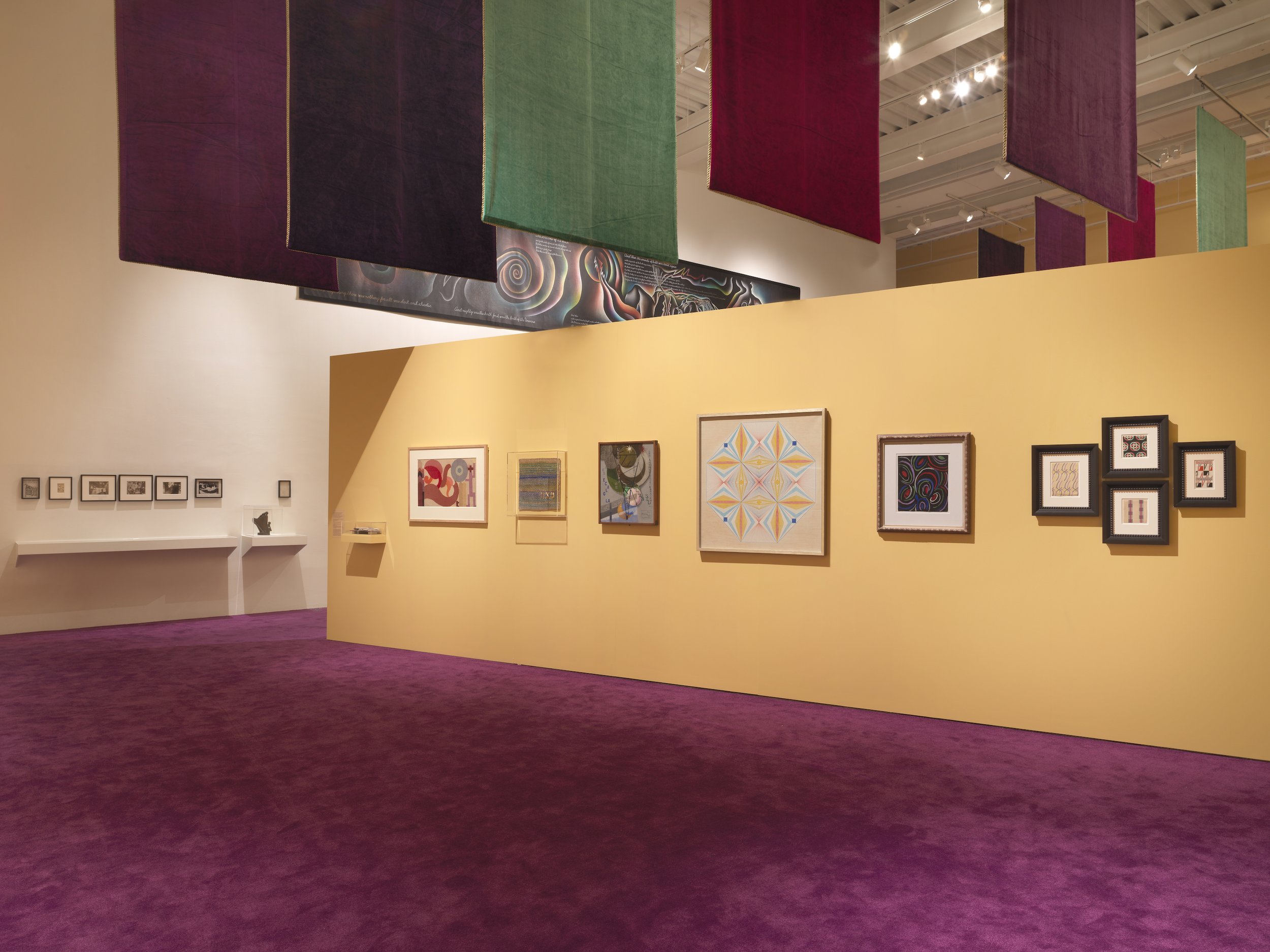















“Judy Chicago: Herstory,” 2023. Exhibition view: New Museum, New York. Courtesy New Museum. Photo: Dario Lasagni
The exhibition will also explore Chicago’s manifold contributions as a feminist activist and cultural historian, presenting her work in dialogue with other women artists, writers, and thinkers whose memory she has helped keep alive through her tireless activities as both researcher and historical preservationist. Combining artworks and source materials in a distinctive exploration of artistic influences and reverberations across history, this exhibition proposes a new, radical model for a solo exhibition—an “introspective,” rather than a retrospective. In this collaborative curatorial approach, the artist is invited to conceive a personal museum based on a model of historiography that is porous, hospitable, and accepting. “The City of Ladies” includes work and archival materials from Hilma af Klint, Eileen Agar, Anni Albers, Lola Álvarez Bravo, Anna Atkins, Alice Austen, Djuna Barnes, Simone de Beauvoir, Otti Berger, Annie Besant, Hildegard of Bingen, Rosa Bonheur, Marianne Brandt, Nannie Burroughs, Claude Cahun, Julia Margaret Cameron, Leonora Carrington, Countess Virginia Oldoini Verasis di Castiglione, Elizabeth Catlett, Pop Chalee, Elizabeth S. Clarke, Ithell Colquhoun, Imogen Cunningham, Sonia Delaunay, Maya Deren, Emily Dickinson, Sophie Drinker, Suzanne Duchamp, Leonor Fini, Elsa von Freytag-Loringhoven, Olga Fröbe-Kapteyn, Artemisia Gentileschi, Gluck (Hannah Gluckstein), Emma Goldman, Natalia Goncharova, Martha Graham, Alice Guy-Blaché, Florence Henri, Barbara Hepworth, Hannah Höch, Kati Horna, Georgiana Houghton, Zora Neale Hurston, Frida Kahlo, Gertrude Käsebier, Käthe Kollwitz, Emma Kunz, Dorothea Lange, Edmonia Lewis, Mina Loy, Dora Maar, Jeanne Mammen, Maria Martinez, Maria Martins, Mary Louise McLaughlin, Maria Sibylla Merian, Paula Modersohn-Becker, Louise Nevelson, Maria Longworth Nichols Storer, Anaïs Nin, Georgia O’Keeffe, Méret Oppenheim, Agnes Pelton, Mary Richardson, Margaret Sanger, Augusta Savage, Ethel Smyth, Gertrude Stein, Varvara Stepanova, Florine Stettheimer, Dorothea Tanning, Sophie Taeuber-Arp, Toyen, Sojourner Truth, Remedios Varo, Pablita Velarde, Beatrice Wood, Virginia Woolf, and Unica Zürn, as well as a number of unattributed works.
Judy Chicago and Donald Woodman, Rainbow Shabbat, 1992. Stained glass, 54 x 204 in (137.2 x 518.2 cm). Fabrication by Bob Gomez; glass painting by Dorothy Maddy. © Judy Chicago/Artist Rights Society (ARS), New York. © Donald Woodman/Artist Rights Society (ARS), New York. Jordan Schnitzer Family Foundation
Contextualizing Chicago’s feminist methodology within the many art movements in which she participated—and from whose histories she has frequently been erased—“Herstory” showcases Chicago’s tremendous impact on American art and highlights her critical role as a cultural historian claiming space for women often omitted from various canons. Part-expanded self portrait and part-historical, revisionist archive, “Herstory,” will be both a solo exhibition and a polyphonic survey of the feminist arts over multiple centuries.
Car Hood, 1964. Sprayed acrylic lacquer on car hood, 42 7/8 x 49 1/8 x 4 1/8 in (108.9 x 124.8 x 10.8 cm). © Judy Chicago/Artists Rights Society (ARS), New York. Moderna Museet, Stockholm. Purchase 2007 (The Second Museum of Our Wishes), MOM/2007/149. Photo: Donald Woodman/Artists Rights Society (ARS), New York
“Judy Chicago: Herstory” is curated by Massimiliano Gioni, Edlis Neeson Artistic Director, Gary Carrion-Murayari, Kraus Family Senior Curator, Margot Norton, former Allen and Lola Goldring Senior Curator at the New Museum and current Chief Curator at the Berkeley Art Museum and Pacific Film Archive, and Madeline Weisburg, Assistant Curator. The exhibition will be accompanied by a fully illustrated catalogue co-published by Phaidon and the New Museum, featuring texts by Glenn Adamson, Connie Butler, Gary Carrion-Murayari, Ann Goldstein, Jennifer Higgie, Candice Hopkins, Amelia Jones, Quinn Latimer, Margot Norton, Kymberly Pinder, Ian Wallace, Madeline Weisburg, and Carmen Winant; and an interview between the artist and Massimiliano Gioni.
SUPPORT
Lead sponsorship of “Judy Chicago: Herstory” is provided by DIOR.
Major support is provided by The Artemis Council of the New Museum* Jordan Schnitzer/The Harold & Arlene Schnitzer CARE Foundation..
The New Museum gratefully acknowledges the Artistic Director’s Circle of the New Museum: Dakis Joannou, Co-Chair; Eugenio Lopez, Co-Chair; Gael Neeson, Co-Chair; Shane Akeroyd, Pietro Beccari, Abbie and Patrick Dean, Susan Hayden, J. Tomilson and Janine Hill, Carola Jain, Richard Mumby, Holly Peterson, Elham and Tony Salamé, and Beth Swofford. Additional support is provided by: Sabrina Buell and Yves Behar, DMINTI & DANAE, Jay Franke and David Herro, The Gladys Krieble Delmas Foundation, Grażyna Kulczyk Collection, Hill Art Foundation, Marley Blue Lewis, Kathleen O’Grady / The O’Grady Foundation, Debbie and Mitchell Rechler, Judy Rechler, Samuel H. Kress Foundation, Margherita Stabiumi, Younghee Kim-Wait, and Lisa Watson and Mike Krupka. Support for the accompanying publication has been provided by the J. McSweeney and G. Mills Publications Fund at the New Museum. Special thanks to Jeffrey Deitch, New York/Los Angeles and Jessica Silverman, San Francisco. *Artemis Council Members: Maria Baibakova, Co-Chair, Nicole Nunag, Co-Chair, Dr. Shelley Fox Aarons, Alison Blood, Lisa Burnes, Cheryl Chan, Jacqueline Clements, Anna Maria Gonzales Cuevas, Ingrid Cincala Gilbert, Kaleta A. Doolin, Heather Flow, Molly Gochman, Stacey Goergen, Kimberly Gould, Agnes Gund, Vanessa Guo, Lynette Hayde, Christina Hribar, Justine Leguizamo, Lucy Liu, Jennifer Lotz, Justine McEnerney, Jessica Paindiris, Holly Peterson, Debbie Rechler, Barrie S. Roman, Chiara Rusconi, Nicole Salmasi, Arielle Schnitzer, Tracey Serko, Julie Simpson, Jennifer Soros, Lynda Stern, Sara Story, Alva Stux, Vicki Match Suna, Roxann Taylor, Nicola Vassell, Younghee Kim-Wait and Alexandra Wait, Olivia Walton, Madeline Weinrib, Demetria White, Sue Hostetler Wrigley, Tiffany Zabludowicz, Ruoqi Amy Zhou, Afrodet Zuri, Aimée Mullins, Ambassador and H. R. H. Princess Eugenie of York, Ambassador.
ABOUT NEW MUSEUM
The New Museum is the only museum in New York City exclusively devoted to contemporary art. Founded in 1977, the New Museum is a center for exhibitions, information, and documentation about living artists from around the world. From its beginnings as a one-room office on Hudson Street to the inauguration of its first freestanding building on the Bowery designed by SANAA in 2007, the New Museum continues to be a place of experimentation and a hub of new art and new ideas.
For more information about this exhibition and others, please visit the New Museum website for updates. The New Museum can also be found on Instagram.








